

The Ultimate 2-Week Balkans Itinerary: 3 Perfect Routes
Last Updated on January 2, 2024
by Maggie Turansky
Disclaimer: This article contains affiliate links. That means if you click a link and make a purchase, we may make a small commission. As an Amazon Associate we earn from qualifying purchases. For more information, see our privacy policy.
When it comes to planning a Balkans itinerary, it can be difficult to know where to start. As one of the least-visited regions in Europe, there is much of the Balkans that remains undiscovered to most foreign travellers.
This makes travelling in and around the countries that made up former Yugoslavia, Bulgaria and Albania a perfect place to get off the beaten path while also sticking to even the tightest of budgets.
The Balkan region has something to offer any type of traveller — from thriving, metropolitan cities, to sprawling bucolic idyll, ancient Greek and Roman ruins to pristine blue seas and inviting beaches.
However, with so much on offer in the area, the prospect of piecing together a route can seem slightly overwhelming. The itineraries below will, hopefully, take some of the guesswork out of planning and help you see the highlights of the Balkans over the course of a fortnight!
Table of Contents
Planning a Balkans Trip
Best time to visit the balkans.
One of the biggest things you’ll need to consider for your trip to the Balkans is the time of year in which you plan to visit the region. All Balkan countries experience four seasons — from cold, snowy winters to hot and muggy summers. Also, many places in the Balkans tend to book out far in advance in the summer high season, especially along the Adriatic and Black Sea coasts.
Personally, I think that the best time to visit the Balkans would be in the shoulder seasons. Either in March-May or September-November.
In regards to the weather, with the exception of a handful of cold snaps early on, we found the weather to be mild and pleasant — averaging about 20ºC (68ºF) with abundant sunny days.
I tend to think that travelling in the shoulder seasons would be ideal for the more active traveller as well. There are a wealth of mountains and outdoor activities for the nature lover in the Balkans and the milder weather would make it all the more pleasant to enjoy these.
Planning your itinerary in the winter might prove fruitful as well, however, as many countries (especially Bulgaria, Bosnia and Herzegovina, and North Macedonia) offer world-class skiing at a fraction of the cost to their Western European counterparts.

Trip Length
Though the area of the Balkans seems small, these countries are incredibly diverse and complex and one could easily spend years in the region and barely scratch the surface. In fact, even after spending over three months exploring the Balkans, we feel that there was still so much we missed out on and are desperate to return and see more.
That being said, we understand that the majority of people don’t have an unlimited amount of time in which to devote to a Balkans itinerary. So, if you’re keen to dip your toe into exploring this amazing and diverse region, we would recommend going for two weeks at a minimum.
When planning a two-week Balkan itinerary, there are several things you might want to keep in mind. First off, especially if it’s your first time visiting the region, is that you need to take it slow.
If you can only spend two weeks in the Balkans, try to limit your travels to two or three countries at maximum. While travellers may think the only thing to see in certain Balkan countries is their capital or most popular city, there are a number of beautiful and interesting places to visit in each country and that takes time.
If you have more than two weeks to spend, all of the itineraries in this article can easily be combined or added to in order to suit any trip length. The only limit is your imagination!
Finally, have you considered taking out travel insurance for your Balkans trip? If you’re travelling on a budget and are only after travel medical insurance it’s worth checking out SafetyWing’s nomad insurance.

Getting Around the Balkans
If your visions of travelling through Europe include a lot of train travel, it’s time to give you a harsh dose of reality: the train network is extremely lacking in the Balkans. Therefore, if you are going to be relying on public transit while visiting the corner of Southeastern Europe, you’re going to be spending a lot of time on the bus.
Intercity buses in the Balkans are frequent and affordable throughout the region, but there can be some idiosyncrasies depending on where you are visiting and when. Not all bus routes are listed online, for instance, and those that are can sometimes be inaccurate or out of date.
The best way to make sure that you’re aware of all potential bus routes is to either check at the station or ask someone at your accommodation. This will usually point you in the right direction.
If a particular bus route is erratic, there is also another public transit option that is quite popular among Balkan travellers and that is the minibus. There are a few transfer companies that organise door-to-door intercity transfers in small, privately owned vans.
These do cost more than a traditional bus, however, they operate more frequently and at more agreeable hours than many intercity routes and have the added convenience door-to-door pick-up and drop-off.
If you are interested in using a minibus as transport in the Balkans, they can normally be arranged by your accommodation or privately through a quick Google search. Just type “city A to city B minibus transfer” and you will surely find something.
If you aren’t planning on using public transport to get around and are keen to embark on a Balkan road trip itinerary, then there are a few things you should keep in mind about driving in the Balkans . First and foremost, make sure that your car has the proper insurance so you are able to cross the border.
Most Balkan countries are outside of the Schengen area and therefore have different laws concerning international car travel, so make sure to check with your rental car company to ensure you are able to visit all of the countries on your itinerary.
Generally speaking, roads in the Balkans are fairly well-maintained, especially those going between the large cities. The exception to this, however, is Albania where there isn’t as much money to invest in the infrastructure and the roads can be quite precarious.
Balkan drivers can also be a bit aggressive, so make sure that you are comfortable driving defensively if you want to go on a Balkan road trip.

Accommodation
As mentioned earlier, if you’re not travelling in the high season it’s not essential to book accommodation more than a few days in advance. However, if you happen to find yourself in the Balkans between the months of June and August accommodation can be in a lot higher demand, especially along the coast.
If you are travelling in the high season, we highly recommend booking accommodation as far in advance as makes sense for your travel style – typically a couple of weeks to as much as a couple of months in advance.
If you’re on a budget, then these are some of the accommodation options that we recommend in the Balkans:
- Booking.com – You can generally book anything from budget guesthouses to luxe hotels on this platform throughout the Balkans (and the rest of the world!).
- Hostelworld – Balkan hostels are some of our favourite hostels in the world as they are often run by locals and tend to be smaller than the typical larger Western European hostels
- Airbnb – a great budget option if you’re travelling as a couple or with friends as private rooms can be cheaper than two dorms.

Balkan Highlights Itinerary
This Balkan itinerary will see you visiting the highlights of the central Balkan nations of Serbia and Bosnia & Herzegovina. Both countries have long and complex histories, incredibly diverse and vibrant cities, and friendly and hospitable residents. One thing is certain, however: you will leave longing to come back and see more.
Days 1-3: Belgrade, Serbia
There is really no better major city to begin a sojourn through the Balkans than in Belgrade , the capital of Serbia and the former capital of Yugoslavia.
Belgrade is an incredibly special city that, though certainly a bit rough around the edges and not traditionally beautiful, has a tendency to charm travellers off their feet. There aren’t a ton of typical tourist sites to see here, but it is worth spending at least three days exploring and getting to know the Serbian capital.
Spend your first day exploring the Dorcol and Skardalija neighbourhoods of the city – the oldest part of Belgrade with a range of different architectural styles and fascinating history. Take the time to visit the Kalemegdan Fortress Park which sits above the confluence of the Danube and Sava rivers.
And, of course, no visit to Belgrade is complete without experiencing its infamous nightlife.
On your second day, tour the St Sava Cathedral, one of the largest Orthodox cathedrals in the world. Visit the Nikola Tesla museum and geek out over the inventions of this celebrated scientist and maybe sample a craft beer or two in one of Belgrade’s many pubs.
On the third day in the city, opt to visit the Zemun neighbourhood – which used to be separate from Belgrade entirely and was a part of Austria-Hungary. You could also take the time to wander around Novi Beograd or venture a bit further out and visit the Museum of Yugoslavian History.
Where to Stay in Belgrade
Garni Hotel Opera – Located in the city centre, this is a great hotel if you have a higher budget when visiting Belgrade. They come very highly rated, are within walking distance to all of the best attractions, they have several clean and comfortable rooms available, and breakfast is included in the nightly rate.
El Diablo Hostel – If you’re travelling to Belgrade on a budget, then this hostel is the best place to stay. This place has an incredible atmosphere, a wonderful and helpful local staff, clean dorms and private rooms, and they also organise social events in the evenings.
Not quite what you’re looking for? Click here to browse other hotels in Belgrade!

Day 4: Novi Sad, Serbia
Novi Sad, Serbia’s second-largest city, is an excellent place to visit for a day trip from Belgrade, especially if you want to see a bit more of Serbia. Easily reached in a bit over an hour via bus or train from Belgrade, spending one day in Novi Sad is a wonderful idea.
Selected as the European Capital of Culture 2021, Novi Sad is finally getting the attention it deserves on the international tourism scale. Famous already for its notorious EXIT music festival each summer, Novi Sad also has a beautiful old town that is worth wandering through and a thriving cafe culture.
One of the main sites to see in Novi Sad would be the Petrovardian Fortress which sits atop the banks of the Danube. The city also has a great nightlife and arts scene which ensures that you won’t be bored for a day trip.

Day 5: Belgrade to Sarajevo
The fifth day of this itinerary should be treated as a travel day as you make your way from the capital of Serbia to the capital of Bosnia & Herzegovina: Sarajevo. Sarajevo is a delightful city to visit, but it does take basically a full day to get there.
There are buses that leave from Belgrade’s main train station and arrive at the East Sarajevo bus station, which is a fair distance from the city centre – however, it’s easy to hop in a taxi and make it to the old town.
Once you arrive in Sarajevo, simply spend your evening wandering around, getting your bearings or maybe snacking on some burek or classic Sarajevski cevapi.
Where to Stay in Sarajevo
Hotel VIP – This hotel, located in the Old Town, is within a stone’s throw of all of Sarajevo’s best sites. They have a range of comfortable and clean rooms available, a restaurant on site, and a fantastic breakfast included in the nightly rate.
Hostel Franz Ferdinand – A great hostel for solo and budget travellers. They have a range of dorms and private rooms with helpful staff and breakfast included.
Not quite what you’re looking for? Click here to browse other hotels in Sarajevo!
Days 6-7: Sarajevo, Bosnia & Herzegovina
Sarajevo is a wonderful city to explore and it has a completely different feel to it than Belgrade. With two days here, you can take the time to visit the city’s many museums and learn about its place in history…from Ottoman and Austro-Hungarian rule to the devastating siege in the 1990s.
Though the war ended here more than 20 years ago, there are still reminders of the devastation that Sarajevo saw scattered throughout the city and it is incredibly important to educate yourself on this contentious matter.
Other interesting sites in Sarajevo include the bazaars of the Old Town, the Latin Bridge (the site where Archduke Franz Ferdinand was assassinated, which many historians believe was an inciting incident to the beginning of the First World War), and the Yellow Fortress. To learn more about the war od the ’90s, make sure to visit the heartbreaking War Childhood Museum.
On your second day in the city, it can be worth heading out to learn more about the siege of the 1990s by taking a tour the visit the War Tunnel Museum or even riding the cable car up to the abandoned bobsled tracks from the 1984 Winter Olympics. Today they are covered in graffiti and can be fascinating to walk along.
Also, take the time to visit the harrowing 11/07/95 Gallery to learn more about the horrors of the Srebrenica Massacre in 1995.

Days 8-9: Mostar, Bosnia & Herzegovina
After spending time in the Bosnian capital, it’s time to head south to one of the country’s most popular tourist cities: Mostar.
Mostar is perhaps most famous for the iconic, Stari Most, or Old Bridge, which was reconstructed in 2004 after being destroyed by Croatian forces during the Balkan Wars in 1993. Before then, the same bridge had connected the two sides of Mostar for over 400 years.
While Mostar is becoming ever more popular purely because it is incredibly picturesque, small, and walkable, it is important to learn about the history and culture that has shaped this Bosnian city.
Take the time to go on a tour of Mostar in order to learn how the city is still very much ethnically divided today and to try and understand the horrors that residents have had to live through.
On your second day, you can also venture out to visit the lovely Kravice Waterfalls and Blagaj Monastery, along with many other historic sites.
Where to Stay in Mostar
Hotel Eden – This hotel is excellently located in the Old Town, has a number of great rooms available and also has a free breakfast each morning.
Hostel Majdas – This small hostel located close to everything in Mostar is one of the best hostels in the entire region. Run by incredibly hospitable owners, the rooms are clean and comfortable, they organise day tours of Mostar and the surrounding area, and a hot and delicious breakfast is included in the nightly rate.
Not quite what you’re looking for? Click here to browse other hotels in Mostar!

Days 10-12: Dubrovnik, Croatia
Now that you’ve been relatively off the beaten tourist trail in the Balkans, it’s time to visit arguably the most popular destination in the region: Dubrovnik . Yes, Dubrovnik is touristy but it’s for a reason – it is absolutely beautiful!
You can reach Dubrovnik from Mostar in about 3 hours, so if you get an early start you will have lots f time to devote to exploring a bit on your very first day.
On the 11th day of this itinerary, take the time walk the city walls (get there early!) and explore all of the highlights of the Old Town. And on your final day in Dubrovnik, take the time to dig a little bit deeper, head to the lovely nature reserve on Lokrum Island or spend some time working on your tan by lounging on one of Dubrovnik’s many beachy areas.
Where to Stay in Dubrovnik
Boutique Hotel Porto – Located within easy reach of the old town, this boutique hotel is perfect for a plush stay in Dubrovnik. They have plenty of lovely rooms and amenities like free parking and an on-site restaurant.
Old Town Hostel – This hostel, located in the centre of the old town, is perfect for those visiting Dubrovnik on a budget. They have several dorms and private rooms to choose from and great common areas.
Not quite what you’re looking for? Click here to browse other options in Dubrovnik

Days 12-14: Kotor, Montenegro
The final stop on this Balkans itinerary is the lively town of Kotor in Montenegro.
Kotor is a popular day-trip option from Dubrovnik, however, we believe it is an incredible city that deserves more time than just one simple day.
Your first day in this beautiful place can be spent wandering through the charming cobbled streets of the Old Town and walking the famed city walls. It is also worth hiking around the surrounding hills to gain some truly spectacular views of Kotor and the harbour below.
Your second day in Kotor can be spent either exploring more of the city itself or venturing a little bit farther afield to the nearby town of Perast. This is a smaller and less touristy area of coastal Montenegro, however, it is incredibly beautiful and very much worth visiting.
If you have a little bit more time, you could also opt to continue on to the lively coastal town of Budva or the beautiful town of Bar. From the latter, you can also take a train (considered to be one of the most scenic in Europe) back to Belgrade and make this trip a circular route.
Where to Stay in Kotor
Hotel Monte Cristo – This hotel is located in the centre of the Old Town and has a number of great, clean, and comfortable rooms on offer. They also have breakfast included in the room rate and a helpful staff to give you recommendations about Kotor.
Old Town Kotor Hostel – Located, as the name suggests, in the Old Town, this hostel is a fantastic base for exploring Kotor. They have a very friendly staff who organise social events, clean facilities, affordable breakfast options, and a range of both dorm and private rooms.
Not quite what you’re looking for? Click here to browse the best options in Kotor!

Central Balkans Itinerary
If the draw of the Balkans for you lies in getting considerably off the beaten path and exploring nations like Albania, North Macedonia and Kosovo, then this is the itinerary for you!
Like the route listed above, one of the most logical starting points of any trip through the Balkans is in Belgrade. So if you’re following this itinerary through the Central Balkans, then make sure to start with a few days exploring the Serbian capital.
Days 4-5: Skopje, North Macedonia
From Belgrade, it’s time to hop on a bus (or into your hire car!) and head to the capital city of North Macedonia: Skopje. Skopje is an interesting city, one that has seen some massive renovations in the past decade.
There are many interesting things to see in Skopje, such as the statue of Alexander the Great, the Kale Fortress, and the Stone Bridge. There are numerous monuments to historical figures in the country’s history littered throughout the capital, as well, most of which were erected within the past fifteen years or so.
Another great thing to do in Skopje is to take a day hike and enjoy the natural scenery surrounding the capital. Spending the day hiking to the Matka Canyon, for instance, is very popular amongst visitors to the North Macedonian capital.
Where to Stay in Skopje
Hotel Old Konak – This centrally located hotel is a fantastic base for exploring Skopje. It has a number of clean, comfortable rooms available and breakfast is also included in the nightly rate.
Shanti-Hostel – Located in the centre of town, this hostel has great common areas, is clean and comfortable, and has both private and dorm beds available. They also have friendly staff to ensure your visit to Skopje is a great one.
Not quite what you’re looking for? Click here to browse other hotels in Skopje!

Days 6-7: Ohrid, North Macedonia
After spending time exploring the capital, it’s time to head to one of the most beautiful towns in North Macedonia: Ohrid. Situated on the banks of the eponymous Lake Ohrid , this wonderful town is a great place to visit, recharge your batteries, and enjoy the beautiful lakeside scenery and relaxed way of life.
It is worth riding a bicycle by the lake to take in the scenery away from the (albeit minimal) tourist crowds. Visit the main attraction in the city, the Church of St John the Theologian, take the steep hike up to Samuel’s Fortress which offers spectacular views of the city, and ensure you don’t miss the Ancient Theatre of Ohrid.
There are a number of other beautiful hikes you can do in and around Ohrid if you are keen to explore some of the mountainous terrain of the Balkans, along with some watersports available on the lake itself.
Where to Stay in Ohrid
Villa Jordan – This hotel, located directly on the lake, is one of the best places to stay in Ohrid. Their clean, spacious, and comfortable rooms include lake views, there is a pool and other recreational facilities, and there is a fantastic breakfast included in the nightly rate.
Old Town Hostel – A great option for both budget and solo travellers alike. Centrally located, they have a great local staff who are keen to help out their guests with anything, they have many rooms available, and great common areas to meet others.
Not quite what you’re looking for? Click here to see the best hotel deals in Ohrid!

Days 8-10: Tirana, Albania
After enjoying the order and beauty of the previous towns and cities mentioned in this particular itinerary, it’s time to head to the wonderful chaos of the Albanian capital: Tirana .
Tirana isn’t always everyone’s favourite city, with its lack of traditional tourist sites and visible outward beauty. However, visit this city with an open mind and speak with locals and you are sure to have an amazing visit to this underrated Balkan destination.
Tirana has a thriving cafe culture and one could easily spend a day hopping from one cafe to another, enjoying some of the best coffee in the region. There are also a number of interesting museums and historical sites to visit which will help you learn more about Albanian history and isolation.
Where to Stay in Tirana
Hotel Antigone – This hotel located in Tirana’s city centre is a great option. They have a number of clean rooms available, a restaurant and bar on site, and breakfast is included in the room rate.
Trip’n Hostel – This small hostel run by a friendly and helpful local staff has a great atmosphere and fantastic common spaces to meet other travellers. They also have a range of dorm and private rooms available.
Not quite what you’re looking for? Click here to browse other hotels in Tirana!

Day 11: Berat, Albania
As one of the most beautiful cities to visit in Albania, spend your eleventh day of this itinerary on a day trip to historic Berat. Driving, Berat is only located only about 1.5 hours from Tirana, however, it may take a bit longer if you’re on the bus so make sure to get an early start.
Once in Berat, make sure to explore its UNESCO-listed historic centre and hike up to the incredible castle. Here, you can get excellent views and also enjoy the charming, village-like atmosphere.
Berat is one of those places that is simply a joy to wander through and get a bit lost in. It makes for the perfect place to expand on your experience of Albania when you don’t have a whole lot of time.

Days 12-13: Prizren, Kosovo
After spending some time exploring beautiful Albania, it’s time to venture even more off the established tourist trail and head to Kosovo.
Prizren is the second-largest city in Kosovo and also one of the most beautiful, which makes it a perfect addition to this Balkans travel itinerary.
It has a more laid-back pace of life than the capital of Pristina and there are a number of lovely historic sites to visit in the city as well. The picturesque old town is filled with beautiful mosques, bridges, and the Prizren Fortress which offers great views over the rest of the city.
It is quite small in size, so you can see a great portion of the sites in just a day or two. Take the time to really get to know Prizren during your time here and maybe take advantage of a day trip or hike nearby.
Where to Stay in Prizren
Hotel Edi Imperial – This small hotel is a great place to base yourself in Prizren. Located in the Old Town, they have a few cosy and clean rooms on offer, a helpful staff, and a great breakfast included in the nightly rate.
Ura Hostel – This hostel has a fantastic and hospitable local staff who are keen to show off the best of what Prizren has to offer. They have both dorm and private rooms available and clean and comfortable facilities.
Not quite what you’re looking for? Click here to browse other hotels in Prizren!
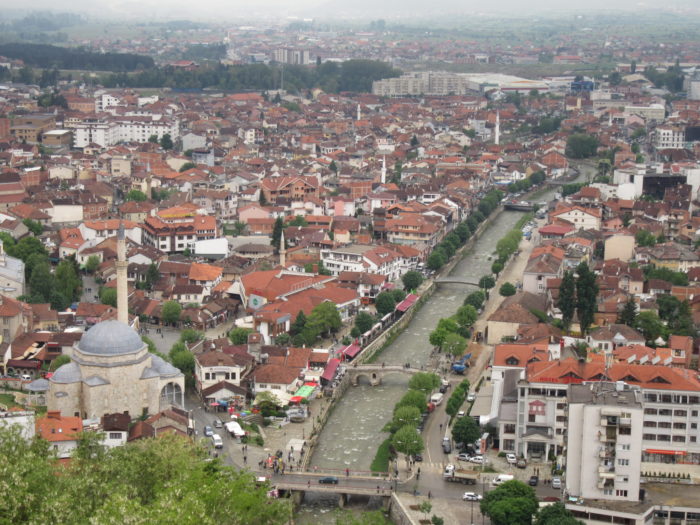
Day 14: Pristina, Kosovo
End this route through the Central Balkans in the capital city of Kosovo: Pristina. Kosovo sees very few visitors as Balkan countries go but this is a huge shame as this young nation has a lot to offer travellers.
It might seem like there isn’t much in Pristina, however, this is another city that needs time to get to know and appreciate. Take the time to get lost in its streets, visit some of its fantastic historical sites, a enjoy its thriving cafe culture.
Pristina also has some great restaurants that would be a great introduction to Kosovan food, which is unique to that of other countries and draws from a number of influences. It is also a fantastic base to go on some day trips to other, smaller towns and villages in Kosovo where few tourists ever venture.
Where to Stay in Pristina
Hotel Prima – This hotel is in a prime location for exploring Pristina. They have a few great clean and comfortable rooms available and also have a free breakfast that is included in the nightly rate.
Oda Hostel – Situated in a great location, this small hostel has a friendly and involved staff that have a ton of great recommendations and organise evening social events. They have a few rooms on offer for visitors.
Not quite what you’re looking for? Click here to browse other hotels in Pristina!

Coastal Balkans Route
Those who are after beautiful coastal scenery but still want the atmosphere and travel challenges associated with the Balkans, then this itinerary is for you! Winding through Croatia, Montenegro and Albania, this is a great route for those who want the perfect mix when it comes to Balkan travel.
Days 1-3: Dubrovnik, Croatia
There really is no better place to begin an itinerary such as this one than in the Pearl of the Adriatic, Dubrovnik. Though it can be an expensive destination to visit (especially when compared to the prices in the Balkans elsewhere), spending your first few days exploring Dubrovnik is a pure joy.
This is going to be the busiest place you visit on this particular itinerary, but if you spend more than a day in Dubrovnik, you will be able to find ways to avoid the crowds.

Days 4-6: Kotor, Montenegro
From Dubrovnik, continue along the Adriatic to the beautiful town of Kotor in Montenegro. There’s a lot to do in Kotor and it’s especially great for those who want to be a bit active during their holiday.
You can get your heart rate pumping by climbing up to the iconic fortress which offers beautiful views over the Bay of Kotor!
Spend two days in Kotor enjoying all that the town has to offer before moving onto our next destination – wonderful Albania!

Days 7-9: Tirana, Albania
After spending time in and around Kotor, it’s time to cross the border once more and head to Albania, where we’ll spend the remaining week of this itinerary. Begin your time in Tirana and plan to spend two days exploring the Albanian capital before moving south and exploring more of this beautiful country.
Day 10: Berat, Albania
From Tirana, hop on a bus (or in the car) and begin making your way south – including a stop in the lovely town of Berat, where we’ll be spending the night.
Known as the “Town of a Thousand Windows,” Berat is listed as a UNESCO World Heritage Site and is noted for its historic castle and countless Ottoman-style houses lining the picturesque streets.
Spend a day exploring the joys of Berat and make sure to get a good night’s rest, because there are even more great places to visit tomorrow!
Where to Stay in Berat
Hotel Bila Nino – This cosy little hotel in the centre of Berat is a great, comfortable option for those after a mid-range stay. They have several lovely rooms and an inviting terrace and garden on site.
Berat Backpackers Hostel – Those after a good budget choice in Berat will like this hostel. They have a great location for exploring the town and plenty of dorms and private rooms to choose from
Not quite what you’re looking for? Click here to browse more Berat hotels!

Days 11-12: Gjirokaster, Albania
From Berat, head even further south to the historic town of Gjirokaster. This is another of the well-known UNESCO-listed towns and has an incredible collection of Ottoman-era stone houses and a grand old bazaar to explore.
Gjirokaster is also the birthplace of the infamous and brutal dictator Enver Hoxha, who ruled Albania from 1941-1985 and made it one of the most isolated and oppressed countries in Europe during his rule.
It can take about 3 hours to get from Berat to Gjirokaster, but depending on bus timetables, this can vary in how long it will take to reach the town. Therefore, plan to spend at least one full day exploring all this incredible town has to offer.
Where to Stay in Gjirokaster
The Stone Sky Hotel – A delightful hotel in the old town of Gjirokaster, they have several great rooms on offer, a fab breakfast available in the morning and an on-site restaurant.
Stone City Hostel – Backpackers will love this highly-rated hostel in a central location. There are several types of rooms available and excellent common areas along with day trips arranged.
Not quite what you’re looking for? Click here to browse more Gjirokaster hotels!

Days 13-14: Sarande, Albania
Though we’ve spent a bit of exploring the inland areas of this area of the Balkans, it’s time to end your itinerary in the coastal town of Sarande – located in the south of Albania not too far from the border of Greece.
Sarande itself is nice enough to explore – with a lovely beach and views of the gorgeous Ionian Sea and even the island of Corfu in the distance – but it’s also a great base to see some incredible scenery of fascinating ancient ruins.
So during your time in Sarande, ensure that you take a day trip to Butrint. which is home to an archaeological park filled with excellently preserved Greek ruins. You can also make a stop in Ksamil, which is home to one of the region’s few beautiful sandy beaches.
This is a great place to end your fortnight in the Balkans, however, you could venture into Greece if you have a bit more time. The island of Corfu is only a stone’s throw from Sarande or, if you’d like to visit Mainland Greece , you can head further onto places like Meteora or even all the way to Thessaloniki .
Where to Stay in Sarande
Hotel Kanes – Offering several rooms with views over the Ionian Sea, this hotel has plenty of amenities like free parking and even an airport shuttle.
Saranda Backpackers – Great for backpackers looking for a lively seaside atmosphere, this hostel has a great location right on the waterfront. There are several rooms to choose from and fantastic common areas, as well.
Not quite what you’re looking for? Click here to browse more Sarande hotels!

Mapping out the perfect Balkans travel itinerary can be a daunting process, with so many wonderful places to explore in this diverse region. Make sure to devote an adequate amount of time to each destination you visit and you will ensure that your Balkan trip is the best it can be!
Are you planning to visit the Balkans? Have any questions? Let us know in the comments

Related Posts:

11 Things To Do In Piran, Slovenia: A One-Day Itinerary

The Perfect 1, 2 or 3 Days in Belgrade Itinerary

13 Things To Do In Novi Sad, Serbia: A One Day Itinerary

About Maggie Turansky
Maggie is a co-founder and writer for The World Was Here First. Originally from the US, she has lived in five different countries and has travelled to dozens more, both solo and with her partner, Michael. She particularly loves exploring Spain and spending time in the Caucasus and the Baltics. Read more about Maggie
Hi Maggie, Thanks for your travelogue and suggestions. You are doing a great public service which is greatly appreciated. We are planning to travel from Ljubljana to Split to start our Balkan trip in Nov/Dec this year. We plan on stopping at a number of places along the way before making our way from Kotor to Tirana, then from there south to Corfu and onwards to Thessaloniki. We want to do the entire trip by bus and train and have been looking at travel options in Rome to Rio. I’m not sure how accurate the website is. What is your advice on public transport in winter, Are buses in the Balkans reliable and what about in Albania and into Greece? I heard that the roads are a bit iffy in Albania. Thanks again.
I’m so happy you’ve found this information helpful! Sounds like you’re planning a great trip 🙂 In general, buses are reliable in the Balkans, though some routes may have fewer connections in the winter. I don’t think you should really encounter a problem. I wouldn’t rely completely on what Rome2Rio says, but it can be a good overview of what routes exist. Generally, your best bet is to see the connections available while at the bus station itself (or by asking around – perhaps at your accommodation). Hope this helps and you have a wonderful time!
It is interesting – only te Western part of Balkans is covered. I wonder what is the reason? Probably Greece is widely covered, but there are Southern parts, that are not so popular. Bulgaria is not mensioned at all too. Even Turkey has its part on the Balkans!
It’s impossible to incorporate such a vast region in only a few 2-week itineraries. We do have dedicated itineraries for Bulgaria: https://www.theworldwasherefirst.com/bulgaria-itinerary/ , Mainland Greece: https://www.theworldwasherefirst.com/greece-mainland-itinerary/ and Turkey: https://www.theworldwasherefirst.com/turkey-itinerary/ so I assure you, these countries are not forgotten or overlooked in our eyes!
Hello…want to travel to the balkans with my group of well travelled friends around 15 seniors in good health.., with interest in culture history n cuisine. we are Indian nationals of Xtian origin….so we have visa issues which we organise with your support data…these are the countries.. Serbia, Bostnia &Herzegovina,Kosovo Albania, Macedonia , Montenegro. We need a slow pace trip n not rush , days can be 15 or more. Thnx n regards Wynoma Thnx wynoma
Sounds like you’ve got quite a trip planned, Wynoma! Hope you have a great time.
Thank you for your email, sounds awesome. What would it cost me to do this tour.(BALKANS) 2 people traveling, sharing accommodation.
Hi Vanessa, glad you found this article helpful! We have actually written a detailed price guide to help you figure out your travel costs. You can find it here: https://www.theworldwasherefirst.com/balkans-travel-budget/ Hope you’re able to plan a great trip!
Hi Maggi, We are a travel enthusiast couple from India . Could you please help me to plan a route for these destinations by public transport . Flying in to Tivat – Montenegro -Kotor, Montenegro-Tirana, Albania-Berat and Gjirokaster -Sarandë -Butrint-Skopje, Macedonia- Ohrid, Macedonia-Mostar, Bosnia & Herzegovina-Sarajevo, Bosnia & Herzegovina-Novi Sad, Serbia- flying out of Belgrade, Serbia. I have 3 weeks plus and we don’t want to rush every day with suitcases so day trips wherever possible are preferable. We don’t mind doing some if not all these destinations, though from your itinerary account they all seem fabulous. Thanks
Hi Aradhana, sounds like you’re planning quite the trip. Bus timetables and public transport in the Balkans can be hard to plan, but you can check up on a lot of routes by using BalkanViator.com. However, this isn’t always 100% accurate and it’s a good idea to check the routes at the bus stations when you’re there on the ground. Hoe you have a great trip!
Hi Maggie Great site – I really enjoyed reading about your journeys. We are planning a trip to the Balkans in September. Unfortunately, and unusually for us, it has to be a little less ‘off the beaten path’ as I broke my leg and ankle badly last year and my hiking and stair walking abilities are much compromised. That said, we are planning to see some of Bulgaria, Romania, a quick pass through Zagreb before going to Bosnia and then on to Montenegro. We have been to the Istrian Coast of Croatia and a bit of inland Croatia but are not planning to go down the dalmation coast (I did this many years ago). We’ll be driving ourselves – we’re pretty comfortable with this as we’ve driven around Turkey and Morocco and Spain and Italy. We have about 6 weeks for this trip. Things we are keen to see include Brasov, drive the transfargarian road, Sarajevo, Mostar, Durmitor NP, Perast, Trebinje and anything ancient! Have you got any recommendations? Do you think we are trying to do too much? We also hope to duck over to Bari from Dubrovnik and spend an additional week in the Lecce area (depending on finances :-/ ) Thanks in anticipation Rana
Hi Rana — sorry to hear about your injury but it sounds like you’re planning quite the trip nonetheless! We have quite a bit of information about a lot of places in Bulgaria and Bosnia & Herzegovina if you want to check out our destination pages for those: https://www.theworldwasherefirst.com/tag/bulgaria/ & https://www.theworldwasherefirst.com/tag/bosnia/ Hope these help and you have a great time in the Balkans!
Hi Maggie! Thank you so very much for all of this excellent information. I scored a round trip ticket to Belgrade from JFK for $193 – how could I NOT DO THIS??? In APRIL?? I will be visiting solo and your advice has helped me feel super excited instead of nervous. I have been taking Bosnian/Croatian language for a year and my teacher here will hopefully be able to arrange meet-ups with family he has still in the area. But I’m much happier being overly prepared than underprepared!
Thanks for your comment, Helena! Sounds like you snagged a great flight deal and I hope you have a great trip to the Balkans. I’m so glad that our advice has been helpful for you 🙂
Hello Maggie, Your itineraries sounds very exciting! I plan to do a solo travel in the Central Balkans for 2 weeks in September. Is it a good idea to travel solo? Thanks
Hi Shini, glad you like the itineraries and sounds like you have a great trip planned! September should be a great time to visit the Balkans. In my own experience, travelling solo was safe and easy in that area of the world. It was always easy to meet other people and I never felt like my personal safety was at risk. Hope you have an amazing time, I’m sure you will love it 🙂
Thanks for the reply!
Hi Maggie. Great page! I am likely going to mirror your Central Balkans itinerary in July 2019. Can you expand on how you traveled in between destinations? And how you managed booking the transportation? Thanks!
Hey, Greg, thanks for your comment! Your best option when it comes to travelling between destinations is to take the bus — it is more often than not the only public transport option, as well. If you want to make absolutely sure that you get a seat, I recommend heading to the bus station to book your place a day or two before you intend to travel. Some bus companies may have online booking, but in our experience, it can be unreliable. Hope that helps and you have a great trip!
Hi Maggie. At the end of 2017 my wife and I sold our house, most of our furniture and our car and embarked on a year long travel in Europe. Our plan is to stay a month at a time in one location (to both save via a month long discount and immerse ourselves at least a little in the culture) central enough in various countries and take day or overnight trips to nearby sites. So far we have spent a month in southern Spain and are concluding a month in southern France. Next up is Greece. As you know we will then need to spend 3 months outside Schengen countries and our thought was to do that in the Balkans. I could not have read your Balkans piece at a better time! As an authority on the area where would stay if you were to spend a month in 3 locations including Romania, Bulgaria and the Adriatic Balkans? Just so you know we have taken a tour of the Adriatic Balkans with Road Scholar that included Montenegro north to Slovenia and loved all of it. We know very little about Romania and Bulgaria. We have been using Airbnb to find lodging.
I look forward to any advice you can throw our way.
Cheers, Wayne
Hey Wayne! That sounds like an absolutely amazing journey and I hope you’re having a great time! As for a place to settle for a bit outside of the Schengen area, Sofia can be quite a good option — people generally have mixed opinions about the city but we, personally, loved it — and it has a great restaurant and arts scene and a lot of really interesting things to do. Plovdiv is also a great option in Bulgaria, it is definitely prettier than Sofia and has a lot of ancient Thracian ruins as well. It’s also located close to a lot of Bulgaria’s best wine country.
In Romania, our favourite city we visited there was Cluj-Napoca and it definitely feels very livable and vibrant. However, if you’re keen to do a few more day trips, it might be better to base yourselves somewhere like Brasov, which is closer to a lot of the “highlights” of Transylvania.
I hope this helps!
Leave a Comment Cancel reply
- South Africa
- El Salvador
- Bosnia and Herzegovina
- North Macedonia
- Czech Republic
- Transnistria
- Liechtenstein
- North Cyprus
- New Zealand
- Map with posts
- Alternative Guides
- Architecture Guides
- Cafe Guides
- Itineraries
- Neighborhood Guides
- Travel Guides
- Travel Tips
- Photo Galleries
- Photo Locations
- Solo female travel
- Train Travels
- Work with me
- Privacy Policy
Your ultimate Balkan travel guide
Every week I get lots of messages asking about Balkan travel.
In light of the recent events all over the world and safety concerns that many of us have, it seems like the Balkans are top travel destination these days. And I totally can understand that!
Balkans are safe, affordable, interesting, rich in history and culture, delicious and most of all stunning!
The region has been one of my favorite places for years, I travel there on regular basis (I just can’t resist all the cheap flights there) and it’s about time I share with you all my knowledge about Balkan travel!
Hopefully, you will find it useful when planning your own trip around the region!
Balkans essentials
Planning a trip to the Balkans? Here are the services I always use and personally recommend:
- Accommodation : I always book a place to stay on Booking.com
- Tours: when I decide to go on a tour I either use Viator
- Get insured for your trip to the Balkans with SafetyWing
Table of Contents
Where to go during your Balkan travel
Now that’s the most difficult question.
Every country has some amazing places that you should visit and everything depends on how much time you have and how well you want to get to know the Balkans.
The most basic Balkan travel route is: Kotor (Montenegro) – Dubrovnik (Croatia) (including day trips from Dubrovnik ) – Mostar (Bosnia and Herzegovina) – Split – Plitvicke Lake (Croatia) – Ljubljana – Lake Bled ( Slovenia ).
All those places are incredible and definitely worth a visit but they are also super crowded, especially with day trippers.
If you can stay in those towns overnight already in the late afternoon you will see a totally different, much better face of those places.
And then you will understand why they are so popular as during the day you might actually hate them a little bit.
Just a few days ago I was walking through Kotor Old Town at 4:30 am and was almost hyperventilating at the beauty and charm of it, with literally no one around me.

Once you do the basic route you might want to do more of Balkan travel – I know I did.
I still haven’t been to all the places I wanted to but here is my personal list of destinations you might want to check out, in random order:
- Slovenia : Lake Bohinj , Maribor , Celje, Ptuj, Postojna Cave , Bovec
- Croatia : Zagreb , Sibenik, Krka National Park , Primosten, Pula , Makarska, Hvar , Krk, Rovnij, Trogir , Opatija , Karlovac, Varazdin, Osijek, Vukovar
- Bosnia and Herzegovina : Sarajevo , Travnik , Jajce , Blagaj, Pocitelj, Trebinje , Visegrad , Bihac , Konjic, Lukomir
- Montenegro : Lake Skadar, Durmitor National Park, Tara river canyon, Ostrog Monastery, Lovcen, Cetinje , Stari Bar , Ulcinj.
- Serbia: Subotica , Novi Sad , Belgrade , Zemun, Zlatibor, Uzice , Petrovardin, Sremski Karlovci, Derdap NP, Novi Pazar, Palic, Golubac, Smederevo
- Kosovo : Pristina , Prizren, Gjakova, Mitrovica, Peja , Prokletije Mountains
- North Macedonia : Skopje , Canyon Matka , Ohrid , Bitola , Mavrovo, Krusevo , Prespa, Tetovo
- Albania : Tirana , Berat , Gijokastra, Ksamil, Valbona, Shkodra, Butrint, Vlore, Theth, Lake Komani , Korca
…and many, many more!
I’m sure I still haven’t found out all amazing destinations in the Balkans either but recently I asked fellow travel bloggers of their favorite places and we came up with this list of Balkan highlights !

When to go to the Balkans
To be honest I would never dare to travel to Balkans in the summertime. It’s too hot and too crowded!
I really like spring there when everything is green and blooming and the air smells like flowers (and grill).
I also like early autumn although the weather might be more tricky then.
Basically, from the end of March till mid-June and from September till late October you should be fine traveling in the Balkans.

How to get to the Balkans
Fortunately, recently low-cost airlines (Ryanair, Wizzair, Easyjet) started flying to the Balkans, making everything so much easier.
I usually fly from Berlin or Budapest and most often I can get the return flight for 20€. Even with getting to Berlin/Budapest from Warsaw it’s worth the time and money as I most likely won’t find a better deal from Poland.
Berlin isn’t the only airport in Europe serving the Balkans, you can get there also from other German cities as well as Hungary, Denmark, the Netherlands, France, Sweden, Slovakia, UK, Poland, Belgium, Spain, Malta, Norway, Italy, Cyprus, Ireland, Switzerland.
Balkan airports where you can fly to are: Ljubljana (Slovenia) , Pula, Rijeka , Osijek, Zadar , Split , Dubrovnik (Croatia) , Tuzla, Sarajevo (BiH), Nis , Belgrade (Serbia) , Skopje, Ohrid (North Macedonia), Pristina (Kosovo) , Tirana (Albania) , Podgorica , Tivat (Montenegro).
Those are just the low-cost airlines I’ve mentioned above, there are also regular airlines serving all the Balkan countries.

Very often the biggest problem is not getting to the Balkans but getting out of the airport. The public transport is very often nonexistent and taxis are overpriced though might be your only option.
In Podgorica, for example, there is a train station some 1km away from the airport but the train stop very rarely there (if you are lucky you can get to the city for 1€).
The taxis try to charge you 15€ and it’s not even 10kms ride!
If you’re good at haggling you can find the car for 10€, last time it took me three attempts to find the driver willing to take me to the bus station for that price. It’s usually much easier in another direction.
There are also bus and train connections from neighboring countries (Austria, Hungary, Greece) but since those take hours and are rather expensive I’ve ditched them altogether.

Crossing the borders in the Balkans
Crossing borders during your Balkan travels shouldn’t be too much of a hassle.
Sometimes you might encounter a queue on more popular routes in the summer season so be prepared for that.
I’ve crossed the borders when traveling by bus, by car, by train or simply walking and I’ve never had any problems or never was questioned.
The only border that might give you a headache is Kosovo as it’s really tricky and can get confusing as Serbia doesn’t recognize it as the independent country.
When you enter Kosovo from Serbia you are free to go anywhere forward.
But when you enter Kosovo from any other country Serbia sees it as illegally crossing their border and if you continue onward to Serbia you might get lots of troubles.
A couple of my friends were refused the entry to Serbia because of Kosovo stamps in their passport, others had lots of issues but eventually were let in…
No one that I know managed to visit Serbia with no issues when having a Kosovo stamp but the internet knows such stories, I just can’t vouch for them.
Some countries allow to enter most of the Balkan countries with the national ID so this might be an option too.
For example with Polish ID I can visit every Balkan country but Kosovo where the only passport is allowed (but apparently if you national ID is biometric you can also use it for entering Kosovo) – what I do is using my ID every time I visit Serbia to avoid troubles.

How to get around the Balkans
The easiest would be your own/rented car but keep in mind that the drivers are pretty crazy there and the roads are often pretty challenging – narrow, in the poor condition, leading through the mountains (you really need to have a solid stomach to survive all those turns and serpentines).
Trains operate only very few routes so your best option is buses.
They are unfortunately not the cheapest and often slow but usually, there is at least one connection per day between places of your interest.
The best website to check the bus connection is Balkanviator although it’s also not perfect (but at least can give you the vague idea of connections).
Always double check at the bus station and get the ticket in advance if you can – buses can get crowded especially in the season (although it never happened to me that there were no seats).
In most of the countries, they also charge you a small fee if you have a bigger piece of luggage that needs to go to the trunk – in Bosnia and Herzegovina, for example, it was 1mark (~0,50€).
The most challenging country to travel around is Albania where public transport is based on furgons (minibusses) and usually, there is no fixed schedule or even bus stations.
But don’t worry, locals are always willing to help and you don’t need to look too much for your bus, the driver will somehow find you!
Last time I was in Tirana trying to find the furgon to Pogradec the driver approached me on some random street next to some blocks of flats and shortly after I was already on the way to my destination.
Some example routes with times and prices:
- Ljubljana – Lake Bled : from 6am till 9pm at least one bus per hour, 1h20min, 6,30€ one way / 11,30€ return
- Ljubjana – Zagreb: 12 connections per day, 2h20minutes, 9€ one way
- Zagreb – Plitvicke Lake: 12 connections per day, 2h20 minutes, 10-13€ one way
- Plitvicke Lake – Zadar: 8 connections per day, less than 3 hours, 12-14€ one way
- Zadar – Split: at least one connection per hour, 3 hours, 12-14€
- Split – Dubrovnik: 13 connections per day, 4h30min, 15-17€
- Dubrovnik – Kotor: 4 connections per day, 2-3 hours, 18€
- Dubrovnik – Mostar: 3 connections per day, 3h20min, 16€
- Mostar – Sarajevo: 10 connections per day, 2h30min, 10€
- Mostar – Kotor: 2 connections per day, 9 hours, 38€
- Sarajevo – Belgrade: 4 connections per day, 7-8 hours, around 15-20€
- Skopje – Ohrid: 10 connections per day, 3 hours, 8€
- Skopje – Pristina: at least one connection per hour, 2 hours, 5€
Some hotels and hostels offer transfer between most popular destinations that are not so easily accessible by public transport. It’s always good to ask at the place you’re staying.
I know in Kotor 360Monte agency offers transportation to Mostar and Tirana, both faster and cheaper than by public transport.

Where to stay in the Balkans
As the region is becoming more and more popular in most places you have lots of accommodation options to choose from, something for each taste, from fancy hotels to dorm rooms in hostels.
I usually try to stay at family-run businesses, either guest houses or apartments as not only this way I’m helping directly local people but usually those offer amazing hospitality.
The good thing is that out of the summer season it’s very easy to find an excellent place to stay for really good money.
If you’re planning to visit Sarajevo I’ve created the whole guide on Sarajevo accommodation for all budgets – click here to read it and choose where to stay in Sarajevo.

What to eat in the Balkans
The Balkans are food heaven for all the meat lovers. Some places, especially in Bosnia, even smell like grilled meat!
Then those located along the coast are known for excellent fresh fish and seafood.
One thing is for sure – no matter what you choose you won’t be hungry in the Balkans.
Some of the most popular dishes you might want to try include cevapi, cevapcici or pljeskavica.
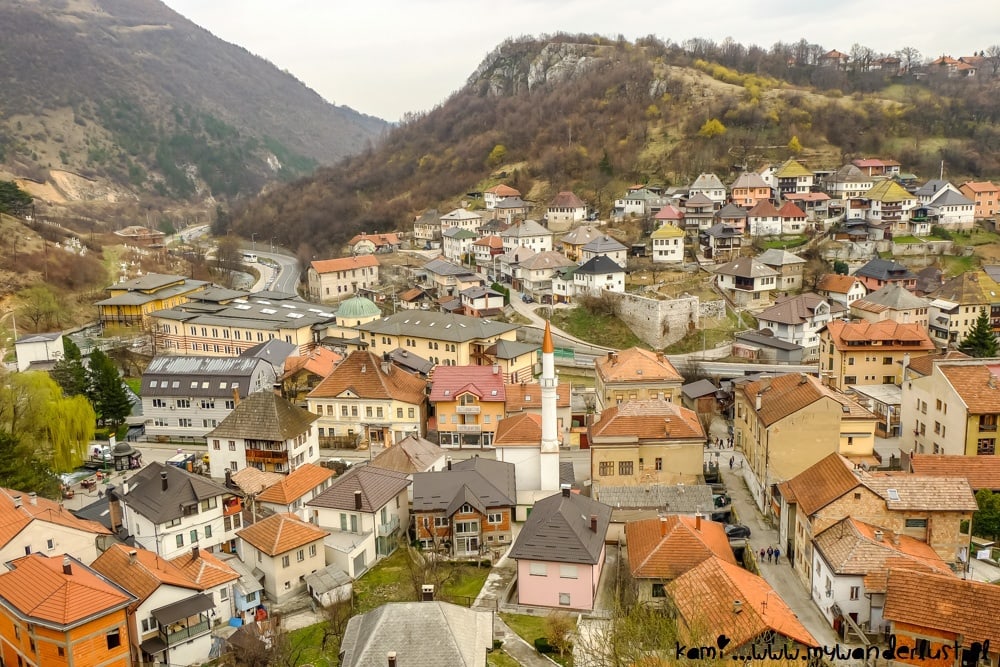
Vegetarian in the Balkans
I must admit being vegetarian in the Balkans is pretty challenging but it’s also slowly changing and many restaurants, especially in more touristy places, offer vegetarian options.
You can often get grilled vegetables and salads which are to die for! Everything is so delicious and so fresh, the taste I remember from my childhood!
Other solid options, which you can almost always count on, are pizzas and risotto which – thanks to the Italian influences – are very often really decent.
And in case of emergency, there are always bakeries everywhere, just look for the “pekara” sign.
And there you can find burek which is one of the best things you can eat in the Balkans! A filo pastry filled with feta cream cheese, cheese, and spinach or potatoes (the second one is my favorite).
The best drink to accompany burek is always a yogurt. You can see lots of people eating this combo directly in the bakery.
The most challenging country for me, food-wise was Serbia, with BiH on the close second place.

Is Balkans safe
Yes! I never felt any danger there and everyone I know can share this opinion.
People are super friendly and will try their best to help you, even when you don’t need it!
Of course in bigger and more popular places you should be more careful – I, for example, lost my passport in Sarajevo (when walking in Bascarsija in the evening, I think I know when that happened but then I didn’t catch anyone opening my backpack so I can’t be sure).
But even with this story, I think Sarajevo and the Balkans are really safe, definitely safer than Western Europe.
And the passport could have been stolen everywhere, just the other day my friend lost the camera in Naples, Italy.

Actually, there is only one really uncomfortable story when, together with my friend Kinga, we arrived in Tuzla, Bosnia and Herzegovina late in the evening and the owner of the guest house we were staying at picked us from the airport.
It was a dark night, we were speeding through Bosnian countryside and suddenly he started telling us his opinions about many subjects, the “highlight” being how Hitler did a really good job with death camps and killing Jewish people…
We were both speechless but he didn’t mind and just kept talking this bullshit. We were both really relieved when we arrived at his guest house and could leave the car but probably even more relieved when we departed early in the morning (me to Travnik, Kinga to Mostar).
Still, it wasn’t really dangerous, just really uncomfortable and awkward.
As you probably know in the 1990s there was a cruel war in the Balkans.
You still see the remnants, especially in Bosnia and Herzegovina, and the tension is still there but it doesn’t affect tourists at all so you don’t need to worry about it.
Just be careful when hiking or going freely in BiH as there are still landmines hidden in the countryside.
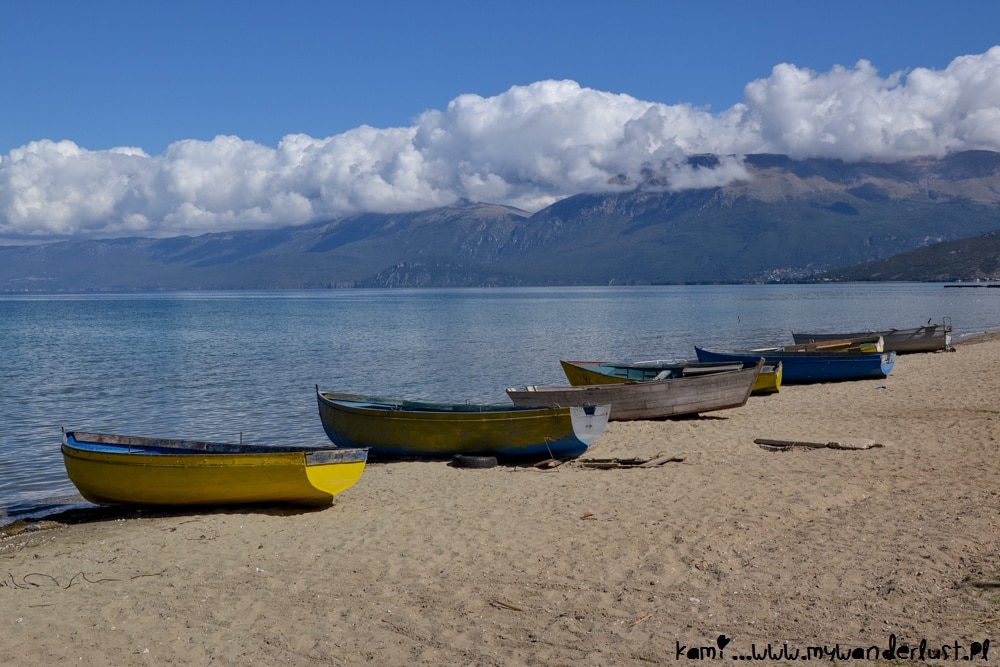
Solo female travel in the Balkans
The majority of my trips to the Balkans were solo (although I often tend to meet Kinga there, who also travels just by herself).
I can’t count how many times I’ve been to the region by now as I usually just go for short trips up to one week, and there are lots of them per year.
But I can’t recall any situation when I was really in danger. I’ve never even been harassed or bothered by anyone!
If you’re a solo traveler and thinking about any Balkan travels there is really nothing to worry about! You can always write to me and ask some specific questions, I will do my best to help!
I also wrote the whole post about solo female travel in the Balkans – click here to read it .

Is Balkans expensive
It all depends on what you want to do and where you want to stay during your Balkan travel but in general, I’d say prices are moderate, definitely cheaper than in Western Europe.
If you travel off season you will have no problems with finding affordable accommodation, in touristy places you should get lunch or dinner for less than 20€, drinks included.
Entrances fee are also rather reasonable, usually a couple of Euros. Unfortunately, Dubrovnik is an exception here as prices are just extraordinary there!
I found North Macedonia and Albania to be the cheapest countries while Croatia is the most expensive one, the rest is simply fine.
The only thing I found rather expensive is transport between the cities I feel like 20 marks between Mostar and Sarajevo or 7€ between Podgorica and Kotor is rather much but maybe I’m just spoiled by the cheap bus connections we get in my part of Europe.
By the way, the useful info you might want to know: Kosovo, Montenegro, and Slovenia use Euro as their currency.

So yes, that’s probably all I know about Balkan travel.
If you have some questions and want to know something I haven’t covered here you’re more than welcome to join my Facebook group about travel in this region – there is always someone who knows answers to all kind of questions! Happy Balkan travels!
Travel Resources
You can find the best accommodation options at Booking . They have many discounts and excellent customer service. Click here to look for the place to stay in the Balkans
Never travel without travel insurance , you never know what might happen and better safe than sorry. You can check the insurance policy for the Balkans here.
I recommend joining organized tours to get to know the place better and to visit more places during your trip. You can find a great selection of tours at Get Your Guide – click here .
For the end I left a few announcements that might interest you:
- If you don’t want to miss new posts and news from me click here to sign to my newsletter! You can also follow me on Bloglovin!
- Join my Facebook group about Eastern Europe, the Balkans and former USSR and connect with fellow travellers and enthusiasts of these regions – just click here!
- I’ve included a few handy links of services and products I personally like and use so you can plan your own trip to the Balkans too. They are often affiliate links. This means I will get a small commission if you book/purchase anything through my links, at no extra costs for you. If you like what you are reading and seeing here and would like to support me and my blog please consider using those links. It would be like getting me a virtual drink that you don’t have to pay for! Thanks!
LIKED IT? PIN THIS POST FOR LATER!
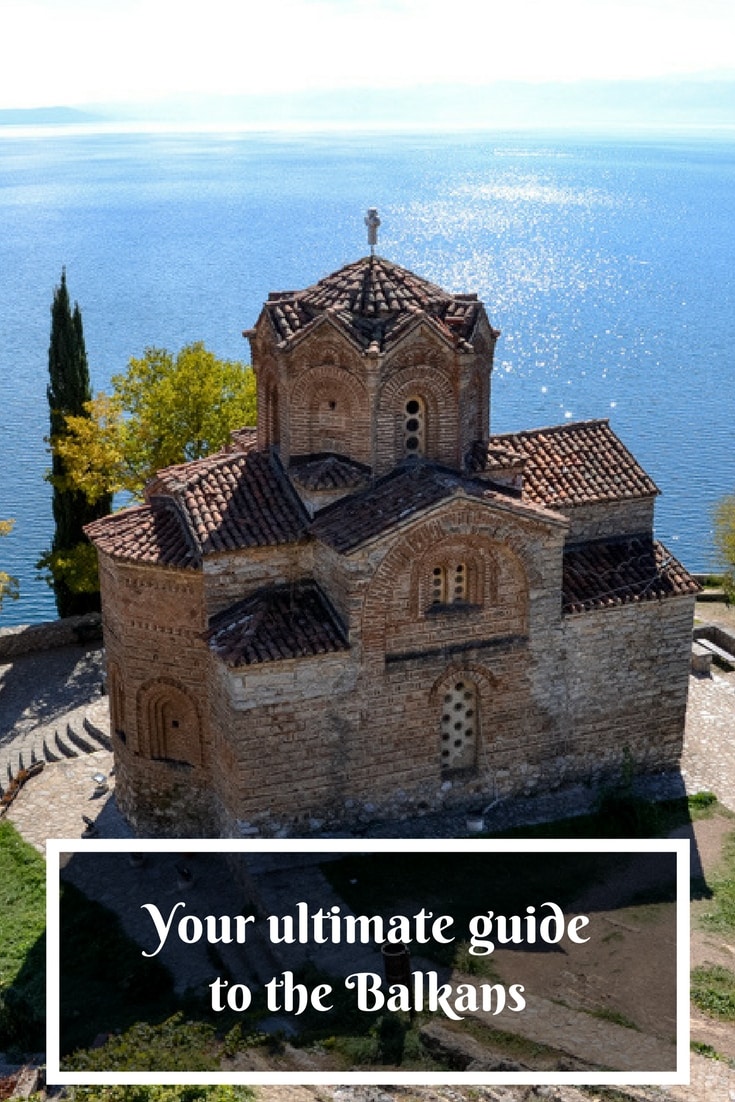
If you enjoyed that post why don't you share it with your friends? That would mean so much to me! Also be sure to join 30.000+ fellow travelers and follow me on Facebook , Twitter , or Instagram for travel updates and even more pictures! If you don't want to miss new posts sign up to my newsletter or follow on Bloglovin !

32 Comments
Kasia & Victor przez świat
Kami, thank you for this detailed and practical guide! I know one day we’ll have to concentrate on Europe and Balkans will be THE place to go. I’ve already store all the information. BTW, great photos! It must be one of those magical places for photo freaks ;)
it is indeed a photo heaven, so many breathtaking places it’s impossible to stop taking pictures! I really hope you will be able to come here soon as it’s simply amazing!
A big thank you Kami, because of reading your posts I am now starting my Balkans trip. I am in Moldova and did the local bus trip to Transnistria. Thanks to your info it was easy. Just a long way from Australia, but worth it.
I’m really glad it was helpful! Hopefully you will enjoy Balkans as much as I do, it’s such an amazing place! Greetings from Sarajevo!
stacjabalkany
Great post. My blog have a mission on exploring Balkans and showing Balkan to the polish people. But Your post is showing that the Balkans are peoples the best destination in Europe for a budget trvellers as we are. The best thing is that new cheap flights from Berlin to Tuzla, Skopje, Podgorica, Nis, Sofia and Bucharest make things now really easy :) and I agree in Croatia, Montenegro, Bosnia and Slovenia buses are really quite expensive – far too expensive. Only in Macedonia i find them cheap. In Serbia they are also quite expensive, but in Serbia you can use trains.
But I’m not so much of a budget traveller anymore ;) I can spend more if I get a good value for that. Balkans are perfect for all kind of travellers, not only budget, it’s just an amazing place to visit!
great post with amazing pictures. thanks for sharing with us.
Great post, very informative! Thank you. I hope to travel to the Balkan’sso your advice and information is wonderful.
Thank you! I hope you will go there soon, it’s so worth it!
Shannon Lee
Hi Kami, I’m Shannon Lee from Singapore would like to find out whether do you know any tour agency in Balkan would conduct a package tour for say 12 days Balkan trip include the most attractive places of interest like what you have introduce.
Hi Shannon Lee! Unfortunately I don’t know any agency but if you would like to travel independently there I can plan the itinerary for you and give you all the info about the visited places. If you’re interested email me at [email protected]
Javi Romero
Thanks Kami for this post! I’m starting my trip to the Balkans in September and I’ll be there around 2 1/2 months. I have taken note of the places that you suggest, and I feel relieved to read that is perfectly safe for a woman to travel that region. Lovely photos
I’m always happy when I can help! If you have any more questions about travelling in the Balkans you’re more than welcome to join my Facebook group (there’re links above in the post and in the sidebar). We have a great community of travelers there who seem to know the answer to every single question :)
Your post is great and really helpful. I have 13 days to plan a trip and I thought being in South it would be warmer but I guess I was wrong.
I would like to go to Greece, Santorini and then navigate to other Balkan countries via bus and finally fly back from say Sofia(to Brussels). During course of my travel I would be more than happy to spend 2 days each in let’s say a Balkan country.
Could you advise this to be a good idea and suggest some places??
Thanks in advance. Romesh [email protected]
To be honest 2 days in each country is really rushed, especially that public transport can be rather limited in the Balkans. I’d skip some places and focus on other more. If you’re flying from Sofia I think Albania, Macedonia, Kosovo and maybe part of Serbia will be enough for you.
We plan on spending about 3 weeks in the Balkans late August to mid September. I know, I know, it’s not the best time of year but it’s the only time we can travel. I appreciate your list of places but maybe you can help us trim it down for our trip. For a little back ground on what we like, we spent 2 weeks at Lake Bohinj (one of our favorite places in the world) and didn’t get bored. (We didn’t really care for Bovec in comparison.) In Croatia, we loved Hvar and Korcula. Based on your list of suggestions, I’m thinking of sticking to Montenegro and Kosovo because we love both beaches and mountains. We love hiking and prefer small towns to cities and we don’t like spending a ton of time on buses, preferring slow travel to changing locations all the time. Is it easy to travel between these two countries? What would be your top picks for towns to base ourselves? Thanks!!
I think you can focus on Montenegro and Bosnia and Herzegovina, you can include Kosovo or Montenegro too if you have time. These two countries are neighbors and while connections aren’t the best, they are existing and traveling around is doable. Feel free to join my Facebook group about traveling in the Balkans (link is in the sidebar and in this post), I’m sure the member will be happy to help you too. Have a good trip!
James Holman
Super! Podziekujemy!….I feel more prepared than before I stumbled upon your excellent post.
I’m glad you liked it !
Great post and has got us very excited. But our only language is English so I suspect that will have a major effect on our communication. We have used Google translate to get us through Russia and hoping that should help in the Balkans. Also, we have found that the younger people in Russia do have reasonable English and we often picked on them to help us out. Are you able to provide some feedback on communication please.
I find it much easier with English in the Balkans than in Russia, to be honest. Not only young people can speak it well but also older generation often knows it (or German). And in the worst case scenario there is google translate :)
Nice blog simple English explain nicely from 17 aug to 30 sept i am going to travel in balcans already plan started from Greece end in Slovenia Thanks
Have a great trip!
Nice blog. As for security, the Balkans are no less safe than the EU.
Thank you. Ans you are right.
Ramesh Krishna
Really enjoyed your coverage, very informative and useful.Thanks a lot.
Ivan Caperuto
I’m planning a trip to the balkans next year, I must say, I still have to finish reading, but from what I’ve already read, this guid is great, I’ll add questions as I finish the article!
Thanks! You are also more than welcome to join my FB group about traveling in the Balkans and ask your questions there, here’s the link https://www.facebook.com/groups/121053081614593 It’s a great community of fellow travelers who seem to know everything :)
Hi Kami, I’ve always wanted to visit the Balkan and I finally have time to do so as I am retired now. I’m based in Washington DC in USA. Would one month be a good enough time to explore the Balkans or do you suggest longer?
One month is definitely good enough. There’s a lot to see and do there but you can cover most of the region in one month as distances between the places aren’t too big. I’m sure you will enjoy the Balkans! All the best!
Leave a Reply Cancel Reply
Sign me up for the newsletter!
Let’s become friends!
Join me on Facebook for even more travel updates!
Kami and the rest of the world
Subscribe & get your free guide to going abroad!!
3 Perfect Balkans Itinerary Options: 10 Days, 1 Month, and More [+PDF]
Traveling and backpacking in the Balkans is an extraordinary experience that offers the best of Europe on a backpacker budget. This Balkans itinerary will deliver the best of Europe. Delicious, Italian and Turkish-inspired food and drink. World-class beaches and Rivieras. Towering alps and the southernmost fjords in Europe. The Balkans backpacking experience offers so much to love in such a small area and at a great price that it should be top of every traveler’s list.
Read on to discover the best of the Balkans, the essentials for a perfect experience wandering the Balkans, including the best route and itinerary for 10 days, 2 weeks, 3 weeks, and 4 or more weeks.
My experience exploring Croatia, Montenegro, Albania, Bosnia, Serbia, and more was one of the highlights of my European backpacking experience. Amazing food, plenty of great drink (wine and Rakja), never-ending parties, captaining a boat, extraordinary nature of towering mountains in bays, fantastic beaches, plenty of friends and friendly locals, and more. In this Balkans itinerary, I’ll share the must-see sights and experiences and how to make them happen to help you craft the perfect Balkans backpacking experience for you.
CONTENTS OF THIS PERFECT BALKANS ITINERARY
- Quick Balkans Itinerary for 10 Days to 14 Days
- The Full Balkans Travel Itinerary (3+ Weeks)
- Why The Balkans
- Balkans Tour Options to Consider
- Slovenia : Fairy tale like nature, lakes, and forests
- Croatia : Castles, Game of Thrones, wine, Italian inspired cuisine, an exquisite coastline
- Bosnia and Herzegovina : History, Ottoman influenced culture and cuisine
- Serbia : Never ending parties on the riverfront, fusion foods, rakija culture
- Montenegro : Norwegian styled fjords in warm, welcoming waters
- Albania : The Albanian Riviera’s amazing beaches and the Albanian alps
- Bulgaria : Artsy neighborhoods, nature, and gourmet locavore food culture for cheap
The Additional Balkans Destinations
- Kosovo (Optional)
- Macedonia (Optional)
Logistics of Traveling the Balkans
- Balkans Travel Budget & Tips
- Visas and Crossing Borders in the Balkans
- Travel Insurance: Do You Need It In The Balkans?
- When To Visit The Balkans
- Tips for Staying In The Balkans On A Budget
- Balkans Packing List Essentials
- How To Get Around The Balkans
- Balkans Travel FAQ
BALKANS ITINERARY HIGHLIGHTS: THE TOP 10 THINGS TO EXPERIENCE IN THE BALKANS
- Montenegro: The southernmost fjords in Europe and beautiful waterways
- Albania: Undiscovered escapes, beautiful rivieras that rival the Greek isles, Albanian Alps
- Croatia: Medieval architectural beauty and a “Balkans meets Venetian Italy” vibe
- The Albanian Riviera
- The Albanian Alps
- The fjords of Montenegro
- The castles of Croatia
- National Parks throughout
- World-class beaches in Albanian, Croatia, and Montenegro
- Scandinavian style fjords and towering mountains in Montenegro
- Rich food and amazing wine influenced by the Italians, the Ottomans, and Eastern Europe
- Medieval castles and city centers along the entire Balkans backpacking route
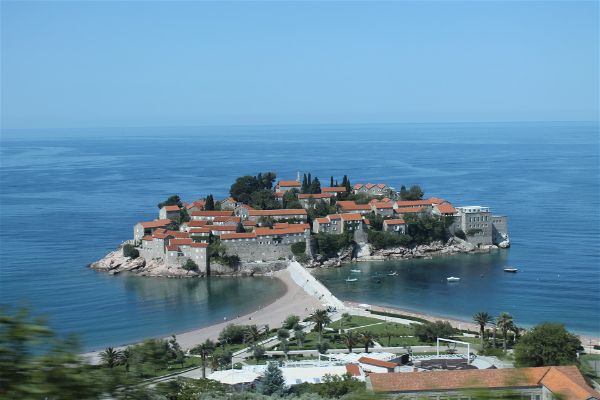
WHAT TO SEE AND DO WHILE YOU’RE IN THE BALKANS

KEY BALKAN ITINERARIES
THE TWO PERFECT BALKANS ITINERARY OPTIONS FOR YOUR TRIP: 10 DAYS AND MORE
The Balkans is such an impressive destination for backpackers and travelers because it offers so much for every type of traveler – and it just so happens to be budget-friendly too. Any one of the core Balkan countries could easily be a multi-week destination.
To balance maximum experience with enjoyment, we’ve created 2 separate itineraries.
The first option is the Balkans itinerary for 10 days , which focuses on the highlight destinations and experiences of the Balkans that no one can miss and skips the countries with redundant views or experiences.
The second is the full Balkans itinerary for 2-3 weeks or more , the itinerary achieves the same (maximum enjoyment and unique experiences), but at a slower, more enjoyable pace and more sites in each country added to ensure constant enjoyment. This itinerary includes everything you need to see in the Balkans if time is no issue and you’re one of the lucky backpackers on the long trail. If you’re backpacking in the Balkans, this full Balkans itinerary is the option you need.
CLICK HERE TO DOWNLOAD A FREE PDF OF THIS GUIDE!!
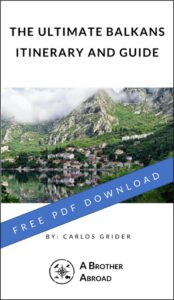
BALKANS ITINERARY (10 DAYS)
Balkans travel is something that every traveler should experience, but not all travelers have the full month necessary to backpack and slow travel the Balkans. This Balkans itinerary for 10 days packs the best sites, tastes, and experiences of the region into a smooth, 10-day jaunt.
With this 10 day Balkans itinerary, every single day will be mind-blowing and enjoyable and leave you wanting to return to the Balkans very soon.

If you are pressed for time, this 10-day itinerary delivers the best of the Balkans – beaches, food, Roman ruins and architecture, and more. However, if you have more time to spare, I highly recommend spending a month or more moving slowly through the Balkans and staying a little longer anywhere that catches your interests.
Read on to discover the places I recommend for a full Balkans itinerary of a few weeks or more.
THE FULL BALKANS TRAVEL ITINERARY (2 TO 6 WEEKS)
The Balkans has just as much richness, beauty, and culture as much more popular and crowded Western Europe, without the crowds and at a far cheaper price tag – fjords, mountains, and national parks as good as any in Scandinavia, wine that rivals Italy and France, rich hearty food that is unmatched, ruins that rival Rome, beaches that are on par with the islands of Greece, Spain, and France, and nightlife that puts Barcelona and Majorca to shame.
If you have a month or more to spare, I highly recommend backpacking the Balkans with this full Balkans travel itinerary.
This itinerary traces a trail through the Balkans, traversable by bus with manageable stops along the way every few hours, giving you a “best of the Balkans” tour, doable on a budget easily by bus.
For those travelers with more time for wandering and backpacking the Balkans, this itinerary shares every place you need to visit and see.

HOW TO USE THESE ITINERARIES
Both of the itineraries above, the Balkans 10-day itinerary and the itinerary, are perfect. Which itinerary you choose obviously depends on how much time you have to travel. For the longer itinerary, you should choose or eliminate destinations based on your own travel style – backpacker, budget traveler, outdoorsy, or party hungry.
If you only have ~10 days, stick to our 10-day itinerary, and you’ll hit the highlights of the regions and the best thing that each country has to offer.
If you’re traveling for 2+ weeks or backpacking, use the full itinerary omitting Kosovo, Macedonia, and Macedonia if you need to save time. Otherwise, hop the bus and enjoy each destination on our list.
If you find a city or country that you particularly enjoy, you should absolutely stay longer in that city or country.
Stay longer in countries where you love the sights, food, people, and lifestyle. As you travel, if you find a country/culture you love, stay longer and add more cities from that country to your itinerary (I recommend a few for each country).
The experience will change drastically once you leave each country as each Balkan country is very unique, so soak it up while you’re there – food, drink, people, architecture, and nature.
Plus , you can always go back and explore other destinations, so live in the moment as much as possible when you travel.
WHY I HIGHLY RECOMMEND THE BALKANS
If you’re looking for some of the most diverse (in culture, religion, language) and untouched parts of Europe, Balkans is a great place to go. The Balkans region has seen it all: from Macedonia’s Roman ruins and stunning mountain ranges in Kosovo to Croatia’s stunning shades of blue lagoons and epic beaches. What attracted me and my experience backpacking the Balkans
- European experience on a Southeast Asia travel budget
- Plenty of “ vacation nature ” and natural beauty – fjords, rivieras, waterfalls, and alps – within a short ride
- The best beaches in Europe for extremely cheap
- “Old World” and medieval cities and architecture bring Game of Thrones to life with castles and walled city centers.
- The varied and rich food : everything from Italian-inspired Istrian, hearty Slavic, and Ottoman/Middle Eastern -inspired Bosnian.
- The drink: Croatian, especially Istrian, wines are underrated, and world-class thanks to Italian influence, and the Rakija (local firewater) is interesting, complex and varied across the Balkans
- Compact and accessible traveling : most of the adventures are hours away from each other by an easily booked and cheap bus or train
- Easy visa situation: whereas the rest of Europe in the Schengen zone only allows 90 days per six months in all of the European Union, each Balkan state offers easily renewable and free visas from 30 days to 6 months
- Less crowded than the rest of Europe with all of the experience
- Plenty of history intact with cities built by Roman emperors , recent wars, and recently opened borders (Albania)
The Balkan region – Croatia, Montenegro, Albania, Slovenia, Serbia, and Bosnia & Herzegovina – offers amazing food, hearty and rich, that will satisfy any taste buds and wine as good as anywhere else in Europe. If you are looking for a “European vibe” but want an experience that’s cheaper, less crowded, and less touristy than the typical destinations, then the Balkans is a perfect place to visit.
The Balkans will give you an unforgettable experience – just make sure to pack your swimsuit, hiking shoes!
BEST BALKANS TOUR OPTIONS
If you’re not in the mood for indie travel, or if you’re pressed for time and want to see all of the Balkans in two weeks but want to skip the logistics planning, I highly recommend attending one of these reputable Balkans tours.
THE FULL BALKANS ITINERARY
Click to Jump to The itineraries
| SLOVENIA | | CROATIA | | MONTENEGRO | | BOSNIA AND HERZEGOVINA | | SERBIA | | ALBANIA | | BULGARIA |
———-
THE ADDITIONAL BALKAN TRAVEL ITINERARY DESTINATIONS
| MACEDONIA | | KOSOVO |
Quaint European towns and Insta-worthy lakes, forests, and caves
For nature lovers and sober travelers, Slovenia is a picturesque and green destination that may be worth adding to your itinerary.
Ljubljana, Slovenia’s capital and Europe’s greenest city, is a charming and quintessentially European city – walkable with cobblestone streets and a Riverwalk with plenty of coffee shops to enjoy the cool weather and peacefully picturesque views.
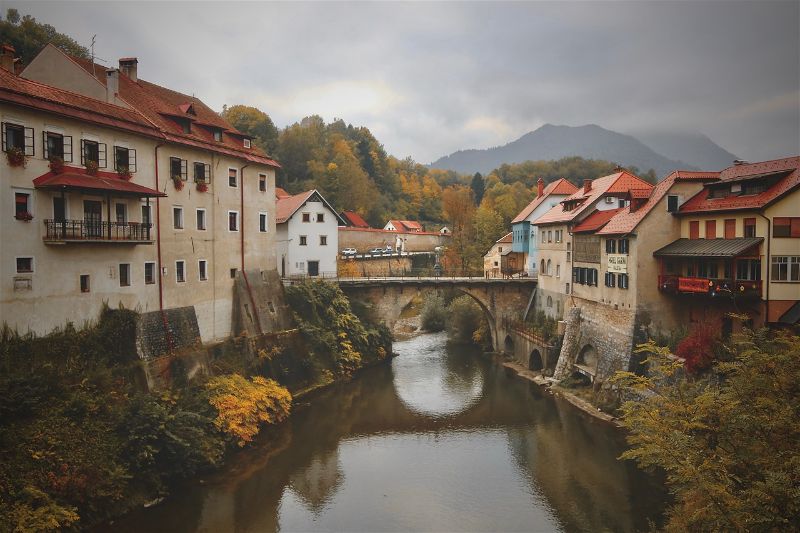
One hour away from the capital Slovenia’s biggest tourist destinations – Bled and Lake Bled – are nestled in the Julian Alps and deliver tons of Insta-worthy views. Hike up to Bled castle, boat to a church on an island, visit the charming village of Ribcev Laz on the shore of Lake Bled and take a cable car ride to the top of Mount Vogel for a panorama view.
End this leg of the trip by visiting the most toured cave in Europe (Postojna cave) and seeing the castle built into it (Predjama Castle) on your way to Croatia.
If you want to jump right into sunny beaches and lively nightlife, I suggest going straight to Croatia.
TIME NEEDED:
3 Days (1 Day in Ljubljana, 1 Day in Bled, 1 Day visiting Postojna Cave And Predjama Castle)
ESSENTIAL FOOD & DRINK
- Kremna rezina
- Kranjska klobasa
- Bograč
- Idrijski žlikrofi
- Pogača
- Štruklji
- Prekmurska gibanica

SLOVENIA VISA
Slovenia is part of the Schengen zone, so the Schengen visa applies – 90 days in a 180 day period, shared with all of the Schengen zone / EU countries
BUDGET/PRICES: ~$50 per day
- Hostel Dorm: $25/night
- Budget Hotel: $45/night
- Food: $15/day
- Transportation: $10 to $15 per day average, to visit attractions
- Attractions: ~$25
MOVING ON: From Ljublana, or anywhere else in Slovenia, if you are on a shorter itinerary (2 weeks or less), hop a bus (~8 hours) or a train (~10 hours + $38) to Split, Croatia, from Ljublana . If you are on a longer itinerary, hop a 5-hour bus or train (~$15) to Pula, Croatia and enjoy Istria .
GETTING THERE: As Slovenia is the start of many travelers’ and backpackers’ trails in the Balkans, the cheapest option is to fly into Bupadest, Hungary, enjoy the beauty of Budapest for a few days and then travel from Budapest, Hungary, to Ljublana, Slovenia by 7-hour train (~$30) or 7-hour bus (~$30) .
SLOVENIA ITINERARY

Slovenia has some amazing natural beauty that is world-class and that travelers rave about – but so do Montenegro, Croatia, and Albania, without being as far from the central Balkans backpacking route. Additionally, Slovenia offers very little outside of nature – while the rest of the Balkans offer rich food, drink, entertainment, and history.
Though Slovenia is remarkably beautiful, if you’re short on time traveling the Balkans, I recommend skipping Slovenia and starting your tour further south, closer to the action.
The Ljubljana city center was planned like an old baroque town, with cobbled streets and a Roman-style canal, catering to a day of walking and a leisurely lifestyle. This is a city that has been preserved in its original form, with buildings from all periods represented, all the while still moving forward. In 2014, Ljublana was awarded the Greenest City in Europe for its dedication to and advancements in sustainability, proving that Ljublana’s soul matched its surrounding beauty of turquoise lakes and sprawling forests.
Ljubljana also has a rich literary and artistic tradition, possibly cultivated by its welcoming cafes, with writers such as Nobel Prize winner Ivo Andric and poets like France Preseren make it their home for much of the 19th century. These literary giants influenced not just Ljublana but also much of the Balkans region as well through their work and by inspiring other writers.
WHAT TO DO IN LJUBLJANA
- Preseren Square and Tromostovje Triple Bridge
- Ljubljana Old Town, walking its two main streets
- Visit the Ljubljana Castle by funicular or hike
- Dragon Bridge
- Walk the riverfront
- Visit Congress Square
- Tivoli Park
- Museum of Illusions
TIME NEEDED: 1 Day
RECOMMENDED RESTAURANTS LJUBLANA:
WHERE TO STAY IN LJUBLANA
The hostel or hotel standards in Slovenia are great, so just choose one that fits your style. However, be choosy about the location to maximize your experience – either the Old Town or the Modern City Center are where you should look for accommodation. H20 Hostel comes highly recommended.
LAKE BLED / BLED
Bled, Slovenia, is a charming little town tucked up in the Julian Alps with the farily tale like Lake Bled situated right beside it. For those backpackers and travelers that love calm, pristine outdoor beauty and just the experience of strolling through a new place, Bled (just like the rest of Slovenia) will capture your heart.
Visitors can enjoy a stroll through the historic and beautiful city center, eating traditional Slovenian cuisine at one of many cafes or restaurants, or just picnic on flat rocks that jut out into the lake. Bled’s historic core is the winding castle on the hill on one side of the lake and the church on top of the hill on the other side of the lake. There are also many tours to take to explore the tiny, hidden, and less well-known, but still equally if not more stunning, parts of Slovenia that are offered by many different tour operators.
On the other side of the lake, on an island in the middle of the Krasna zalza (beautiful grove), stands a small, beautifully constructed church. It is said to be one of the most photographed churches in all of North-Eastern Europe.
Bled Castle was built in the 13th century by the Habsburgs as a summer residence. It has medieval turrets, and its view can be seen from throughout Slovenia. The castle is richly furnished and houses many treasurers; one that should not be missed is called “Prince Luitpold’s Treasure.” The treasure becomes more interesting because it contains some of Napoleon’s personal effects, including a memento made for the French emperor by a craftsman from Bled.
- Postojna Cave and Predma Castle inside
- Visit the town of Piran – full of Venetian architecture and coastline the rivals Italy and Croatia + Tartans Square, Saint Georges Church, and amazing seafood.
WHAT TO DO IN BLED, SLOVENIA
- Boat to the Church of the Mother of God on Lake Bled
- Hike to Bled castle
- Cable car to the top of Mount Vogel
RECOMMENDED RESTAURANTS AND CAFES
Sun-soaked beaches, Game of Thrones-style walled cities, and Venetian influence culture
Croatia’s Dalmatian coast is filled with countless amazing beaches and medieval-style cities worthy of Game of Thrones. The Croatian islands are party havens in the summertime that give you the must-experience opportunity to rent and captain your own boat for about ~$50 per day.
Between wanderings in Croatia, the rich food inspired by Italy just across the Adriatic Sea, and the great wine a rakija culture will keep you entertained. You could easily spend an entire trip in Croatia alone.
Croatia’s capital city, Zagreb, is a contemporary wonder. Its pedestrian-friendly streets lined with galleries and interesting shops hold fantastic treasures to be discovered at every turn. Foodies delight in the wide array of restaurants where one can sample everything from the old regional delicacies (try ćevapčići Slavinski) to original Southeast Asian fusion combos.
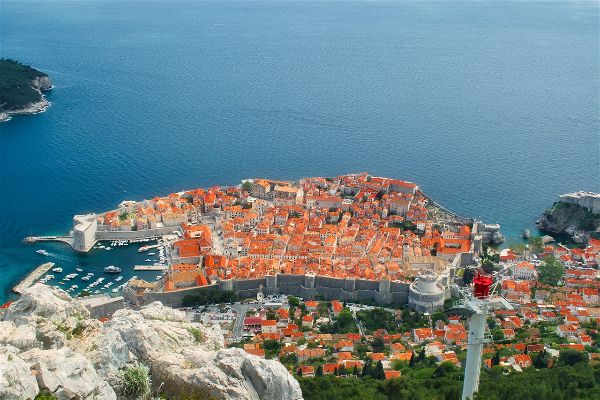
Endless nightlife options throughout Croatia offer partying high atop skyscrapers, in underground subterranean nightclubs nicknamed ‘catacombs,’ to islands that exist solely for nightlife and run until sunrise when they morph into normal beaches.
From its regal castle in Dubrovnik on the coast to modern marvels like The House of Croatian Parliament (Sabor) by architect Vjenceslav Richter, Croatia is filled with cultural riches that dance along pristine, unspoiled coastlines.
The Balkans are not only about wild mountains and alpine vistas – but they’re also home to some of Europe’s most spectacular coastline – the Dalmatian Coast of Croatia. The Dalmatian Coast, with its countless islands (think Hvar or Vis), packs in everything from laid-back fishing villages to cosmopolitan beach resorts. And did we mention the water? Well, it’s just turquoise, but it’s warm, clear, and everything you hope for in a riviera paradise.
No matter what kind of traveler you are, Croatia has something for you.
CROATIA ITINERARY
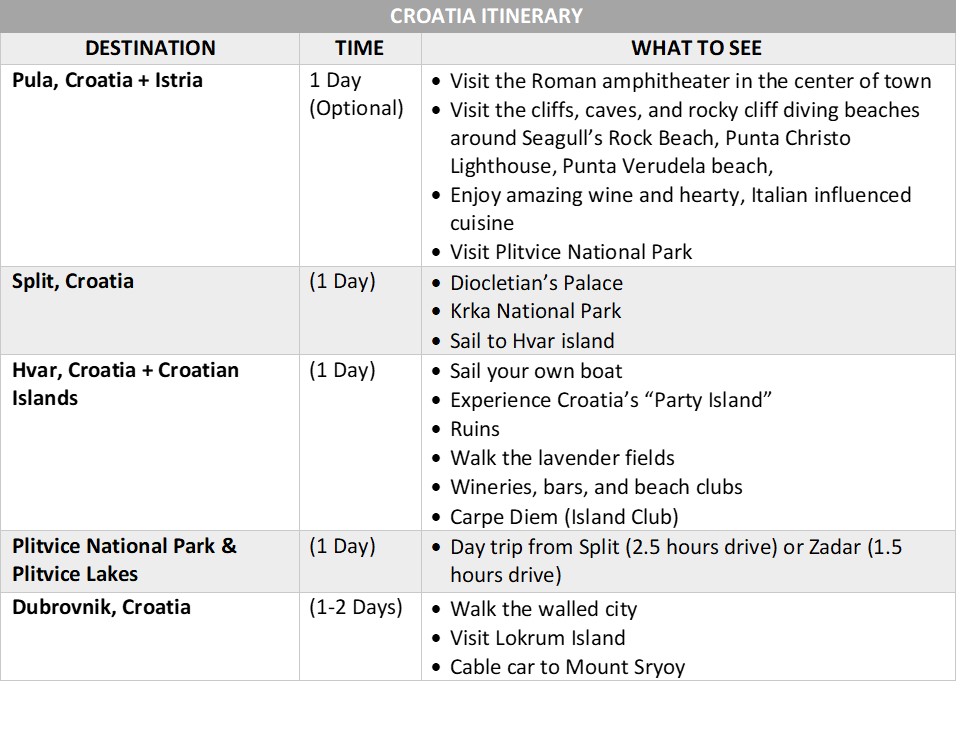
CROATIA TRAVEL INFO
HIGHLIGHTS OF CROATIA
- Cheap truffles
- Great wine in Istria inspired by the Italian style, and heavier, “Balkan style pasta.”
- Castles and medieval cities
- Rocky beaches with warm, clear water
- Never-ending nightlife
ESSENTIAL FOOD & DRINK ACROSS CROATIA
- Istrian cuisine
- Raznijci (meat skewers),
- Zagrebacki odrezak (veal stuffed with ham and cheese)
- Janjetina (lamb and herbs)
- Istrian wine
- Raznijci (meat skewers)
GETTING AROUND CROATIA:
Throughout Croatia, your travel mode of choice will be either by bus or rideshare. https://www.buscroatia.com/ is your best option for researching bus routes, and Rome2Rio.com is your second best option for researching routes, times, and prices. In both cases, book your ticket at the bus terminal as listed times can change and there are usually more routes and times listed than on these sites.
MOVING ON FROM CROATIA
From Croatia, I highly recommend going into Montenegro then Albania if you are on a shorter trip (less than two weeks). If you are traveling for longer (more than two weeks), travel by bus into Bosnia and Herzegovina (Mostar, then Sarajevo), up to Belgrade, Serbia, then back to Croatia, and continue south into Montenegro and Albania.
Leaving Croatia, you are perfectly situated in the Balkans to go anywhere – Slovenia, Bosnia, Montenegro, or a little further to Albania. If you travel to one of the adjacent, nearby countries (Bosnia, Montenegro, or Albania), traveling by bus is your best option, and you can research routes on Rome2Rio and book accordingly. Be sure to read the country sections in this guide to find out visa guidelines for each country.
For travel to Slovenia (Ljublana) and Serbia, a flight (~$90) is your best bet, as the bus to Ljubljana is 14 hours and the bus to Belgrade is 8 hours.
VISA: No visa is required for tourist visits less than 90 days – Croatia is not part of the Schengen zone
BUDGET/PRICES:
- €10-15 for a dorm bed in a hostel, ~25 per night for a private hostel room or budget hotel room
PULA, CROATIA
Pula is a low-key highlight of Croatia. Whereas the rest of Croatia boasts Game of thrones vibes and never-ending nightlife, Pula has a uniquely Istrian feel, heart food that combines Italian influence with Croatian traditions, fantastic wine (in the Italian tradition), low key beaches, and plenty of ruins.
Pula has been occupied by exactly 22 countries, and each has left its mark, although now the area feels very much like forgotten Italian countryside as the city was part of Italy up until 1942. Many of the residents do still speak Italian.
The colosseum that sits in the middle of town, a remnant of the Roman Empire’s occupation, is one of many ruins and archeological sites to explore. Last, there is a vast, still unmapped underground tunnel network beneath the city.
HIGHLIGHTS OF PULA, CROATIA
- Roman ruins and restored Roman empire era structures
- Rocky Beaches and cliff diving
- Food: Cheap truffles, great wine in Istria inspired by the Italian style, and heavier, “Balkan style pasta”
- Malvasia – The local white wine – normally the house wine
WHAT TO DO AND SITES TO SEE IN AND AROUND PULA
- See the Roman Coliseum (The Amphitheater), walking distance from downtown Pula.
- Pula – Built in the 1600s by the Venetians, designed by a French architect
- Roman Temple in Town
- The Triumph Arch
- Pula Daily Market from 7am to 3pm
- Archeological Museum of Istria
- Hop a bus and take the Nr1 line to Stone for 11 Kuna (1.5€) or take an Uber for 5€. Take the bus from the bus station is in front of Corso Kavana & Tapas Bar / Your Private Kingdom Cocktails.
- Go to the café in the campground behind the bus station in Stoja for decent Calamari (60 Kuna) and cocktails.
- Rt Kamenjak – rent a bike in the city at the last bus stop in the city of Premantura. Pick a bike shop at any place in that city.
WHERE TO EAT IN PULA
- Jupiter: Delicious, hearty, Istrian cuisine at an amazing price. Great wine selection too. The Local Wine (Malvasia), Istarski odrezak, and gnocci were the highlights
- Vodnjanka: Great seafood
- Parabuto: Call for reservations as it books up quickly each night
- Tappo: Next to the coliseum. Great for wine and tapas
- Hook & Cook: “Sea to table” restaurant
- Kod Kadre: Meat Restaurant. LOTS of meat
BEST CAFÉ’S IN PULA Have coffee in the main square, in view of a Roman Temple and Ruins. These were my favorite café’s
- Cjvajner Café
- Bistro Nonno
- Caffe Djana
GOING OUT AND NIGHTLIFE IN PULA If you’re planning to party, then you may want to skip Pula. This mellow town is wonderful, filled with great food and wine and plenty of rocky beaches, but the nightlife is scant compared to the rest of Croatia. However, if you plan to go out, these places are your best bet:
For the local scene, go out Thursdays. Start with drinking in the park until about 1 and then move to Uljanik, the local club that specializes in Electronica and Croatian Rock.
For more excitement, go out on the weekends. Pietras Julias – Pizzeria by day, club by night. The music can be a toss-up, depending on the DJ, but this is still the place to go during the weekend.
BARS AND NIGHTLIFE IN PULA
- The Shipyard
- Old City Pub
- Click (the James Joyce Bar)
- Enoteca Istriana – A bar near the Amphitheater that showcases regional wines
- Tapos – next to the amphitheater. Stylish and creative Tapas bar with a very cool/chill vibe
Drinking Tip: Check if the house wine is local; if it is, go for it. It’s usually delicious and always cheap.
PULA WALKING TOUR PATH
- Amphitheater
- Hercules Gate
- Arch of the Surgai (for a family that ruled for 1600 years, the family that won the battle that arose after the death of Julius Ceasar).
- Roman Mosaik – hidden underground House. Punishment of Darci
- Forum (City Center)
- Temple of Augustus
- Front wall from the Middle Ages
- Back Wall from The Temple of Dianna (Goddess of Hunting)
- Sidewall – 1970’s
WHERE TO SLEEP IN PULA
- Crazy House Hostel
- Antique hostel
OTHER TIPS ON PULA
- Summer is the best time to visit, and the most popular restaurants generally close between October and May.
SPLIT, CROATIA
Travelers should visit Split, Croatia, to explore Roman ruins, beautiful beaches, and amazing architecture.
Split is the second-largest city in Croatia, the main port on the Adriatic Sea coast of Dalmatia. The entire town is listed as a UNESCO World Heritage Site, and its most famous landmark is Diocletian’s Palace, a centuries-old historical site that was once one of the most important sites in the Roman Empire. Interesting fact – Roman Emperor Diocletian was the only Roman emperor to leave his station peacefully and avoid being murdered after. He did this by dividing the Roman Empire into fourths appointing a ruler over each so that they may quarrel with each other and leave him in peace. While Diocletian was executing this plan, he built the walled fortress of the palace in Split to retire peacefully and live out the remaining years of his life – as he did – and defend it if necessary. You will see when you arrive that this “palace” is the size of a small town and remained just as peaceful.
A guided tour will take you through its awe-inspiring corridors to some of the highlights, like its vast peristyle with an intricate mosaic floor and golden four-headed animal symbol of old imperial power.
Besides exploring this incredible palace, there are a number of other must-see sights in the area, like the ancient Titus’ Arch on its main promenade and Marjan Hill—a popular park that offers great views of the town.
Moderate to low-budget travelers can still enjoy Split by simply strolling along the seafront promenade where you will see all different kinds of cafes and shops, as well as many outdoor activities including volleyball, table tennis, star gazing or just hanging out on one of many sandy beaches. For those more interested in historical sites or some nightlife and partying, there are plenty of clubs where nightly events featuring both local DJs and international acts. The city’s Old Town is also jam-packed with restaurants offering some great Dalmatian cuisine; however, it can be for the more expensive side.
After soaking up the history and views of Split, hop a boat to the island Hvar to purely soak up the sun, party through the night, and captain your own boat…literally.
WHAT TO DO IN SPLIT, CROATIA
- Visit Diocletian’s Palace
- Enjoy a great, local lunch or dinner on the oceanfront boardwalk – aim for the north end for better prices.
- Specifically, eat at Konoba Matejuska or Hvar Harbor Restaurant
- Explore the city on foot and see all the sights of Split or with a free walking tour
- Visit Paskval Street in the old town for local jewelry and souvenirs.
- Visit the nearby Paklenica National Park for a little fun in nature (2 hours away)
- Take a boat to one of many Croatia islands like Korcula, Mljet and Vis for a day trip, or overnight to Hvar or Brac.
- Firstly, hop a ferry (1 hour, ~$8) to Hvar island to the sun and sip in a place that exists solely for pleasure. Hvar is a Croatian highlight not to be missed. After Hvar, continue by ferry (3.5 hrs, ~$30) from Hvar to Dubrovnik , or return back to Split and travel from Split to Dubrovnik by bus (~4 hours, ~$25)
HVAR, CROATIA
Hvar is a beautiful island in the Croatian Adriatic with amazing architecture, beaches, outdoor activities, and calm urban centers.
Hvar is a Croatian island located in the Adriatic Sea with some of Croatia’s most incredible scenery.
Hvar is also famous for its wines, handcrafted jewelry made out of volcanic stone & silver sea urchins. Tourists can visit different wineries to sample local wines by the glass. The island is very well known for its jewelry, made from the rare Lapis lazuli stone found in nearby mines all over the Balkans, which was highly prized by ancient societies as well as today’s fashion designers.
The vibrant nightlife scene is not necessarily as chaotic as other party islands, but it has its moments – especially if you make your way to the legendary “Carpe Diem.” There are plenty of bars and cafes that have live music every night of the week, and there is also an annual cultural event called “Cherry Night” held every July, during which Hvar celebrates the first sour cherries harvest every year. Local restaurants offer up amazing Mediterranean dishes that will make any foodie happy, including fresh fish and traditional Croatian cuisine like a filet of beef served with a delicious truffle sauce.
WHAT TO DO IN HVAR
- Visit the day bars, Hula Hula Hvar (bar) and Majerovica
- By night visit the never-ending party island of Carpe Diem
- Visit the beaches to the east and west of the main harbor. Beaches in the east rent kayaks for cheaper
- Rent a boat and motor you and your crew around the islands surrounding Hvar
WHERE TO STAY IN HVAR
- Villa Skansi
- The White Rabbit Hostel (Party centric)
MOVING ON FROM HVAR
After Hvar, continue by ferry (3.5 hrs, ~$30) from Hvar to Dubrovnik , or return back to Split and travel from Split to Dubrovnik by bus (~4 hours, ~$25)
DUBROVNIK CROATIA
Known as the Pearl of the Adriatic, Dubrovnik offers more sights and activities than any other city in Croatia. The “Game of Thrones” esque old town is a prime destination for anyone looking to explore some Croatian history and culture and enjoy some amazing views from up high. The city was nearly destroyed during the 1992 war. Since then, Dubrovnik was rebuilt impeccably, maintaining a look that conjures feelings of a “Slavic Venice” considering Dubrovnik (and much of Croatia) were once ruled by the Venetian Empire.
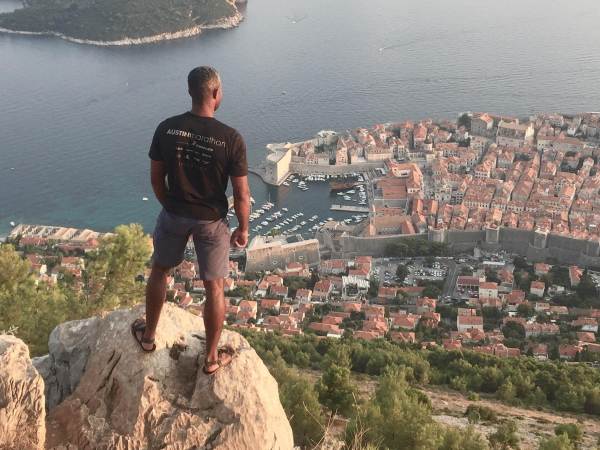
Along with walking along the old city’s high walls and exploring fortifications (complete with cannons), there are also plenty of beautifully secluded beaches not too far away by car or public transportation from Dubrovnik. Just minutes outside of Dubrovnik, you can take it easy lounging on a beach that feels worlds away from busy Old Town. There are smaller gems like Ston where you can see some beautiful medieval architecture, go diving off its limestone rocks nicknamed “The Rocks,” and peaceful Lokrum island, littered with tons of peacocks.
Top your Dubrovnik experience with a sunset towering over the city after a cable car ride up Mount Sryoy, and you cap an epic experience before moving on to even better Balkans destinations.
WHAT TO DO IN DUBROVNIK
- Walk Stradun street, the main street in the Old Town, flanked by Venetian style buildings and Game of Thrones backdrops, ending at the clock tower
- Walk the Old Town city walls
- Old Town sites to see: Rector’s Palace,
- Hop a boat to Lokrum Island for the view, the experience, and peacocks
- Cable car ride up to 412 meters tall Mount Srdj for a birds-eye view of Dubrovnik
- Do a Game of Thrones walking Tour
- Enjoy the beaches that flank the city
TIME NEEDED: 1 to 2 days
ISLANDS NEAR DUBROVNIK TO CONSIDER
- Korcula: Beautiful Venetian architecture and the childhood home of Marco Polo, Princeton Beach, and winemaking
- Elite archipelago of 14 small islands: orchards and fruit groves, white sands beaches, more beautiful architecture and each island has a character all its own
COOL NOTES ON DUBROVNIK:
- The Old Town was a set for Star Wars as well as Game of Thrones
GETTING AROUND DUBROVNIK: On foot is your best and easiest bet as the best parts of Dubrovnik are walkable
WHERE TO STAY: The Old Quarter is a highlight and a great place to stay but pricey. Budget travelers should aim for the surrounding neighborhoods of Pile, Ploce, and Lapad. I highly recommend Hostel Angelina , and there are plenty of options on Airbnb
After you’ve finished exploring Dubrovnik, you’ve likely reached the end of your adventures in Croatia if you are taking the “from north to south” route through the Balkans. If you are in the Balkans for less than two weeks, hop a bus from Dubrovnik to Kotor, Montenegro (~3.5 hours, $8), for insanely beautiful fjords, towering green mountains, and warm, deep blue waters.
If you are on the extended tour through the Balkans, hop a bus on to Mostar, Bosnia, to begin the tour through Bosnia & Herzegovina and Serbia.
BOSNIA & HERZEGOVINA
Ottoman food, culture, and heritage in the Balkans, with dense European history
Bosnia and Herzegovina deliver a unique experience in the Balkans thanks to heavy Ottoman influence in their culture, food, religion, and architecture, and due to the Bosnian history of war – from the assassination of Archduke Franz Ferdinand in Sarajevo, which started World War I, to the Bosnian War in the mid-1990s.
Bosnia used to be a small, medieval kingdom (and existed before Sarajevo); however, in the late 15th century, the Ottomans conquered the Bosnian kingdom, destroying much of the original history and leaving behind much of the culture and architecture we observe today.

Beyond the history-laden walking tours, Sarajevo delivers a rich experience of “Little Vienna meets Little Istanbul.”
Whereas other Balkan destinations deliver pure sunshine and pleasure, Bosnia and Herzegovina deliver culturally enriching and educational experiences in a way any travel will appreciate.
INTERESTING BOSNIAN FACTS: WHY THE BOSNIAN COASTLINE IS ONLY 17 KM LONG
Bosnia &Herzegovina have only 17km of coast: During the period of the Ottoman and Venetian empires, the Venetians controlled present-day northern Croatia. The Ottomans controlled Bosnia (without a coast at the time). Croatia (south of Bosnia) was the Dubrovnik republic. The Dubrovnik republic agreed to give the Ottomans the 17km of coastline to aid trade via access to the oceans, under the conditions that they would fight the Venetians if they ever attempted to invade. This is why present-day Bosnia has this coastline

BOSNIA AND HERZEGOVINA ITINERARY

BOSNIA & HERZEGOVINA TRAVEL INFO
- Mostar: Cliff diving and a small-town feel
- Sarajevo: Vienna meets Istanbul, intense history (Balkan wars, WW2), unique foods,
ESSENTIAL FOOD & DRINK OF BOSNIA & HERZEGOVINA
- Dolma: Served many ways, but stuffed in onion and stuffed in peppers are the most common ways.
- Bey’s Soup or Begova Corba – slow-cooked chicken or beef and vegetables make a thick, slightly creamy, but extremely (simply) delicious soup.
- Klepe: Bosnian meat dumplings served with a creamy yogurt-like cream infused with garlic
- Cevapi: Simple, grilled rounds of minced meat served with a traditional bread somewhat like pita. Simple, yet filling. Good for an uneventful but tasty lunch
- Burek: A savory pastry filled with cheeses, meats, spinach, and the like (comes from Turkey and was brought to the Balkans by the Ottomans). Try it for a quick breakfast.
- Baklava: A layered pastry of flaky bread covered in honey and sugary sweet sauce. Common in many Middle Eastern countries and Greece. Absolutely delicious! Similar to everywhere else in the Balkans and the Middle East, it’s no less enjoyable here. Perfect with a cup of coffee
VISA: Most nationalities can stay for 90 days free without a visa but need to have at least 6 months validity on their passport on arrival
BUDGET/PRICES: $45/ Day for hosteling backpackers and ~$75 for budget travelers staying in budget hotels
CONNECTIVITY: HT Eronet SIM cards for 3G coverage
MOSTAR, BOSNIA
The famous Old Bridge, built-in 1566 over the Neretva River, is one of Mostar’s most recognizable features. It was destroyed in 1993 when Croat forces bombed it in order to create a dividing line across the Balkans. Reconstruction began in 2002 and ended ten years later; today, it is again one of Bosnia and Herzegovina’s top tourist attractions.
But there isn’t just cultural significance here–this city also has plenty of natural beauty: nearby peaks can reach 3,000 meters high (10,000 feet). Take a hike through Medjugorje (30 minutes away) or its surrounding hillsides for some epic views that are rarely seen by anyone but locals–as well as perhaps sightings of wild animals like deer.
Also, check out Kravice waterfalls – some of the tallest in the Balkans at 80 feet tall – between Split, Croatia and Mostar, 45 minutes away from Mostar. There is a swimming pool at the foot of these falls, and you can take a walk along a path that goes behind them to see where it all comes from. Many day hikers picnic along the shores and enjoy the paradise.
If you need one more destination around Mostar and in Bosnia, consider experiencing some local cuisine on Pliva Lake’s shore, featuring plenty of fresh fish and other delicacies, but expect a 2+ hour drive to get there.
The Balkans are known for their hospitable locals–and this is no different in Mostar! Take the time to talk with some of the friendly people who help run shops and cafes. You’ll be able to get a taste of local life that you wouldn’t otherwise see as a tourist.
HIGHLIGHTS OF MOSTAR BOSNIA
- The Stari-Mos Bridge: The iconic bridge, the “stari most” (meaning “old bridge”), has existed since the 1400s. The bridge was used to connect the commerce and residential neighborhood sides of the river. Now, you can jump from the Stari Most after getting certified by the local coaches – or jump from the lower platform. During my time in Mostar, Red Bull was running a cliff diving competition from the Stari Most Bridge.
- Terrace café by Day and Ali Baba disco by night
- Central mosque
- Top of Franciscan Church
- Heavy Ottoman influence
- Fantastic rich food with strong Turkish notes
- Do the free Mostar walking tour
AROUND MOSTAR
- Kravca Waterfalls
- Roman Ruins
- Pocitjeli: A medieval fortress and walls surrounding a town that dates back to 1444. 30 minutes from Mostar.
TIME NEEDED: 1 Day for Mostar, an additional ½ day today for each day trip out of town
WHERE TO EAT
- Restaurant Sadrvan – a plethora of local, Bosnian cuisine at great prices despite the touristy location and feel. Perfectly situated next to the UNESCO heritage bridge ” Stari Mos.”
GETTING TO MOSTAR
- From Dubrovnik or Split, go to Mostar, then Sarajevo, then depart to Serbia (east) or Montenegro (South)
- Traveling by bus, booking on the GobyBus site is your bet
The capital city of Bosnia and Herzegovina is one of the most varied and historically significant cities in Europe. The heritage of the rule of the Ottoman empire remains clear in the cuisine, architecture, and half of the city’s downtown. Museums host the memories of the Yugoslav wars, a product of the splitting of Yugoslavia, as well as the assassination of Franz Ferdinand by student revolutionaries that kicked off World War 2.
The highlight of the Sarajevo is absolutely standing at the border of east meets west in the downtown border between little Vienna and little Istanbul.
HIGHLIGHTS OF WHAT TO DO IN SARAJEVO
- Monday night party at the “unofficial bar.”
- Walking tour (hopefully with Neno)
- A museum (there are so many)
- Crimes against Humanity Museum (I had no idea of the atrocities, genocide, and torture that took place in Bosnia & Herzegovina
- Sarajevo Tunnel
- Latin Bridge – site of the assassination of Franz Ferdinand and the start of WW2
- Walk the Main Street
- “The cultural meeting point” is the line between mini Istanbul and mini Vienna
BEST RESTAURANTS IN SARAJEVO AND WHAT TO EAT:
- Dalmatinska.
- Amazing Burgers
- Walnut Rakija Aperitif
- Stuff peppers and Zucchini
- Gastro Pub Vucko
- Sarajevo eating tip: Stick to the Old Town for cheap, authentic, and delicious food
GETTING AROUND
- Unofficial shuttles 8, 12, 5 for 25 Euros or 50 Marks
WHERE TO SLEEP
- Hostel Kucha
- Doctors Hostel – comfy private beds, clean facilities, and a relaxed yet welcoming atmosphere
- 6:00AM bus to Belgrade from the east bus station
A proud country with a very Eastern European feel, robust history, and intense nightlife.
Serbia is a Balkan country that, through the countless empires and booms of tourists, has been able to hold on to its history and culture more than its neighbors. At times Croatia feels consumed by summering Europeans and GoT tours, and other cities can feel more Ottoman than Balkan at times. Serbia, on the other hand, feels 100% Slavic and 100% Serbian in a unique way for the Balkans. Serbia offers travelers a chance to experience the Balkans untouched, so it is nearly impossible not to have an amazing time during a trip there.
A uniquely Serbian experience awaits in Belgrade and beyond – from Rakia bars to floating nightlife to college-style warehouse parties, then waking the next day to absorb and discuss culture; Serbia will surprise you with its variety and uniqueness.
Serbia, formerly part of Yugoslavia, has a long tradition of hospitality and welcoming people epitomized by the Balkan proverb: “Whoever visits Serbia in wintertime knows what hospitality is.”
If you’re looking to get away from the tourist traps that can sometimes make traveling feel less personal, Serbia is one of the best places to go.
SERBIA ITINERARY
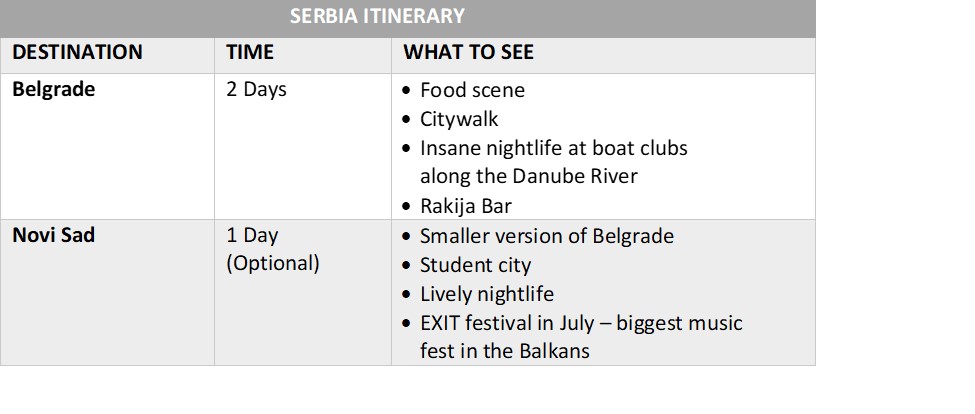
SERBIA TRAVEL INFO
- Insane Nightlife
- Deep History
- Experiencing a Slavic country that remains very true to its culture, unbent by tourism and other invaders
TIME NEEDED: 2 Days
- Ćevapi
- Karađorđeva šnicla
- Punjena Paprika
- Čvarci
VISA: Serbia is not part of the Schengen zone and offers a free 90-day visa for most visitors
- Hostel: $12/night
- Budget breakfast: $1
- Diner or Café Meal: $5
- Coffee: $1.50
- Beer: $1.50
- Inter-city Train: $4.50
- $60 for budget travelers staying in budget hotels
CONNECTIVITY: SIM Card from VIP, Telenor, or MTS for best 3G connectivity
BELGRADE, SERBIA
Belgrade has a rich history, ranging from Roman times to the Ottoman occupation and Serbian Christianization when Serbs converted to Orthodox Christianity in order to counter moves by Catholic clergymen coming from Rome. It was later captured by Turks in 1459, conquered briefly by Habsburgs in 1688, taken by Austrians in 1717–39 during the Great Turkish War, when it was known as “Belgrad” (Turkish: “Novo Brdo”), and liberated by the Serbian army in 1876 during the Serbian–Ottoman War of 1876–78.
Belgrade was also the capital of several Yugoslav states until the dissolution of the former Yugoslavia in 1992. Belgrade is still the capital and largest city of Serbia. It is the only major Serbian city with a population above one million.
- Do the free Belgrade walking tour, hosted by Hostel Hedonism
- Visit the Belgrade Fortress and hang out at the Park in front of it
- Visit old town (Zaman)
- Visit Sajmiste (remnants of a concentration camp)
- Walk Belgrade’s “Stari Grad” (Old Town), seeing the main walking
- The main pedestrian walk of Kneza Mihaila and plenty of places to eat, drink, and people watch
- Visit Republic Square, at the end of Kneza Mihaila
- The Belgrade Fortress, which has never been overtaken
- Kalemegdan Park surrounding the fortress, which includes the military museum and a zoo
- Walkthrough Skadarjila, Belgrade’s most stylish and bohemian neighborhood
- Enjoy the never-ending nightlife at the riverfront bars and clubs
- Visit Zeleni Vanac farmers market
- Visit the Nikola Tesla Museum
- Visit the neighbors of Zemun and Novi Beograd for a taste of what local life is like outside of the city center.
- Noteworthy landmarks to see: National Assembly, Church of St Mark, Church of St Sava
- Belgrade is the largest city in the Balkans
- The Belgrade fortress has never been captured by a rival
TIME NEEDED: 1-2 Days
ESSENTIAL FOOD, DRINK, AND WHERE TO EAT
- Fabrika (Restaurant)
- Leila Records (Radio-Televizija Beograd) – A café, bar, and record located a 10 minutes walk from the tourist strip but authentically (hipster) Serbian.
- Go to new Belgrade or Zamun for food
- Cafeteria (coffee bar in tourist center)
- Fabrika Restaurant
BARS AND NIGHTLIFE
- Go to Passenger Café (have a Kas beer) next to Hedonism Hostel
- Rakia Bar – The name says it all!
- Splavoli (floating clubs built into houseboats on the Rivershore)
- Drugstore (Warehouse District – Bus 16), Old factory clubs complex
GETTING AROUND: Most of the parts of Belgrade you’ll want to see are situated in the downtown and historic areas, so you’ll be able to explore the entire city on foot
- Bongo Hostel
- Hostel Hedonism
- Take the train (11 hours) or fly back to Podgorica, Montenegro and continue on the Balkans backpacking route.
Novi Sad is the second-largest city in Serbia. It’s known for its significant role at the end of World War I, when it was occupied by Serbian troops and became an important anti-Bolshevik base. This great deed earned it a reputation as a Christian bastion that turned out to be undefendable against merciless Ottoman forces.
The dynamic atmosphere attracts many visitors and workers from abroad, who come to experience this Mediterranean Balkans feel during their Balkans tours. Novi Sad is also famous for its thriving art scene as well as the annual jazz festival attracting celebrities and musicians from around the world every October.
As one of the youngest European capitals, Novi Sad’s restaurants, bars, galleries and concert halls all reflect its cultural diversity, which in turn gives the city an alluring nightlife that is often described as unique.
Novi Sad’s strategic position on the Danube River makes it a natural hub for inland waterway transport, and there are good road connections to all major cities around the Balkans.
- Smaller version of Belgrade
- Student city
- Lively nightlife
- EXIT festival in July – biggest music fest in the Balkans
WHAT TO DO IN NOVI SAD
- Visit the Petrovaradin Fortress
- Walk Dunavska pedestrian street
- Enjoy peace and quiet in green Danube park
- Visit the Museum of Vojvodina which documents 8,000 years of history in the region
- Enjoy the architecture: Name of Mary Church, Novi Sad Synagogue, Vladičanski Dvor (the Bishop’s Palace), St. George’s Cathedral
- Enjoy Strand, the sandy beach on the shore of the Danube
- Visit the Matica Srpska Gallery housing 7,000+ pieces of Serbian art from 1500 to present
- Visit Fruška Gora 30 minutes from town, a National Park of vineyards, pastures, and woodlands that was the shores of an island in the Pannonian Sea 90 million years ago
- Drive 35 minutes away to the vineyard laden small town of Sremski Karlovci
TIME NEEDED: 1 day
MONTENEGRO (HIGHLIGHT OF THE BALKANS)
The southernmost fjords in Europe tower above pristine, beautiful waterways and castles
Montenegro is a small yet intensely beautiful country dominated by the southernmost fjords in Europe, waterways, and towering mountains with centuries-old, medieval-style cities dotting in between. Montenegro’s views and stories feel unreal, whether walking a cobblestone road in the afternoon, taking a cheap boat tour through the waterways with the captain narrating the hidden history, or hiking to a monastery.
For many travelers, Montenegro is the highlight of their Balkan itinerary.
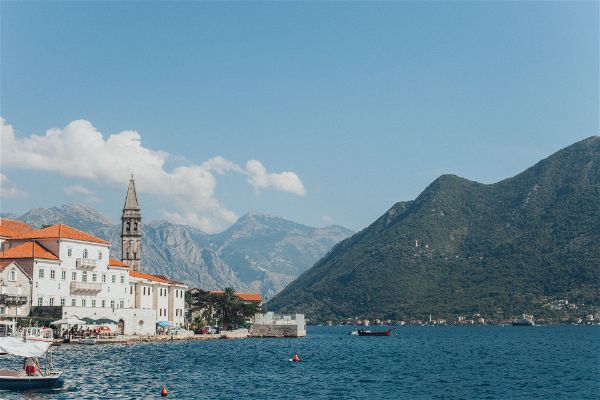
You’ll find the popular sites, Kotor and Budva, frequented by cruise ships and locals (Croatians and Serbians). Montenegro delivers all of the enjoyment of Croatia at about 1/3 the price.
MONTENEGRO ITINERARY
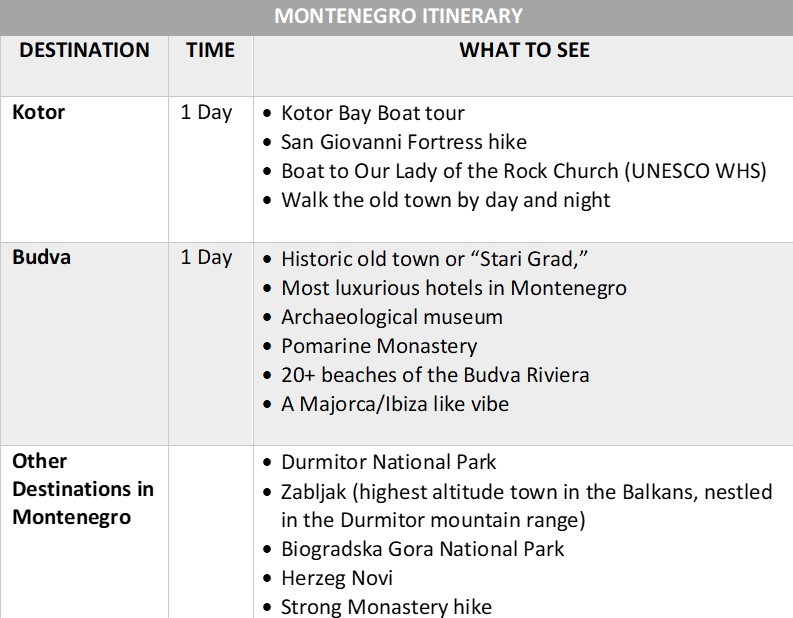
MONTENEGRO TRAVEL INFO
TIME NEEDED: 2 to 3 days for the essentials
- Moussaka (in general)
- Musaka od Ketola

GETTING TO MONTENEGRO
- International travelers coming from outside the Balkans will need to fly into Dubrovnik and then bus to their destination in Montenegro.
- No matter where you come to Montenegro from (within the Balkans), traveling by bus is your best bet.
- From Dubrovnik to Kotor, take a 3-hour bus ($10) .
- From Albania, bus from Skoder (3 hours) or Tirana (6 hours).
- From Mostar, Bosnia, or Sarajevo, taking the bus will be your best option.
- From Belgrade, take the train from Belgrade to Podgorica, and hop a bus from Podgorica to your next destination in Montenegro
VISA: Montenegro is not part of the Schengen zone, and a free 90-day visa is offered on arrival
CONNECTIVITY: Telenor SIM Card best for 3G access countrywide
- Hostel: $12/day
- Transportation: $7 between cities, most cities are walkable and need no transport
- Tours: $35 for Kotor Bay and Lady of the Rocks Tour
- $75/night for budget travelers option for hotels
KOTOR, MONTENEGRO
Kotor is one of the most picturesque cities in Montenegro and a popular destination to visit for people all over the Balkans and beyond!. It’s located on a dramatic bay where the Adriatic crashes into towering limestone walls, forming cliffs and caves. Kotor is home to UNESCO World Heritage Site Old Town, which begins at the foot of Stari Grad (Old Town) and ends at Lovrjenac Rock in the center of the bay, and is considered one of the most beautiful places along the Adriatic Coast. Nearby seaside villages include Tivat, Budva, and Sveti Stefan. With its beautiful beaches, magnificent fortresses and interesting history, Kotor is perfect for travelers of all ages.
Roman Emperor Augustus spent time in Kotor in the 3rd century BC and praised it as a “city defended by strong walls” back then.
If you are planning a Balkans itinerary, be sure to put Kotor on your list. The beauty of this coastal town, as well as its historical significance, will not disappoint.
HIGHLIGHTS (BLURB)
- Kotor Bay Boat Tour
- Visit Our Lady of the Rock Church (UNESCO Site)
- The Kotor Bay Boat tour (€35) is a must-do. 3 hours on a boat spent cruising the crystal clear, blue waters up to the border with Croatia, visiting some interesting sites in between (includes lady of the rock church, underwater tunnel)
- Beaches abound around Kotor , walking distance with water so warm and calm. I went for midnight, moonlit swims every night in Kotor.
- Two fishermen found a picture of the Virgin Mary on a rock in the middle of the water. It was gone the next day but reappeared a week later. The locals decided to build a church on the rock but needed to build an island first. For 100 years, sailors in the bay would drop small rocks from their boats each time they went out, and the town sank enemy ships over the rocks to build the island. Today, the church and the island are UNESCO world heritage sites.
- Old Town and the Castle: The old town is an ancient, walled complex and castle that crawls up the steep mountain behind the city. This complex houses most of the nightlife in Kotor and caters to partiers and backpacker life.
TIME NEEDED: 1 to 2 days for the essentials
GETTING THERE: The destinations in Montenegro are close together, so, anywhere in Montenegro you go, travel by bus. Rome2Rio will be your best tool for planning bus travel, but be smart and book at the train station beforehand.
GETTING AROUND: Kotor is a small and beautiful town that is tightly packed and very walkable. Plan on just walking to get anywhere you’d like to go.
WHERE TO SLEEP IN KOTOR
- Hostel 4 U Montenegro : A hostel on the beach and an anomaly. When I stayed, they had 2000+ reviews and a rating of 9.9 out of 10. On arrival, you won’t check-in. Instead, you’ll be handed a shot of homemade Rakia.
- Old Town Hostel
- Use www.getbybus.com to find your bus out
LOGISTICS VISA: Montenegro is not part of the Schengen zone, and a free 90-day visa is offered on arrival
BUDGET/PRICES: (1 NIGHT ACCOMMODATION, 1 MEAL, 1 BEER)
NOTES : Next to the old town is Kotor’s only shopping complex with a grocery store and anything else you’ll need
BUDVA, MONTENEGRO
Budva is a coastal town with great nightlife and vibrant atmosphere, long sandy beaches, beautiful residences, hotels and hostels. Its off-season city is charming as well – not too big yet numerous things to see and do. The city’s old town centers around its signature pedestrian street, which is the center of activity for visitors, lined with shops, restaurants, bars, and cafes. The Old Town is bordered by the site of a 14th-century Franciscan monastery on one side and a 17th-century Orthodox church on another. A walk through this picturesque area also gives a breathtaking view of mountainside villages and the shores leading up to the Adriatic Sea.
- Soak up the sun on the Budva Riviera
- Walk the Budva Old Town
- Visit the Cathedral of Saint Stephen
- Sail the bay and view Kotor fjord
GETTING AROUND: Just like Kotor, Budva is tightly packed and walkable, so plan out using your feet to get around for the best experience
Undiscovered and packed with experience: the Albanian Alps and the Albanian Riviera are Balkan highlights
Albania is one of the highlights of the Balkans – “young,” undiscovered, and filled with some of the best beaches (the same coastline as you’ll find on the Greek Riviera) and Alpine views in all of Europe, at a travel price that is easily the lowest in the Balkans and Europe.
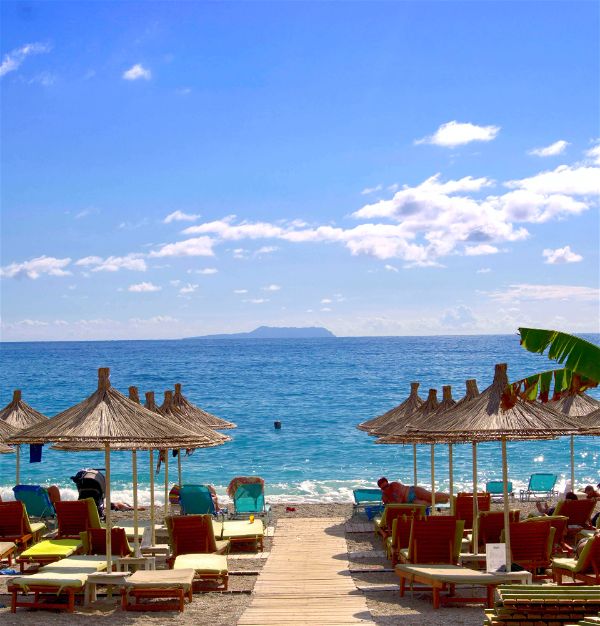
Albania opened up to the west and abandoned communism much later than its neighbors, leaving Albania with a very young and “new” and somewhat adventurous feel as a country. Though traveling through Albania can be slightly more difficult than its neighbors, the natural beauty you get in return makes Albania a highlight of the region thanks to two things – the Albanian Riviera and the Albanian Alps. As you travel through this country, you will experience the highs of travel and the calamity of “adventure travel.” Some parts will feel like the Greek isles and riviera or Alps of other countries, while other places will feel as chaotic as urban India – in all situations, though, the experience is exquisite and worth the trip.
The Albanian Riviera is the coastline shared with Croatia (to the north), but more interestingly, it is shared with Greece to the south. This is the same immaculate beaches and coastline that would cost 5x as much to travel in Greece, but (in Albania) you experience it with a more authentic, less touristy feel, and without the crowds.
The Albanian Alps are tucked just across the Albania-Montenegro border, near the Albanian towns of Theti, the Valbona River Valley and deliver sights as amazing as the Swiss Alps and Dolomites, surrounded by charming rural towns, yet just a few hours drive from warm beaches. All of this is still under traveled, undiscovered, and perfect for budget travels.

INTERESTING FACTS ABOUT ALBANIA
- Albania was the first atheist country in the world in 1967
- The clock tower in Tirana has been rebuilt several times because, at the start of wars, it was usually the first thing destroyed, and after wars, it was usually the first thing rebuilt
- Albania has over 170,000 bunkers strewn throughout the country
- Albania is the international name based on the first tribe that was found here.
ALBANIA ITINERARY
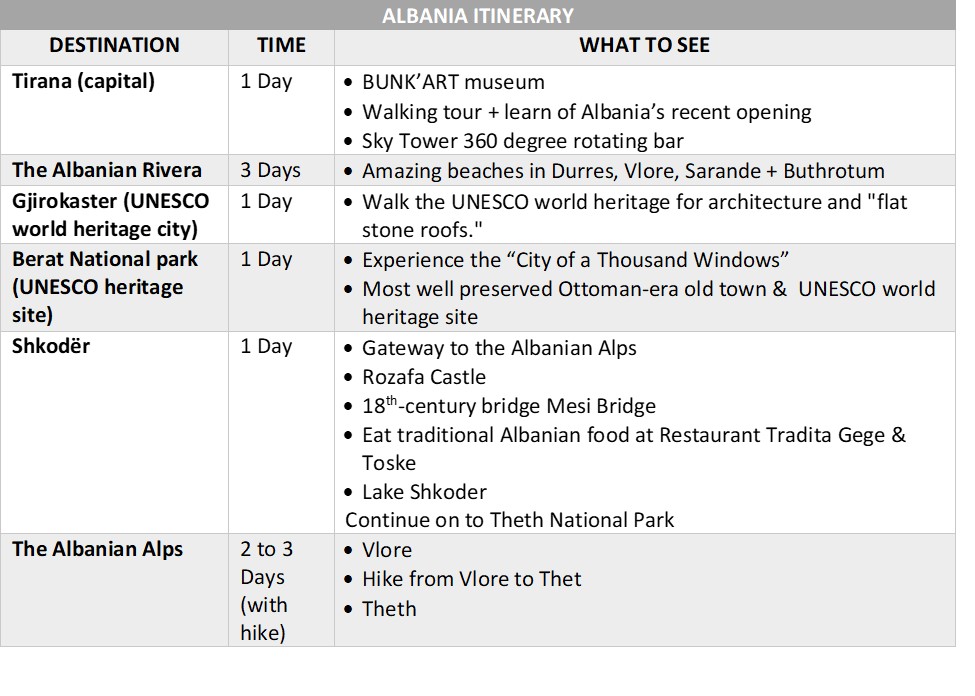
Consider Albania route –> Tirana –> Shkoder –> Albanian Alps –> Albanian Riviera (Vlore, Sarande, Himare) –> Berat –> Gjirokaster –> Tirana to do the adventurously strenuous experiences (trekking) first, and end the trip on the beachy riviera
Or reverse the route if you would prefer to get adventurous first and then end on the beach.
HIGHLIGHTS ALBANIA
- Tirana (capital) and learning of the country’s history
- The Albanian Riviera and exquisite beaches for insanely cheap
- Sarandë (Best coastal destination)
- Rough camping on the beaches of Albania
- Shkodër
- Berat and Berat National park (UNESCO heritage site)
ESSENTIAL FOOD & DRINK IN ALBANIA
- Byrek: Savory pastry
- The Mediterranean Staples: Olives, cheeses, fresh fruits, fresh vegetables, baklava, byrek
- Stuffed Peppers
- Fried Eggplant
WHEN TO VISIT: Shoulder seasons of April to June and September to October are best, with great temperatures and thin crowds. July and August are great, too but expect heavier crowds.
GETTING THERE: From within the Balkans, international busses connect to Tirana from Montenegro, Kosova, Greece, and Macedonia. From outside of those countries, expect to fly in. Momondo is your best bet for finding cheap flights.
GETTING AROUND: Albania is small and easy to get around. You can travel from north to south in a single day, all via public transport (no need to rent a car). Fulgoni and busses are your best options for travel.
Fulgoni are shuttle buses or minivans that run between cities in Albania. They’re accessible and cheap but often only leave when full. To find them, it is best to ask your hostel or hotel where to find the appropriate one for your next destination.
Long-distance busses are another great option, more reliable, easier to book, and my preferred option.
If you are pressed for time and don’t want to waste time sorting transport, consider a tour from G Adventures or Intrepid Travel.
MOVING ON: From Albania, take a cheap flight into Bulgaria (Sofia and Bansko) for great food adventures, a Bohemian café scene, low-key yet engaging nightlife, and some great day hikes.
VISA: 90 days free with no visa required for citizens of EU countries and 59 other countries, including the US, Australia, Canada, and the United Kingdom ( Source )
ALBANIAN BACKPACKING BUDGET/PRICES: Albania is the cheapest country to travel in the Balkans
- $35 per day total
- Hostel: $11/night
- Good meal: $5
- Transport: $75 to $100 for bussing the entire loop of Tirana to the Riviera to the Alps
WIFI AND CONNECTIVITY:
- Vodafone SIM for 3G is best, also Eagle Mobile, Telekom
- Larger, chain cafes will have wifi, don’t expect strong wifi in small cafes
RECOMMENDED TOURS: (G Adventures, Intrepid, Contiki)
TRAVEL INSURANCE: Albania is adventurous enough that I recommend travel insurance, and Safetywing and World Nomads both suffice
Tirana is the Albanian capital and full of history in Tirana, dating back to about 3000 BC. Tirana was once the crown jewel of the Balkans and was considered Europe’s newest and most modern city. But the Balkans lost a lot of its charm following World War 1 which destroyed major portions of the Balkans, including Tirana and many other cities in Albania.
After the war, a communist government was established, and Albania became a communist state, isolating itself from not but the west, but even China, the Soviet Union, and neighboring Yugoslavian countries.
In 1992, Albanians voted to end communism and instead embrace democracy. Since then, Albanian has been gradually reopening and recovering from decades of isolation.
Tirana is the perfect place to learn about, experience, and absorb this history from walk tours, wherein guides share the history that they lived through, museums, and daily life that has eery remnants of a time passed.
- The City Square: Has a plant from every region of Albania and has 100+ small fountains, so the square stays cool in summer.
- The National Museum located next to the square
- A Free Walking Tour for a firsthand account of Albania’s history
- Block Ware (former place of the elite – now a place to go out)
- Sky Bar – a bar that rotates completely every hour, giving a 360-degree view of the city
- The Bunker Museum
- Visit the Bunk’Art 2 museum: A nuclear bunker turned Albanian dictatorship history museum.
- Take a free walking tour to discover the history
- Visit the National Museum
- Visit Skanderberg Square
- View Et’hem Bej Mosque in the Square
- Cable car up to Dajti Mountain for sunset after bussing to Daytime National Park for a panoramic view of Tirana
- Visit Tiranas New Bazar for food and people watching.
RECOMMENDED RESTAURANTS IN TIRANA
- Oda Restaurant
- Sofra Beratase Restaurant
- Head to Himare, on the Albanian Riviera
- By bus from the south bus station (1000 Leke) at 5:45, 6:15, 1:00pm, 6:00pm
- From center to bus station ~700 Leke
RECOMMENDED TOURS
- Any free walking tour
- The Bunk’Art Tour
The gateway to the Albanian Alps and an ancient city that was home to Illyrian tribes that ruled Albania, Kosovo, Montenegro, Croatia, and Bosnia and Herzegovina. Later, this city was ruled by the Serbs, Romans, Byzantines and Ottomans, and the remnants of these cultures still remain today.
A prep town before heading into Theth and the Albanian Alps. One of the oldest cities in the Balkans.
When not prepping gear and planning transport for the Theth to Valbona hike, walk the city streets to absorb the vibe. The main street (G’juhadol), the shopping street (Kole Idromeno) are great places to walk through.
- Hike up to Rozafa Castle
- Prep for the Theth to Valbona hike (food and equipment are best gathered here)
TIME NEEDED: 1 Night
SHKODER LOGISTICS NOTES
- Plan on going to the SPAR Market in town to stock up on everything you’ll need for the hike
- Bring enough cash for your time in the Alps because there is no ATM in Shkodra.
- Transport to Theth will be best arranged through your hostel or hotel, including transport back from Valbona.
THE ALBANIAN ALPS
The Albanian Alps is a high-altitude mountain range in southern Albania, with the highest peak, Mount Korab towering at 2,764m above sea level. The range spans 100km from north to south and rivals the beauty of the alpine regions elsewhere in Europe, making for the same amazing outdoor experience at a fraction of the price and with a fraction of the crowds.
You already know Albania is already a country that has maintained its beauty with charming rural villages untouched natural landscapes. A relatively small Balkans country, to begin with, having an area of only 28,750 km2, the Albanian Alps continue to be an unexplored gem tucked in the northeast corner of Albania. The Albanian Alps stand as a national park immaculate and pristine trekking and hiking by summer and international ski resorts to explore by winter. Throughout your wanderings here, you’ll find scenic views of snowy peaks surrounded by green pine forests as backdrops to crystal blue watering holes and waterfalls. Tourists choosing to hike and make the most of their time in the region here, around Theth and Valbona, can choose from different levels of difficulty in treks, from easy to difficult, making the adventures here suitable for everyone.
The Albanian Alps offer many activities beyond just hiking, such as sightseeing, kayaking, horse trekking, and skiing. This destination is a perfect escape where you will get to travel throughout the Balkans but have the feeling that you are far away from civilization.
An Alpine Mountain town with hiking as its main draw, and that’s plenty.
- The Theth to Valbona hike through the Albanian Alps (7 hours)
- Hike the trail to Danielle (5 hours)
- Hike to the Blue Eye (7 hours) + Grunas Waterfall on the route
TIME NEEDED: 3 Days
The destination city of an amazing, 7-hour one-way hike from Theta to Valbona. You will complete the hike with a walk through the town with a beautiful view on both sides, ending with dinner at your guesthouse.
Be sure to go out after sunset and take in the night sky. Then rest up and prepare to go back to Shkodra the following day.
- Arrange transport back to Shkodra through your guesthouse for the following day.
- The travel back will require a furgon from Valbona to Fierce, a ferry across Loman Lake to Koman, and another Furlong from Koman to Shkodra.
A central town on the Albanian Riviera surrounded by beautiful beaches and a great base for comfortably exploring as many as your trip allows.
- Gjipe Beach (accessible by kayak)
- Jala Beach (accessible by kayak from Himara)
- Filikuri Beach (accessible by rented kayak)
- Rent a kayak and explore the coastline by day, visit the beaches and coves that dot the shoreline.
RECOMMENDED RESTAURANTS & ESSENTIAL FOOD & DRINK
- Sunset Restorat Bar (more for sunset than the food)
UNESCO World Heritage site and city of 1000 windows and home to Ottoman era homes and fortresses on the route to the Albanian beaches
- Berat Castle
- Holy Trinity church, and Byzantine church from the 13th century
- Walk the Mangalem Quarter (home to Muslims) and Gorica Quarter (home to Christians)
- Make the hour-long hike up the hill behind the Gorica quarter for sunset
- Walk Bulevardi Republika just after sunset to experience “xhiro hours” when friends and family come out to walk and socialize
- Two buses daily run from Berat to Gjirokaster from the Berat Bus Terminal, one at 8 am and the second at 2 pm for ~200 LEK. The ride will be ~3 hours.
GJIROKASTER
A UNESCO world heritage site known as the “Stone City of a Thousand Steps.” One of the Balkans’ oldest cities, Gjirokaster, is worth a visit for its architecture, ancient ruins, and abundant Ottoman-era houses.
WHAT TO DO AND SEE IN GJIROKASTER
- Gjirokaster Castle, a beautiful Ottoman-era fortress sitting atop a hill
- Gjirokaster Museum
- Explore the hundreds of bunkers in Gjirokaster
- Gjirokaster Old Bazar
- Do the Free Walking Tour hosted by Stone City Hostel if staying there
- Hike to the Ottoman era Ali Pasha Bridge
WHERE TO STAY
- Stone Coty Hostel
Calm, quiet, and potent for foodies and lovers of pub culture
Quaint, calm, and charming in a peaceful way, Bulgaria is a wonderfully relaxed destination in the Balkans that is less about natural beauty, architecture, and nightlife than its neighbors and more about food and absorbing culture by osmosis. Additionally, you will constantly be surprised by the history, culture, and cuisine of Bulgaria that you’d never even heard of. At night, the restaurants and nightlife make Sofia and Bansko places that a nomad could hang their hat.
Food in Sofia, Bulgaria is surprisingly amazing ; a strong locavore food scene encourages restaurants to commonly experiment with the foods of the region in a gourmet way. The yogurt you commonly eat started here. My favorite meal in Bulgaria was local wild boar that fed on a particular berry in the forest, served with greens and salad foraged from the same forest, paired with a wine made from the same plucked berry from that forest, and finished with ice cream made from the same berry – and this was a standard meal for my entire time in Sofia for cheaper than an average meal in a western European country.
Bulgaria’s history can be explored with day trips (to Plovdiv) and walking tours wherein you’ll discover ruins and remnants from the Ottoman Empire’s former footprint, as well as how the Bulgarians protested the deportation of Bulgaria’s Jews to concentration camps and came up with a scheme to save the Jews in Bulgaria.
Bulgaria’s pub and local bar is an adventure on its own. Whereas Croatia’s nightlife rivals Barcelona’s, Bulgaria’s dark pubs seem reminiscent of Game of Thrones pubs. As contrasted and low-key as the vibe is, the locals are welcoming, and a few beers on the town in Sofia can be a great time.
All in all, Bulgaria is a less exciting destination, but calmly pleasing in many ways and a great way to end a trip through the Balkans.
BULGARIA ITINERARY

- Shopska Salad
- Tarator Soup
- Shkembe Chorba
- Chushka Biurek (Stuffed Peppers)
- Madradjisko (Egg & Cheese in Clay Pot)
- Palačinka (Bulgarian Pancakes)
BULGARIAN VISA: You can travel in Bulgaria for up to 90 days every 180 days. Visits to Bulgaria do not count towards your 90-day visa-free limit in the Schengen area.
CONNECTIVITY and SIM Cards: Telenor, Vivacom, A1 Bulgaria
- Accommodation: $11/night
- Transportation: $10 between cities, $17 to taxi across the entire city
- Attractions: $10
- Accommodation: $25/night
- Food: $25/day
- Attractions: $10
Sofia, the capital and largest city of Bulgaria, is a fascinating blend of European and Slavic styles with architecture that encompasses many different periods. The Balkans itinerary would be incomplete without at least a short stopover in Sofia.
This city may seem dull on the surface, but it is actually cultured, entertaining, and has a heavy hipster influence beneath the surface.
A strong gourmet and locavore food scene at insanely low prices (as expected in the Balkans), a great pub and dive bar scene, tons of kitsch coffee shops, and more add up to a destination that doesn’t quite blow your mind but is a perfectly enjoyable and relaxing stopover for backpackers, digital nomads, and anyone who can appreciate artsy and “low key.”
WHAT TO DO IN SOFIA
- Food Tour with Balkan Bites
- Free walking tour with Sofia free tours
- Go on a graffiti tour or simply wander the town and admire the street art
- 10 pm pub crawl every night from Hostel Mostel
- Consider day use of the spa and sauna at Central Hotel Sofia if you’ve been running too hard.
- Wander and explore the countless cafes as there’s a strong bohemian scene in this city
- Hike up Vitosha Mountain, just outside the city
- Visit “ The Red Flat ” for a peek into what life was like under communism
- Do the Seven Rila Lakes Hike, glacial likes high in the surrounding mountains
- Day trip outside the city to the colorful Rila Monastery
- Landmarks and architecture to see: Alexander Nevsky Cathedral
TIME NEEDED : 1 day for Sofia proper, 2 days including hikes
GETTING THERE:
- Fly in as Sofia is one of Europe’s most affordable cities to fly into. I paid $32 for my flight in and $1.50 to get from the airport to my hostel.
WHERE TO STAY:
- Hostel Mostel: At $11, I got a dorm bed, made tons of friends, and all-you-can-eat breakfast and free dinner. The crowd here was the best part.
- Consider heading to Turkey as a train ticket to Istanbul is only $29.
- Balkan Bites Walking Tour
- Sofia Free Walking Tour
- Free Sofia Graffiti Tour (or just wander on your own)
Bansko is best known as a budget-friendly ski location and mountain town for digital nomads. If you’re traveling to Bulgaria in the winter, stop off for some snowboarding and skiing. Outside of winter, your trip to Bansko will be filled with hikes and day trips to nearby cities.
If you’re on the long trail, backpacking for months, Bansko is worth stopping at for some outdoorsy relaxation. If your schedule is tight, skip this destination and allocate more time for other Balkan cities.
WHAT TO DO IN BANSKO
- Ski-in the wintertime
- Hike to Vihren Peak
- Rila Monastery Day Trip
- Pirin National Park Day Trip
TIME NEEDED: 1 Day + 1 day for each of your chosen hikes/day trips
RESTAURANTS
- Hadjidragana Tavern
- Skaptoburger
- Salted Cafe
ALTERNATE DESTINATION: THE BULGARIAN BLACK COAST
City 1: Varna – The Marine Capital of Bulgaria (1 Day)
- The Retro Museum
- The Stone Forest
- Cathedral of the Assumption of the Virgin
- The Butterfly House
City2: Sunny Beach – A sunny vacation spot filled with nightlife (1 Day)
- Erma Turkish Bath
- Church of Saint Sophia
THE ADDITIONAL BALKANS DESTINATIONS
Kosovo (optional).
Honestly, many other countries in the Balkans have more to offer, but the act of visiting this formerly war-torn country will help you open your mind and shed stereotypes that will enhance your travels down the road. Though Kosovo lacks the sights to see that its neighbors do, Kosovo is very safe to travel to, and visiting can open your mind.
If you are traveling the region for less than three weeks, skip Kosovo and save the travel days for another highlight destination (Albania, Montenegro, or Croatia).
If you are backpacking in the Balkans and have plenty of time, stop through Pristina, Kosovo and walk the town, and be sure to read the history of Kosovo to truly appreciate how far this country has come.
KOSOVO ITINERARY
WHAT TO DO IN PRISTINA
- Take the cathedral elevator up for a good vantage point of the new city
- Check out the statue of Bill Clinton
- Walking tour – 11 AM daily from the steps of the National (Library)?
- Walk down the main drag (??name and Mother Theresa road) in the evening to see normal life.
- National Museum
VISA: For most nationalities, no visa is necessary for up to 90 days
MACEDONIA (OPTIONAL)
With all of the other amazing sights to see in the Balkans, it is difficult to justify detouring to Macedonia instead of spending extra days in one of the country’s neighbors.
Skopje’s Bazar, reminiscent of Turkey, is topped by Little Istanbul (and Little Vienna) in Sarajevo, Bosnia. The countless statues in Skopje’s downtown are interesting but more reminiscent of Las Vegas than a Balkan backpacking adventure and are one-upped by the old walled cities in Croatia and Montenegro.
At the same time, Lake Ohrid’s, and Ohrid’s, beauty are topped by that of Kotor Bay in Montenegro and Lake Shkoder/Shkodra on the Montenegro /Albania border.
Plus, all of these other options above are a shorter distance to other worthwhile sites.
If you are traveling or backpacking the Balkans for less than three weeks, skip Macedonia and spend more time in the other, highlight locations.
If you are traveling the Balkans for more than three weeks and want to include Macedonia, do a quick layover in Skopje and add Ohrid and Lake Ohrid if you are enchanted enough.
MACEDONIA ITINERARY
- Poletti Peperki
VISA: Visas are not required for tourist or business trips of less than 90 days within a six-month period.
VISA INFO FOR THE BALKANS
General: For most borders in the Balkans, you can show up to the border and easily get a 90-day visa or a 90-day entry, visa-free as long as you have 6 months validity on your passport. Slovenia is the only Schengen zone country in the Balkans, sharing its 90 visa with the entire Schengen zone.
Country by Country Balkans Visa Information:
- Slovenia: Schengen Zone country meaning 90 days in a 180 day period, shared with all of the Schengen zone / EU countries
- Croatia: No visa is required for tourist visits less than 90 days – Croatia is not part of the Schengen zone
- Montenegro: Montenegro is not part of the Schengen zone, and a free 90 day visa is offered on arrival
- Bosnia & Herzegovina: Most nationalities can stay for 90 days free without a visa but need to have at least 6 months validity on their passport on arrival
- Serbia: Not part of the Schengen zone and offers a free 90-day visa for most visitors
- Albania: 90 days free with no visa required for citizens of EU countries and 59 other countries, including the US, Australia, Canada, and the United Kingdom
- Bulgaria: You can travel to Bulgaria for up to 90 days every 180 days. Visits to Bulgaria do not count towards your 90-day visa-free limit in the Schengen area. Bulgaria is an EU country but is not in the Schengen zone.
- Macedonia: Visas are not required for tourist or business trips of less than 90 days within a six-month period.
- Kosovo: For most nationalities, no visa is necessary for up to 90 days
CROSSING BORDERS IN THE BALKANS
Border crossings in the Balkans are fairly easy, for the most part. Just be sure to have at least 6 months validity on your passport.
The only border crossing difficult will happening attempting to travel from Kosovo into Serbia. You will have no issues traveling from Serbia into Kosovo, however, traveling from Kosovo to Serbia is forbidden and you will not be allowed through the border.
MONEY AND CURRENCIES ACROSS THE BALKANS
With the exception of Slovenia, Kosovo, Montenegro, and Greece, each country in the Balkans uses its own currency, so be sure to limit the amount of cash you convert to avoid losing too much on the exchange when you exit.
Better yet, aim to keep the bulk of your cash in Euros or US dollars and only exchange as necessary.
The respective currencies for each country in the Balkans are:
- Euros are the standard currency in Slovenia, Greece, Kosovo, Montenegro
- Croatia – Kunas/HRK
- Bosnia and Herzegovina – Bosnia Herzegovina convertible mark/KM –
- Serbia – Serbian Dinar
- Bulgaria – Bulgarian Lev
- România – Romanian Leu
- North Macedonia – Macedonian Denar
- Albania – Albanian Lek
You will receive the best exchange rate at ATMs, so avoid exchanging at money changers if all possible.
TRAVEL INSURANCE: DO YOU NEED IT IN THE BALKANS?
If you can’t afford travel insurance, you can’t afford to travel.
As often as this saying is repeated, it doesn’t make it any less true.
Despite the fact that most of the travel in the Balkans is slow-paced and far from danger, it is wise to pick up travel insurance just in case you get a stomach bug, have an unexpected accident, or fall victim to something related to the recent pandemic.
I normally recommend World Nomads for adventurous travel and high-risk travelers, thanks to World Nomads’ robust coverage.
However, the Balkans is low-risk enough that I recommend inexpensive (yet still reliable) Safetywing travel insurance, as that is the insurance I currently use and have had for the past two years. At ~$40 a month, you can’t afford not to.
GETTING TO THE BALKANS
Budapest Ferenc Liszt International Airport and Dubrovnik’s Čilipi Airport are the cheapest airports in the region with the most flight options per day.
If you are flying into the Balkans, where you should fly into depends on whether you plan to travel from south to north or north to south through the Balkans.
If you plan to travel from the north (Slovenia, northern Croatia) to the south, I recommend flying into Budapest’s international airport. Budapest will have the cheapest inbound international flights in the region.
If you plan to travel south to north, beginning in Albania, fly into Dubrovnik’s international airport (this will be the cheapest airport for inbound international flights in the south), then travel south into Albania, looping back up to Dubrovnik and Montenegro and continue your tour of the Balkans.
WHEN TO VISIT THE BALKANS
Anytime is a great time to visit the Balkans, but the shoulder season is by far the best season to visit the Balkans. Spring and fall, between April to June and September to October, are the shoulder seasons and the best times to visit the Balkans. If you can visit in either window, you’ll have warm waters and sunny skies, yet not too hot, while exploring mostly empty streets. Additionally, prices will ½ the normal tourist season (summertime) prices.
During the Balkans summer of July to September, you’ll have perfect beach weather with amazingly warm waters but plan on sharing the views and beaches with throngs of travelers. Plan on Dubrovnik, Hvar, and Budva to be exceptionally crowded. Also, plan on any of the old town destinations at sea level, such as Split, Dubrovnik, and Hvar, to be scorching hot on the pedestrian streets.
For more open-minded travelers, winter has appeal as well. Winter brings a cold and eerie calm to the Balkans with an equal amount of beauty. If you can brave the cold, you’ll have the cities to yourself. However, plan on the guesthouses, hostels, and hotels closing shortly after tourist/summer and being closed for the winter. You should book accommodation well in advance to avoid booking issues.
WHERE TO STAY IN THE BALKANS
Based on my experiences booking accommodations in the Balkans, both good and bad, I recommend the following booking guidelines
- Hostels & Boutique Hotels for Backpackers and Budget Couples
- Booking.Com for Stays 3 Days or Shorter
- Airbnb for Stays Longer Than 4 Days Or Longer
SOLO TRAVELERS, BACKPACKERS, AND BUDGET COUPLES: OPT FOR THE GREAT HOSTELS IN THE BALKANS
The Balkans are extremely developed, just as well developed as Western Europe, so you will have plenty of accommodation options to fit your tastes or budget.
For solo travelers and backpackers (especially if on a budget), I highly recommend hostels. The hostel standard in the Balkans, especially in Croatia and Montenegro, is very good while being very cheap. For instance, Hostel 4U in Kotor Montenegro is about $12 per night, has maintained a well-deserved 9.8 or 9.9 rating for the last 5 years, and is literally situated on a beach. The beds are comfy, the dorms are clean, and the building seems more similar to a chalet from Game of Thrones than a hostel. Best of all, this is the general standard throughout the Balkans – with the exception of Albania and Kosovo.
For couples and more private budget travelers who still want to be social, private rooms in hostels throughout the Balkans deliver a great balance between the social and the isolated feel of hotels while being friendlier on the pocket.
Bottom Line: For solo travelers, backpackers, and budget travelers, hostels are a great bet. I recommend booking on Hostelword as the site has most of the hostels (or at least the good ones) available on the site.
TRAVELERS STAYING FOR 3 DAYS OR LESS: BOOK VIA BOOKING.COM
If you’re staying less than four days and not interested in hostels, you’ll find the best value for your money and selection on Booking.com. Simple as that.
TRAVELERS STAYING FOR 4 DAYS OR LONGER: AIRBNB
If you’re staying for four days or longer, I recommend booking via AirBnB for a more cost-efficient experience and to better experience what life is truly like off the tourist circuit. While hotels (on Booking.com) tend to be in touristy areas, AirBnB’s and hostels are more often in real neighborhoods where people actually live. As a result, you’ll naturally be exposed to the restaurants, bars, and experiences that locals frequent in their daily lives – which adds a whole new layer to your travels.
BALKANS TRAVEL BUDGET
The Balkans are the cheapest place in Europe to travel and one of the best places in the world in terms of “bang for buck”.

10 TIPS FOR TRAVELING THE BALKANS ON A BUDGET
- Book hostels . Hostels for your Balkans accommodations instead of booking hotels. Hostels in the Balkans can be as cheap as $10 to $15/night and often offer free breakfast too.
- Spend more time in fewer places. The longer you stay in a destination, the cheaper it gets, as room accommodation is cheaper by the week or month than by the day, you learn the great “local” restaurants with cheaper and better food, and you spend less money per week traveling between towns.
- Go in the shoulder season between April to May and September to October when the tourists are fewer, and everything (sites, accommodation, food) is as much as ½ high season prices.
- Sleep, eat and drink off the main street . Sleeping, eating, and drinking on the tourist thoroughfare, a couple of streets over, will cost you 25% to 50% more than walking an extra 5 minutes.
- Use “Trip Advisor Cheap Eats” to find the best food that fits your budget
- Pick destinations wisely – according to your budget and tastes. Croatia is amazing, but the most expensive in the Balkans. Albania delivers amazing beaches and outdoors for 25% of the Croatia coast.
- Bus everywhere as your primary mode of transportation. Flights are extremely inconvenient in the Balkans, and taxis are expensive and unnecessary. Checkout out the best list of Balkans bus and travel booking sites here .
- Travel carry-on only to save fees on flights traveling in and make life easier when transiting by bus – so you can keep your bags with you.
- Grab a beer and quick food to go, make friends, and eat in the park or on the water for a cheap night out or pregame, instead of burning money at a bar. The Balkans has a great tradition of gathering in parks and green spaces around sunset and some great parks to take advantage of.
ESSENTIALS FOR YOUR BALKANS PACKING LIST
You can get by with very little in terms of packing while you travel the Balkans. However there are a few items that are essential for a good experience and making the most of your opportunities in the Balkans.
- Sport sandals: Walkable, adventure-ready sports sandals such as Chacos or minimalist Xero Trails are perfect for the Balkans because so many experiences involve walking and hiking but are equally close to beaches. Whether you are walking Hvar to get to a beach or on a boat tour in Montenegro, you’ll appreciate having comfy sandals that are ready to get wet. Any of these seven great travel sandals will work as well.
- Walkable shoes: Many of the experiences in the Balkans will involve walking, whether on tour, looking at the architecture, or walking to catch a bus. Make sure you have comfortable shoes for walking to make it a 100% enjoyable experience. This mega list of travel shoes has plenty of options if you don’t have a solid pair of travel shoes.
- If you come in December or January or between April and June, be sure to bring a rain shell as those are the rainiest months in the Balkans. Outside of those months, it’s still smart to keep a waterproof layer in your backpack
- If you max out your Balkans experience, you will spend A LOT of time in swim trunks and shorts. Especially if you visit during summer or just outside of the window, you’ll be so hot that pants will be unbearable. Make the most of it by bringing at least 2 pairs of swim trunks, ideally that double as walk shorts too. I highly recommend the Outlier New Way shorts , as they’re as stylish as they are swim-ready and functional, but check out these 6 other shorts that are perfect for travel .
- In Croatia, Montenegro, and Albania, the best adventures are aquatic, whether on relaxing beaches, at waterfalls, or cliff diving. Do yourself a favor and bring a simple roll-top waterproof bag like this to keep your phone, passport, and headphones safe while you swim between boats. The bag takes up minimal space and pays HUGE dividends in function.
HOW TO GET AROUND THE BALKANS
Best options for transport through the Balkans (in order).
- SHORT FLIGHTS
Though there are international airports in Dubrovnik and the neighboring countries, flights between Balkan countries are fairly expensive – so don’t expect the budget airline deals of western Europe. Additionally, when you account for time and hassle spent checking bags, processing through security, and getting to and from the airport from in town, it takes just as long as a bus trip from anywhere to anywhere in the Balkans, but it’s 10x the price. To save time and money in the Balkans, don’t fly; just take the bus.
Best booking platforms for booking buses in the Balkans.
- General Buses in Balkans: Flixbus
- Montenegro – https://busticket4.me/EN
- Croatia – https://www.buscroatia.com/
- General Planning: Rome2Rio
For more info on transport in the Balkans, check out the Balkans section of this article How to Get Around while Traveling .
BALKANS TRAVEL FAQ
- Which Balkan country is cheapest?
- What countries are in “The Balkans”
- Will language be a problem in the Balkans
- How do you get around the Balkans?
- What is the best time to visit the Balkans?
- Where to start when backpacking the Balkans?
- What is it like crossing borders in the Balkans?
WHICH BALKAN COUNTRY IS CHEAPEST?
The cheapest country in the Balkans by far is Albania. Considering the country shares the same riviera as Greece and Croatia and accommodations and food are ¼ the price of the other two countries if you want a budget travel experience Albania is a no brainer.
At the same time, Montenegro is as expensive as Serbia and Bosnia; however, the value of the experience surpasses the cost. Montenegro has the southernmost fjords in Europe make the nature comparable to what you would see around Bergen, Norway, but at a fraction of Scandinavian prices. This makes Montenegro a high “value to money” option as well.
WHO IS BACKPACKING THE BALKANS BEST FOR
- Budget backpackers looking for a cheaper alternative to Europe
- Adventurous travelers, aiming to get off the beaten path to truly new destinations, like Albania, Kosovo, and changing destinations like Bosnia.
- Nature lovers that could spend days on end exploring beautiful lakes, alpine mountains, endless coastlines
- Partiers that find the all-night music and dance of Belgrade’s riverfront clubs and Hvars club island unusually alluring
- History lovers desiring to see old Roman cities and castles in pristine condition (like Diocletian’s palace in Split) or learn the “interesting” histories of the Balkans’ past struggles, like Albania, and Bosnia & Serbia
Note that though you can find food, parties, history, and peace & quiet in the Balkans, you can very easily fill a trip with one type of experience (i.e., quiet, nature) and fill a multiple months-long itinerary. If any of the above.
WHAT ARE THE BALKANS? WHAT COUNTRIES ARE IN “THE BALKANS”
The “Balkans” is the cluster of 11 countries situated in the Balkan peninsula, the name for the Balkan mountain range situated in Bulgaria.
The following 11 countries are regarded as the “Balkan states” that are mostly situated within the Balkan Peninsula.
- Bosnia and Herzegovina
- North Macedonia
Turkey is also partly situated in the Balkan peninsula. Though some people may not regard Turkey as a Balkan country from a cultural standpoint, Turkey is so amazing and so close that it should absolutely be part of your Balkan itinerary.
As you travel through the Balkans, you’ll notice that, with the exception of Greece, the countries and cultures are strikingly familiar while also being drastically different – especially Albania and Bosnia.
During your Balkan tour, I highly recommend adding Turkey to your itinerary because it’s so close, it’s so cheap, and offers such a fantastic travel experience.
WILL LANGUAGE BE A PROBLEM IN THE BALKANS
No, language will not be a problem in the Balkans. For every single destination on this itinerary, you will be able to easily navigate the experience in English.
WHERE TO START WHEN BACKPACKING THE BALKANS?
Ljublana, Slovenia or Dubrovnik, Croatia are your best options for starting your Balkans itinerary.
Ljublana as a start point offers you a very straight forward top to bottom itinerary. If you start in Slovenia, consider flying into Budapest and taking the train into Ljublana.
If you don’t want to start in the peace and calm of Slovenia, Dubrovnik is the other best option for starting. Dubrovnik has a large international airport and is central to every location in the Balkans, allowing you to do one large loop.
OTHER GREAT ARTICLES ABOUT BACKPACKING THE WORLD
- The 9 Best South America Backpacking Routes for 2 Weeks to 6 Months of Travel
- 5 Essential Routes for Backpacking the World and Visiting Every Continent
- The Balkan Walk: The Perfect Backpacking Itinerary for the Balkans
- 3 Months in Southeast Asia: A Perfect Plan for the the “Banana Pancake Trail”
- The Mini Backpacking Trails: 15 Itineraries Aroudn the World for 2 Weeks or Less
ABOUT THE AUTHOR
Carlos is a nomad, slow traveler, and writer dedicated to helping others live abroad and travel better by using his 7+ years of experience living abroad and background as a management consultant and financial advisor to help other nomad and expats plot better paths for an international lifestyle. Click here to learn more about Carlos's story.
Wander-Lush
The Balkans
He who was lucky enough to wake up this morning in Belgrade shouldn’t ask for anything more in life. More than that would be immodest. Duško Radović
Caught between Western and Eastern Europe, the Balkans combines the best of both worlds. In traveller’s terms, this is probably the most underrated (and undervalued) part of the continent.
Why you’ll love The Balkans
Geographically, ‘the Balkans’ is the 12 countries that share the Balkan Peninsula, including the six ex-Yugoslavia republics (Slovenia, Croatia, Bosnia and Herzegovina, Serbia, Montenegro and North Macedonia), plus Kosovo, Romania, Bulgaria, Turkey, Greece and Albania. Much of their history is shared – yet when you look beneath the surface, you’ll see that each country is completely distinct.
The Balkans countries each boast national parks, old towns and cosmopolitan cities to rival any of their more popular neighbours. All with a much more palatable price tag and in most cases, far fewer other tourists to share with. On a practical note, the region is small and well-connected, making it easy to fit a lot into a short itinerary.
I spent more than 6 months travelling around the Balkans by bus, train and car, with a minimum of 14 days in each country and at least a week in each of the capitals.
Explore the Balkans by country
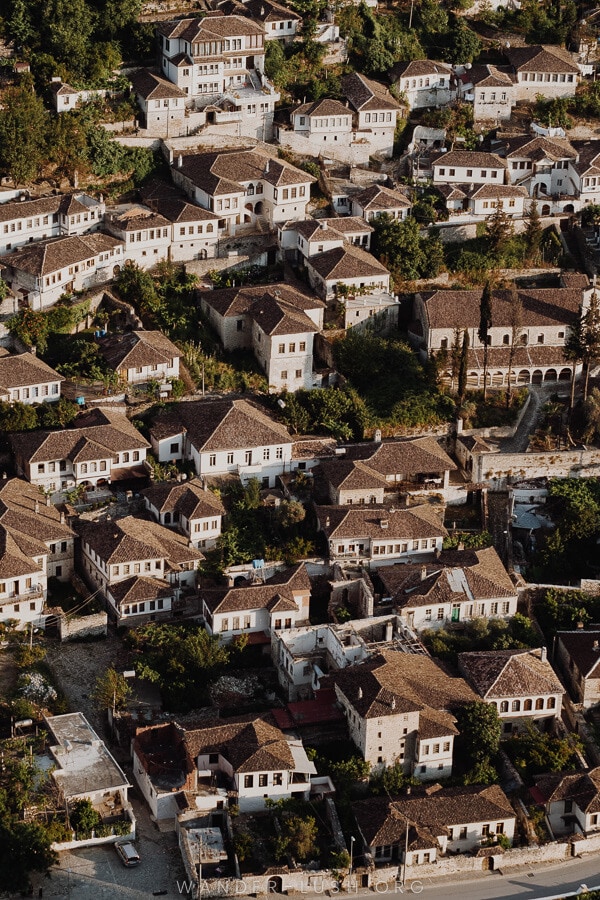
northern Greece
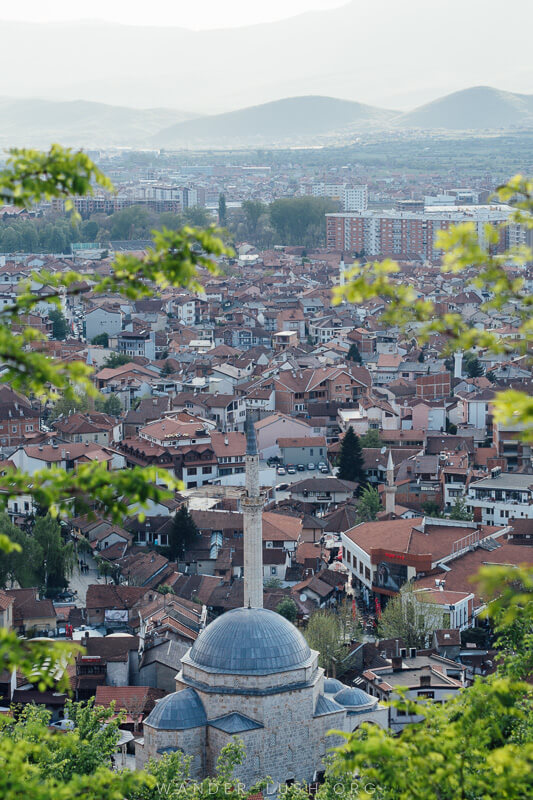
N Macedonia
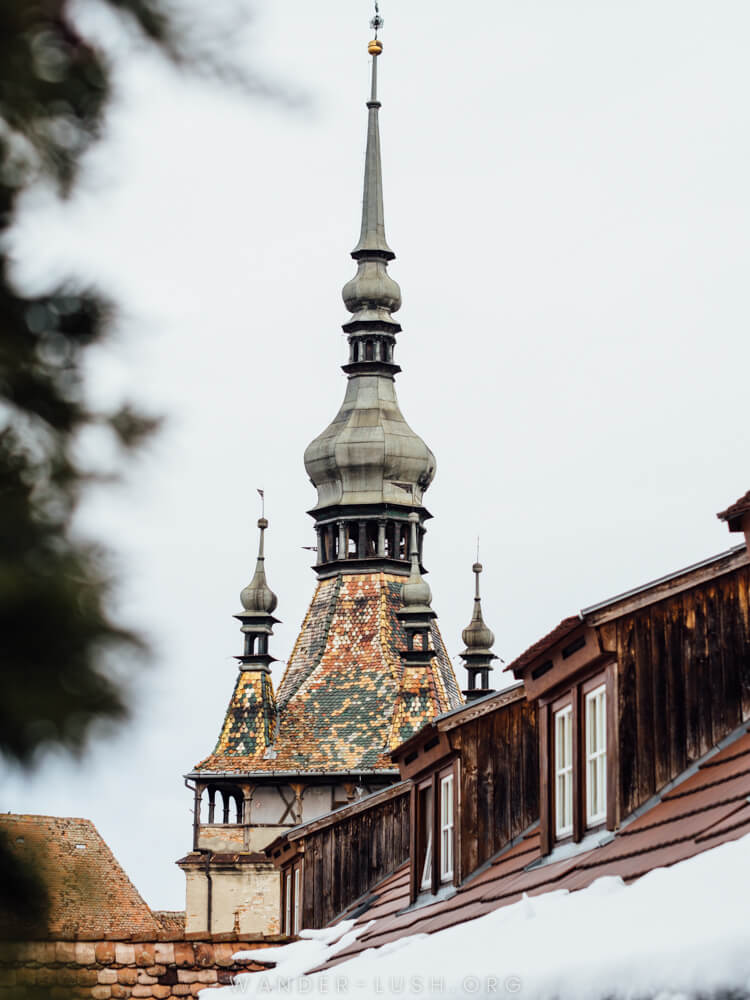
Things to do in the Balkans
A journey through the Balkans is like 12 trips for the price of one. In the space of a day, you can travel from an Illyrian town that’s as old as the hills to Europe’s youngest country , Kosovo.
If, like me, you grew up in the 1990s, your preconceptions of the Balkans were probably shaped by the six-o’clock news. A lot has changed in the intervening years, and the region is now an overwhelmingly safe place for travellers. From the scars of past conflicts spring the green shoots of creativity, most visible in the vibrant cities of Tirana , Pristina and Zagreb .
Trace the region’s omnipresent Ottoman influence all the way from the Old Bazaar of Skopje , the minarets of Bulgaria and the coffee houses of Sarajevo back to its point of origin in Istanbul . Be prepared to adopt a steady diet of cevapi and burek – hearty, meaty food, as you’ll see, is one thing all of the Balkan countries can agree on.
From the pink churches of fairytale-like Ljubljana and the iconic half-moon Stari Most bridge in Mostar , all the way to 50-shades-of-cement Belgrade , the nerve centre of the old Yugoslavia, a journey through the land of spomeniks must be laced with either strong coffee, wine or a shot of rakia , depending on the time of day.
Incredible hiking can be found in the region’s national parks, most notably Albania’s Accursed Mountains , Croatia’s Krka , Montenegro’s Durmitor, and Slovenia’s Triglav that envelops the iconic Lake Bled . Take a boat out on the marshy Lake Skadar , the largest on the peninsula, or through Romania’s Danube Delta .
Be transported back to the time of Saxon craft guilds as you wander through Transylvania’s fortified towns . Hop between the walled Venetian cities that stud the Adriatic Coast – from Croatian Istria to Dubrovnik all the way to the Bay of Kotor . Trust me when I tell you that each one is more charming than the last.
Conquer the steep cobbled streets of the UNESCO-Listed old towns in Berat and Gjirokaster , then veg out under a parasol on the Albanian Riviera .
Recent posts from the Balkans
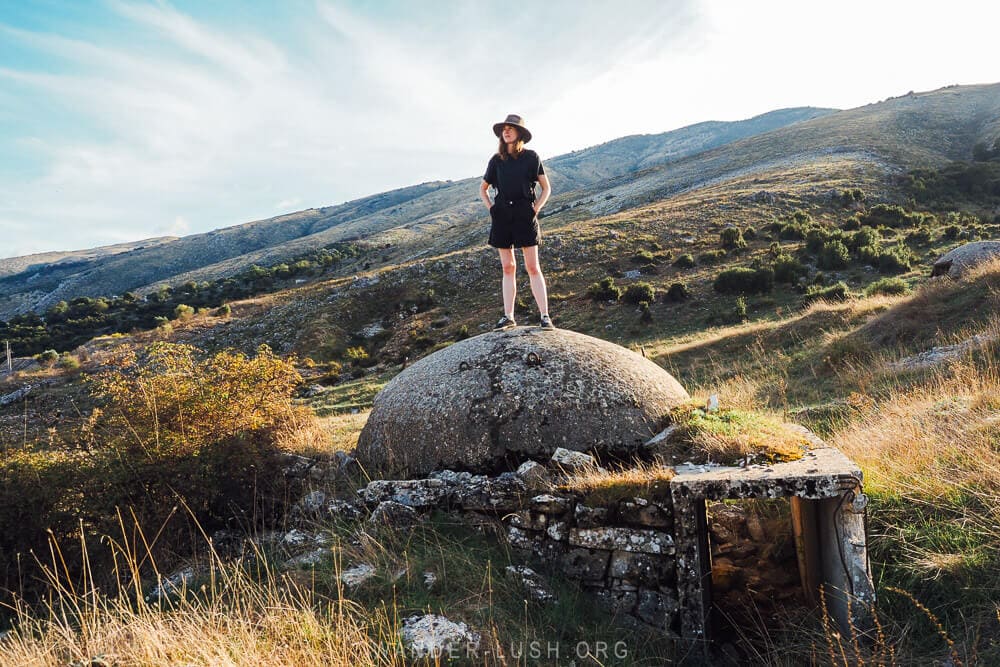
The Ultimate Albania Road Trip Itinerary — From the Riviera to the Vjosa & Lake Ohrid in 2 Weeks
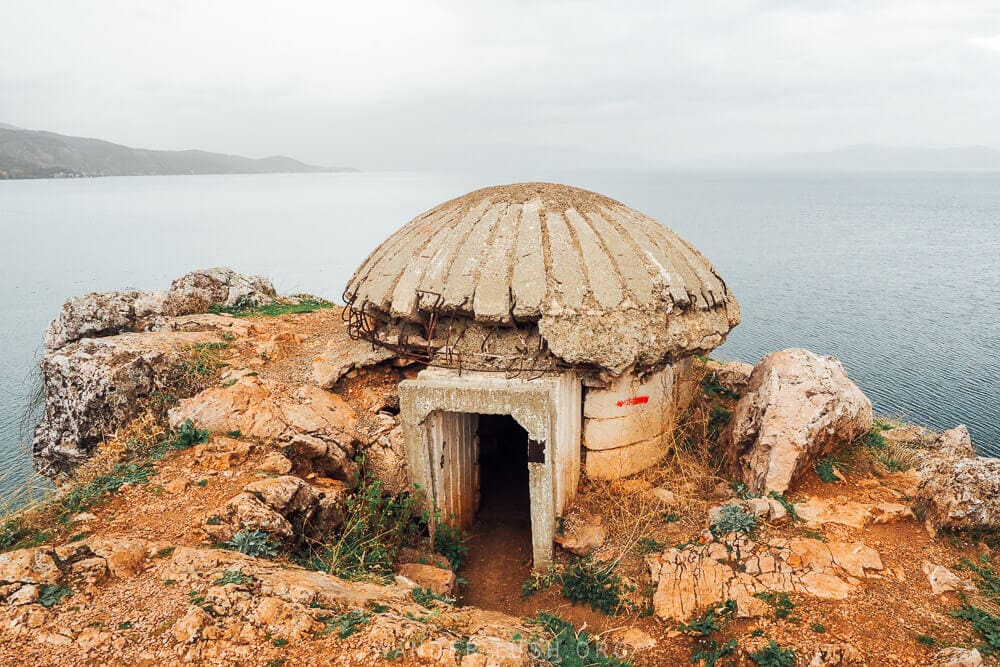
Guide to Lin, an Ancient Village on the Albanian Side of Lake Ohrid

Guide to Leskovik, Albania: Wine Country & the Melesin Distillery

Guide to Upper Qeparo, a Traditional Village in Southern Albania
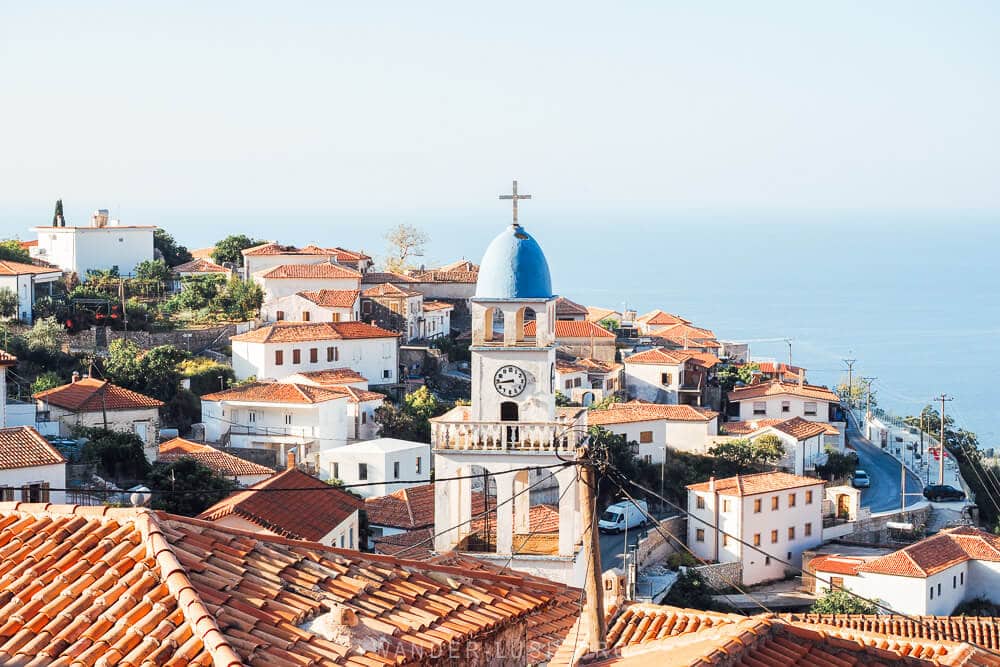
Guide to Dhermi, the Loveliest Village on the Albanian Riviera
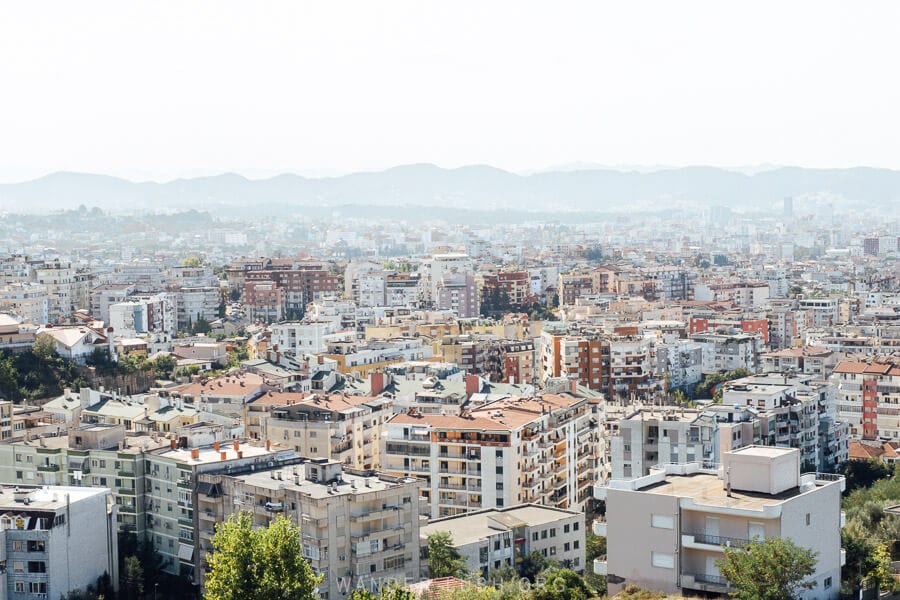
How to Get From Tirana Airport to the City Centre (Updated for 2024)
Balkans travel essentials.
Ready to start planning your trip to the Balkans? Get started with my favourite booking tools and resources.
Please note: Some of these links are affiliate links, meaning I may earn a commission if you make a purchase by clicking a link (at no extra cost to you). Learn more .
find flights
Apply for a visa, buy travel insurance, book a hotel, buy bus/train tickets, book a day trip, find a food tour.

Balkans Travel: 61 Places to Visit in the Balkans + Transport & More
Last Updated on February 5, 2024
This site contains affiliate links for products and services we recommend. Read my disclaimer for more information. If you make a purchase through these links, at no extra cost to you, I will earn a small commission (for which I am very grateful).
The Balkans are made up of some of the most fascinating, beautiful, interesting countries that I have ever been to.
As there are so many amazing places to visit in the Balkans, it’s no surprise that Balkans travel is so popular!
Every year, thousands of people flock to this part of the world looking for the perfect Balkans vacation, and a few years ago I became one of them.
In 2018 I decided to ditch my travel plans and head for a Balkans travel adventure to experience this mysterious part of Europe that I kept hearing about from friends.
I had heard a few things about the Balkans and the beauty of its regions but never made plans to visit – until one random day when I decided to book a flight to Bosnia.

I knew nothing and to be honest, couldn’t find a lot online about it either, which always fascinated and excited me.
It’s hard to find a lot of information about Balkans travel that’s factual and up to date.
As it’s such a fast-growing region of Europe and Balkans tourism is starting to take off, things can change like a flick of the switch.
🧳 MUST-HAVE: Before you head out on your trip, make sure you have travel insurance. I recommend either SafetyWing or World Nomads .
Here’s everything you need to know about Balkans travel and all the best places to visit in the Balkans!

Table of Contents
The Balkans Region: Where are the Balkans?
The Balkans consist of 12 countries.
To this day, the Balkans region is often underestimated, and some people do not count countries such as Slovenia and Turkey as part of the Balkan peninsula but in fact, they are.
Although the entire country does not lie on the peninsula, a part of it does which means it’s technically Balkans!
Here are the countries that are within the Balkan peninsula:
- Bosnia and Herzegovina
Many people think that only the former Yugoslavia is the Balkans today which is also not true. There are countries that were not part of Yugoslavia like Albania, Romania, Bulgaria and Greece.
One thing is certain, as there are many places to visit in the Balkans, you’re unlikely to ever get sick of this region!
How to Get to the Balkans
Travel to Balkans countries is easy; there are plenty of ways to get to the Balkans, and cheaply!
Travellers these days can grab extremely affordable flights to cities like Skopje (Macedonia), Bucharest (Romania), Athens (Greece), Tuzla (Bosnia and Herzegovina), Sofia (Bulgaria), the list goes on!
Once you’re within the region, Balkans travel is straightforward as you can easily move around via bus or (some countries) by train.
A great option for Balkans travel is to hire a car to experience all the small regions and villages that you might miss via bus or train.
With a car, you have more control over when and where to go and see all the places to visit in the Balkans that interest you most.

Transport in the Balkans
If you plan on seeing multiple places to visit in the Balkans in one trip, catching buses is the best option (and sometimes the only) when travelling the Balkans .
Usually, you will pay for the ticket and then extra for any luggage you have that must go under the bus so remember to always have a few coins handy.
Buses are fantastic for Balkans travel as they’re a great way to see the country and you will not be disappointed with the views that you are blessed with.
Hiring a car is the best way to travel through the Balkans because you can visit some beautiful places off the tourist trail.
Make sure you check with the rental company that you can take it to multiple countries.
Also, check with each country’s rules. For example, in Albania and Montenegro, you must always have your lights on.
🚲 Check out these tours in the Balkans

When should I Visit the Balkans?
The Balkans is great to visit all year round. But the best time of year to visit the Balkans varies from person to person. The same goes for the best Balkan country to visit!
As you might have guessed, the busiest for Balkans travel time is summer, but I love visiting any of the Balkan countries in spring.
This is when the flowers bloom, the weather is slowly getting warmer and in (some countries) the prices are even cheaper than they already are.
For countries like Montenegro and Albania, the tourist season is July/August and usually, prices rise for that period of time.
This is why I love visiting at other times of the year because not only do you have tourist destinations to yourself, but you really get to feel the country like a local and not a tourist.
What It’s Like to Travel the Balkans
The Balkans is a fascinating place because the cultures and history are still so rich. To travel the Balkans, you have to go with the flow and expect the unexpected.
That is the charm of the Balkans travel.
Things are not as organised as elsewhere in Europe; bus timetables are sometimes hard to come by unless you ask a local and planning ahead can be difficult.
My one piece of advice is to just relax and see where the Balkans takes you. Have a rough idea of where you want to travel to in the Balkans but don’t make any concrete plans!
To get the best of Balkans, your Balkans trip must be flexible!
Another important piece of advice is to travel slowly. Many people think they can whack the Balkans out in a couple of weeks.
But this is a mistake, because there are so many things to do in the Balkans and so many unique places to visit in the Balkans.
The Balkans are made up over 12 countries and to experience a whole country in a couple of nights is not a good idea. There is so much to see, learn and experience!
Each country has its own unique culture, beautiful landscapes and food to try, so really take the time to experience a few at a time.
Don’t just hit up the capital cities of a few Balkan countries, and don’t go backpacking the Balkans and miss out on capital cities altogether either.
Pick 2-3 different destinations within the country to see a range of places!
Safety in the Balkans
One of the questions I am asked again and again about this region of the world is if it’s safe to travel there. The Balkans have experienced troubles in the past, but those are in the past.
The Balkans is a safe place to travel, even alone as a female. I have travelled extensively over this region, by myself, and never had any troubles. The only thing I experienced is incredible hospitality!
I now live in Albania, a country which many refer to as one of the most dangerous, thanks to the movie Taken. I can confirm that it’s not what you see in the movies.
Are the Balkans safe? Yes, Balkans travel is very safe. The Balkans people are friendly, and it’s not full of mafia bosses and drug lords.
This is the same for all the other Balkan countries.
The BEst Places to Visit in the Balkans
So, where to go in the Balkans?
Are you looking to hit up a lot of Balkan cities? Perhaps you’d like to see some gorgeous Balkan nature areas or visit Balkans sites of historical significance?
Whatever your preference, here are some of the best places to visit in the Balkans that I personally recommend as well as other travel bloggers!

Travelling and Backpacking Croatia
Croatia is an incredibly beautiful place with many islands, seaside towns and relaxing places to visit. It’s also one of the more popular and expensive countries to visit within the Balkans.
Croatian tourism has risen incredibly over the last 20 years. Visit out of season so you’re not bombarded with other backpackers and travellers and get to enjoy this country without the craziness.
For example, Dubrovnik has seen an influx of visitors over recent years due to it now being a popular cruise ship stopover.
In the summer the city is full and it can be hard to get accommodation. I visited in March and was pleasantly surprised at how quiet it was.
The locals told me that to get to the centre of the old city from one of the gates it takes around 5-10 minutes in the off-season, and during the summer it can take them an hour!
So while it is still one of the best places to visit in the Balkans, keep this in mind when planning your Balkans travel – and travel off-season if you can!
Currency: Croatian Kuna
Transportation: The most popular way to travel is by bus. There are also trains, and of course, ferries, if you want to travel to the islands.
Can you drink the tap water in Croatia? Yes!
Accommodation in Croatia: There are a range of great hostels and hotels throughout the country depending on your budget. Another great option is Airbnb (Get your free $35 credit here) .
🚲 Check out these tours in Croatia
Best Places to Visiti in Croatia

Suggested by Where in the World is Nina
Often overlooked by its famous sister, Split, just 30 minutes away, Omis is a sweet getaway from the bustle while offering a lot.
Omis is a little hidden adventurers dream and one of the best places to visit in the Balkans if you want to get off the beaten path.
Sure it has the charming old medieval town sprinkled with stone-built homes and shops all tightly fitted in a town square like most Balkan cities do.
But just beyond this, there are some sure thrills to be had. When thinking about what to wear in the Balkans on your trip, remember to pack active wear!
Zip lining over the Cetina River on an eight-line course is totally epic, but if you want to keep it on ground level, you can go canyoneering or white water rafting down the same river!
If you want to keep it on the coast, grab a kayak and just go. Impressed by the gigantic grey mountain in front of you? Go rock climbing!
At the end of the day, the black sand beach just a few minutes from the square will be waiting for you to chill on.
Where to stay in Omis: If you’re a backpacker try Hostel Omis . If you’re looking for private accommodation, then check out Plaža Duće located right on the beachfront with the most beautiful view!

Suggested by Wander-Lush
Edgy, sophisticated, and with a history that dates back to Roman times, Zagreb is one of the most fascinating places to visit in the Balkans.
Croatia’s capital is located in the country’s central-northwest, an area many people skip over on their way to the Dalmatian Coast or Istria.
Zagreb is more than worthy of a few days of your Balkans travel time, especially if you’re interested in history and architecture.
Historically, the area Zagreb now occupies was divided into two hill-top villages: Kaptol and Gradec.
The Zagreb of today is anchored in Ban Jelacic Square, named in honour of the army general who united the two villages to form the city in 1851.
The historic Upper Town is dominated by the Gothic-style Zagreb Cathedral.
The city’s most iconic building, St. Mark’s Church, which bears two coats of arms on its roof in a colourful display of Zsolnay tiles, is nestled amongst 18th and 19th-century Austro-Hungarian facades.
Other attractions in central Zagreb include a wonderful green market, Tkalciceva Street, a pedestrian street lined with open-air cafes and bars.
There are also off-beat attractions such as Tunnel Gric, a WWII-era bomb shelter cleaved from the city’s foundations.
Downtown, Lenuci’s Horseshoe—a U-shaped string of parks and green spaces—is the perfect place for a stroll.
Zagreb has a wealth of museums and galleries to visit (apparently the most museums per capita of any city in the world), including the famous Museum of Broken Relationships.
My favourite place in Zagreb is Miragoj Cemetery, a gorgeous mausoleum and park with Neo-classical arcades and cupolas.
Zagreb is serviced by the Franjo Tudman International Airport, with daily flights to and from most of Europe and beyond.
Zagreb can also be reached overland by train or bus from elsewhere in Croatia or any of its neighbouring countries.
Where to stay in Zagreb: If you’re a backpacker try Mali Mrak Hostel . If you’re looking for private accommodation, then check out Palace Hotel located right in the centre!

Suggested by Wayfaring With Wagner
Usually overlooked for the larger and most bustling city of Dubrovnik, the Croatian city of Split should not be missed on your next trip to the Balkans.
A hidden gem located right on the Adriatic Sea, the city is still relatively unknown by tourists and the stepping stone for reaching some of Croatia’s most beautiful islands.
Only four hours from the capital city of Zagreb, the city is easily reached by car, bus, plane, and even boat!
When in Split, you must visit Diocletian’s Palace.
Now encompassing over half of Split’s Old Town (I actually slept in part of the palace!), Diocletian’s Palace was the retirement home for the Roman Emperor Diocletian and now a UNESCO World Heritage Site.
It’s well worth exploring Diocletian’s Palace and the entire Old Town during both the daytime and nighttime hours.
I highly suggest purposely getting lost on some of the side streets – they are absolutely photogenic!
Besides relaxing at the beach or taking a day trip out to one of Croatia’s gorgeous islands, history buffs will absolutely love Split!
After changing rule close to a dozen times, Split’s history is a mix of cultures.
This is best reflected in the many museums spread around the city including an Archeological Museum, City Museum, Ethnographical Museum, Maritime Museum, and Fine Arts Museum.
Split is brimming with culture and should not be missed on your next trip to the Balkans!
Where to stay in Split: If you’re a backpacker try Split Hostel & Guesthouse . If you’re looking for private accommodation, then check out Perla Apartmani located right in the centre with a lovely view.

4. Elaphiti Islands
Suggested by Travel Hacker Girl
The Elaphiti Islands in Croatia is a great place for a beach holiday, but it can also be done as a day trip from Dubrovnik, as it is only a 40-minute ferry ride away.
You can also book a private charter, which is more expensive but gives you the chance to see more of the coastline.
The Elaphiti Islands have several beaches without the great crowd, other parts of Croatia experience in the high season.
Sunj Beach on Lopud Island is a sandy, shallow beach, which makes it perfect for families with young children.
There is a possibility to rent jet skis or kayaks here. Exploring Croatia by kayak is a fantastic way to see hidden bays, secluded beaches and go cliff jumping.
Off the coast of Sipan Island, there is an underwater cave, which can only be reached by kayak. Two of the Elaphiti Islands (Lopud and Kolocep) are car-free.
Imagine what a peaceful environment that creates. Everything can be reached by walking or you can get around by taxi golf carts.
Definitely one of the most magical places to visit in the Balkans!

5. Plitvice Lakes
Suggested by Helen on Her Holidays
One of the most beautiful places to visit in Croatia, and in the Balkans as a whole, is the amazing Plitvice Lakes National Park.
In the centre of Croatia, around two hours from both the capital Zagreb and the coast, it makes a great day trip or stop on a tour of Croatia.
The centrepiece of the National Park is the lakes themselves.
Sixteen separate lakes are joined by stunning waterfalls – some huge and torrential, others so small they’re a trickle underneath the boardwalks that take visitors around the park.
The whole place is an amazing, watery wonderland, and is gorgeous at any time of year.
In the spring and summer the lakes are a bright turquoise backed with lush green forests.
In the autumn the foliage creates a stunning display of colours, while in winter the park is often covered in snow and the waterfalls freeze.
Visiting the Plitvice Lakes is a must when you’re in the Balkans!
Where to stay in Plitvice Lakes: If you’re a backpacker try Falling Lakes Hostel . If you’re looking for beautiful private accommodation, then check out Ruhige Lage 1 , a great bed and breakfast within the national park.

6. Dubrovnik
Dubrovnik is an incredibly beautiful and popular place to visit in Croatia. Many refer to this city as the city of The Game of Thrones as many scenes were filmed in this city.
I personally haven’t watched the show and enjoyed Dubrovnik immensely. I even wrote a guide on Dubrovnik for people who haven’t seen GOT .
I highly recommend taking the time to walk through the old city and take in the beautiful architecture of the place. If you want a beautiful view you can take the cable car or walk up to Srd Hill.
When you get to the top walk to the left side near the museum. Here you can get a great view, without the crowds. This is where many photographers get their beautiful pictures from!
Where to stay in Dubrovnik: If you’re a backpacker try City Walls Hostel or Old Town Hostel . If you’re looking for beautiful private accommodation, then I highly recommend Celegna Studio Apartments located right in the heart of the old town.
Check out some of my other content on Croatia:
- Unique Things to do in Croatia This Summer
- Cool Things to Do in Split [Croatia]
- What to do in Dubrovnik For Non Game of Thrones Fans

Travelling and Backpacking Slovenia
Love nature and wondering what to do in the Balkans? Slovenia is known for exceptional views and having the greenest capital in Europe!
Slovenia is one of my favourite countries in Europe because it’s a great place if you want to reconnect with nature. The National park, wine regions and lakes will blow you away.
The country is very affordable so if you’re a backpacker you will love Slovenia for its prices. The food is hearty and incredibly tasty.
For wine-lovers, Slovenia is definitely one of the best places to visit in the Balkans!
I highly recommend checking out the wine region Goriška Brda on your Balkans travels as it has been named ‘The Tuscany of Slovenia’.
Currency: Euro
Transportation: My top recommendation for travelling around Slovenia is by bus or car. I travelled by car and got to visit some incredibly beautiful places that I wouldn’t have been able to reach by bus.
Can you drink the tap water in Slovenia? Yes!
Accommodation in Slovenia: There is a range of great hostels and hotels throughout the country depending on your budget. Another great option is Airbnb (Get your free $35 credit here) .
🚲 Check out these tours in Slovenia
Places to Visit in SLovenia

Suggested by Nomad Epicureans
Located in north-eastern Slovenia in the region of Lower Styria, the city of Maribor can easily be described as the gateway to the Balkans and further Balkans travel
Often overlooked for Ljubljana and Bled, Slovenia’s second-biggest city actually has plenty to offer.
Some of Maribor’s most notable sights include Maribor Cathedral, Maribor Castle, and the Franciscan Church of St. Mary.
Its city center is also the perfect place to explore a beautiful mix of architecture, blending styles such as Gothic, Baroque, and Neoclassicism.
Finally, check out the Lent district on the Drava river with the Water Tower and the Judgment Tower.
Although the city has much to offer, Maribor is best known for its wine tradition. In fact, it is home to the oldest still existing grapevine in the world, also known as the Old Vine.
You can visit the Old Vine House and learn about its history. Then, head out into the countryside to sample some of the region’s beautiful wines.
While you’re there, plan a stop at the village of Svecina and keep an eye open for its famous heart-shaped road.
Where to stay in Maribor: If you’re a backpacker try 4 Rooms or Uno Youth Hostel . If you’re looking for beautiful private accommodation, then I recommend Hotel City located right in the centre.

Suggested by One Girl Whole World
The pastel candy-colored buildings, laid-back attitude, and sparkling turquoise water of Piran make it a must-visit in the Balkans.
When the former Yugoslavia broke up, somehow Slovenia only got 47 kilometers of coastline, while its neighbor Croatia got the rest.
That makes Piran even more special, because it’s an area that flies under the radar. It’s a quiet little Italian-feeling pocket of seaside that you will fall in love with.
In Piran it’s less about things to do, and more about just enjoying. Wander the little streets and alleys, shop the art galleries, climb the church tower, and have a lazy fresh seafood lunch right on the water.
While you’re there, make sure to purchase some local sea salt—it’s harvested using a technique over 700 years old and has the same stringent regional requirements as Parma ham and champagne.
There are Slovenian wineries in the nearby hills that pair nicely as a day trip as well.
As with most Slovenian destinations (it’s a small country!), Piran is an easy day trip from Ljubljana.
The easiest way to get around Slovenia is to rent a car, but there are also ferries from Venice and Rovinj, and buses from Trieste and Ljubljana. Read more about visiting Piran !
Where to stay in Piran: If you’re a backpacker try Youth Hostel or Hostel Pirano . If you’re looking for beautiful private accommodation, then I recommend Barbara Piran beach hotel and spa .

Probably the most famous destination within Slovenia is Lake Bled, known for the beautiful island in the middle of the Lake Bled.
This part of Slovenia is very peaceful, as long as you visit out of season. As this is a very tourist hotspot you can expect the prices to be a little higher.
If there’s one thing you should try here, it’s the Bled cream cake.
This is a pastry filled with Vanilla cream, whipped cream and a layer of crispy pastry, topped with icing sugar – it’s as delicious as it sounds!
Another great thing to do in Bled is to hire a kayak and kayak to the little island within the lake.
Bled is easily one of the best places to visit in the Balkans for a relaxing and scenic day out.
Where to stay in Bled: If you’re a backpacker try Travellers’ Haven . If you’re looking for beautiful private accommodation, then I recommend Wellness Essence , a beautiful apartment with an incredible view!

10. Triglav National Park
If you can hire a car and visit all the beautiful places within the Triglav National Park, I promise you it will be one of the most memorable parts of your Balkans travels.
There is so much to see and do in this national park and a number of places where you can relax and stay in for a few days.
Hiking is the most popular activity to do within the park. Hiking to the summits of the Julian Alps is one of the most rewarding things to do here.
I also recommend doing the Soca trail, a 25km walk that leads you to the source of the Soca river. There are a number of incredible (and free!) things to do in Slovenia which I recommend here .
Where to stay in Triglav National Park: If you’re looking for beautiful private accommodation, then I recommend Pristava Lepena , or House DorMica .

If you love adventure, then you must include Bovec in your Balkans travel itinerary.
This beautiful place is located just outside of Triglav National park and famous for its skiing, mountain biking, kayaking, white-water rafting, zip lining, hiking, paragliding, caving and the red bull 400 – a vertical run (yes, vertical!).
I highly recommend hiring a bike for the day and doing one of the trails that go around the town itself.
You can visit some great waterfalls, little villages and idyllic spots. You can choose how hard of a bike ride you would like to do.
I got lost many times during the trail so make sure you keep a map handy and have the GPS turned on, on your phone!
Where to stay in Bovec: If you’re a backpacker try Hostel Soca Rocks . If you’re looking for beautiful private accommodation, then I recommend Dobra Vila , a beautiful villa close to the centre!

12. Ljubljana
Dubbed as the greenest city in Europe, Ljubljana is a peaceful city with a chilled vibe, and one of the best places to visit in the Balkans for art and culture.
A great way to explore the city is by bike or by paddleboard! There are a number of tours that you can do in this city, check them out here(Viator).
I highly recommend taking a look at the weekend market. Here you can find a lot of delicious local produce. Also, indulge in great food within Ljubljana. There are so many great restaurants in the city.
One that I recommend is Druga Violina which has incredible local food.
It’s also run by a local project who help locals with disabilities, who are waiters for the restaurant and also help on the farm where much of the produce is grown.
It’s not only a great restaurant but it also helps those who otherwise wouldn’t be able to find work, so your money goes to a great cause!
Whilst staying in the city, a must-do is to take the cable car up to the castle for an excellent view of the city.
If you want another epic sunset spot, then make sure to visit Nebotičnik café which has one of the best views in the city. Enjoy a glass of wine and enjoy the city from above.
Where to stay in Ljubljana: If you’re a backpacker try Hostel Vrba . If you’re looking for beautiful private accommodation, then I recommend Rohrmann apartments .

13. Kobarid
Suggestion by Vicious Foodie .
Tucked up alongside Slovenia’s Alps, Kobarid is a tiny town designed for adventure travelers and nature-lovers.
Spend your days hiking through old war fortifications in the nearby hills, visiting hidden waterfalls, and crossing hanging bridges over rough-cut gorges full of turquoise water.
If you’re feeling really adventurous, white water rafting, canyoning, and paragliding are all popular pastimes here.
Back in town, $1 glasses of sparkling wine and $3 burgers await in a relaxed, rural village setting.
Foodies will be excited to learn that the world’s top female chef— Ana Roš—runs her restaurant (Hiša Franko) just a few miles outside town.
She’s known for creative, elevated uses of local ingredients and traditions.
Don’t skip the Slovenian wines hand-picked by her sommelier husband. Slovenia’s wine-making is little-known but incredible.
Where to stay in Kobarid: If you’re looking for beautiful private accommodation, then I recommend Apartments Soča Kobarid .

Check out some of my other content on Slovenia:
- Free Things to do in Slovenia
- Big Berry: A luxury resort nestled in the countryside of Slovenia

Travelling and Backpacking Bosnia & Herzegovina
When you think Bosnia and Herzegovina you probably think of the Bosnian War in the ’90s which absolutely devastated the country.
Still to this day the people of Bosnia and Herzegovina are still recovering from the horrific crimes against this small nation.
But the past shouldn’t put you off from visiting this beautiful country. It is one of my favourite countries within the Balkans and one that I deeply connected with during my travels.
The landscapes are incredible and it’s extremely affordable making it a backpacker’s dream and one of the best Balkan countries to visit on a budget.
Currency: Bosnia and Herzegovina convertible mark.
Transportation: The most popular and easiest way to travel through the country is by bus. Buses are extremely affordable, within the country and internationally.
Can you drink the tap water in Bosnia and Herzegovina? Yes!
Accommodation in Bosnia and Herzegovina: There is a range of great hostels and hotels throughout the country depending on your budget. Another great option is Airbnb (Get your free $35 credit here) .
🚲 Check out these tours in Bosnia & Herzegovina
Places to Visit in Bosnia & Herzegovina

14. Sarajevo
Suggested by Experiencing the Globe
BiH has been part of many empires and has been ruled by many different peoples. That’s why today is a place where cultures, ethnicities and religions coexist.
The best way to experience this is by visiting its capital, Sarajevo, one of the best Balkan capital cities.
Walk around Baščaršija, and you’ll feel like you’re in Istanbul’s Sultanahmet, turn to Marijin Dvor and you’ll be transported to Vienna.
Continue to Ciglane and you’ll find yourself in the middle of communist Yugoslavia. Truly, Sarajevo is where the East meets the West, at the heart of Europe.
Pass through the Latin Bridge to see the place where World War II started, and visit Galerija 11/07/95 to learn about the horrors of the latest war.
If you want to see more about it, head to the mountains that oversee the city, to the abandoned venues of the Winter Olympics, which Sarajevo hosted in 1984.
The tracks were used in the 90’s as a frontline of the war, facilitating the 4 year siege the city was under.
Today Sarajevo is a vibrant, cool city, that managed to transform something somber into beauty. Travel in the Balkans would not be complete without stopping here.
Beyond the history and the architecture, what really should convince you to visit BiH is its people. Learn a couple of words of the local language and you’ll make a ton of new friends.
Don’t be surprised if you’re invited to someone’s house for a coffee, it’s normal Bosnian hospitality!
Where to stay in Sarajevo: If you’re a backpacker try Hostel Check Inn . If you’re looking for private accommodation, then check out Swissotel , a beautiful contemporary and modern hotel in the city.

Suggested by Travel Connect Experience
The city of Visoko is located in a hilly area about 30 km north west of Sarajevo.
Easily accessible, frequent public transportation makes Visoko a convenient day trip or weekend getaway in nature from the more crowded and bustling Sarajevo.
The town rises up on Visocika Hill, at the confluence of the rivers Bosna and Fojnicka.
Besides local food, which according to restaurateurs is always high-quality and naturally grown on-site, hiking is the main attraction for the traveller to Visoko.
From the bus station, it takes about two hours to hike the main hill up to the remains of the fortress where the queen and King of Bosnia resided during the Middle Ages.
The view from the top of the hill is rewarding, and a small wooden coffee house creates the occasion to sit and relax among the green, lush landscape and the blue sky.
In the last 10 years, recent archaeological excavation in Visoko has been at the centre of academic and less formal debates.
The newly discovered underground “Ravne Tunnels” continue to attract the curiosity of local and foreign visitors.
To reach the tunnels, keep walking on the road that takes you to the top of Visocika Hill for about 45 minutes.
During the Middle Ages Visoko was the centre of the Banate of Bosnia and the Kingdom of Bosnia.
Old records show that not far from Visoko centre, in Moštre, one of the first universities in Europe was founded.
The Franciscan church in Mile, under Visoko jurisdiction, witnessed the crownings and burials of kings and bans of medieval Bosnia.
Where to stay in Visoko: If you’re looking for private accommodation, then check out Holiday Home Nature Neno or Apartment Paradise Visoko .
👡 PACKING TIP: Looking for the best shoes for travelling? I highly recommend getting a pair of Chaco’s – They are my favourite!

Mostar is one of the most popular places to visit within Bosnia and Herzegovina. It’s famous for having the Red Bull cliff diving competition from the most prominent bridge in Mostar.
This is such a beautiful place to chill though. You could easily stay a few days and enjoy this small quaint place with great food, beautiful landscape and interesting history.
One of the most popular things to do is to wander through the old town of Mostar. You can enjoy a nice lunch by the river and take in the peaceful setting.
If you’re an adventure seeker then go to the abandoned Mostar sniper tower. It’s amongst the tallest building in the town. During the Bosnia war, it was used as a sniper building.
You will still find empty bullet shells there today. You get a great view of the city from here too, just be prepared to climb mountains of dodgy stairs!
Where to stay in Mostar: If you’re a backpacker try Hostel Balkaneros . If you’re looking for private accommodation, then check out Villa Park , a beautiful accommodation overlooking the Neretva River.

17. Borachko lake
Suggested by Mind of a Hitchhiker
Boračko Jezero is a gorgeous little lake not far from Konjic.
It’s a little out of the way from the main tourist trail between Sarajevo and Mostar, but totally worth it on your trip to Bosnia and Herzegovina if you want to see a little more than the highlights.
The lake is of glacial origin and has very clear water. It’s surrounded by a beautiful forested mountain area, which reflects in it beautifully when the water is undisturbed.
The water is at an optimal swimmable temperature in August, but if you find yourself there earlier you can of course take the leap from the jetty or settle for a footbath.
There’s a camping area, some holiday rentals, and a few restaurants that might only be open at the peak of summer or sunny weekend days.
Activities to do besides swimming are fishing, rowing/kayaking, and hiking in the surrounding mountains.
As Bosnia and Herzegovina are still littered with landmines, it’s a best practice to not venture from the trails.
You can reach Boračko Lake with your own (rental) vehicle, or by hitchhiking as I did.
If you’re feeling adventurous, you can continue on the semi-paved road R453a between Borci and Potoci to end up in Mostar.

Suggested by Paulina on the Road
Tuzla is one of these hidden gem towns in Bosnia. Most visitors arrive in Bosnia via the airport of Tuzla, as it’s well connected to Western Europe via low-cost airlines.
However most travellers skip the city of Tuzla and head straight to the main tourist places such as Sarajevo or Mostar.
Well, what if I tell you that you can easily spend several days in Tuzla, without getting bored?
First of all it’s a great place to get a first insight into Bosnian culture, without being necessarily at a tourist place.
It’s always good to see the “real life” of a destination instead of seeing only the most touristy places.
But the thing that makes Tuzla truly unique are the Salty Lakes. They are the only ones on the European continent and they are famous all over the region for their wellness effects.
The swimming pool are is huge and a must do when visiting Tuzla.
Besides the Salty Lakes there are loads of very affordable food options, quaint plazas and several war memorials that are worth to be visited. So, there is no excuse to skip Tuzla on your Balkan trip.
Where to stay in Tuzla: If you’re a backpacker try Guest House Pasha . If you’re looking for something more luxurious, then check out Hotel Mellian .

19. Pocitelj
Suggested by Bearly Here
Located in the southern region of Bosnia and Herzegovina, Počitelj is a small village along Neretva river. Its stunning landscape is a unique combination of nature and history.
Počitelj is a perfect day trip for those interested in art, history and culture. It’s a one of a kind place to visit, just 30 min drive from Mostar.
Town’s roots go back to Middle Ages: one of the most prominent places in Počitelj, its citadel, was built in 1383 together with city walls.
The town was heavily influenced and changed during the Ottoman rule, where many new buildings, including the mosque, were introduced.
Unfortunately, during Austro-Hungarian rule Počitelj lost its importance and suffered extensive damage during upcoming years. But even today this is a magnificent place to be in.
While in Počitelj, walk along the city wall and stop at Kula and Sahat Kula – these two towers make up great view points overlooking the town.
Visit the castle, wander around charming streets of the old town and enjoy a lovely local market. And don’t forget to try pomegranate juice, an iconic drink of this region.
Where to stay in Pocitelj: If you’re looking for private accommodation, then check out Riverside Guesthouse or Rooms Pocitelj .

Travelling and Backpacking Serbia
Balkans travel wouldn’t be complete without Serbia.
This interesting country is often missed by travellers but there are so many quaint towns, beautiful monasteries and the food, oh the glorious food!
Although if you are a vegetarian you may struggle here as Serbia is all about its meat.
Serbia was the political epicentre of former Yugoslavia, in fact, Belgrade was the capital of Yugoslavia!
It’s one of the largest countries within the Balkans and is the only language in Europe that used both Latin and Cyrillic alphabets.
Belgrade is an upcoming city with an array of cuisines and great nightlife. If you travel outside the city you can explore the incredible nature and architecture that Serbia has to offer.
Currency: Serbian dinar
Transportation: The most popular and easiest way to travel through the country is by bus or by train.
Can you drink the tap water in Serbia? Yes!
Accommodation in Serbia: There is a range of great hostels and hotels throughout the country depending on your budget. Another great option is Airbnb (Get your free $35 credit here) .
🚲 Check out these tours in Serbia
Places to Visit in Serbia

20. Belgrade
Suggested by Sofia Adventures
Belgrade is a seriously hip city, with unique nightlife and great opportunities to explore culture and history. The capital of the former Yugoslavia, the city is beautiful and well-maintained. I personally love the architecture, where you can see the colorful houses of Zen juxtaposed against the brutalism of Novi Beograd.
Another can’t-miss building in the city is the gorgeous and green-roofed Hotel Moskva, one of our favorite Belgrade hotels . Don’t just stop by to admire the building though. While here, make sure to go inside and try a piece of their famous namesake Moskva Schnitt cake.
Other Belgrade highlights include exploring the city’s many promenades and river walks. Because Belgrade sits at the confluence of the Danube and Sava rivers, there are miles or waterfront restaurants and parks to explore.
The easiest way to get to the city from abroad would be to fly into Belgrade’s Nikola Tesla Airport, though anyone traveling from a neighboring country will find that buses or train travel are far more economical ways to travel.
Where to stay in Belgrade: If you’re a backpacker try Hostel Jasmin . If you’re looking for private accommodation, then check out Hotel Bohemian Garni , a beautiful contemporary and modern hotel in the city.

Nis is the third largest city in Serbia and one of the oldest in Europe. During WW2 much of the population of Nis was killed by the Germans or sent to the nearby Crveni Krst concentration camp.
This city was also occupied by the Romans who left the Roman ruins of the fortress and the Ottomans, who created skull tower (a literal tower made of real skulls).
As you can tell there’s an abundance of interesting history in Nis!
Where to stay in Nis: If you’re a backpacker try Bloom Inn . If you’re looking for private accommodation, then check out Garni Hotel Eter , a beautiful hotel in the city.

22. Novi Sad
Suggested by Kathmandu and Beyond
North of Belgrade, Serbia’s second-largest city, Novi Sad has a completely different vibe to its capital.
Situated on the River Danube, Novi Sad is an attractive town worthy of spending a day or two, It is also a great place to break the journey between Budapest and Belgrade .
Many travellers associate Novi Sad with the annual EXIT music festival but outside of that one exuberant weekend in July, the city offers a much more tranquil experience with large squares, wide boulevards, and early 19th-century architecture dating to the time when this region was part of the Austria-Hungary Empire.
Sightseeing highlights include the 17th-century Petrovaradin Fortress, Stari Grad (the old town), City Hall, the Bishop’s Palace, and the colourful Neo-Gothic Church of “The Name of Mary”.
Talking about colour, Novi Sad is one of the most colourful cities in the Balkans and one of the best things to do is wander the streets and discover the vibrant and ornate architecture.
Novi Sad is also a great place to base yourself for excursions to the surrounding area – Orthodox monasteries, wineries and Fruška Gora National Park, for example.
There are currently major engineering works taking place on the train line, so until these are complete the best way to get from Belgrade to Novi Sad is either by private car or public bus, a journey of around one and a half hours.
And while it’s possible to visit Novi Sad as a day trip from Belgrade, staying there will allow you to enjoy the city at a more leisurely pace.
Where to stay in Novi Sad: If you’re a backpacker try City Hostel . If you’re looking for private accommodation, then check out Apartment Eugen , a modern apartment located in the city!

23. Sokobanja
Suggested by Beyond My Front Door
Located just a short drive from Nis, Sokobanja is one of the most well known of the “spa towns” in Serbia.
One of the best aspects of Sokobanja is that it feels as a place that Serbians themselves go to relax and to enjoy the hot waters of the thermal springs.
These towns and many of these baths do exist in many places, and while Sokobanja may be very popular it still seems to be very local and very Serbian.
There are a few baths in the town and several hotels that tout its healing properties.
For those visiting, the old Ottoman baths in the center of town makes both a great historical visit as well as a relaxing bit of respite from the wearies of travel.
For something that feels more local in appearance, you can visit the Wellness Centar, Sokotherme which has several baths at several different temperatures.
You can even pay extra for various extra treatments such as massages. Travel to Sokobanja is not the easiest to get to via public transportation (there is a bus however).
Sokobanja is about 1 hr by car from Nis and a very scenic ride through the Serbian countryside.
Where to stay in Sokobanja: There’s no hostels in Sokobanja but for budget accommodation you could try Apartment Linera . If you’re looking for private accommodation, then check out B&B Nataly 2 . This accommodation comes with breakfast as well as its own spa centre!
Check out some of my other content on Serbia:
- Incredible Places to Visit in Serbia

Travelling and Backpacking Montenegro
Incredible Montenegro is fast becoming a popular destination within the Balkans due to its beautiful scenery, affordability and friendly locals.
If you’re wondering what to see in the Balkans and looking for a real off the beaten path destination within Europe, then this is it!
There are so many great places to visit within Montenegro.
If you are a nature lover or an adventure seeker then you will especially love it here as there are lots of activities to do from hiking to rafting etc.
Transportation: The most popular and easiest way to travel through the country is by bus.
Can you drink the tap water in Montenegro? It depends on where you are staying. Always check with your accommodation supplier if it’s advised to drink the tap water or not.
Accommodation in Montenegro: There is a range of great hostels and hotels throughout the country depending on your budget. Another great option is Airbnb ( Get your free $35 credit here) .
🚲 Check out these tours in Montenegro
Places to Visit in Montenegro

Kotor is the main stopover in Montenegro and rightly so. This place is incredible. The cobbled lined streets, peaceful surroundings and breath-taking mountains which overlook the city.
This little town will be sure to take a piece of your heart.
One of the best things to do, apart from wandering around the old town and soaking up the culture and old architecture, is to walk up to St Johns fortress which sits above the city.
It takes about 45 minute to 1 hour to reach the top depending on how many photos you take along the way!
I highly recommend taking the steps up and then going the local zig zag path route back down. It’s a beautiful walk and takes you through a couple of drink stalls made by the locals.
Where to stay in Kotor: If you’re a backpacker you HAVE to stay at Old Town Hostel ; it’s one of the best hostels in the Balkans. If you’re looking for private accommodation, then check out Boutique Hotel Astoria , a beautiful boutique hotel set right in the heart of the Old Town.

25. Durmitor National Park
Suggested by Time Travel Turtle
Durmitor National Park in Montenegro is one of the most stunning natural reserves in the Balkans.
With a mix of canyons, plateaux, and mountains, the park goes from a Mediterranean to an alpine climate in just kilometres.
The base for exploring Durmitor National Park is the town of Zabljak. It feels like an alpine resort and is used mainly in winter or skiing in the mountains.
But I think it’s even better to stay there in summer and go hiking, climbing, or wildlife spotting.
One of the most scenic spots in the park is Crno Lake (Black Lake, in English), which is surrounded by pine forest and dramatic mountains. It’s a good spot for some canoeing or a swim on a hot day.
But the centrepiece of Durmitor National Park is undoubtedly Tara Canyon. It is the deepest canyon in Europe, with a maximum depth of 1.3 kilometres and is about 82 kilometres long.
It’s a popular spot for white-water rafting and that’s certainly one of the most exciting things you can do here.
The best way to get to Zabljak is by bus from cities like Budva or Podgorica.
Where to stay in Durmitor National Park: If you’re looking for private accommodation, then check out Hotel Ravnjak . This hotel is in a beautiful setting in the middle of nature. A great place to relax and explore the national park.

26. Skadar lake
Suggested by Groetjes uit Verweggistan
One of the most beautiful parts of Montenegro is the lake it shares with Albania: Skadar Lake.
You can do a roadtrip around it and enjoy the views, but you can also experience the lake a bit better if you decide to take a boat trip.
In the town called Virpazar you will find many companies which can give you a private or group tour. We shared our reed boat with four other people, which gave us a wonderful experience.
Our driver did not speak English, but he managed to explain a lot with the few words he did know and hand gestures.
We saw wonderful nature, relaxed on the boat and our captain helped us with wonderful photos.
And to make the experience a bit more special, we also got to see the Dalmatian pelicans, which live on the lake.
I enjoyed this wonderful lake a lot and recommend it to everyone who visit Montenegro.
Stay in Virpazar for a while after your boat trip to enjoy some fish in one of the restaurants to end the day in the best way.

27. Prokletije National Park
Suggested by Moon Honey Travel
Prokletije National Park is one of the most incredible hiking destinations in the Balkans.
The park encompasses the Prokletije Mountains (aka Accursed Mountains) of Montenegro, a mountain range that forms the southernmost part of the Dinaric Alps.
These mountains also extend into Albania, which is why they’re often referred to as the Albanian Alps.
Prokleitje National Park is best experienced from Grebaje Valley (also spelled Grbaja), which is a 20-minute drive from the town of Gusinje.
The best way to reach Grebaje is with your own vehicle, as public transit is very minimal. From the valley, there are a number of trails you can embark on.
Use this Prokletije National Park guide to find out where to hike and where to stay.
Ambitious trekkers should consider the multi-day Peaks of the Balkans route that traverses a sizeable portion of the park.
If hiking 192 kilometers across Albania, Kosovo and Montenegro sounds like a lot of fun, begin your planning process early.
You’ll have to secure border-crossing permits before you embark on this adventure.
Where to stay in Prokletije National Park: If you’re looking for private accommodation, then check out Guest House Merak or Bungalows Katun Maja Karanfil .
Check out some of my other content on Montenegro:
- Best Things to do in Montenegro

Travelling and Backpacking Albania
My Albania! My favourite place within the Balkans and where I currently live ! Albania is an incredibly special country; it’s one of the best places in the Balkans and one that people often misunderstand.
Albania has a history which is the same (the locals argue older) than the ancient Greeks.
If you like history, getting off the beaten path, beautiful beaches and fresh healthy food then Albania is a great pick for you.
There’s nothing like Albanian hospitality. The people of Albania are friendly and will feed you until you cannot be fed any more.
They are kind, reserved (but also not) and very honest people. Albanians say it like it is, they are very direct.
Albanians are good people who have been grossly misrepresented due to Hollywood movies and misconceptions from outsiders who have never stepped foot into the country.
Is Albania the best Balkan country? I know how I feel, but I’ll let you decide if you agree!
Currency: Albanian Lek
Transportation: The most popular and easiest way to travel through the country is by bus or furgon (small bus). If you can rent a car then do it because then you will get to visit some incredible places. Just beware that drivers in Albania can be a little hectic.
Can you drink the tap water in Albania? No. Tap water in Albania is not safe enough for human consumption.
Accommodation in Albania: There is a range of great hostels and hotels throughout the country depending on your budget. Another great option is Airbnb (Get your free $35 credit here) .
🚲 Check out these tours in Albania
Places to Visit in Albania

The bustling capital of Tirana is one of the best cities to visit in the Balkans, and usually the first stop for many coming to Albania.
This artistic and upcoming city is one of my favourites in Europe, not just because it is Albanian but because there are a lot of things to do here.
There are great museums (I recommend House of Leaves and Bunk Art 1&2), fantastic restaurants and tonnes of great cafes to soak up the city culture.
Make sure you go to Kometiti café which is also a museum that has a variety of different flavoured raki (the local spirit) for you to try.
Tirana is extremely cheap as well for travellers coming from abroad. In fact, depending on your personal preferences, Albania is one of, if not the cheapest Balkan country to visit overall.
The city of Tirana has really undergone an incredible transformation over the last few years and I can see it becoming one of the best cities to visit within the Balkans and south-eastern Europe.
📚 P.S. Grab access to my Travelling Albania Guide to get a comprehensive insight into more places to visit in Albania (including secret spots that are not recommended in the usual guides!)
Where to stay in Tirana: If you’re a backpacker you HAVE to stay at Trip’n Hostel , it’s one of the best hostels in Tirana and you’re bound to have a good time there. If you’re looking for private accommodation, then check out The Plaza Hotel , a beautiful hotel in the centre with a fantastic view and unique architecture.

29. Saranda
Saranda is where I’m currently based and it’s one city that I highly recommend you visit during your travels to Albania.
There is an array of great things to do whether you just want to bum on the beach all day, explore the ancient history or eat your weight in fresh healthy food.
Within the city, the Monastery of 40 saints is not to be missed. It’s about a 45-1hour walk up the hill (opposite to Lëkurësi castle) and has a fantastic view of the city.
Not many tourists visit this place but it’s one of my favourite places in Saranda (and very peaceful!).
Not too far away is also the ancient city of Butrint. You should opt for half a day here to walk around the park and soak up all the history.
Another local recommendation (and one that not many tourists know about) it the archaeological site of Finiq (another top place to visit if you’re a history buff.
In terms of food, there is fantastic Albanian, Greek and seafood restaurants. I highly recommend Maria Magdalena or Italian Mattarello.
If seafood is your thing then make sure you check Anchor Bar (right in the centre) or head to the old port (not the one where the ferries come in).
Here is where the fishing boats come and there are two seafood restaurants (I recommend Fishland!).
Another favourite of mine for INCREDIBLE Albanian and Greek food is Laberia.
This family-run restaurant is where I always take visitors as its great value for money, the family are so friendly and it’s just genuinely great hearty food!
Where to stay in Saranda: If you’re a backpacker then check out Hairy Lemon or Hasta La Vista . If you’re looking for private accommodation, then check out Santa Quaranta Resort or White Residence Luxury Apartments – they are beautiful with a great seaside view!

This beach town is a must-stay during your travels to Albania. I always recommend a trip to Himara for people who are looking for some relaxation.
The beaches are beautiful and it’s much quieter than the likes of Saranda and Ksamil.
If you go to Himara then make sure you visit the old town which is located on the hill above the seaside part.
Here is the old castle intertwined with old stone houses and a real sense of character. You get a beautiful view from there!
Where to stay in Himara: If you’re a backpacker then check out Himara Downtown hostel . If you’re looking for private accommodation, then check out Vila Kosteli . It’s a beautiful accommodation option with a great seaside view!
The historical city of Kruja is only a stone throw away from the capital of Tirana and a great stopover for a night or two. This town is perched on the mountains with the best old markets in Albania.
There are fantastic second-hand markets here which are hundreds of years old.
The city itself played an important part in Albanian history. It’s often referred to as the city of Skanderbeg as this is where the fight against the Ottomans really started.
There is the Skanderbeg museum which is within the castle walls.
Where to stay in Kruja: I only recommend one place to stay on your trip to Kruja because it’s simply the best for a local experience at a great price: make sure you stay at Emiliano Rooms . There is a bunch of different accommodation options whether a private room in the 400-year-old historic house or a stay in one of their bungalows with an incredible view!

32. Skhoder
A trip to the northern city of Shkoder is always a great idea for Balkans travel – it’s one of the best places to visit in Balkans.
This city is one that is so unique to Albania. In fact, it feels different to any other place within the country. Cobbled streets, French-inspired architecture and so many people biking!
The city is also the gateway to some fantastic hikes within the region including the famous Theth- Valbona hike. If you want to do some hiking, chances are you’ll base yourself Shkodër!
Where to stay in Skhoder: If you’re a backpacker then check out The Wanderers Hostel . If you’re looking for private accommodation, then check out Hotel Legjenda (it’s a little out of the centre but very beautiful!) or if you want somewhere in the centre of the city then try Rose Garden Hotel .

Only a 20-minute drive away from Saranda is what’s called ‘the gem of the Albanian Riveria’. Ksamil is the most popular stop because its beaches are so pristine and beautiful.
However, with beauty comes fame, so during June/July/August Ksamil because packed with people. When I say packed, I mean packed.
I always recommend people to come here out of season because it’s much more beautiful and peaceful during that time.
Although it’s a popular place it’s still incredibly beautiful and not to be missed during your Balkan travels. If you get the chance, make sure you visit nearby beaches of Mirror and monastery beach.
You can easily catch the bus that goes to Saranda to one of these beaches. They are very beautiful too!
Where to stay in Ksamil: There are no hostels in Ksamil but there are great camping and budget private accommodation options. If you’re looking for private accommodation, then check out Zace Studios or Hotel Mira Mare .

This UNESCO town is a must-see during your travels to Albania.
It’s often referred to as the town of one thousand windows, due to the architecture of the Ottoman-styled houses that are prominent in the centre.
Make sure you take a visit to the castle as well as wander around the town and enjoy the setting. The town is set right next to a river and surrounded by beautiful scenery.
There are also a few great wineries in the area, my favourite is Cabo. You can do a tasting here for an affordable price and get an insight into the Albanian wine production!
Where to stay in Berat: If you’re a backpacker you have to stay at Berat Backpackers , it’s set in a UNESCO protected house. They also have private rooms! If you’re looking for private accommodation, then check out Hotel Muzaka , a beautiful hotel set right next to the river with a superb view!
Check out some of my other content on Albania:
- Albania Travel Guide for First Timers: Everything You Need to Know!
- Important Tips Before You Travel to Albania
- Incredibly Beautiful Places to Visit in Albania
- Unique Things to do in Albania

Travelling and Backpacking Kosovo
Did you know that Kosovo is Europe’s newest country! Only in 2008 did Kosovo declare itself as its own country and not part of Serbia.
Unfortunately, many nations still don’t recognize Kosovo as a country including Serbia, China and Russia.
Kosovo is one of my favourite countries in the Balkans. The nature is extremely beautiful, and the people are very friendly and helpful.
There are many great places to visit in Kosovo as you can see below. It also has the youngest population in Europe as half of its population is under 25.
*Kosovo’s independence is not up for discussion in this post and any hate will be deleted and reported as spam. I recognize Kosovo’s independence.
Can you drink the tap water in Kosovo? It depends on which region you are staying in. Always check with your accommodation supplier if it’s advised to drink the tap water or not.
Accommodation in Kosovo: There is a range of great hostels and hotels throughout the country depending on your budget. Another great option is Airbnb ( Get your free $35 credit here) .
🚲 Check out these tours in Kosovo
Places to Visit in Kosovo

Suggested by Kosovo Girl Travels
Gjilan is not a city that is ever recommended to visit when someone is in Kosovo. However, there are a couple of places that one can do if deciding to spend some time there.
Gjilan can be easily reached from the bus station in Pristina (buses leave every 20 minutes and the ticket costs 2 EURO one way).
There are a few places I’d recommend for anyone looking to have a great time when in Gjilan.
Te Papaku and Intro are lovely places to have a coffee during the day or a beer at night time (or any other drink you prefer).
Kimi Cafe and Cake House is another lovely place that serves delicious sweets and has three locations with my favorite one being opposite ETC supermarket.
Baron, Meridian, and Forum are good places for having an inexpensive, tasty lunch.
The city park is a good place to spend some time and get to see some of the important people of Gjilan and the region.
In case one has more time, a good lunch at one of the following restaurants could be a good idea: Planet (on the road to Kamenica), Vali Ranch in Perlepnica village, or Bujana just outside the city on the way to Ferizaj.
If you feel more adventurous, you can go hiking at the Pogragje castle or go fishing at Livoc Lake.

36. Pristina
Pristina is an upbeat city with plenty of cafes, things to do and a rich history. One of my favourite things to do is to just simply walk around, from café to restaurant and enjoy city life.
Pristina is a very small city but it’s one that has a lot of heart.
While you’re in the city make sure you visit the Cathedral of Saint Mother Teresa. You can climb the stairs for 1 euro and get a nice view of the city.
Another recommendation is to visit Germia park which is located not far from the centre as is a popular hangout for locals in the summer.
There’s also a bear sanctuary (ethical) nearby which I highly recommend a visit!
If you’re a lover of street art then make sure you visit Rruga B (Street b). There are over 1000 meters of wall covered in beautiful graffiti done by local artists.
The wall is run by a non-profit organisation Q’art which promotes art within the community.
Where to stay in Pristina: If you’re a backpacker you MUST stay at Prishtina Centre Hostel , I always stay there when I’m in the city (they also have private rooms). If you’re looking for private accommodation, then check out the Swiss Emerald Hotel , a beautiful luxury hotel set right in the centre.

Suggested by Backpack Adventures
Kosovo might be a small country in the Balkans, but has a lot of the most beautiful places to visit in the Balkans.
One of them is the city of Peja, the third-largest city in Kosovo, which has plenty of things to do.
You can travel back to Ottoman times in the old part of town with its lively bazaar and mosques or stroll along its newer shopping streets.
There are some great places to eat and it’s a perfect city to get a feel of Kosovo.
The city itself is only the start of everything you can do in Peja. Peja is the gateway to Kosovo’s mountains and there are several exciting day trips you can make.
Nearby is the beautiful Rugova canyon that leads to the Rugova valley, another great spot for off the beaten path Balkans travel.
At the end of the road you find the small mountain village of Boge from where you can make several hikes into Kosovo’s spectacular nature.
Besides the mountains there are two old Serbian monasteries that one can visit easily from Peja. The Patriarchate of Pec and the Decani monastery are both worth a visit.
Both have beautiful frescoes on the inside and they have a big historical significance for the Serb Orthodox community.
Peja is well connected with other cities in Kosovo like Pristina and Prizren, but also with Montenegro and Albania.
It’s so easy to get to Peja that it is a shame if you don’t include this beautiful city in your Balkan itinerary.
Where to stay in Peja: If you’re a backpacker you can stay at Hostel Sarac ; it’s the only hostel in Peja. If you’re looking for private accommodation, then check out the Chalet Kujta or Guesthouse Stone Bridge .

38. Prizren
Suggested by Tales of a Bookpacker
Prizren is a must-see stop if you’re visiting Kosovo. The quaint little town is set beside a river and is one of the most beautiful towns in the Balkans.
There are bustling streets to wander and historic mosques to visit but the highlight of the town is the ancient fortress which sits atop a hill overlooking the town.
The walk up here is well worth it for the views alone but the fortress offers a great insight into the history of this area.
Riverside walks in Prizren are particularly beautiful on a summer evening when the bars and cafes offer outdoor seating and everyone is enjoying the warm weather.
You can also time your visit to enjoy DokuFest and international film and arts festival held in Prizren each year. Prizren is an easy one and a half hour drive from Kosovo’s capital Pristina.
Where to stay in Prizren: If you’re a backpacker you can stay at Driza’s House set in a 300-year-old family home! If you’re looking for private accommodation, then check out the Hotel Prizreni or Hotel Tiffany .
Check out some of my other content on Kosovo:
- Top Reasons Why You Should Visit Kosovo

Travelling and Backpacking North Macedonia
*As of Feb 2019, the name of the country has changed from Macedonia (FYROM) to North Macedonia.
This beautiful land-locked Balkan country is so much more than just Ohrid and Skopje, where most tourists head straight to.
In fact, North Macedonia is a haven for wine, churches and breath-taking nature.
From beautiful villages to a bizarre statue filled capital and nature that can only leave you speechless, let’s discover some of the best places to visit in North Macedonia for Balkans travel!
Currency: Macedonian Denar
Can you drink the tap water in North Macedonia? It depends on which region you are staying in. Always check with your accommodation supplier if it’s advised to drink the tap water or not.
Accommodation in North Macedonia: There is a range of great hostels and hotels throughout the country depending on your budget. Another great option is Airbnb (Get your free $35 credit here) .
🚲 Check out these tours in North Macedonia
Places to Visit in North Macedonia

Suggested by My Wanderlust
Skopje, the capital of North Macedonia, is often overlooked and underestimated by tourists but there are actually many things to do in Skopje that will keep you busy for a day or two.
You will quickly realize that this is one of a kind city.
The center is full of weird and quirky statues and newish buildings that resemble ancient ones, the local bazaar is the biggest one in the Balkans (after Istanbul), and the brutalism architecture is a masterpiece here.
Skopje is also a perfect base for nature half day trips, the nearby Mount Vodno and Matka Canyon are an ideal getaway from the hustle and bustle of the city.
Another reason it’s great for Balkans travel is that Skopje is also a perfect value for money, accommodation and food is really affordable here.
The capital of North Macedonia is very well connected with numerous European countries thanks to low-cost airlines, you can also get here overland from other Balkan countries.
Where to stay in Skopje: If you’re a backpacker you can stay at Shanti Hostel ! If you’re looking for private accommodation, then check out the Up.Cooltura Guesthouse or Hotel Mirror .

Suggested by Kid Bucket List
Prilep is North Macedonia’s fourth largest city and is easily accessible by car, bus or train. Sitting in the middle of the Pelagonian plain, this city provides a number of exciting things explore.
Arriving by train is perhaps the easiest way to find your way to Prilep from Macedonia’s capital city of Skopje.
While you can walk from the station to the town centre, taxis are easily available and quite inexpensive.
In fact, taxis are plentiful in Prilep and one of the easiest ways to get around if you want to really explore the sites.
Marko’s Towers, known as Markovi Kuli by most Macedonians, rises 180 metres in height and overlooks the town.
📸 PRO TIP: My go-to camera for all my travels is the Sony A7iii – I highly recommend it!
While little tourism infrastructure has been put in place, visitors can walk right to the top and explore the ruins set amongst the mountain.
The way up is a little steep, but the path is clearly visible with red markers denoting the way up.
If walking and exploring isn’t your thing, Prilep is also quite famous for its religious sites in the mountains.
A trip to the Monastery of Zrze, the Monastery of the Holy Archangel Michael and the Monastery of Treskavec will unveil some fascinating Byzantine frescoes, some dating the early 14 and 15th centuries.
During your Balkans travel through the area, you can also marvel at the monk cells carved into the mountains and the various other religious items.
If you are really lucky and make acquaintances with knowing locals, you may also get a chance to visit the marble lake or even discover where the rare Prilep ruby (the only ruby found in Europe) is found.
Where to stay in Prilep: There are no hostels in Prilep but there’s great private accommodation including Antika Guest House .

Sitting on the Vardar River, Veles itself is unremarkable, it is what lies just outside the city which makes it a place to visit when you are in North Macedonia.
Accessible by the local train from Skopje, visitors can book a taxi on arrival to take them to the main attraction: Stobi.
Stobi is an incredible ancient city ruin which you can visit and explore, and without the crowds that you are usually faced with in other countries.
Considered as the most famous archaeological site in Macedonia, Stobi was developed pre-217 BCE and features theatres, living areas, religious sites and even a mint which denotes its importance during Roman times.
The Synanogue Basilica is also important, informing historians that there was a strong Jewish population.
If you have a chance, make sure you also visit Heraclea Lyncestis in Bitola during your Balkans travel.
If exploring ancient ruins isn’t your thing, the Stobi winery nearby is considered one the best in North Macedonia and a great place to stop or lunch.
Where to stay in Veles: There are no hostels in Veles but there’s great private accommodation including Romantique Veles Hotel or Gardenia Hotel & Spa .

Ohrid is an incredibly popular spot to visit and one of the top places on anyone’s North Macedonian bucket list! That is because it’s simply beautiful!
You would have likely seen many photos of the church of St John which sits on the hill overlooking Lake Ohrid. It’s one of the most photographed spots in the Balkans!
You could easily spend a few days in Ohrid, enjoying the view, wandering the streets of the old town and checking out the medieval churches and ruins.
The city is small and is one of the many UNESCO-protected places to visit in the Balkans.
Where to stay in Ohrid: If you’re a backpacker you can stay at Sunny Lake Hostel . If you’re looking for private accommodation, then check out the Ristos Guest House or Hotel & Spa Tino Sveti Stefan .

43. Kruševo
Kruševo is the highest town in North Macedonia, rising over 1350 metres above sea level.
If you are keen to really dig into the culture of the country, this town needs to be on your Balkans travel itinerary.
With a history reaching back further than the Byzantine Empire, Kruševo offers a glimpse into the deep history of the country right through to the Ilinden Uprising which led to the creation of the first Republic of the Balkans.
A visit is not complete without a stop at both the Mečkin Kamen, a spot which makes the 1903 uprising and the very spot annual North Macedonian Independence Day celebrations start.
Visitors should also see the Makedonium monument, which is dedicated to the Ilinden Uprising and was constructed in true Brutalistic Architectural fashion – it is so off it features in the Atlas Obscura!
On the way to these famous monuments, a stop at the Todor “Toše” Proeski Museum is often added to visitors itinerary.
Toše was a famous singer who died in a motor vehicle accident when he was only 26 years old.
Dubbed the “Elvis Presley of the Balkans” a visit to this museum will take you on a journey through his life where you can see exactly how he loved he was by his country.
Just over the road is the local cemetery where his tomb is always covered by flowers and candles. It’s a little morbid, but also quite interesting.
Where to stay in Kruševo: There are no hostels in Kruševo but there’s great private accommodation including Romantique Veles Hotel or Gardenia Hotel & Spa .

Travelling and Backpacking Bulgaria
From the thriving city of Sofia to the black sea coast, and intricate monasteries and fortresses, there’s something for any traveller coming to Bulgaria, and visiting is one of the best things to do in Balkans.
Bulgaria has a population of over 7 million and has Ottoman, Slavic, Greek and Persian influences so it’s a melting pot of different cultures and cuisines.
Sofia is also one of the oldest cities in Europe and is a popular weekend getaway for many who live in Europe.
There are some great places to visit in Bulgaria during your Balkans travels, have a look below!
Currency: Bulgarian Lev
Transportation: The most popular ways to travel through Bulgaria is by bus and train. Have a look at hiring a car to see some of the best nature and historic spots without the hassle of public transportation!
Can you drink the tap water in Bulgaria? Yes, but always check with your accommodation supplier if it’s advised to drink the tap water or not.
Accommodation in Bulgaria: There is a range of great hostels and hotels throughout the country depending on your budget. Another great option is Airbnb (Get your free $35 credit here) .
🚲 Check out these tours in Bulgaria
Places to Visit in Bulgaria

44. Plovdiv
Suggested by This Life of Travel
Plovdiv, the European Capital of Culture for 2019, is a hidden gem that’s bound to explode in Balkans travel popularity.
Compared to the capital city of Sofia, Plovdiv is much more relaxed with cobblestone streets and friendlier locals.
There is also a large and well preserved Roman amphitheater on top of a hill overlooking the city.
During the summer, they hold concerts, festivals, and other music performances – the ambiance is hard to beat.
The Old Town of Plovdiv is also well preserved, as much of the WW2 bombing missed this area. Many of the houses are over 200 years old and have a classic charm to them.
The Kapana arts district, which used to be an old area with broken down buildings, is now a rejuvenated area with charming cafes and craft shops.
One of my favorite places to chill and spend a lazy day is Art News Cafe. It’s run by English speaking Bulgarians who have spent time outside of Bulgaria.
Monkey House is another good option for coffee. They will gladly do a single origin pour over for you! For amazing croissants and baked goods, don’t miss Kapana Bakery.
Also for fantastic fresh Bulgarian food with a focus on fresh produce – make sure to check out Pavaj.
Where to stay in Plovdiv: If you’re a backpacker you can stay at Hostel Old Plovdiv . If you’re looking for private accommodation, then check out the Landmark Creek Hotel & Spa .

45. Rila mountains
Suggested by The Wanderlust Within
Hikers, skiers, spa goddesses and culture vultures can all appreciate one of Europe’s most overlooked mountain ranges.
Rila’s landscape is characterised by sunken valleys, alpine meadows, granite peaks and nearly 200 glacial lakes.
Only 70km from Sofia, the Rila mountains extend over 2,400 square kms and are home to some of the Balkan’s highest peaks, including Mount Vihren (2,914m) and Mount Musala (2,925m).
Many of the mountains are connected by hiking trails and seasonal mountain huts (summer only).
These make the logistics of conquering the Rila summits much simpler, but the steep ascents still require a good level of fitness.
Luckily for hikers (and non-hikers), the numerous natural hot springs found throughout the region are perfect for relaxing and resting those wary legs.
The region also caters for history buffs as the iconic Rila Monastery is nestled deep in Rila’s alpine forests.
This 10th century Orthodox Church is famous for its colourful architecture and beautiful fortress like exterior.
During winter the mountains are covered in snow making the area a great spot for skiing. Bulgaria’s second largest ski resort, Borovets, boasts 58km of pistes and a well known apres ski culture.
For anyone outdoorsy, the Rila mountains are an absolute must when considering Balkans travel!

46. Veliko Tărnovo
Suggested by Two Wandering Soles
Situated in northern Bulgaria, the town of Veliko Târnovo is bursting with medieval charm.
Not only does this small city offer historic architecture and quaint cobblestone streets, but it is home to the second largest university in Bulgaria as well as a thriving expat scene.
Veliko Târnovo is a perfect blend of old and new, and is a favorite of both romantics and backpackers.
Veliko Târnovo is also conveniently located between Sofia and Bucharest, making it one of the best places to visit in Bulgaria and makes a fantastic addition to any trip to the Balkans.
There are plenty of things to do in Veliko Târnovo and nooks and crannies to explore. Start by getting acquainted with the town on the Free Walking Tour.
When your stomach starts to rumble, enjoy a traditional and reasonably priced lunch at the Hadji Nikoli Inn Restaurant. Get lost in the storybook streets lined with shops and cafes.
Explore the Tsarevets Fortress by day, and return in the evening if you’re lucky enough to be there during the Fortress Sound and Light Show.
Simply find a place with views of the fortress, take a seat and enjoy the laser show free of charge.
If you enjoy trying local drinks on your travels, be sure to order rakia (plum brandy) and cheers to a trip you won’t soon forget!
Where to stay in Veliko Tărnovo: If you’re a backpacker you can stay at Hostel Mostel . If you’re looking for private accommodation, then check out the Guest Rooms Tsarevets or Le Rendezvous Apartment .

47. Koprivshtitsa
Suggested by Global Castaway
While there’s hardly a Bulgarian who haven’t been to Koprivshtitsa, the small museum-town is relatively unknown to the outside world.
The iconic little town has not only kept its 19th century Revival Period architecture but was also home to some of Bulgaria’s biggest national heroes.
Their houses are now turned into museums you can easily explore in a few hours.
You’ll not only learn more about Bulgaria, and it struggles with the Ottoman Empire, but you’d also find out how the 19th century Bulgarians used to live back there.
Once you’ve seen enough, have a sit in one of the traditional Bulgarian taverns and have some of the best food you can find in the country!
Koprivshtitsa’s location is also a very convenient one. The historic town is positioned between the two biggest cities in Bulgaria – Sofia, and Plovdiv, and it’s a perfect day trip getaway.
If you visit on your Balkans travels, make sure to try the legendary crepes with homemade jam!
Where to stay in Koprivshtitsa: There are no hostels in Koprivshtitsa but there’s great private accommodation, including Once upon a time .

Suggested by Bulgarian on the Go
Sofia can be described as one of the most overlooked capitals in Europe, but paying a visit is more than worth it during your Balkans travels.
Located in the Western part of Bulgaria, it is very easily accessible, may it be by car, bus or plane.
Nowadays some low-cost airlines offer flights to Sofia at extremely low rates (I am talking 10-20 euros), so what’s better than a cheap vacation in a beautiful place?
Sofia’s charm is hidden in its paved streets, cosy restaurants and bars, delicious food and a beautiful view of the mountains nearby.
It may still hold the spirit of communism in its residential parts, but the central area is full of landmarks and historical buildings.
The main attraction of Sofia is the St. Alexander Nevsky Cathedral.
This is one of the largest Eastern Orthodox Cathedrals in the world and it fascinates with its beautiful golden domes and impressive size.
The good news is, the city is still not a popular destination, which means you won’t come across huge groups of tourists.
While you’re in Sofia, make sure to also check out the Ivan Vazov National Theatre, Vitosha Boulevard, NDK and all the cute streets around this area.
Where to stay in Sofia: If you’re a backpacker you can stay at Hostel Mostel . If you’re looking for private accommodation, then check out the 5 Vintage Guest House or Magic Castle Hotel .

Travelling and Backpacking Romania
Romania is such an interesting country with many different regions, historic fortifications and natural landscapes. This makes backpacking in Romania very rewarding!
The most popular region within Romania is Transylvania, famous for the story of Dracula. But there’s so many different things to see and places to visit apart from the Dracula castle.
In the north, there are the happy graves located in the town of Săpânţa which is a very unique thing to see.
Another must-see within Romania is the beautiful medieval town of Sighisoara or the buzzing student city of Cluj-Napoca. There are lots of options for people coming to Romania.
Currency: Romanian Leu
Transportation: The most popular ways to travel through Romania is by bus and train. The trains are not the best but an experience to have during your travels.
Can you drink the tap water in Romania? Yes, but always check with your accommodation supplier if it’s advised to drink the tap water or not.
Accommodation in Romania: There is a range of great hostels and hotels throughout the country depending on your budget. Another great option is Airbnb (Get your free $35 credit here) .
🚲 Check out these tours in Romania
Places to Visit in Romania

49. Bucharest
The city of Bucharest has a certain charm about it that makes it one of the most beloved places to visit in the Balkans.
Many fall in love with Bucharest because there is so much to do there including visiting the old town, learning more about the communist history, people watching at one of the many cafes or gazing at one of the many beautiful churches.
Bucharest also has a thriving food scene with many great restaurants scattered throughout the city.
You can find a great mix of hearty Romanian food but also there’s an emerging international food scene. A great way to dive into the food scene is by taking a food tour in the city!
Where to stay in Bucharest: If you’re a backpacker you can stay at Podstel Umbrella Hostel . If you’re looking for private accommodation, then check out the 5 Vintage Guest House or Magic Castle Hotel .

This medieval town is famous for its Germanic architecture and it’s a great stop if you’re travelling through Transylvania.
Be sure to check out the square to gander at the beautiful architecture and people watch. If you love architecture and interior design, then check out the Orthodox cathedral.
It’s one of the most beautiful cathedrals I have visited filled with beautiful murals inside – a must for any Balkans travel itinerary if you love art or architecture.
Wander through the lower town while you’re there. The decaying beautiful buildings were a highlight for me in Sibiu.
Where to stay in Sibiu: If you’re a backpacker you can stay at B13 Hostel . If you’re looking for private accommodation, then check out the Artisans Boutique Villa or Anna Central Studio .

Brasov is known for its cobbled streets, gothic architecture and being so close to the famous Bran castle (Dracula’s castle).
I highly recommend a stop in Brasov for a few days as there is a lot to do within the city as well as nearby!
This city is also famous for its skiing in the winter so it’s a popular getaway for winter sports enthusiasts.
You can catch the cable car or hike to the top of the mountain which sits behind Brasov for an amazing view.
A great thing to do is the free walking tour so you can get a good insight into the features and history of the city.
Nearby I highly recommend a trip to Rasnov. Bran castle is incredibly touristy and very expensive when you compare it to the other castles within Romania.
In Rasnov you have Râșnov Fortress which is beyond beautiful and worth a look. The view from the castle is stunning, you could easily spend a couple of hours here.
There are also great restaurants within the town which serve traditional local food. A day trip to Rasnov is highly recommended!
Where to stay in Brasov: If you’re a backpacker you can stay at Kismet Dao Hostel . If you’re looking for private accommodation, then check out the Quiboo or Arce Boutique Hotel .

52. Sighisoara
The sweet historic city of Sighisoara is worth the trip, trust me! This beautiful gothic town has a charm like no other.
Wander around the old cobbled streets gazing at the colourful houses that line the narrow streets.
Make sure you visit the church at the top of the hill in the old town to get a nice view and really see why it’s one of the best places to visit in the Balkans.
You can also climb the clock tower in the centre for an insight into the city’s history as well as a great view.
Where to stay in Sighisoara: If you’re a backpacker you can stay at Burg Hostel . If you’re looking for private accommodation, then check out the Fronius Boutique Residence , a beautiful accommodation set in a historical house and possibly the BEST breakfast in town!

53. Transfagarasan Highway
Suggested by Travel Geekery
If riding one of the most unique roads in the world sounds like a good idea to you, then you need to look at the Transfagarasan Highway .
Described even by Jeremy Clark of Top Gear as one of the most beautiful roads in the world, the highway crosses a major mountain range in Romania and does so in wild hairpin bends.
Not just that, though. The road is lined with waterfalls and stopping points for you to admire the scenic views.
At the very top, you can watch in awe how a glacial lake beautifully reflects everything around it including streaks of snow.
The road opens just from June until October, as during autumn, winter and spring the conditions don’t make the road accessible.
It’s still possible to get up there in a cable car, though, and even stay in an ice hotel that is constructed every year anew.
The road can be found between Bucharest and Sibiu and is the fastest route to take between the two cities, since they are cut off from each other by the Fagaras Mountains.
Check out some of my other content on Romania:
- Fun Things to Do in Brasov, Romania
- The Spot Cosy Hostel – Cluj-Napoca, Romania
- 11 Cheap European Destinations You Must-Visit
- Fronius Residence: Luxury Accommodation in Sighișoara

Travelling and Backpacking Greece
The country of Greece is well-known for holidaymakers for having some of the most beautiful islands in Europe and in the world.
Greece is already a loved destination for people in Europe, so it’s no surprise it’s a must when planning Balkans travel.
It’s not only known for its beautiful views but also its food! The food in Greece is some of the best and most delicious in the Balkans and in Europe.
Make sure you try souvlaki, a wrap with kebab meat, tzatziki, onions and chips. Also, try Dolmadakia (Stuffed Grape Leaves), they are delicious! Let’s get into the best places to visit in Greece below.
Transportation: You can travel through Greece by bus or train easily. To get to the various Greek islands you can take a ferry or sometimes fly depending on which island you would like to visit.
Can you drink the tap water in Greece? Yes!
Accommodation in Greece: There is a range of great hostels and hotels throughout the country depending on your budget. Another great option is Airbnb (Get your free $35 credit here) .
🚲 Check out these tours in Greece
Places to Visit in Greece

54. Thessaloniki
Suggested by Nomadic Boys
One of our favourite places to visit in the Balkans is Thessaloniki in North Greece. Thessaloniki is Greece’s second city, and also considered the country’s cultural capital.
For example it has many different festivals and events taking place throughout the year, such as the Hip Hop Festival, Film Festival, Documentary Festival, Photography Festival Book Fair and many more.
The most iconic and recognisable part of Thessaloniki is the 34m high “Lefkos Pirgos” (“white building/tower”) located right by the seafront.
It used to form part of the defensive walls surrounding the city. In addition, the seafront has a popular and bustling promenade that runs from the White Tower all the way to the port.
This is our favourite part of Thessaloniki – it’s a popular meeting spot, with many excellent cafes and bars to hang out.
📦 PACKING TIP: Don’t leave home without a solar powered battery pack so you can keep your devices connected at all times.
Further in from the seafront is the old part of the city, which has lots of cute cobblestone streets lined with orange trees.
Here you find some of the best traditional Greek tavernas like “Prytanio”, “Kanoula” and “Tripia Potiria”.
The city also has lots of Byzantine monuments to check out like the “Paleochristian”, and fascinating museums like the historic home of Atatürk (founder of modern Turkey).
Thessaloniki has an international airport with daily flights to most part of Europe. If arriving by train, the city’s main train station is located in the heart of the city.
Where to stay in Thessaloniki: If you’re a backpacker you can stay at Crossroads . If you’re looking for private accommodation, then check out The Caravan or Downtown Happy Living Pnv’s Home .

Suggested by Megan Starr
One of the most underrated places I have ever visited in the Balkans is Aegina, Greece. Aegina is just a short ferry ride away from Athens, the Greek capital city, yet it feels like it is lightyears away.
Taking the Athens to Aegina ferry is a simple process if you plan accordingly and ahead of time.
There are a few ferry options daily and you can get there as cheaply as $8 or so.
Once you’re in Aegina, you will be pleased to know that the seafood is outstanding and the islands main claim to fame is pistachios.
The pistachios on Aegina are recognized by the European Union and are also the only place in Greece that grows them.
Another sight worth visiting on Aegina is The Temple of Aphaia which was built in around 500 BC. The island is not overly large and all parts of it can be reached by taxi or rental car with no issue.
There is also public transportation available if you are interested in taking a slower approach to travel there.
I found the island particularly relaxing and chilled out compared to other places in Greece and I think it would be remiss of people to travel to Athens and not take a day trip via ferry to Aegina.
Where to stay in Aegina: If you’re a backpacker you can stay at Rachel Hotel . If you’re looking for private accommodation, then check out Ellanion Studios or Aqua N.J.V .

Suggested by Dave’s Travel Pages
If you are going around the Balkans, Athens is one of the places you must visit.
A bustling city of just under 4 million people, Athens offers a combination of ancient sites, Byzantine churches, modern neighborhoods, plenty of street art and a lively vibe at all times of day and night.
Whether you are interested in history, shopping, nightlife or food, Athens will not disappoint you.
Most tourists have heard of the Acropolis and the Acropolis Museum. However, there are many more archaeological sites to visit.
If you have three days in Athens , you should definitely visit the Ancient Agora, the Kerameikos cemetery, the Temple of Zeus, and at least one museum, such as the National Archaeological Museum.
Go up Areios Pagos, Filopappou hill and Lycabettus hill to admire the views – or simply have a drink in one of the numerous rooftop bars around Monastiraki or Acropolis metro stations.
In terms of modern culture, you will find that Athens has a unique lively vibe.
There are plenty of markets and shopping areas to explore, such as the flea market in Monastiraki, the souvenir shops in Plaka area, and the central market just off Psirri area.
If you want a glimpse of local life, make sure you include those in your itinerary. Last but not least – indulge in delicious Greek food.
You can fly into Athens from most international airports, or take a bus/train from most of the other Balkan countries.
Where to stay in Athens: If you’re a backpacker you can stay at Bed Station . If you’re looking for private accommodation, then check out Elia Ermou Athens Hotel or City Circus Hotel .

57. Halkidiki
Suggested by A World to Travel
Very close to Tesalonika, an important and lively Greek city reachable by plane, train, car or ship.
The region of Halkidiki stands as one of the most unknown in Greece, even though it has so much to offer its visitors all year round.
Already relevant in ancient Greece, this historic region on the outskirts of Central Macedonia has important tourist attractions.
There’s the sacred Mount Athos (only accessible to men, although everyone can appreciate its beauty from one of the tourist boats that daily are as close as possible to their coasts).
You can also visit the beaches of the Sithonia and Kassandra peninsulas in the Aegean sea (known for its incredibly picturesque islands ) and the small – but very charming – population of Stágeira, the birthplace of the classical philosopher Aristotle among many others.
If you are looking forward to a quiet holiday, I’d recommend you to visit during the shoulder months (Spring and Fall), as in Summer its most stunning spots can feel a bit crowded. Enjoy!
Where to stay in Halkidiki: If you’re looking for private accommodation, then check out Liotopi or Eagles Palace .

If you’re thinking of places to visit in Balkans and planning a trip to Greece, you shouldn’t forget about the island of Rhodes .
This historic island is part of the Dodecanese Islands, a cluster of islands nearer to Turkey than Mainland Greece.
While virtually all Greek islands offer history and culture, Rhodes is perhaps the best island for history lovers.
The Old Town of Rhodes is a UNESCO World Heritage Site and it is in fantastic condition.
Walking around the Old Town and seeing historic sites such as the Suleiman’s Mosque and Ippokratous Square is simply magical.
History lovers also shouldn’t miss the Palace of the Grand Master or the Acropolis of Rhodes, two essential sites in Rhodes.
Also, Rhodes was the site of one of the former Ancient Wonders of the World, the Colossus of Rhodes – a massive statue guarding a beautiful bay.
While this no longer exists, visiting the place where it used to stand is still quite popular among history buffs, and you can see where a pillar marks the place it historically used to stand.
However, Rhodes is far more than just its historical sites – beach bums will find plenty to enjoy on this Greek island as well!
The seaside town of Lindos is that quintessential white-washed Greek beach town that is as photogenic as can be.
But better yet, it’s right next to one of the most beautiful beaches in Greece.
Lindos Beach offers a calm bay filled with glassy turquoise waters, plenty of beach chairs to relax in, and even boat trips around the island.
Where to stay in Rhodes: If you’re a backpacker you can stay at Stay Hostel or Rhodes Backpackers . If you’re looking for private accommodation, then check out Helios Garden Boutique Apartments or Kókkini Porta Rossa .
Check out some of my other content on Greece:
- Expert Tips on Enjoying the Best of Santorini, Greece
- Underrated and Off The Beaten Path Places To Visit

Travelling and Backpacking Turkey
Many are surprised that Turkey is technically considered part of Balkans travel. Turkey lies on two continents – Europe and Asia.
The Europe side sits within the Balkan peninsula. Turkey is a vast country with lots of history and things to do.
It’s full of natural sites, UNESCO sites, buzzing cities, beautiful beaches, islands and more, so it’s a great option to end or start Balkans travel.
Currency: Turkish lira
Transportation: You can travel through Turkey by bus or train easily. The country is big so sometimes flying internally is recommended.
Can you drink the tap water in Turkey? No, throughout most of the country. Istanbul usually has safe drinking water but it’s always best to check with your accommodation.
Accommodation in Turkey: There is a range of great hostels and hotels throughout the country depending on your budget. Another great option is Airbnb (Get your free $35 credit here) .
🚲 Check out these tours in Turkey
Places to Visit in Turkey

59. Istanbul
Istanbul is a buzzing city and popular with travellers as there are lots to see, do and eat. It also has two airports with relatively cheap flights, making it a great start to a holiday in Turkey.
Make sure you visit the blue mosque, which is the biggest mosque in the city, and itself one of the coolest places to visit in the Balkans!
The architecture of this building is stunning and it’s guaranteed to blow you away, even if you’re not religious. Make sure you wear appropriate clothing otherwise you won’t be allowed to go inside.
They do have cloaks that you can wear if you’re not suitably dressed.
Another great thing to do in Istanbul is to go to the Bosporus river and grab a pickle juice with a fish sandwich. This is a popular lunch for the locals and is delicious.
Where to stay in Istanbul: If you’re a backpacker you can stay at Avrasya Hostel . If you’re looking for private accommodation, then check out Celine Ottoman Mansion or Katelya Hotel .

60. Cappadocia
The land of the most unusual landscapes, maybe ever! Cappadocia is rich in history and has a unique feature – rock formations that look like chimneys!
They are called fairy chimneys and can be seen throughout Cappadocia. The rock formations were caused by multiple volcanic eruptions in the area.
The history aspect of Cappadocia is really fascinating as well. Make sure you visit the Goreme Open Air Museum where you’ll get a first-hand look into life living in one of the chimneys.
There are ruins of houses, monasteries and churches!
Cappadocia is a listed UNESCO site and one of the most popular in Turkey. One of the most common activities for people coming to the area is to take a hot air balloon ride over the region.
This is definitely one of the most unique places to visit in the Balkans, and no Balkans travel itinerary is complete without it!
Where to stay in Cappadocia: If you’re a backpacker you can stay at Castle Inn . If you’re looking for private accommodation, then check out Hanzade Suites or stay at one of the most luxurious hotels in Cappadocia, and in Turkey – Museum Hotel .

61. Pamukkale
Another famous and beautiful natural site is the white stoned terraced hot pools of Pamukkale. These are naturally formed hot springs.
Pamukkale translates to cotton candy and you can see why when you visit!
Over the years there has been a lot of damage to these pools, so much so that some of them have turned yellow.
Luckily these days they have started to conserve them and hopefully, the can recover over the years. I highly recommend a visit to this UNESCO site while you’re on holiday in Turkey.
Where to stay in Pamukkale: If you’re a backpacker you can stay at Ozenturku Pansiyon Hotel . If you’re looking for private accommodation, then check out Venus Suite Hotel or Hotel Pamukkale .
Frequently Asked Questions
Yes they are! I myself now live in the Balkans, and despite what the movies might tell you, Balkans travel is safe and becoming increasingly popular.
Yes you can, though driving in the Balkans is not for the faint of heart. Some of the roads can be challenging; make sure if you hire a car that it can enter all the Balkans countries you want to visit!
That depends entirely on your preferences. I fell in love with Albania, but each of the Balkans countries has something breathtaking and unique to offer!
Check out some of my other content on Turkey:
- Things To Do in Turkey That Shouldn’t Be Missed
- Experiencing Anzac Day in Gallipoli with Travel Talk Tours
- Best Ways to Enjoy the Turquoise Waters of Antalya, Turkey
Love this article? Pin it for later!

Sharing is caring!
Leave a Comment Cancel Comment
Save my name, email, and website in this browser for the next time I comment.
The Comments
I would be grateful if you could provide me more information about Albania specially Himare, Ksamil and Blue Eye. Thank you
Ryan Biddulph
Look at those classic waters Anita 😉 Brilliant imagery. I dig knowing bus rides are the main way to get around this region. I love a good bus ride here and there and don’t mind longer trips if the seats are comfy, and if the roads are not too rough. Even if things get hilly or a bit hectic I still enjoy busing as opposed to flying for medium-length trips.
Wow well done Anita, the most amazing explanation of this regions I ever seen and believe me not even people of Balkan or Kosovo like me could have ever done it in such a way or better. You are such a highlight to the travel guide out there and tourism industry for Albania in particular that I salute you. Keep up the good work and for those of you who want to know about the safety of Albania and Kosovo especially There is no safer place in the World to live and also to visit with locals, you might just not want to leave ever. Thank you Anita
WOW this is great. Thank you!
This is simply an excellent article on an exhaustive level! It inspires me to go explore many areas that I have not actively considered and to be more adventurous in my travel. Great job!
You May Also Like
18 best albanian souvenirs to buy, how to hire a car in albania (everything you need to know), 13 amazing things to do in korca, albania 2024.

Copyright © 2023 Anita Hendrieka. All Rights Reserved. Site Powered by Pix & Hue.
Ultimate Balkans Travel Guide by Country
Not long ago, the Balkan countries were considered quite off-the-beaten path destinations. That is not so true anymore. From Croatia to Bulgaria, and everything in between, the region is becoming more and more popular.
The area is still ripe for discovery, though, as even the busiest cities, beaches, and national parks won’t be nearly as crowded as other parts of Europe. Especially if you go during shoulder or off-season.
I’ve put together a short round-up of each country in this travel guide to help you figure out the best way to travel the Balkans.
This post contains affiliate links.
Quick Balkans Geography Lesson
Technically, the Balkan Peninsula stretches from Slovenia (east of Italy), south down the coast of the Adriatic Sea to Greece, east to European Turkey, then north to Romania with Serbia in the center.
For this piece, we’ll focus on the following countries in the Western Balkans:
- Bosnia and Herzegovina
Related: 8 Tips for Traveling in the Balkans

Random Note : You’ll find that smoking indoors is much more common in the Balkans than in Western Europe or the United States. This is especially true in Albania, Serbia, and North Macedonia, so if you’re sensitive to cigarette smoke, consider eating outside.
Another Random Note: If you love wine, keep an eye out for wineries in the Balkans!

The Western Balkans Today
Take a listen and learn…

The country in the region least like the rest, Slovenia looks and feels more like its northern neighbor Austria than its neighbors to the south.
As the first former-Yugoslavian country to join the European Union, and until January 2023, the only one in the Schengen Zone, it has more of a Western European vibe than the rest of the Balkan countries.
This makes Slovenia the perfect starting destination if you want to ease into the region. Its cities are full of charming streets, wine bars, and museums, and you are never far from the mountains, lakes, or coastline.
Must-know Facts About Slovenia
- Capital City: Ljubljana
- Currency: Euro
- Languages: Slovenian, Hungarian, Italian
- Time Zone: Central European Time (CET) or Central European Summer Time (CEST)
- Outlets and Plug Types: Type C, the standard European plug, and Type F, used in almost all European countries and Russia.
- Electricity: Voltage – 230V. Frequency – 50Hz.
*If visiting Slovenia from the US, you will need a power plug adapter and voltage converter , unless you have dual voltage devices.
Visa Info for Slovenia
Slovenia follows Schengen Zone rules, which allows 90 days visa-free within every 6-month period for US citizens. More information can be found on the U.S. State Department’s website .
Where to Go in Slovenia
Ljubljana – The capital city is worth a couple of days’ visit. Enjoy live music at wine bars, sip espresso at outdoor cafes, or museum hop!
Julian Alps – A great alternative to the often crowded mountains in France, Switzerland, and Bavaria.
Lake Bled + Lake Bohinj – Turquoise lakes amongst the mountains where you can chill out, hike, enjoy water sports and even stay in a treehouse!
Skocjan Caves – Deep caves near Ljubljana that are a must-visit while in Slovenia.
Lipica – Admittedly not much here but if you love horses, the famous Lizzapiners can be found in this town.
Piran – The HQ of Slovenia’s tiny coastline if you’re craving the beach.
Transportation in Slovenia
Train – Lines run to and from nearby Austria, Croatia, Hungary, and Serbia, as well as further afield like Germany and Switzerland. There are also a decent number of domestic trains. Check the Slovenian Railway website for more information.
Bus – The most popular way to get around the region! International coaches like Flixbus run frequently to and from other cities. For buses within Slovenia check the bus station website .
Car – A great country for a renting a car and going on a road trip, most international rental car companies operate here. This is the best option for flexibility, as most destinations are no more than a couple hours from each other!
PS: We love using Europcar when renting a car in Europe, as we have found them to be hassle-free and reliable in many countries.

Game of Thrones made sure this country didn’t stay a “hidden gem” for long, but that doesn’t mean it’s not still a spectacular place to visit. It is one of the most diverse countries in the Balkans in terms of landscape, from epic waterfalls to beautiful coastlines and wonderful cities.
Croatia also pairs perfectly with Slovenia as a good “starter” Balkan country for those who have perhaps only ever visited Western Europe or similar countries.
Additionally, as the first Balkan country since Slovenia to become a part of the EU and the Schengen Zone, things are changing quickly in Croatia. Those EU funds can be seen in numerous construction projects throughout the country, as well as price increases, and of course, popularity.
Must-know Facts About Croatia
- Capital City: Zagreb
- Currency: Euro – You can exchange the Croatian Kuna until December 31, 2023 , although it cannot be used for payment.
- Languages: Croatian, Bosnian, Serbian
*If visiting Croatia from the US, you will need a power plug adapter and voltage converter , unless you have dual voltage devices.
Visa Info for Croatia
As of January 2023, Croatia follows Schengen Zone rules, which allows 90 days visa-free within every 6-month period for US citizens. More information can be found on the U.S. State Department’s website .

Where to Go in Croatia
Zagreb – The capital city is often skipped by travelers, but shouldn’t be! Cute cafes, bars in old ruins, numerous museums (including the world famous Museum of Broken Relationships), await you!
Plitvice Lakes National Park – You know those stunning photos of waterfalls in Croatia you see on Instagram? Chances are they’ve been taken here. Hike, take a boat ride, and soak in a different side of Croatia.
Istria Peninsula – This area is very different from the rest of Croatia, both in architecture and in cuisine. Explore seaside towns like Rovinj and Pula, hilltop villages like Motovun and Groznjan, and sample local specialties like Istrian wine, olive oil, and truffles.
Zadar – Croatia’s coolest city awaits you. A seaside town full of hip bars and cafes, one of the few vegan restaurants in the country, and Roman ruins. And don’t miss the sea organ (an instrument built into the seaside, played by the ocean itself!)
Krka National Park – Not far from Split lies this wonderful alternative to Plitvice. Hike for views of beautiful waterfalls, take a boat tour of the Visovac Monastery (located on an island), or explore the Roman ruins.
Korcula – Croatia’s wine island! Just 2.5 hours from Dubrovnik is a whole other world! The island is known for Grk, a unique varietal you’ll only find here, wonderful biking, hiking, and horseback riding tours, and a surprising amount of amazing restaurants in the small town.
Vis – A bit further away than the other islands and slower to be taken up by tourists as it was closed as a military base until the 90s. Now, it’s the ideal place to go to relax, sun tan on the beach, and take a boat tour of the Blue Cave.
Mljet – An island favorite among Croatians and an easy day trip from Dubrovnik. Relax and swim in one of the many saltwater lagoons inside Mljet National Park, or ride a bike from end to end!
Dubrovnik – Of course, the one destination that doesn’t need an introduction. You could spend days wandering the streets, enjoying the wonderful restaurants, hiking the hills above, and going on boat tours in and around King’s Landing, ahem, Dubrovnik.
Transportation in Croatia
Trains – Limited lines run to and from nearby Austria, Hungary, and Slovenia. There are also trains between Zagreb, Rijeka, and Osijek on the coast and Split. Check Croatia Railways for more details.
Bus – The main way to get around Croatia without a car, buses run between most cities and towns, as well as to neighboring Austria, Bosnia & Herzegovina, Slovenia, and Montenegro. Check Flixbus or Croatia Bus .
Car – A great country for a renting a car and going on a road trip, most international rental car companies operate here. Driving is the best option for flexibility, but tolls can be quite steep. And due to the geography, drives can take longer than expected and require switching freeways multiple times (or going into Bosnia and back to get to Dubrovnik).
Ferry – The only way to access Croatia’s islands is by boat. Ferries leave daily from the mainland ports of Dubrovnik, Split, Pula, Rijeka, Zadar, and other smaller towns. Check Croatia Ferries for routes and schedules, the frequency changes from month to month, with summer having the most amount of sailings. Use the CF website as a search engine, but always book direct with the ferry company for the best prices and flexibility.

Bosnia & Herzegovina
It’s hard to imagine that just a couple of decades ago this country was the center of a major conflict. Today, scars of the past are very much still present and I highly recommend you take a walking tour and visit a few of the numerous museums in the capital, Sarajevo.
Like, highly recommend . Do NOT miss the real story of what happened here.
Additionally, talk to locals. In general, they’re pretty friendly and happy to chat over an espresso or glass of wine.
Nature is an often-overlooked feature of Bosnia & Herzegovina, but you should definitely take at least a day (or more) to hike, bike, and explore the mountains and lakes of the region.
Take a listen…
Ethnicity and nationality are tricky subjects throughout the Balkans, particularly in this country. One’s ethnicity is based on religion — Muslims are called Bosniaks, Catholics are Croats, and Orthodox Christians are Serbs. However, this does not mean that Bosnians (nationals of Bosnia & Herzegovina – the majority of the population, regardless of ethnicity) that identify as Croats are from Croatia, or those that identify as Serbs are from Serbia. It’s all about religion and family history.
Fun fact: Why is it called Bosnia & Herzegovina? You might not think the distinction is essential, but anyone from Mostar or the Herzegovina area will tell you they’re Herzegovinian, not Bosnian.
The country actually has four separate regions. There’s Bosnia, which is the central part of the country, where Sarajevo is, a predominantly Muslim area. Herzegovina in the southeast near Croatia, where Mostar is located, is named for the German word “Herzog” which means duke. In the 15th century nobleman, Stjepan Vukčić Kosača ruled the area and began to refer to himself as a duke. Thus, the name, the Duke’s Lands or Herzgogovina stuck. Mainly Croats (Catholics) live here.
There is also the Republika Srpska, which is actually two different areas, one in the north bordering Croatia, and the bulk of it in the east towards Serbia. The Republika’s population is mainly Serbs who want autonomy or reunification with Serbia. And finally, the Brcko District, a small region in the north en route to Serbia with mixed demographics. No one could agree on which region to include it in, so in 1999 the decision was made to leave it autonomous.
Must-know Facts About Bosnia
- Capital City: Sarajevo
- Currency: Convertible Mark
- Languages: Bosnian, Serbian, Croatian
*If visiting Bosnia from the US, you will need a power plug adapter and voltage converter , unless you have dual voltage devices.
Visa Info for Bosnia
Bosnia allows visa-free stays for 90 days within every 6-month period for US citizens. More information can be found on the U.S. State Department’s website .

Where to Go in Bosnia
Sarajevo – The country’s capital city is where you go to learn about the complicated history. Take a walking tour (or two, many are offered with different themes) visit as many museums as you can, wander the Old Town, take the cable car to the old Olympic bobsled run, go out and explore the tunnel used during the Siege, or just enjoy amazing coffee at one of the numerous cafes.
Mostar – A popular day trip from Croatia, this old city is worth at least an overnight. Go wine tasting, watch the locals jump off the old bridge (try it yourself if you’re crazy enough), and browse the many shops.
Jahorina – Not far from Sarajevo (you’ll see this mountain from the train to Mostar) is the country’s largest ski resort. Head there in the winter for runs half the price of Western Europe!
Bihac – Just across the border from Croatia, near Plitvice, is this nature-lovers paradise. Hiking trails, rivers, and waterfalls await you just outside the small city.
Kravica Waterfall – Not far from Mostar is a cascading waterfall you should absolutely make sure to visit. The park has plenty of hiking trails and swimming areas to keep you busy for a day or two!
Herzegovina wine country – Just outside of Mostar is Europe’s latest up-and-coming wine destination. The area’s climate is perfect for high-quality vino and you’ll want at least a day to browse the selection!
Neum – The tiny sliver of coast Bosnia & Herzegovina is allowed is worth a visit if you have time. Relax on the Adriatic at one of the resorts or just cool off before continuing on to Croatia.

Transportation in Bosnia
Trains – Limited lines run within the country, connecting the main hubs of Banja Luka, Sarajevo, and Mostar. I highly recommend the train between Sarajevo and Mostar, much more comfortable than the bus and one of the most beautiful train rides I’ve taken in Europe. Book tickets in advance online , but you’ll need to arrive early at the station to collect them!
Bus – The main way to get around Bosnia & Herzegovina and how you’ll likely arrive in the country. Check Croatia Bus or ask your accommodation or check schedules at the local station.
Car – A great country for a renting a car and going on a road trip, most international rental car companies operate here. This is the best option for flexibility, especially if you’re visiting other Balkan countries.

So many people rave about the beauty of Montenegro and after just a few minutes in the country, you’ll see why! The lush green mountains give way to the fairy-tale-like Bay of Kotor where you could spend months exploring different towns along the shore to find the best one to relax in.
Most visitors just pop into Kotor on day trips from Dubrovnik or off a cruise, but this tiny country in the heart of the Balkans is absolutely worth at least a week (preferably more) to explore. It is also quickly becoming more expensive than neighboring countries, with more and more tourists flooding in from Croatia. Its popularity will only continue to rise, so go now!
A note about the name : In Italian “monte negro” means black mountain , which is what the Venetians saw in the thick forests that dot the area’s peaks. The name has stuck ever since.
Must-know Facts About Montenegro
- Capital City: Podgorica
- Languages: Montenegrin, Serbian, Bosnian, Albanian, Croatian
*If visiting Montenegro from the US, you will need a power plug adapter and voltage converter , unless you have dual voltage devices.
Visa Info for Montenegro
Montenegro allows visa-free stays for 90 days within every 6-month period for US citizens. More information can be found on the U.S. State Department’s website .
Where to Go in Montenegro
Kotor – Montenegro’s most famous destination and UNESCO world heritage site, base yourself here for a few days. Hike up to the castle that overlooks the city, wander the old town, or take a boat tour of the bay.
Budva – Not far from Kotor, Budva is a cute contrast to other towns on the bay, as after a massive earthquake in 1979, it wasn’t rebuilt in the old style, unlike Kotor and Perast. Still, the Old Town is a lovely place to wander and you can take boats to Sveti Nikola Island where hikes and beaches await you.
Herceg Novi – A true gem and an easy day trip from Dubrovnik (as the closest town in Montenegro to Croatia) this small town is the ideal place to relax, for those in the know.
Bar – The country’s ferry port is a nice place to spend a morning or afternoon strolling or relaxing by the water before catching your boat.
Sveti Stefan – Just down the coast from Budva is this charming beach town, with sandy shores that stretch for miles. The highlight is of course the orthodox church of the same name on the island that juts out from the mainland.
Perast – Another UNESCO world heritage site, Perast will completely charm you. Climb the Bell Tower, marvel at Saint Nikolas’ church, and take a boat to Our Lady of Rocks, an artificial island built over the centuries by fishermen laying rocks to thank God after a narrow escape at sea.
Durmitor National Park – This park boasts dramatic mountains, glacial lakes, and prime hiking trails for adventurers seeking natural beauty.
Transportation in Montenegro
Bus – The main way to get around Montenegro and how you’ll likely arrive in the country. Flixbus and Croatia Bus both operate in the country. However, for the most up-to-date timetables, check the local station.
Car – A great country for a renting a car and going on a road trip, you’ll want one to get out in the mountains and enjoy the beautiful nature this country has to offer. Most international rental car companies operate here. This is the best option for flexibility, especially if you’re visiting other Balkan countries. Just note drivers here tend to tailgate pretty hardcore.
Ferry – Ferries leave the port of Bar daily to Bari and Ancona in Italy, where you can connect to Croatia, Albania, or Greece.

Long a mystery to the world, as the dictator Enver Hoxha kept the country closed off from the rest of the world between the end of World War II and 1990. During those decades, Albania was one of the most isolated countries in the world. Now, it’s one of Europe’s premier up-and-coming destinations with some of the best coastline in the area, most of which is largely undiscovered.
Additionally, if you are an outdoor enthusiast, don’t miss the Albanian Alps, where trails are still quite uncrowded.
If you’d like to learn more about the often sad, but very interesting history of this country, I’d recommend the Site of Witness and Memory in Shkoder , and Bunk’art 1 and 2 as well as the National Historical Museum in Tirana to learn more. Additionally, Tirana Free Tours give amazing history lessons as you wander the capital city!
Related: 5 Tips for Traveling to Albania
Must-know Facts About Albania
- Capital City: Tirana
- Currency: Albanian Lek
- Languages: Albanian, Greek, Romani
*If visiting Albania from the US, you will need a power plug adapter and voltage converter , unless you have dual voltage devices.
Visa Info for Albania
No visa needed for US citizens visiting for less than one year. More information can be found on the U.S. State Department’s website .

Where to Go in Albania
Tirana – The country’s capital is often skipped by travelers, but don’t make this mistake! Charming cafes and restaurants await you, along with some of the most affordable shopping in Europe. This is also the museum capital of the country, so make sure to visit one and take an afternoon to stroll the large city park.
Sarande & the Riveria – A beach vacation on the cheap ; this area is quickly blowing up, so get your trips in now! Enjoy electric blue water, waterfront accommodation, and nightlife that rivals the Greek islands for a fraction of the price!
Berat – An ancient city in the mountains, you’ll want to make a day trip here a priority. The city has kept the Ottoman-era style architecture and on approach, it looks all the buildings are staring at you due to front-facing windows. You can walk the promenade, explore the Berat Castle, and visit the wonderful Ethnographic Museum.
Gjirokaster – Another ancient city, this is the hub for the surrounding mountains and a great place to break up your journey south from Tirana.
Shkoder – In the north of the country lies this often overlooked, but fascinating city. Situated near a large lake of the same name, this is a great stopover between Montenegro and southern Albania. Hike in the nearby mountains, explore the local fortress, or wander the streets, galleries, and museums of the old town.
Vlore & Himare – A bit too far north to be considered part of the “Riviera” both these seaside towns are great options if you want more of a laid back ocean trip. Don’t expect much in the way of activities, these parts are for laying by the beach and enjoying espresso or wine in the sun!
Transportation in Albania
Train – Limited domestic lines operate between Tirana to Durres and Durres and Elbasan, although departures are extremely limited. Check Albanian Railways for more information.
Bus – The main way to get around Albania, buses run regularly to neighboring Kosovo, North Macedonia, and Montenegro, as well as to most destinations within the country. You typically don’t need to book in advance, just pay the driver. Just note in Tirana there are two bus terminals; one for international routes and one for domestic, so make sure to tell the taxi driver where you’re headed!
Car – The best way to have full freedom, although driving in Albania isn’t for the faint of heart. Many towns don’t have traffic lights and drivers can be aggressive, so be prepared!
Ferry – A few boats operate between four main ports and Italy and Greece. From Durres and Vlore you can catch ferries to Ancona, Bari, and Brindisi in Italy. From Saranda and Himare you can take direct ferries to Corfu in Greece.

North Macedonia
While many of the countries discussed to this point are quickly becoming trendy destinations, North Macedonia is one of the few countries in Europe that can truly still be described as a “hidden gem.”
Nestled between Greece, Albania, and Kosovo, this delightful nation is full of vibrant green mountains, scenic lakes and rivers, and interesting towns. It’s also known as a great sun destination — without the crowds or prices of Greece.
A note on the name: The country has undergone many name changes over the years. Initially, after Yugoslavia dissolved, the newly independent country called itself the “Former Yugoslav Republic of Macedonia” often shortened to the Republic of Macedonia or simply, FYROM.
However, from the beginning, Greece objected to the name because the Greek region of the same name already existed directly to the south. So in 2019, the nation changed its name again to North Macedonia to appease their neighbors (and, hopefully, aid in their bid for EU membership.)
Must-know Facts About North Macedonia
- Capital City: Skopje
- Currency: Macedonian Denar
- Languages: Macedonian, Albanian
*If visiting North Macedonia from the US, you will need a power plug adapter and voltage converter , unless you have dual voltage devices.
Visa Info for North Macedonia
North Macedonia allows visa-free stays for 90 days within every 6-month period for US citizens. More information can be found on the U.S. State Department’s website .

Where to Go in North Macedonia
Skopje – The country’s capital could be mistaken for many cities, with architecture and riverfront walk reminiscent of Paris, an Old Bazaar that brings Turkey to mind, and charming cafes and leafy streets that could be Athens. However, the most interesting feature are the over 250 statues commissioned in 2014 to bring tourists to the area. You can’t go more than a few steps without encountering a massively imposing statue or fountain.
Ohrid & the Lake – The shining star of this landlocked country (Macedonians have to drive to Albania or Greece to enjoy the sea) is the massive Lake Ohrid, the perfect place to relax. The town of Ohrid is adorable with plenty of cafes, a fortress, and churches to keep you busy. And of course, don’t miss the Sveti Naum Monastery, accessible by a scenic boat ride every day.
Galicica National Park – Not far from Ohrid is this massive national park, with the best hiking and mountains in the country. Allow at least a day or more to truly explore the beautiful scenery!
Bitola – Located between Ohrid and the Greek border, this charming town is full of cafes, parks, and markets, although less crowded than the capital city.
Related: How to Get from Ohrid to Meteoria, Greece
Transportation in North Macedonia
Train – Limited lines operate between Skopje and Serbia, Kosovo, and Greece. Domestic routes run between a few cities. Check North Macedonian Railways Transport for more details.
Bus – The main way to get around North Macedonia and how you’ll likely arrive in the country. Routes run regularly between the country and Albania and Kosovo. There are also frequent domestic lines. You can book directly at the bus stations and it’s recommended to do so a day in advance (although there’s usually room.)
Car – The best way to access the mountains and enjoy the outdoors. Most international companies operate here. The best option for flexibility, especially if you’re visiting other Balkan countries.

Europe’s youngest country, founded in 2008 when it declared independence from Serbia (much to Serbia’s chagrin) and is still relatively unknown to tourists. If foreigners are aware of Kosovo, it’s likely related to the conflict in the 1990s, when Serbia tried to prevent the country from becoming independent and carried out ethnic cleansing.
Today, tensions are still present, but Kosovans or Kosovars enjoy life in relative peace and you’ll have minimal issues visiting the country. Most Kosovars are ethnically Albanian and much of the country was part of Italian-controlled Albania until Yugoslavia formed, so the two countries remain closely linked.
Today, Kosovo is a true undiscovered treasure and is home to adorable small cities and beautiful nature. Don’t miss this amazing destination on your next Balkan trip!
In addition to Serbia, the United Nations as well as many countries, including Spain and China, refuse to recognize Kosovo. This can have implications for your passport and entry, more on that in the visa section.
Related: What to Eat in Kosovo
Must-know Facts About Kosovo
- Capital City: Pristina
- Languages: Albanian, Serbian
*If visiting Kosovo from the US, you will need a power plug adapter and voltage converter , unless you have dual voltage devices.
Visa Info for Kosovo
Kosovo allows visa-free stays for 90 days within every 6-month period for US citizens. More information can be found on the U.S. State Department’s website .
*Since Serbia does not recognize Kosovo, you may encounter issues visiting Serbia with a Kosovo stamp if you entered through another country (i.e. Albania or North Macedonia). I’ve heard mixed stories about this, and I didn’t receive a Kosovo stamp on my visit in 2023. So, enter and leave Kosovo through Serbia to ensure issue-free travel to Serbia.

Where to Go in Kosovo
Prishtina – Kosovo’s capital doesn’t have much in the way of big sights, but it’s still worth a visit. Marvel at the odd National Library, Bill Clinton statue, and check out the ever-changing NEWBORN monument. And don’t miss out on the cafe culture. It is unmatched. No Starbucks here, but there is the Kosovan (and superior) chain, Prince Coffee House.
Prizren – Considered the country’s “cultural center” you’ll find cobblestone streets, cafe-lined rivers, and numerous mosques and churches to visit. If you want to get out in nature, this is a great area to do so. You can take the short (but steep) hike up to the fortress — just don’t be fooled by what looks a simple climb, it is brutal in the heat.
Peja – Where most of the Orthodox churches in the country are located. It also has great access to nature, as Rugova Canyon (one of the largest in Europe) isn’t too far away. There is a via ferrata there that may have you shaking in your boots!
Transportation in Kosovo
Train – Domestic routes run daily between Prishtina and Peja. Check TRAINKOS for more details.
Bus – The main way to get around Kosovo and how you’ll likely arrive in the country. Routes run regularly between the country and Albania and North Macedonia. There are also frequent domestic lines. You can book directly at the bus stations and it’s recommended to do so a day in advance (although there’s usually room.)
Car – The best way to access the mountains and enjoy the outdoors. Most international companies operate in the country. The best option for flexibility, especially if you’re visiting other Balkan countries.

Serbia has a not-underserved reputation as being rougher along the edges than other Balkan countries. The nature of the area is lovely, but not in the obvious way of the eclectic water of Albania or North Macedonia or the epic waterfalls of Croatia and mountains of Bosnia & Herzegovina. You have to look a bit harder to appreciate the landscapes and urban quirks.
Related: Belgrade, Serbia City Guide
Related: Best Belgrade Restaurants – A Budget Foodie Guide
Must-know Facts About Serbia
- Capital City: Belgrade
- Currency: Serbian Dinar
- Languages: Serbian, Albanian, Hungarian, Slovak, Romanian, and Bulgarian
*If visiting Serbia from the US, you will need a power plug adapter and voltage converter , unless you have dual voltage devices.
Visa Info for Serbia
Serbia allows visa-free stays for 90 days within every 6-month period for US citizens. More information can be found on the U.S. State Department’s website .
*If you’ve visited Kosovo prior to traveling to Serbia and did not enter via the Kosovo-Serbian border, you may be denied entry. More information can be found on the U.S. State Department’s website .
Where to Go in Serbia
Belgrade – The largest city is a bizarre mixture of amazing cafes and gelato shops, crazy nightlife, and great budget accommodation.
Novi Sad – The architecture here is definitely leftover from the Austro-Hungarian Empire and feels totally different from the rest of the country. The city is great for people-watching at cafes and enjoying a different side of the country.
Tara National Park – In the west of Serbia lies this mountainous escape where you can enjoy stunning lakes on great hiking trails and quiet forests.
Negotin Wine Region – In rural Eastern Serbia, you’ll find a surprisingly vibrant wine scene, where you can sample interesting varietals accompanied by Balkan cheese.
Transportation in Serbia
Train – Lines operate between Belgrade and Istanbul, Skopje, and Sofia. Domestic routes run between Belgrade and Nis, Novi Sad, and Subotica daily. Check Serbian Railways for more details.
Bus – The main way to get around Serbia, routes run regularly between the country and its’ neighbors. There are also frequent domestic lines. You can book directly at the bus stations and it’s recommended to do so a day in advance (although there’s usually room.)
A year in each country would never be enough to explore all that the incredible Balkan peninsula has to offer.
We hope this Balkan travel guide helps you in your travel planning, and if the Balkans aren’t on your list yet, do yourself a favor and put them there immediately!
More on Traveling in the Balkans
- A story from traveling in the Balkans – Bulgaria, Macedonia, Albania, Greece
- A story from traveling in the Balkans – Athens to Bulgaria
- Driving Through the Balkans with Busabout
Ready to Book Your Trip?
Some of these links are affiliate links.
Use these BMT-approved travel resources to plan your best budget-friendly trip yet!
Flights – Learn our tried and true strategies for finding the cheapest flights .
Accommodations – Using Booking.com to search for hostels and budget hotels has many benefits, including free cancelation and member upgrades.
Travel Insurance – Now more than ever, we encourage the purchase of travel insurance for every trip. Insurance protects you against cancellations, lost luggage, theft, injury, and illness. Compare plans at:
- InsureMyTrip
- World Nomads
- Allianz Travel Insurance
Activities – Find amazing things to do that won’t break the bank in destinations worldwide on Viator .
Need an international SIM card? We suggest pre-ordering from SimOptions .
- Tags Albania , Balkans , Bosnia , Croatia , destination guide , food , Kosovo , Macedonia , Montenegro , road trip , Slovenia , transportation
- 1 Countries
- 3 Other destinations
- 4 Understand
- 6.1 By plane
- 6.2 By boat
- 7.1 By train
- 8.1 Itineraries
- 9.2.1 Hiking
- 9.2.2 Winter sports
- 10.1 Dishes
- 12 Stay safe
The Balkan Peninsula in southeastern Europe is located between the Adriatic Sea and the Black Sea. The region has a mixed scenery with many tall mountain ranges, as well as deep forests, plains and rivers. The Balkans have many historical ruins, including those of some of the oldest cities in Europe. It is also home to some of the few Muslim-majority countries in generally Christian-majority Europe.
Countries [ edit ]

Some geographical definitions define the Balkan peninsula strictly as the lands south of the rivers Sava and Danube from the city of Belgrade, but geographical conventions don't always match cultural and political divisions, which in turn don't always match Wikivoyage's classification of convenience. Even in geopolitical definitions, Romania's inclusion in the Balkans is a borderline case, and the inclusion of Moldova here piggybacks on Romania. Slovenia considers itself a country in Central Europe , after the break up of Yugoslavia . Greece clearly occupies the tip of the Balkan Peninsula; however, most of Greece's major travel destinations (apart from Athens ) lie upon its islands, leading to its separate categorization here. Rarely, Hungary is also incorporated in definitions of the Balkans, owing to its time spent under Ottoman rule and its geographical proximity to the region. The very southeast of the Balkan Peninsula is Eastern Thrace , the European part of Turkey .
Cities [ edit ]

- 44.817778 20.456944 1 Belgrade – known as the White City, the capital of Serbia
- 44.413361 26.097778 2 Bucharest – nicknamed the Little Paris, Romania's capital is famous for monumental architecture.
- 47.022778 28.835278 3 Chișinău – a modern city with over half a million inhabitants
- 42.441389 19.262778 4 Podgorica – the locals ski in winter, and head for the beaches in summer
- 43.856389 18.413056 5 Sarajevo – the heart of the Balkans and the trigger for World War One
- 41.996111 21.431667 6 Skopje – Peculiar city with a lot to offer, near the Matka Canyon in North Macedonia
- 42.697886 23.321726 7 Sofia – Bulgaria's lively capital in the mountains
- 41.328889 19.817778 8 Tirana – Albania's economic hub and a former Ottoman city, renowned for the beauty outside the city's limits
- 45.813056 15.977222 9 Zagreb – the capital of Croatia gets plenty of visitors each year
Other destinations [ edit ]
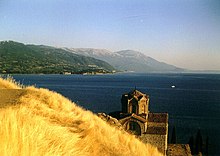
- 45.116667 24.666667 1 Curtea de Argeș — an old Wallachian fortress.
- 42.640278 18.108333 2 Dubrovnik — a medieval walled city nicknamed "The Pearl of the Adriatic"
- 43.293056 17.02 3 Makarska — the ancient gateway into the endless ocean, in southern Croatia
- 42.659507 27.724724 4 Nessebar — a small town on the sea coast, filled with medieval churches
- 41.116944 20.801944 5 Ohrid — many old churches and the Tsar Samoil's fortress
- 44.880445 15.616035 6 Plitvice Lakes — a large Croatian national park with plenty of waterfalls

Understand [ edit ]
The Balkans contain charming multicultural towns, impressive monasteries and citadels dotting the hillsides, mighty mountains sprinkled with a liberal dose of beautiful forests and pleasant lakes, and last but not least a great folk music tradition—coming off both as much joyful and melancholic as it could be—all survived various wars, if sometimes suffered a bit from the atrocities. With hundreds of kilometres of coastline on both the Adriatic and Black Seas, beachgoers won't be disappointed in this region, either.
The Balkans have been the borderland of many great powers; the Roman Empire (surviving as the Byzantine Empire until the 15th century), the Ottoman Empire , the Austro-Hungarian Empire , and the sphere of influence of the Soviet Union . From the end of World War I the Western Balkans were unified in Yugoslavia , until the country fell apart in the 1990s, with a series of wars in and between the new states. These wars were largely fought between ethnic groups, who had until then lived side by side, mingling amicably. The ethnicities are to a degree coupled with religion (Muslims and Orthodox and Catholic Christians). In the 2000s, the Balkan nations have either joined the European Union or applied for membership.
Talk [ edit ]
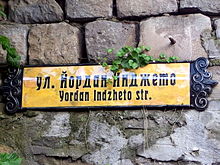
In this patchwork of countries and peoples, language learning is as complicated as one wishes to make it. At the simplest level, there are four main languages: Albanian , Bulgarian , Romanian and Serbo-Croatian. A bit of Russian also goes a long way, especially in Moldova and Transnistria .
Looking deeper you have:
- Albanian , spoken mainly in Albania , Kosovo , and parts of North Macedonia ;
- Bulgarian , spoken in Bulgaria , very closely related to Macedonian;
- Macedonian , the main language of North Macedonia ;
- Romanian , spoken in Romania and Moldova ;
Nationalists and some linguists will assert that a unified Serbo-Croatian language does not exist. However, the traveller with even a fairly strong grasp of things linguistic will find them one and the same. The distinct branches of Serbo-Croatian are:
- Bosnian , which is spoken in Bosnia and Herzegovina ;
- Croatian , which is spoken in Croatia and Bosnia and Herzegovina ;
- Montenegrin , which is spoken mainly in Montenegro ;
- Serbian , which is spoken mainly in Serbia , Bosnia and Herzegovina , Montenegro and portions of Kosovo . Serbian can be written in either Cyrillic or Latin letters.
Together with Slovene , Bulgarian and Macedonian , the Serbo-Croatian languages are members of the closely knit South Slavic language group .
Some other useful languages might be Turkish , which many people in Greece, Bulgaria, North Macedonia, and Kosovo speak, and Romani may be useful in all of the Balkan states. Most of the people, especially in cities and tourist areas speak English, and sometimes German, Italian and French.
German used to be common in the area during the heyday of the Austro-Hungarian Empire and some time afterwards but has been largely supplanted by English as a lingua franca . However, areas frequently visited by German and Austrian tourists still have many people speaking German. Russian was a compulsory second language during the communist era and may be spoken by some older people, but has declined in importance, and with the exception of Moldova has largely been supplanted by English as the foreign language of choice among younger people.
Get in [ edit ]
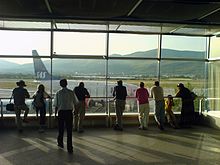
By plane [ edit ]
There are numerous international airports in the Balkans. The major airports in the region are (by country):
- Albania : Tirana
- Bosnia and Herzegovina : Sarajevo , Tuzla , Banja Luka
- Bulgaria : Sofia , Plovdiv , Varna , Burgas
- Croatia : Zagreb , Split , Rijeka , Zadar , Dubrovnik
- Kosovo : Pristina
- North Macedonia : Skopje , Ohrid
- Moldova : Chișinău
- Romania : Bucharest , Timisoara
- Serbia : Belgrade , Nis , Vrsac
Only the capital city airports have many regular flights throughout the year. Croatia's coastal airports are well served by low-cost airlines during the summer, while in winter there are only a few flights from Zagreb and Germany. Ohrid is served primarily by seasonal flights, and Serbia's airports other than Belgrade and Niš had no commercial flights as of 2018, even though they have international status.
By boat [ edit ]
- See Ferries in the Mediterranean
Get around [ edit ]
Though three of the Balkan countries ( Croatia , Bulgaria and Romania ) have joined the European Union with others on the way, none in the Balkans except Croatia have implemented the Schengen Treaty so far. This means, unlike most of the rest of Europe, border controls are still a reality in the region — rather inconvenient but a joy for the ones who want all those entry and exit stamps on their passports.
By train [ edit ]
Croatia and Romania have well developed rail networks and getting around by train is fairly convenient. Train travel in Bulgaria is a little more rough and ready. Elsewhere, the once decent networks have been neglected. While there are services and there are some stunning journeys to be had, train travel in the other countries cannot be done on a whim and requires a little forward planning but the effort is worth making.
Fares on trains within each country are very cheap. International fares are also very reasonably priced.
The Balkan Flexipass rail pass is valid in Bulgaria , Greece , North Macedonia , Montenegro , Romania , Serbia and Turkey . However given the low price of normal tickets, it may represent false economy.
By bus [ edit ]
The bus networks are extensive throughout the Balkans, and is often the fastest way to move around. More info at the Bus travel in the former Yugoslavia page.
See [ edit ]

Itineraries [ edit ]
- Brotherhood and Unity Highway — the main highway of former Yugoslavia
- Transylvania triangle train tour
Activities [ edit ]
Hiking [ edit ].
- Via Dinarica [dead link] ( Ohrid Macedonia to Postojna Slovenia)
- Mount Trebevic in Sarajevo is a great place for hiking
Winter sports [ edit ]
- Bosnia and Herzegovina was the host for the 1984 Winter Olympics, and after the 1990s, the alpine facilities are well restored. Around Sarajevo and Travnik are Olympic-grade mountains.
- In Serbia, you can ski in Kopaonik and Zlatibor .
LGBT [ edit ]
Whereas it is generally not safe to openly display gay behaviour in the Balkans (See "stay safe" section below) there are many underground alternatives which are supportive of the LGBT community.
Eat [ edit ]
The Balkan cuisines have similarities with German , Italian , Greek , Russian and Middle Eastern cuisines .
The Balkans have been divided between different nation-states, languages and religions, but many dishes and ingredients are similar across the borders. The Roman Empire , the Ottoman Empire and the Austro-Hungarian Empire have left their mark in the cuisines of the Balkans.
While Balkan cooking has not been internationalised in the same way as the Italian or Greek cuisines, the South Slavic and Albanian diaspora have brought their cuisine to other parts of Europe.
Dishes [ edit ]
Bread , meat , potatoes and cheese are ubiquitous around the Balkans. Pork is the most common meat, except among Muslims and Jews, who substitute it with beef, lamb, and poultry.
Seafood is common in Croatia, Montenegro and Albania.
A full meal on the Balkans can consist of soup and bread, followed by a meat dish (grilled meat, meat pies, etc) and cakes or confectionaries as dessert.
A meze is a buffet of small savoury dishes, of Turkish origin. Many of the dishes have analogues in the Middle East.
Ajvar is a sauce made of bell peppers and oil, which can be mild or very spicy. It is usually eaten with bread.
Ćevapi or ćevapčići is grilled ground meat, and the national dish of Bosnia and Hercegovina .
Drink [ edit ]
The Balkans have a great range of beer, wine and distilled beverages. Muslim communities usually substitute alcohol with tea and fruit juices. Coffee is common, in Turkish and Italian styles.
The regional firewater of choice is rakija (spelling varies from country to country; despite the similarity in the name it has little resemblance in taste to Turkish raki), a sweetened hard liquor (around 40%, and can be higher if home-made) common to all countries in the Balkans. Rakija is distilled out of just about any fruit grown in the region, with the most popular varieties being plum, apricot, mulberry, and grape, and is usually consumed as an aperitif.
There are excellent local beers to be had in each country in the region. Wine is also common, the peninsula being dotted by vineyards from one end to another. Serbia and Bulgaria have particularly longstanding traditions of wine-making, dating to ancient times.
Yoghurt is eaten plain, and as a condiment. Ayran (locally sometimes jogurt ) is a light drink made from yoghurt and salt.
Another local drink is boza , a thick and sweet ale made of millet, maze, or wheat with a very low (less than 1%) alcohol content and traditionally drunk in winters.
Low taxes on alcohol coupled with a laid-back lifestyle and a liberal attitude towards alcohol consumption mean even smaller towns in the region has a considerable nightlife scene. Belgrade in particular is noted as the region's party hotspot.
Stay safe [ edit ]

While the horror stories of the 1990s are long gone and the likelihood of an armed conflict in the foreseeable future is next to none, unexploded land mines as a legacy of Yugoslav Wars continue to be a safety risk, especially in Croatia , Bosnia and Herzegovina , Kosovo , and Serbia . What is worse about them is that they are where you don't expect them to be at all—they tend to be moved away from their original positions by the abundant rainfall in the region, and therefore riverbanks close to former hotbeds of conflict are especially dangerous. Don't stray too far into wilderness unless you are absolutely sure where you are heading is free of mines.
In many Balkan countries, it is not a good idea to openly display gay behavior.
The draft (propuh, promaja) is considered dangerous in the Balkans. Locals will nag you to keep doors and windows closed except during hot weather.
Go next [ edit ]
The Balkan countries are surrounded by Greece and Turkey to the south, Eastern Europe to the northeast, Central Europe to the northwest, and Italy to the west across the Adriatic, all of which have greatly influenced the regional culture.
- Has custom banner
- Has mapframe
- Has map markers
- Do listing with no coordinates
- Articles with dead external links
- All destination articles
- Outline regions
- Outline articles
- Region articles
- Regions with more than 9 subregions
- Has Geo parameter
- Articles Geo different to Wikidata
- Pages with maps
Navigation menu
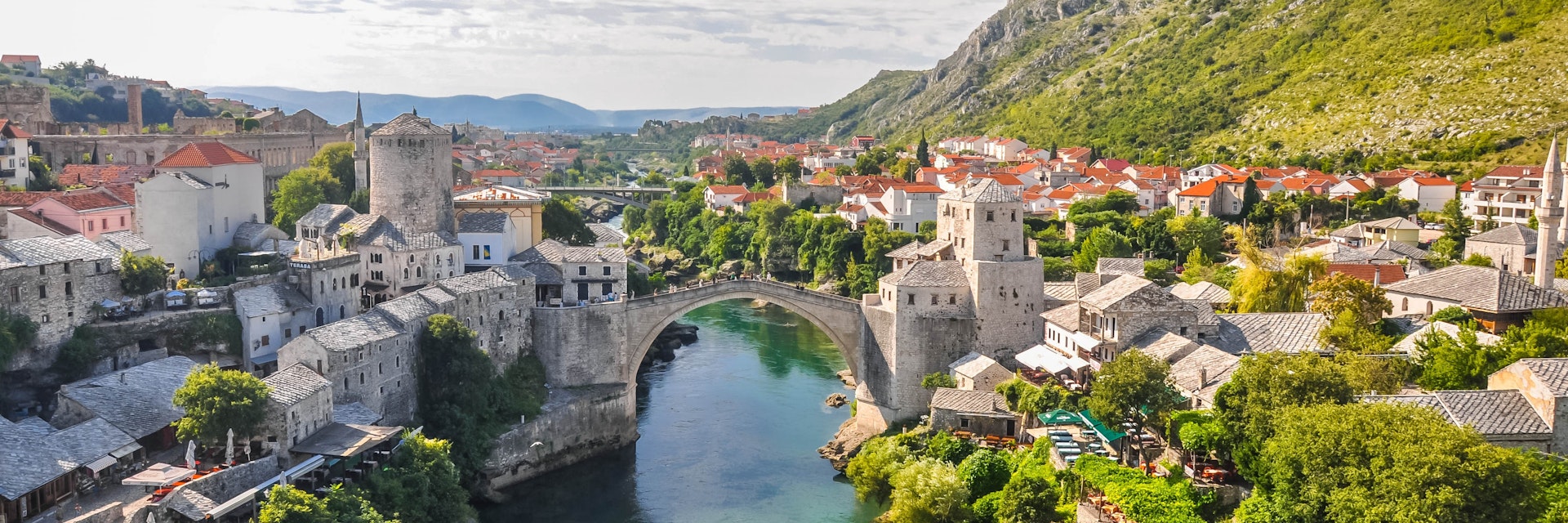
Western Balkans
Cramming in more history, culture and spectacular scenery than seems entirely reasonable for its size, the Western Balkans is one of Europe's most intriguing regions.
Latest stories from Western Balkans
Filter by interest:
- All Interests
- Adventure Travel
- Art & Culture
- Beaches, Coasts & Islands
- Food & Drink
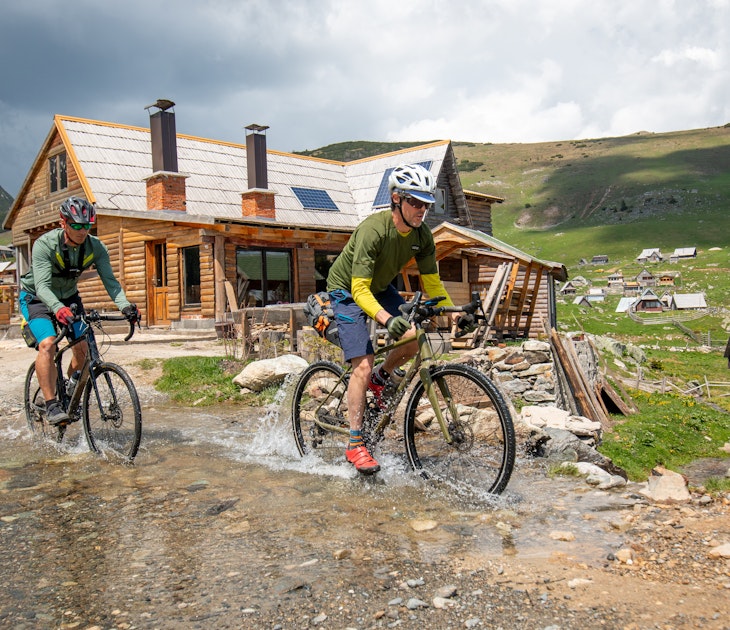
Sep 25, 2023 • 4 min read
In 2024, a new 2000km (1242-mile) route linking eight Balkan countries is a recipe for an epic cycling adventure.
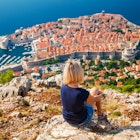
Jan 20, 2020 • 5 min read
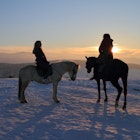
Oct 18, 2019 • 5 min read
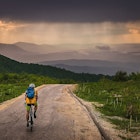
Jul 26, 2019 • 5 min read
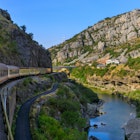
Jul 7, 2019 • 6 min read
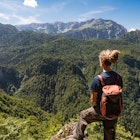
Apr 11, 2019 • 6 min read

Apr 6, 2019 • 5 min read
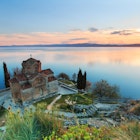
Feb 19, 2019 • 2 min read
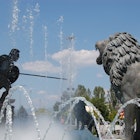
Feb 10, 2019 • 5 min read
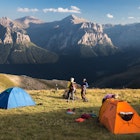
Purchase our award-winning guidebooks
Get to the heart of Western Balkans with one of our in-depth, award-winning guidebooks, covering maps, itineraries, and expert guidance.
- Bosnia Herzegovina
- The Ultimate Beginners Guide To...
The Ultimate Beginner's Guide to Travelling the Balkans

Did you know that he word ‘balkan’ means ‘mountains’ in Turkish? Well, the exact definition in Ottoman Turkish is ‘a chain of wooden mountains’, which refers to the regional Balkan, Rhodope, Diarnic Alps and the Carpathian Mountains. The area evolved very differently from Western Europe, giving adventurous travellers a different, and a somewhat less explored, experience. Here’s a short guide on the essentials for visiting the Balkans.
Where are the balkans.
Geographically, the Balkans refers to Europe’s large eastern peninsula, including Yugoslavia, Albania, Bulgaria, Romania, Moldova and parts of Greece and European Turkey. But not everyone agrees with this definition. Some identify based on historical and cultural terms , which tends just to include Bulgaria and the Former Yugoslavian nations. If you hear the name, it may refer to some or all of the countries mentioned above.

Where to Go:
There’s a rich history here too with Roman, Byzantine, Ottoman and Yugoslavian influences as well as one or two Kingdoms. Take the time to understand the complicated story to appreciate the complex Balkan past.

On a broader Balkan trip, consider Bulgaria, Macedonia, Serbia , Kosovo , Bosnia , Montenegro and Croatia. Albania is worth visiting too. Favourites include Macedonia’s Skopje and Lake Ohrid, Montenegro’s Bay of Kotor, Serbia’s Nis and, of course, Belgrade, Bosnia’s Sarajevo and Mostar, and Croatia’s Dubrovnik.
If you want to get a more off-the-beaten-path experience, check out Plovdiv in Bulgaria, Kosovo’s Pristina and Prizren, Banja Luka in Bosnia and Albania’s Tirana, Duress and Berat.

How to Travel:
The best way to get into the Balkans is by flying. European budget airlines, in particular Wizz Air, connects to many destinations. You shouldn’t have any difficulties finding an inexpensive flight to Sofia (Bulgaria), Skopje (Macedonia) and Tuzla (Bosnia).
The best way to travel within the Balkans is by either the bus or train. Getting around is quite easy, but for someone without experience, it can be frustrating and challenging. Prices aren’t as low as you may think; expect to pay at least US $10 or more for a one-way ticket.
If you’re travelling over a land border, you may or may not get an entrance or exit stamp, but this rarely causes problems.

Typical Travel Difficulties:
One of the biggest difficulties for Balkan travel is finding reliable information on timetables, costs and points of departure. Information online is hard to come by and even then, can’t be trusted. Schedules at the station may or may not be up to date.
You usually need to buy tickets from the station on either day of departure or in advance and give them to the drivers. Be aware some routes also charge to store luggage.
For the Balkan novice, this can all be daunting. But there’s a simple solution that works every time. And the majority of tourists, from my experience, fail to do it and end up frustrated. All you need to do is write the destination in either Latin or Cyrillic, the date, a time you want to depart, a price with a question mark and show them the day before. For example: ‘Sarajevo, 01/01/18, 11:00? 10KM?’
Give them the paper and a pen. If the time and price are wrong, they’ll change it, and you have your answer. Ask if they speak English, if yes, be as direct as possible. If not, rely on your paper.
Safety Tips:
Is it safe to travel to the Balkans? The answer is yes. Despite the negative connotations the region has for violence and conflict, the Balkans aren’t at war anymore. Whereas ethnic tensions remain, especially in the Former Yugoslavia, and protests are common, you’ll rarely face difficulties.
Regarding safety, watch out for gypsies, who often beg and follow foreigners around. Also, be wary of scams in touristy areas.
But don’t let this deter you, the Balkans are safe. The kind of attacks that are becoming more common in Western Europe have not reached this area. And you’ll find warmth and hospitality from the people you meet.

A Balkan Experience:
The Balkan experience is different from Western Europe, but travelling in the region is rewarding because of the history, culture and relatively affordable travel costs. You’ll quickly fall in love with the region.
Since you are here, we would like to share our vision for the future of travel - and the direction Culture Trip is moving in.
Culture Trip launched in 2011 with a simple yet passionate mission: to inspire people to go beyond their boundaries and experience what makes a place, its people and its culture special and meaningful — and this is still in our DNA today. We are proud that, for more than a decade, millions like you have trusted our award-winning recommendations by people who deeply understand what makes certain places and communities so special.
Increasingly we believe the world needs more meaningful, real-life connections between curious travellers keen to explore the world in a more responsible way. That is why we have intensively curated a collection of premium small-group trips as an invitation to meet and connect with new, like-minded people for once-in-a-lifetime experiences in three categories: Culture Trips, Rail Trips and Private Trips. Our Trips are suitable for both solo travelers, couples and friends who want to explore the world together.
Culture Trips are deeply immersive 5 to 16 days itineraries, that combine authentic local experiences, exciting activities and 4-5* accommodation to look forward to at the end of each day. Our Rail Trips are our most planet-friendly itineraries that invite you to take the scenic route, relax whilst getting under the skin of a destination. Our Private Trips are fully tailored itineraries, curated by our Travel Experts specifically for you, your friends or your family.
We know that many of you worry about the environmental impact of travel and are looking for ways of expanding horizons in ways that do minimal harm - and may even bring benefits. We are committed to go as far as possible in curating our trips with care for the planet. That is why all of our trips are flightless in destination, fully carbon offset - and we have ambitious plans to be net zero in the very near future.

Guides & Tips
21 essential phrases you'll need in bosnia.

See & Do
Top things to see and do in brcko, bosnia.

How to Spend Two Weeks in Bosnia

How to Spend One Week in Bosnia

Places to Stay
The best hotels to book in jahorina, bosnia and herzegovina.

7 Great Trips to Take in the Balkan Peninsula

Srebrenica: How to Visit the Site of Bosnia's Biggest Genocide

Food & Drink
The 21 best dishes to eat in bosnia and herzegovina.

Meet Bosnians Who Lived Through the Siege of Sarajevo

Travnik: Exploring Bosnia's Oriental Hidden Village

The Best Hotels to Book in Medjugorje, Bosnia and Herzegovina

Top Things to See and Do in Travnik, Bosnia
Culture trip spring sale, save up to $1,100 on our unique small-group trips limited spots..

- Post ID: 1625205
- Sponsored? No
- View Payload
- Travel Guides Plan your adventure
- Destinations Our favourite places
- Tours Book a trip
- Travel Companies Independent specialists
- Travel Guides
- Destinations
- Travel Companies
Europe’s forgotten wonderland
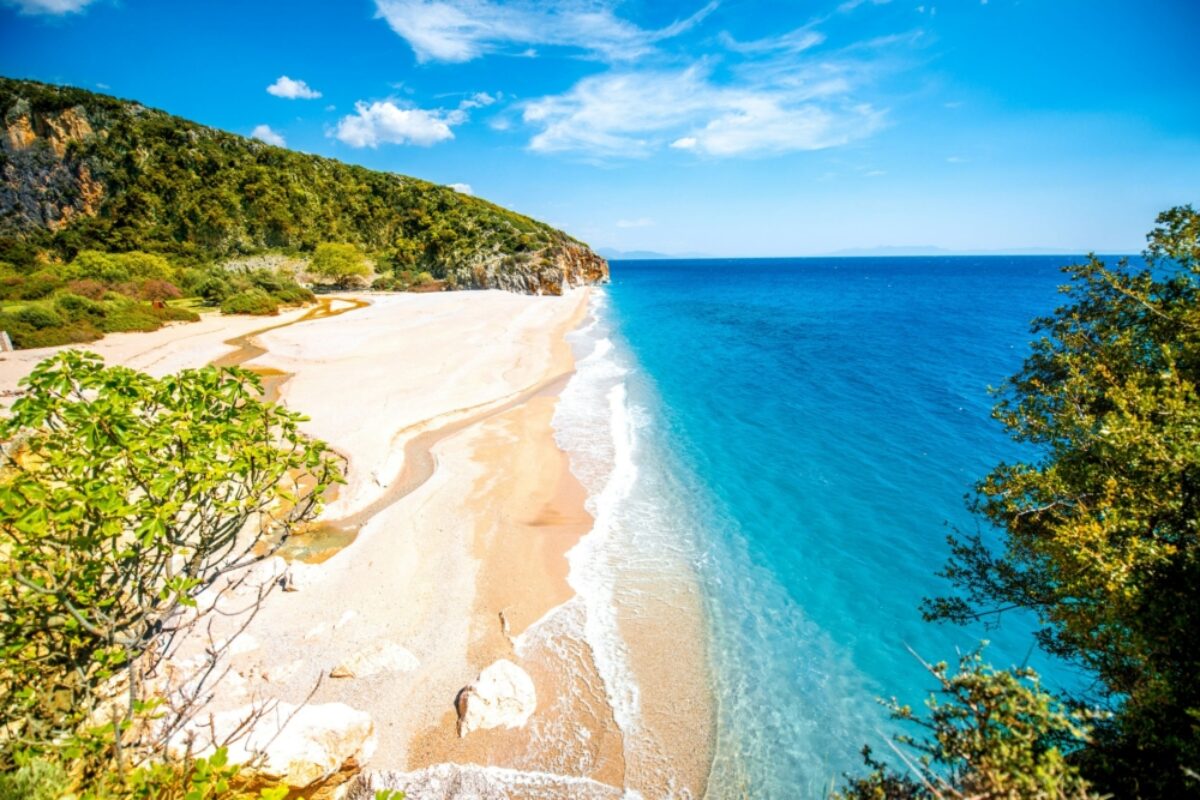
- Itineraries
Contrary to popular opinion, the Balkans is so much more than just the countries of the former Yugoslavia. Surrounded by water, the Balkan peninsula is made up of Croatia, Montenegro, Slovenia, Serbia, Albania, North Macedonia, Kosovo, Bosnia and Herzegovina, Bulgaria and Romania. There’s a lot to explore.
And a lot to see. The Western Balkans are rightly lauded for the beautiful beaches of Croatia and Montenegro, but the region is also worth visiting for the mountains that run down its spine, its mix of historic churches, mosques and monasteries, and for the warm welcome and delicious food of its people.
For while Croatia has hogged the international travel limelight, many of the other Balkan countries are still relatively unvisited. Montenegro is home to beaches just as beautiful; Albania has mountain peaks and Ottoman towns, and Slovenia’s Ljubljana can rival anything Dubrovnik can do. The Balkans are beautiful and ready for visitors.
Montenegro's best beaches
An essential guide to montenegro's most beautiful beaches and coastline.
Montenegro is named after the soaring limestone peaks of its mountainous interior. The Venetians called it Monte Negro (meaning "Black Mountain") in the 11th century, and the local inhabitants translated this literally, so they now proudly refer to their country as Crna Gora. But for modern-day visitors, it is the limpid turquoise waters of the Montenegrin coast, with its Mediterranean climate affording long balmy summers, which are the top draw... read more
Jane Foster
Balkans travel guides, europe walking holidays, an expert guide to the best hikes and walks in europe.
Paul Bloomfield
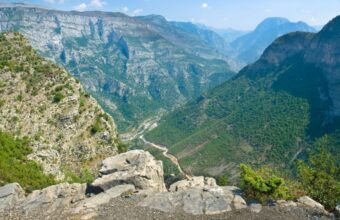
Albania Off-The-Beaten Track Itinerary
15-day walking holiday to albania and kosovo.
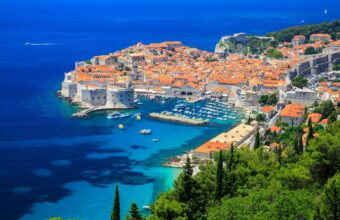
West Balkans in a week
Croatia, montenegro and albania highlights.
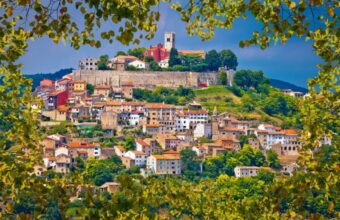
Istria’s coastlines and hilltop villages
Explore istria’s walking trails for orchids and architecture.
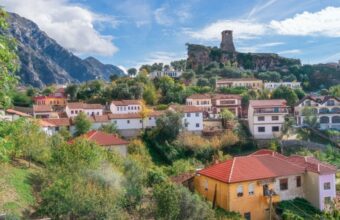
Albania and Kosovo ~ Walking in Illyria and Epirus
Exploring albania’s capital and surroundings.
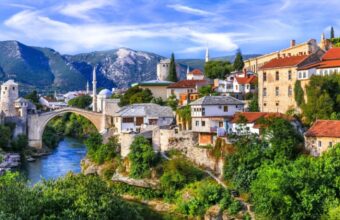
Sarajevo and surroundings
Bosnia’s historic cities and mountain villages.
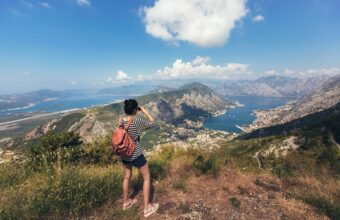
Mountain walks in Montenegro
Exploring montenegro’s national parks.
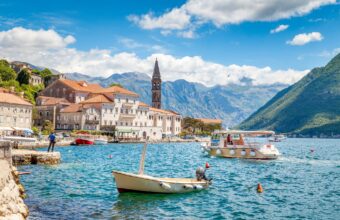
Exploring Montenegro’s coastline
National parks, cetinje and kotor bay.
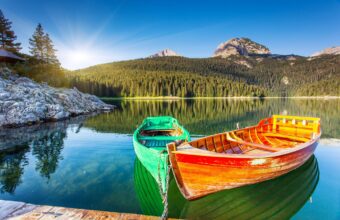
Cycling Montenegro’s canyons and coastlines
Active adventures in montenegro.
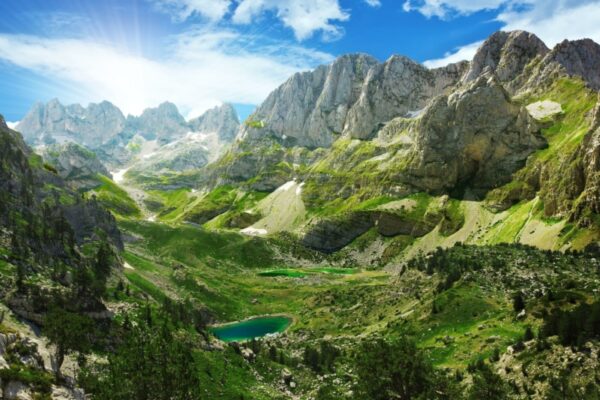
Europe’s best-kept secret
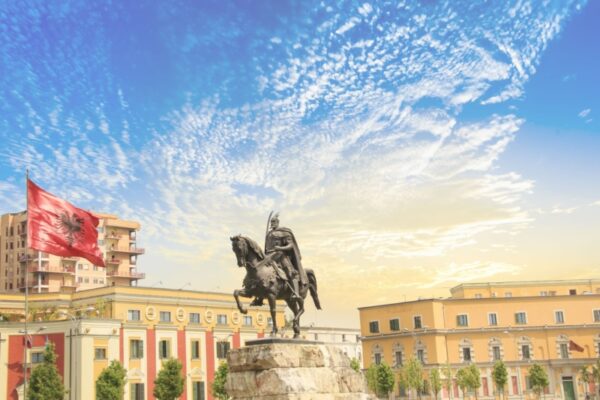
The Accursed Mountains
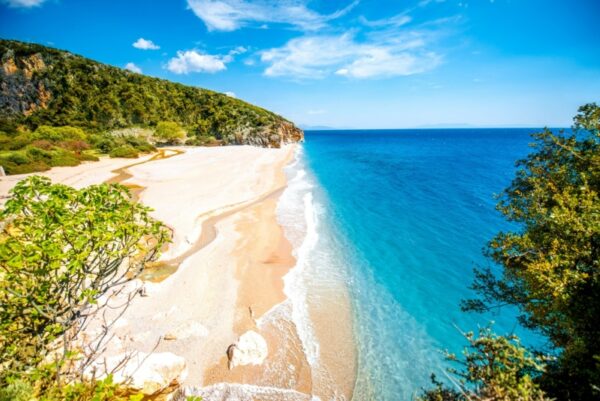
Albanian Riviera
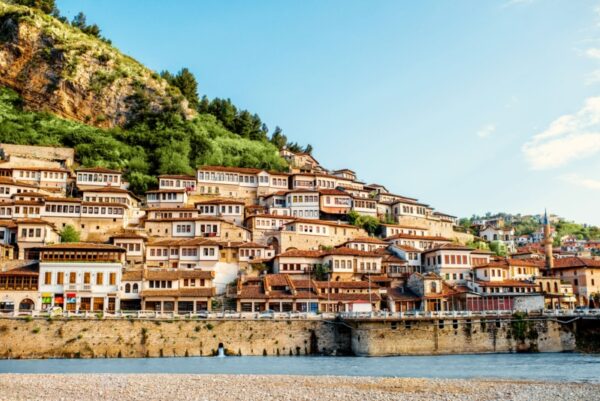
Gjirokastra and the Drino Valley
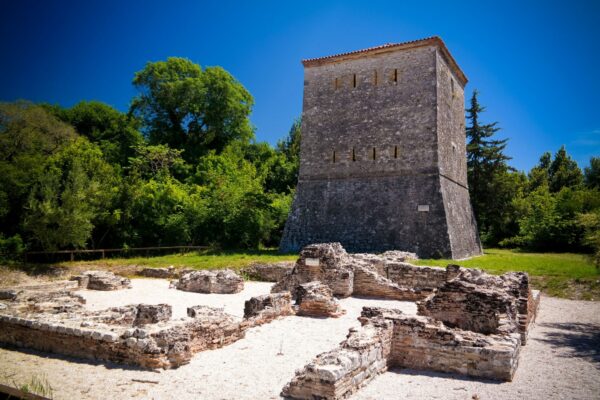
Butrint National Park
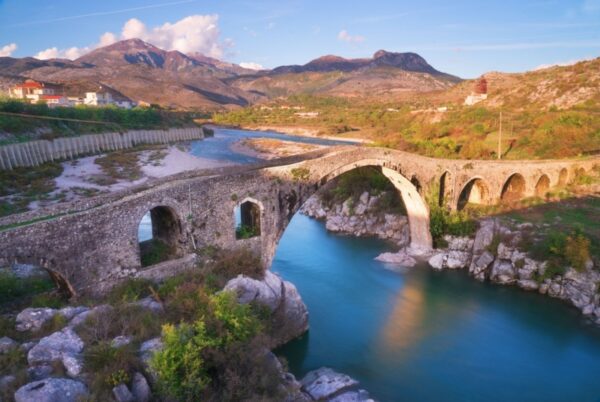
Bay of Vlore
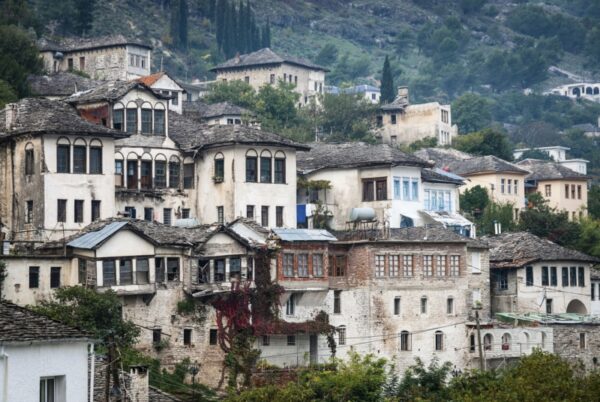
Gjirokastra
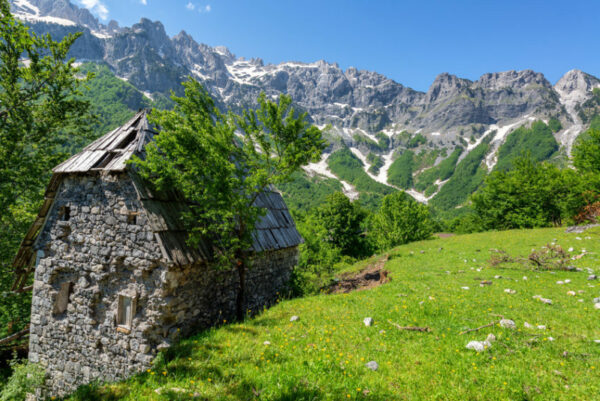
Valbona Valley
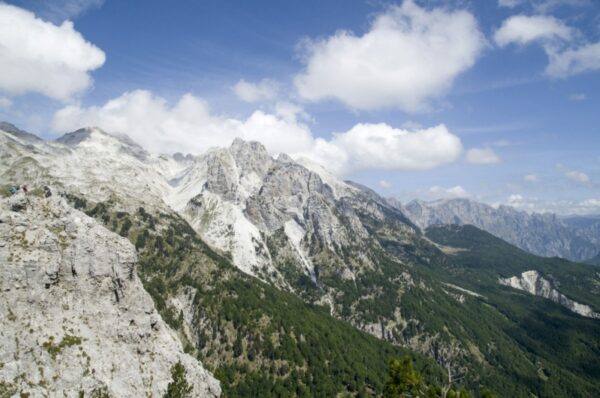
Mount Jezerca
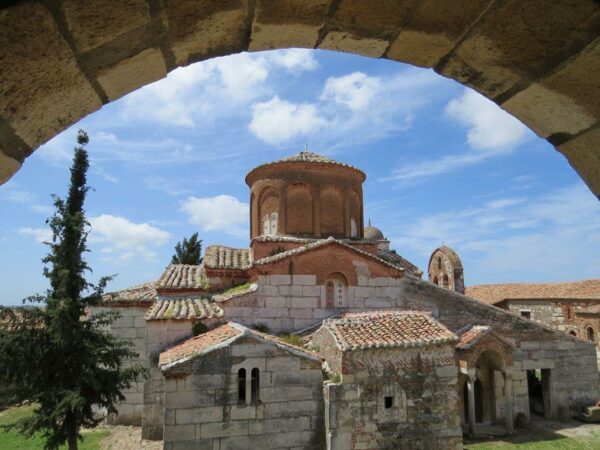
Bosnia and Herzegovina
The lesser-visited, more-beautiful balkans.
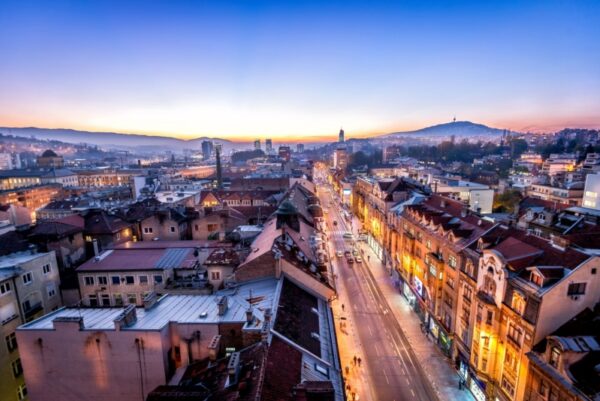
Sutjeska National Park
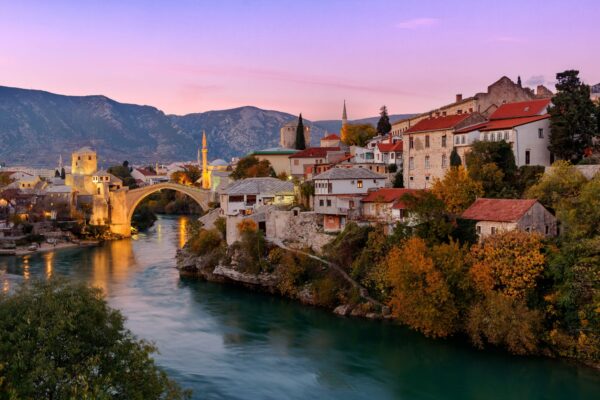
Hutovo Blato Nature Reserve

Blidinje Nature Park
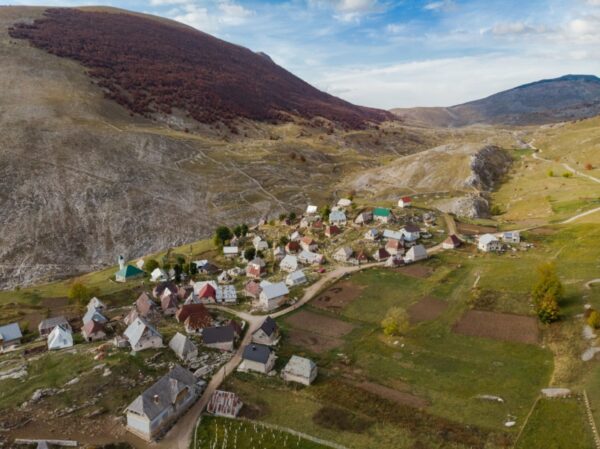
Bjelašnica ski resort
Bijambare caves, kravice falls.
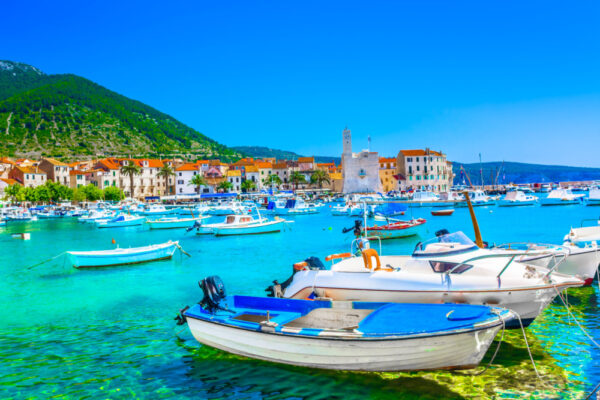
Dazzling coastlines
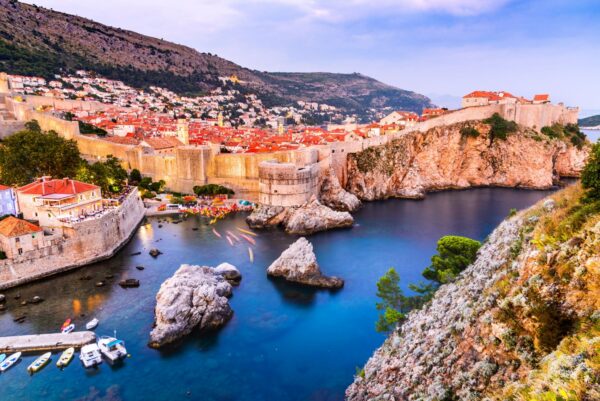
Konavle Valley
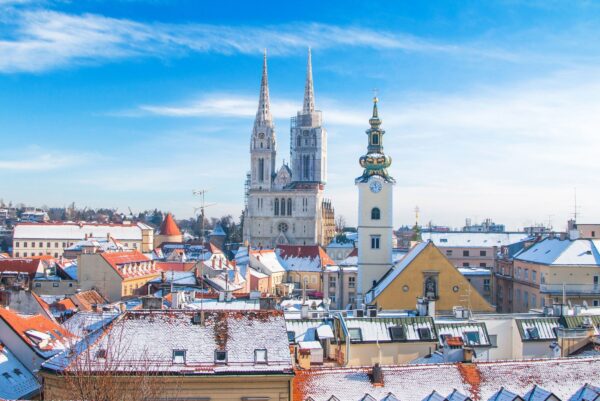
A new dawn in the Balkans
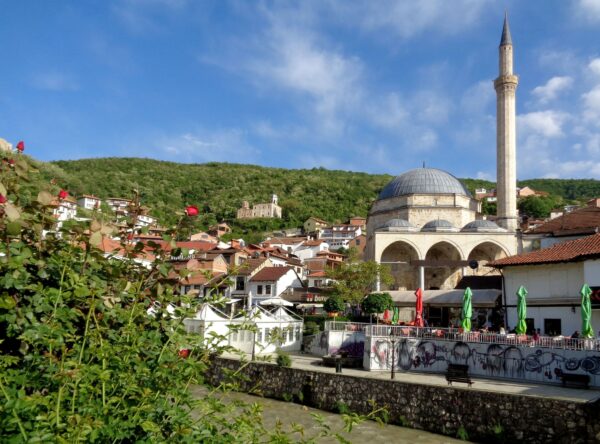
Reka e Allages
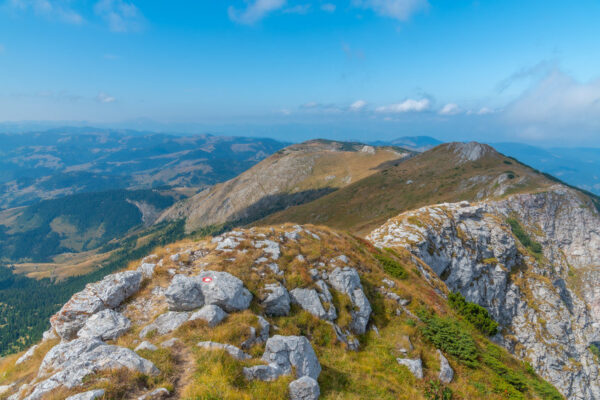
Ancient towns cut into majestic mountains
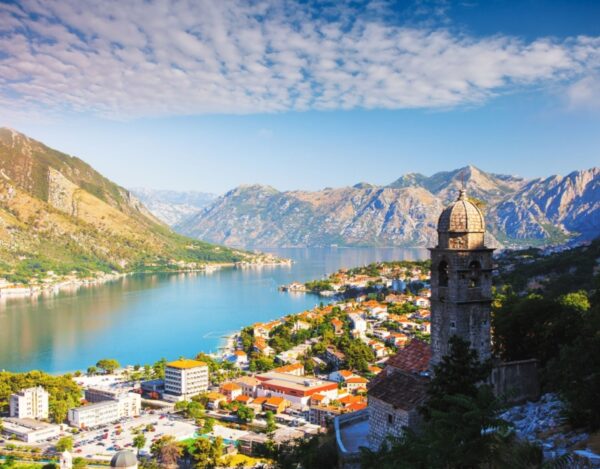
Bay of Kotor
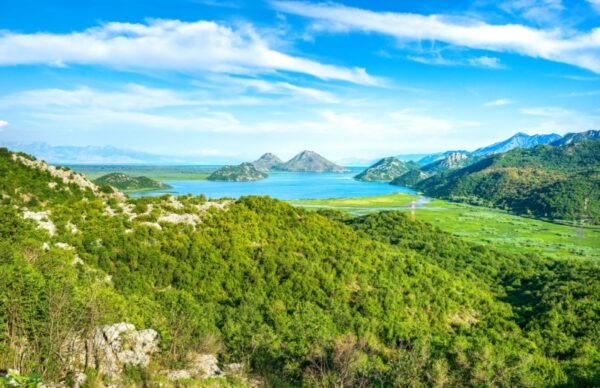
Lake Skadar National Park
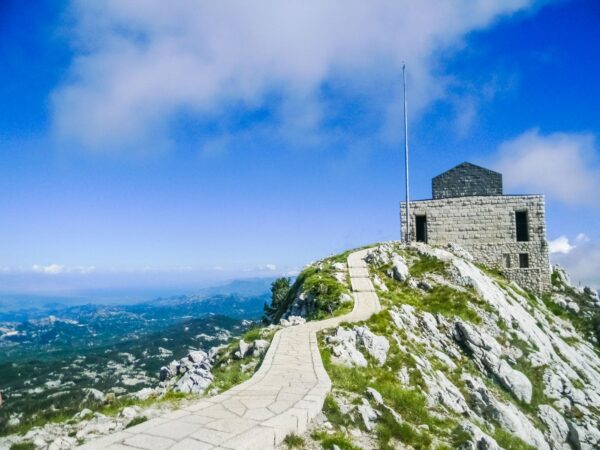
Lovćen National Park
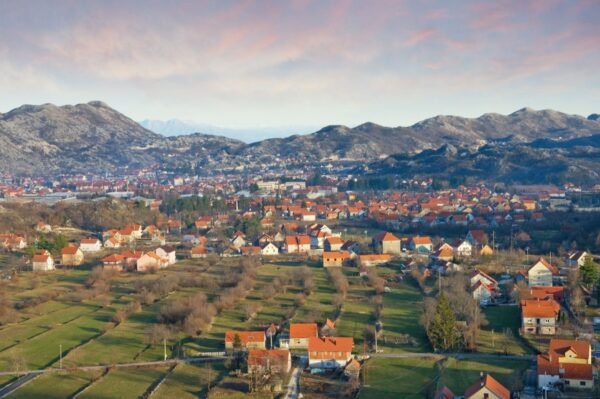
Biogradska Gora National Park
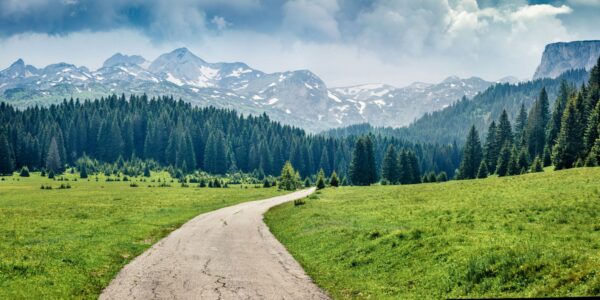
Durmitor National Park
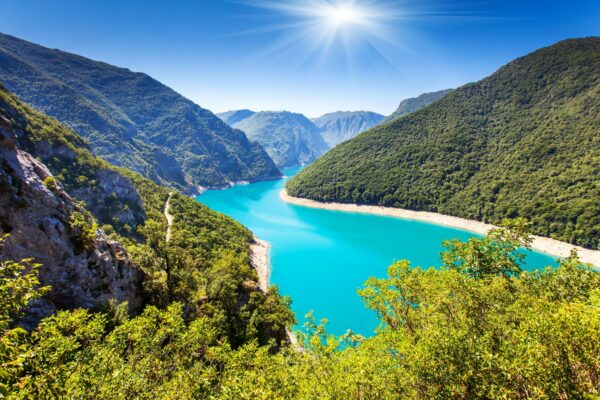
Tara Canyon
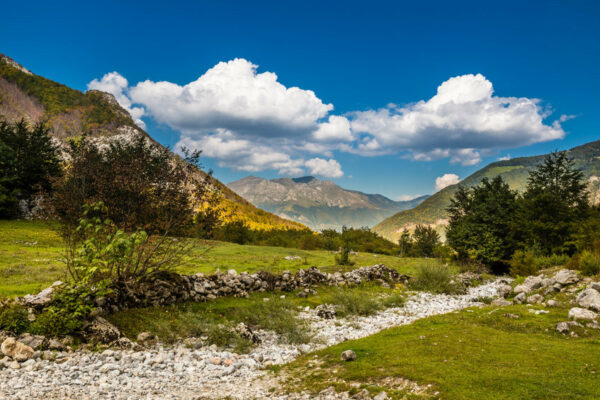
Prokletije National Park
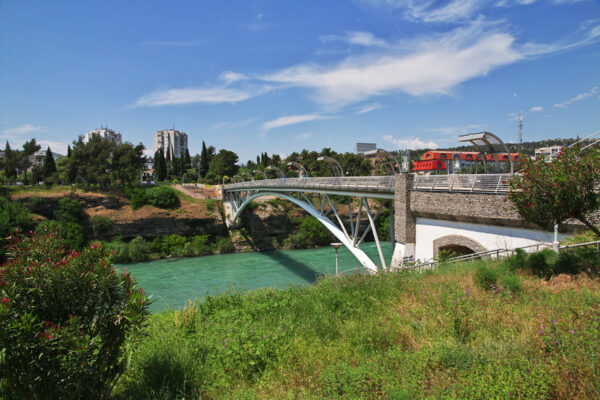
Budva Riviera
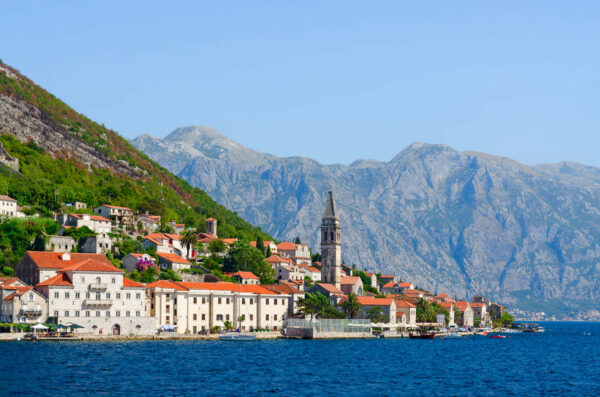
Julian Alps
Transylvania, places to go in balkans.

Balkans Tours
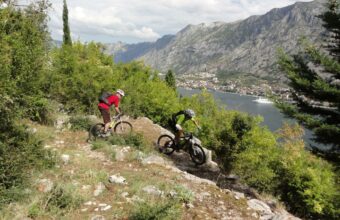
Mountain Biking in Montenegro
Explore the bay of kotor and lake skadar.
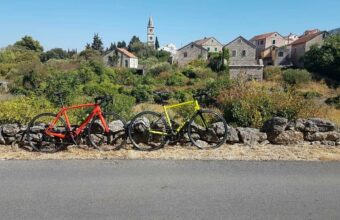
Balkan Express
Explore montenegro, albania, bosnia & herzegovina and croatia by bike.
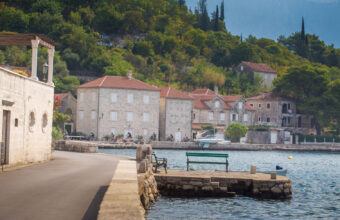
Cycling the Eurovelo 8
Travel through croatia, montenegro and albania.
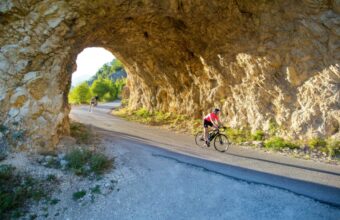
Mountains and Coastlines
Explore montenegro's coast and mountains by bike.

Montenegro and Albania by Bike
Cycle through historical towns and explore lake skadar.
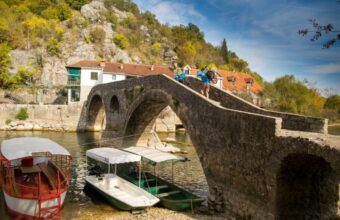
Cycling the Montenegrin Coast
Exploring montenegro’s coast and lake skadar, balkans travel companies.
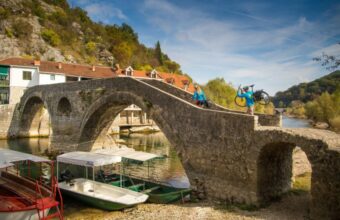
Adventures in Montenegro & the Western Balkans
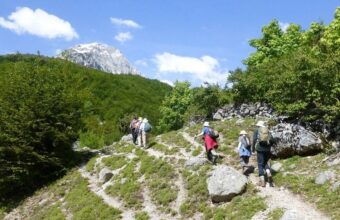
Kudu Travel
Cultural walking tours in the balkans.
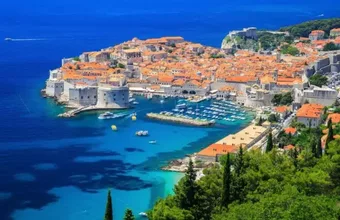
Meet Bosnia Tours
Guided tours of sarajevo and bosnia.
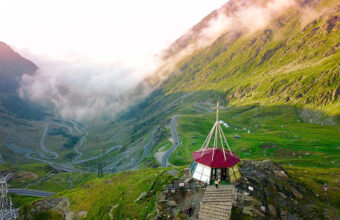
Your local expert for Romania
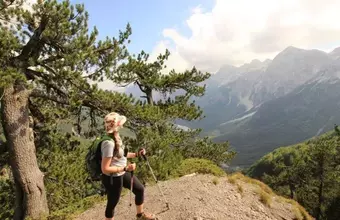
Undiscovered Balkans
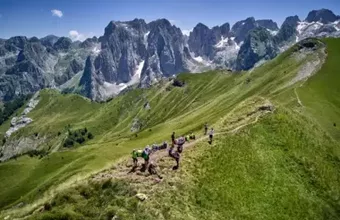
Exciting Montenegro
Active tours beyond the ordinary, your adventure awaits, speak to an expert about this trip, why horizon guides.

Impartial travel guides
Our guides are written by the leading experts in their destinations. We never take payment for positive coverage so you can count on us for impartial travel advice.

Expert itineraries
Suggested itineraries and routes to help you scratch beneath the surface, avoid the tourist traps, and plan an authentic, responsible and enjoyable journey.

Specialist advice
Get friendly, expert travel advice and custom itineraries from some of the world's best tour operators, with no spam, pressure or commitment to book.
Our guides are 100% impartial and are written by independent, professional travel journalists. We make money by charging carefully-screened travel companies to list their business on our website. Our advertisers have no influence on our editorial content and we never accept payment for positive coverage.
Read more about how we work and what we believe in here .
- Travel guides
- Work with us
Sitemap , Privacy Copyright © 2024 Horizon Guides
The resource for Travel Gear Reviews
Balkans Travel Guide: A One Week Itinerary For First Time Visitors
January 30, 2020 By Thither Staff Leave a Comment
Where are the Balkans?
When’s the best time to visit the balkans, one week balkans itinerary.

If you’re confused about the Balkans and are having difficulty naming the countries included in the Balkan states, you’re not alone. Even scholars aren’t reaching a consensus in defining the Balkans.
But most agree that the Balkans include Albania, Bosnia & Herzegovina, Bulgaria, Croatia, Kosovo, North Macedonia, Moldova, Montenegro, Romania, Serbia, and Slovenia.
Located in the Balkan Peninsula, in the southeastern side of the European continent, the Balkans according to Britannica are bordered by Italy (in the northwest), Hungary (in the north), Moldova and Ukraine (in the north and northeast), and Greece and Turkey (in the south). It has, arguably the best coastlines in Europe – Adriatic Sea (in the west), Ionian Sea (in the southwest), and Black Sea (in the east).
Countries like Bosnia & Herzegovina, Croatia, North Macedonia, Montenegro, Serbia (including Kosovo and Vojvodina), and Slovenia were the states of former Yugoslavia. These former states and now independent countries are referred to as the Slavic speaking or Slavic nations. Bulgaria is also one of the Slavic speaking countries.

It depends on which part of the Balkans you’re going to. The climate varies between the mountains and the coasts. Also, there’s a difference between the northern and the southern regions. Countries like Romania, Serbia, and Moldova in the north will be much colder than the southern states, Albania and North Macedonia.
For example, in December in Bucharest (the capital city of Romania), the temperature averages around 28 to 39 degrees Fahrenheit. While in Tirana, Albania, it averages approximately 36 to 55 degrees Fahrenheit.
From our experiences, late September to November and April to mid-June are the best times to visit. Known as the shoulder season, it will be cheaper to visit and has fewer tourists. And if you don’t like the heat, avoid the summer months.

Picture this: Within minutes in Sarajevo’s old town, you can walk from the Turkish-style cobblestone streets with cafes serving coffee in copper coffee sets to the pastel-colored Austro-Hungarian buildings housing pubs, pastry shops and restaurants that resemble those in Vienna.
The Balkans offer variety – nature, culture, history, food, and possibly the best coffee. Your one week Balkans trip should include Sarajevo, Mostar, Dubrovnik, Herceg Novi, and Kotor. You’ll cover five destinations in three countries.
Start your tour in Sarajevo, the capital of Bosnia & Herzegovina and head south to Dubrovnik, Croatia, Herceg Novi and Kotor in Montenegro.
Your day by day one week Balkans itinerary would look like this:
Day 1: Fly into Sarajevo, Bosnia
It’s hard to believe that a little over 20 years ago, Sarajevo was a war-torn city. It was nothing like what it is today, a city filled with coffee shops, restaurants, bars, well-stocked shops. You might have heard of The Siege of Sarajevo from early April 1992 to 1996. Sarajevo was under siege for four years. Much has changed, but no one can erase the history and scars of the past.
Scars remain in Sarajevo.
Blood-like stains on sidewalks and streets, known as Sarajevo roses, are visible and left to be painted over to remind locals and tourists of the horrors of war.
On your arrival in Sarajevo, go to Baščaršija, the old town built by the Ottomans in the 15th century. Try traditional Bosnian coffee, enjoy the sweets that are sold in almost every corner of the ancient city, and eat cevapcici (finger-sized sausages without casings served with flatbread).
Also include a stop at the Gazi Husrev Bey’s Mosque or Bey’s Mosque. Then walk towards the Austro-Hungarian-influenced part of the old town to see the “Sarajevo Meeting of Cultures” inlaid marker, the spot that merges the east and west of Sarajevo.
Check out the Sacred Heart Cathedral and discover the Sarajevo roses on the sidewalks. To us, this is one of the most serene houses of worship in Eastern Europe. Inside, you can feel the presence of peace and harmony. It’s quite ironic, given the outside walls still have bullet holes.

Day 2: Sarajevo
You have a full day in Sarajevo. Since you’ve already seen the old town and tried Bosnian coffee there, here are 3 more must-dos in Sarajevo:
Visit Tunnel Museum and Tunnel of Hope – the locals secretly dug this tunnel to avoid sniper fire in the Serbian-controlled part of town. That was how they accessed their daily supplies like medicine and food.
Visitors can walk a tiny portion of the tunnel (Tunnel of Hope) and visit the museum.
Take a 7-minute ride on a cable car to the top of Mt. Trebevic to enjoy views of the city and to walk on the abandoned Sarajevo Olympics Bobsleighs and Luge Track. The concrete track is covered with over 4,000 feet (1,300 meters) of graffiti. Mt Trebevic was a famous venue for the 1984 Winter Olympics in Sarajevo. The cable system was closed for 26 years and reopened on April 8, 2018.
Shop for copper souvenirs like coffee and pepper grinders, copper coffee sets, pots, and pans at Kazandžiluk Street. You can get many handmade copperware souvenirs in Sarajevo, and according to our guide, this is the street where you’ll find the best copper products.

Day 3: Mostar
On the following morning, take a 2.5 hour bus from Sarajevo to Mostar. You can get your tickets through omio.com. The cheapest at the time of writing was $6 per way.
Mostar bus station is about a 15-minute walk from the iconic Stari Most (Old Bridge). Enjoy Mostar’s old bridge, the old bazaar and small-town feel. The most exciting thing to do when in Mostar is to see brave men jumping off the arch bridge into Neretva River.
Day 4: Dubrovnik, Croatia
There’s only one bus that leaves daily from Mostar to Dubrovnik. The bus leaves at 12:30 pm and arrives in Dubrovnik at 3:50 pm. At the time of writing, a one-way ticket was $18 per person.
The 3 hour 20 minutes bus ride provides views of the coast, islands, and Dubrovnik old town. Remember to get a seat at the left for the scenery. If you’re pressed for time, you won’t have to get on the cable car in Dubrovnik to enjoy the magnificent views since you already saw Dubrovnik from the hills as your bus drove into town.
Day 5: Dubrovnik
Known as “Pearl of the Adriatic,” Dubrovnik, a coastal town in Croatia, has beautiful beaches, Game of Thrones filming locations, and the most well-preserved medieval city walls and forts in the world.
Here are five must-dos in Dubrovnik:
- Walk the city walls and forts.
- Explore stone monasteries, churches, palaces, homes, marble-paved squares, and steep and narrow cobbled alleys inside the old town.
- Eat seafood.
- Visit Lokrum Island – an under 15 minutes ferry ride from Dubrovnik’s old town’s port. Lokrum has the largest park in Dubrovnik where you can see peacocks roaming on the island.
- Fans of Game of Thrones must join a guided Game of Thrones tour and discover all the behind the scene secrets, filming locations and more.
Day 6: Kotor, Montenegro
There are 4 bus services per day from Dubrovnik to Kotor, Montenegro. It’s a 2.5-hour ride. The cheapest and fastest is usually the 11 am departure from Dubrovnik. At the time of writing, the one-way bus ticket was $24 through Omio.
Kotor’s Stari Grad (old town) is similar to Dubrovnik. The only difference is the size. Stari Grad is slightly smaller in Kotor. Built between the 12th and 14th centuries, this triangular-shaped fortified town on the eastern coast of the Adriatic Sea served as an important port city during the Venetian era.
Kotor is cat-friendly, you’ll see many cats in the old town, and there’s even a cat museum.
When in Kotor, you must do these five things:
- Hike to the top of St. John Fortress and enjoy panoramic views of the Bay of Kotor and see the magnificent red-roofed medieval buildings. This is not an easy hike. You’ll need to wear comfortable shoes with excellent traction and be reasonably fit. There are 1,350 steps to the top.
- Check out the Venetian-inspired architecture
- Wander the narrow cobblestone streets and squares
- Join a half-day tour to Perast, the baroque town just outside Kotor. When in Perast, hire a small boat to take you to Our Lady of the Rocks church and St George Barrier Island.
- Visit Kotor’s open-air market – located by the Sea Gate, just outside the town walls. The market starts at 8 am and ends at 2 pm from Monday to Saturday. See fresh vegetables, fruits, olives, cheeses, bread, and more.
Day 7: Leave Kotor for Home

Have you been to the Balkans? Let us know, leave a comment below!
Recent Posts
- At Home? 10 Ways to Commemorate Your Past Trips
- Noise Isolating Bluetooth Earbuds: ISOtunes FREE Review
- 10 Eco Friendly T Shirts for the Sustainable Traveler
- 15 Best Travel Board Games for All Ages
- Solo New York Restore Tote Review: An Eco Friendly Bag for Urban Travelers
Leave a Reply Cancel reply
Your email address will not be published. Required fields are marked *
Save my name, email, and website in this browser for the next time I comment.
Balkans 10-Day Itinerary: Discover Europe’s Undiscovered Treasures
Exploring the balkans: a comprehensive 10-day journey through europe’s undiscovered treasures.
Author –
Jonathan Howe
The Balkans: The Most Undervalued Destination in Europe?
The Balkans, a region that has long been overshadowed by Western European destinations, is finally receiving the recognition it deserves. With its rich history, diverse culture, stunning landscapes, and warm hospitality, the Balkan region is becoming a sought-after destination for travelers seeking an off-the-beaten-path experience.
Table of Contents
The Appeal of Balkans Tourism
From the breathtaking coastlines and islands of the Balkans Sea to the picturesque old towns and majestic mountain ranges, Balkans tourism offers something for everyone. In this ultimate 10-day travel guide, we will take you through the must-visit destinations in the Balkans, with a special focus on Montenegro and its many attractions.

Ultimate 10-Day Balkan Travel Guide
Where is the Balkans?
The balkans region: geography and countries.
The Balkans, also known as the Balkan Peninsula, is located in Southeastern Europe, encompassing a diverse range of countries. It includes Albania, Bosnia and Herzegovina, Bulgaria, Croatia, Greece, Kosovo, Montenegro, North Macedonia, Romania, Serbia, and Slovenia. The region is bordered by the Adriatic Sea to the west, the Ionian Sea to the southwest, the Aegean Sea to the south, and the Black Sea to the east.
The Balkans Sea and Coastal Landscapes
The Balkans Sea, which is actually a combination of the Adriatic, Ionian, and Aegean seas, offers some of the most breathtaking coastal landscapes in Europe. The region’s turquoise waters, hidden coves, and pristine beaches are perfect for sun-seekers, while its charming coastal towns offer a unique blend of history, culture, and natural beauty.
Top Balkan Islands to Explore
Hvar: croatia’s sun-kissed island.
Hvar, known as Croatia’s premier island destination, boasts an enticing mix of natural beauty, historical sites, and a vibrant nightlife. Explore the island’s medieval town, Hvar Town, with its imposing fortress, picturesque harbor, and ancient streets. Don’t forget to visit the serene lavender fields and idyllic beaches that are perfect for soaking up the sun.
Korčula: A Croatian Island Rich in History
Korčula, often dubbed as “Little Dubrovnik,” is a must-visit for history enthusiasts. The island’s main town, also named Korčula, is a medieval walled city with a rich architectural heritage. Be sure to visit the alleged birthplace of the famous explorer Marco Polo and the stunning St. Mark’s Cathedral.
Thassos: Greece’s Emerald Island
Thassos is an alluring Greek island known for its verdant landscapes, pristine beaches, and fascinating archaeological sites. Visit the ancient agora and the Archaeological Museum to delve into the island’s rich history, or simply relax on one of its many unspoiled beaches, such as Paradise Beach or Golden Beach.
The Allure of Balkans Travel: Culture, History, and Nature
The cultural mosaic of the balkans region.
The Balkans is a melting pot of cultures and traditions, offering travelers a unique insight into the region’s fascinating history. Montenegro, in particular, is a prime example of this cultural diversity, with its blend of Orthodox, Catholic, and Islamic influences. Wander through the ancient streets of Kotor, where centuries-old churches and palaces stand testament to the country’s rich heritage.
Uncovering Ancient History in the Balkans
The Balkans is a treasure trove of ancient history, with numerous archaeological sites and historical monuments scattered throughout the region. In Montenegro, don’t miss the opportunity to explore the UNESCO World Heritage Site of Kotor, with its well-preserved medieval architecture and fortifications. Another must-visit destination is the ancient Roman city of Doclea, located near Montenegro’s capital, Podgorica, which boasts impressive ruins and artifacts.
The Diverse Natural Beauty of the Balkans
The Balkans’ varied landscapes, from pristine coastlines to rugged mountains, provide a stunning backdrop for outdoor adventures. Montenegro, known as the “jewel of the Balkans,” offers some of the region’s most breathtaking scenery. Discover the dramatic beauty of Durmitor National Park, with its soaring peaks, glacial lakes, and dense forests, or embark on a thrilling rafting adventure along the Tara River, Europe’s deepest canyon.
Your Ultimate Balkans Travel Guide
Preparing for your trip to the balkans, visa requirements and travel documents.
Before embarking on your Balkans adventure, ensure you have the necessary travel documents and visas. Most Balkan countries, including Montenegro, are part of the visa-free Schengen Area for short stays, but it’s essential to check the specific requirements for each destination.
Best Time to Travel Balkans
The ideal time for a Balkans trip depends on your interests and preferred activities. For beach lovers and island hoppers, the summer months of June to August are perfect, while spring and autumn offer more pleasant temperatures and fewer crowds for those interested in sightseeing and outdoor pursuits.
Local Customs and Etiquette
As you explore the Balkans, be mindful of local customs and etiquette. Respect religious sites, dress modestly in conservative areas, and learn a few basic phrases in the local language to show appreciation for the local culture.
Essential Travel Tips for a Memorable Balkan Itinerary
Getting around: transportation options in the balkans.
The Balkans offers a range of transportation options, from buses and trains to ferries and car rentals. For more flexibility and convenience, consider renting a car, especially when exploring Montenegro’s stunning landscapes and coastal towns.
Accommodations in the Balkans
The region boasts a wide variety of accommodations, from budget-friendly hostels to luxury hotels and charming guesthouses. In Montenegro, consider staying in a traditional stone house or a boutique hotel to fully immerse yourself in the local atmosphere.
Safety and Health Tips for a Trouble-Free Trip
The Balkans is generally safe for travelers, but it’s always wise to take basic precautions, such as avoiding poorly lit areas at night and keeping your belongings secure. Make sure you have comprehensive travel insurance and familiarize yourself with local health and safety guidelines.
The Perfect 10-Day Balkans Itinerary
Day 1-2: discovering the charm of dubrovnik, croatia.
Begin your Balkans adventure in the enchanting city of Dubrovnik, known for its stunning medieval architecture and ancient city walls. Stroll along the Stradun, visit the historic Rector’s Palace, and take a cable car ride for panoramic views of the city and the Adriatic Sea.
Day 3-4: Coastal Wonders of Kotor, Montenegro
Travel to Kotor, Montenegro, and explore its UNESCO-listed Old Town, characterized by its well-preserved medieval architecture and maze-like cobblestone streets. Visit the historic St. Tryphon’s Cathedral, and climb the city walls to the San Giovanni Fortress for a breathtaking view of the Bay of Kotor.
Day 5-6: The Ancient Heritage of Tirana, Albania
Next, head to Tirana, Albania’s vibrant capital, where you can explore the colorful streets, visit the historic Skanderbeg Square, and learn about the country’s history at the National History Museum. Don’t miss a trip to the ancient city of Kruja, just a short drive from Tirana, to visit its historic castle and the Skanderbeg Museum.
Accommodation in Tirana
Day 7-8: the macedonian jewel of ohrid.
Continue your journey to Ohrid, North Macedonia, a UNESCO World Heritage Site known for its impressive collection of ancient churches and monasteries. Visit the iconic Church of St. John at Kaneo, which overlooks the crystal-clear waters of Lake Ohrid, and explore the fascinating archaeological site of Plaošnik.
Day 9-10: Sofia, Bulgaria’s Vibrant Capital
Conclude your Balkans itinerary in Sofia, Bulgaria’s bustling capital, where you can admire the stunning Alexander Nevsky Cathedral, stroll through the charming Vitosha Boulevard, and discover the city’s rich history at the National Archaeological Museum.
Balkan Tour Itinerary: Group Tours vs. Independent Travel
Pros and cons of group tours in the balkans.
Group tours offer the convenience of pre-planned itineraries, knowledgeable guides, and the company of like-minded travelers. However, they may lack flexibility and can sometimes feel rushed. Weigh the pros and cons before deciding whether a group tour is the right choice for your Balkans adventure.
The Benefits of Crafting Your Own Balkan Itinerary
Independent travel allows for greater flexibility, enabling you to customize your trip to suit your interests and preferences. By creating your own Balkan itinerary, you can spend more time in the destinations you love, such as Montenegro, and immerse yourself more deeply in the local culture and experiences.
The Balkans Deserve a Spot on Your Travel Bucket List
With its fascinating blend of history, culture, and natural beauty, the Balkans is a region that deserves a spot on every traveler’s bucket list. By following this ultimate 10-day travel guide, you’ll uncover the hidden gems of the Balkans , from Montenegro’s captivating coastal towns to the ancient cities of Croatia and North Macedonia, creating memories that will last a lifetime.
Frequently Asked Questions About Booking Tours in Montenegro
What countries are included in the balkans region.
The Balkans region consists of Albania, Bosnia and Herzegovina, Bulgaria, Croatia, Greece, Kosovo, Montenegro, North Macedonia, Romania, Serbia, and Slovenia. Each country offers its own unique attractions and cultural experiences.
Is it safe to travel to the Balkans?
The Balkans is generally considered safe for travelers. However, it’s essential to take standard precautions, such as being vigilant with your belongings and avoiding poorly lit areas at night. Be sure to have comprehensive travel insurance and familiarize yourself with local safety guidelines.
What languages are spoken in the Balkans?
The Balkans is home to a diverse range of languages, including Croatian, Serbian, Albanian, Bulgarian, Greek, and many others. English is widely spoken in tourist areas, but it’s always helpful to learn a few basic phrases in the local language to enhance your travel experience.
What is the best time of year to visit the Balkans?
The ideal time to visit the Balkans depends on your interests. Summer (June to August) is perfect for beach and island lovers, while spring and autumn offer milder temperatures and fewer crowds for sightseeing and outdoor activities.
How can I explore Montenegro’s stunning landscapes?
Montenegro offers a range of options for exploring its breathtaking landscapes, from hiking and biking trails to guided tours and scenic drives. Renting a car is a popular choice for those who wish to explore the country’s diverse attractions at their own pace.
Are there any specific visa requirements for traveling to the Balkans?
Visa requirements for the Balkans vary depending on the country and your nationality. Most Balkan countries, including Montenegro, are part of the visa-free Schengen Area for short stays. However, it’s crucial to check the specific requirements for each destination before planning your trip.
What is the best way to travel between countries in the Balkans?
There are various transportation options for traveling between Balkan countries, such as buses, trains, ferries, and flights. Renting a car can offer more flexibility and convenience, especially when exploring Montenegro and its many attractions.
What type of accommodations can I expect in the Balkans?
The Balkans offer a wide variety of accommodations, from budget-friendly hostels and guesthouses to luxury hotels and boutique properties. In Montenegro, consider staying in a traditional stone house or a quaint boutique hotel to fully immerse yourself in the local atmosphere.
Can I complete the 10-day Balkans itinerary on a group tour?
Yes, several group tours offer itineraries covering the highlights of the Balkans within 10 days. However, if you prefer more flexibility and customization, consider creating your own itinerary and traveling independently.
What should I pack for my Balkans trip?
Packing for your Balkans trip should include comfortable clothing for various weather conditions, sturdy walking shoes, a lightweight rain jacket, sun protection, and any necessary travel documents. Additionally, bring a reusable water bottle, a camera or smartphone for capturing memories, and any essential personal items, such as medications or toiletries.
Where is the Balkan Peninsula located?
The Balkan Peninsula is situated in Southeastern Europe, bordered by the Adriatic Sea to the west, the Ionian Sea and the Mediterranean Sea to the south, the Aegean Sea to the east, and the Danube River and the Black Sea to the north. It is home to the Balkan countries, including Albania, Bosnia and Herzegovina, Bulgaria, Croatia, Greece, Kosovo, Montenegro, North Macedonia, Romania, Serbia, and Slovenia.
Where are the Balkan Mountains located?
The Balkan Mountains, also known as the Stara Planina, are a mountain range in Southeastern Europe, stretching across Bulgaria and eastern Serbia. The range forms a natural border between the countries and provides a stunning backdrop for outdoor adventures, such as hiking, biking, and wildlife spotting. The highest peak in the Balkan Mountains is Botev Peak, standing at 2,376 meters (7,795 feet) above sea level in Bulgaria.
What currencies are used in the Balkan countries?
The currencies used in the Balkan countries vary, with some countries using the Euro (€) and others having their own national currencies. For example, Montenegro and Kosovo use the Euro, while Croatia uses the Croatian Kuna (HRK), Serbia has the Serbian Dinar (RSD), and Bulgaria uses the Bulgarian Lev (BGN). It’s essential to be aware of the local currency in each country you visit and have a mix of cash and cards for convenience.
Are there any unique cultural experiences or festivals worth attending in the Balkans?
The Balkans region is rich in cultural experiences and boasts numerous festivals throughout the year. Some notable events include the Plovdiv International Folklore Festival in Bulgaria, the Exit Festival in Serbia, the Kotor Festival of Theatre for Children in Montenegro, and the Dubrovnik Summer Festival in Croatia. These events showcase local traditions, arts, music, and cuisine, providing travelers with an immersive and unforgettable experience.
Montenegro Featured Tours and Activities
- Top Ten Tours and Experiences in 2024
- Where to go in Montenegro? 6 Day trips from Dubrovnik to Montenegro
- Travel guide to the Njegoš Mausoleum in Montenegro
- Travel guide to Tara River Canyon in Montenegro
- 10 Must see places to go hiking in Montenegro
- Where to go camping in Montenegro?
- Where to go skiing in Montenegro?
Budva Guides
- 15 Best things to do in Budva, Montenegro
- Travel guide to Budva Old Town in Montenegro
- 5 Best things to do in Becici, Montenegro
- 10 Best things to do in Petrovac, Montenegro
Lustica Guides
- 8 Best things to do in Lustica Bay, Montenegro
- Lustica Peninsula travel guide: Best beaches on Luštica Peninsula, Montenegro
Montenegro General Knowledge Guides
- Discover the Hidden Gem: Where is Montenegro? Your Guide to the Jewel of the Balkans in 2024
- Stay Connected in Montenegro: Your Guide to Tourist SIM Cards in 2024
- Getting Around Made Easy: Your Guide to Taxis in Montenegro for Beginners in 2024
- Montenegro border webcams – live traffic at the Montenegrin border checkpoints
- Guide to weather in Montenegro and things to consider
- Guide to Montenegro for Beginners
- Airport transportation in Montenegro – going to or from Montenegro Airports
- Airline directory in Montenegro (Airlines with offices in Montenegro)
- How to get married in Montenegro
- Is Montenegro Safe?
- Best Internet Providers in Montenegro
- Montenegro Visa Guide
Montenegro Car Rental Guides
- Montenegro Car Rental
- Driving a Rental Car in Montenegro
- Reasons to Rent a Car in Montenegro
- Montenegro Road Trip
- Montenegro Car Rentals at Tivat Airport
- Montenegro Car Rental Guide
Kotor Guides
- 5 Best Montenegro Tours in Kotor
- Where to eat in Kotor, Montenegro near the Cruise Port?
- Travel guide to Kotor Old Town in Montenegro
- Guide to our lady of the rocks in Perast, Montenegro
- 9 Best things to do in Perast, Montenegro
- 6 Best things to do in Risan, Montenegro
Kolašin Guides
- 6 Best things to do in Kolasin, Montenegro During Winter
- 8 Best things to do in Kolasin, Montenegro during summer
Podgorica Guides
- 9 Best things to to in Danilovgrad, Montenegro
- Discover the Hidden Gems of Podgorica, Montenegro: The Ottoman Empire’s Legacy, Scenic Rivers, and More
Other Coastal Guides
- 5 Best things to do in Igalo, Montenegro
- 8 Best things to do in Bar, Montenegro
North Montenegro Guides
- 5 Best things to do in Bijelo Polje, Montenegro
- 5 Best things to do in Pljevlja, Monatenegro
- Things to do in Zabljak during summer
- 15 Best things to do in Niksic, Montenegro
- 6 Best things to do in Plav, Montenegro
- 15 Best things to do in Cetinje, Montenegro
- 5 Best things to do in Rozaje, Montenegro
- Best things to do in Andrijevica, Montenegro
- 9 Best things to do in Berane, Montenegro
- Best things to do in Plužine, Montenegro
Main Montenegro Tours Page 10 Day Balkan Tour Travel Guide Best Balkan Cities to Visit
- 2 Week Balkans Itinerary
- Best Tours in Montenegro in 2024

Wednesday, March 29
Tours in Montenegro: Uncover the Adriatic’s Best-Kept Secret
Discover Montenegro’s tranquil beaches, medieval cities, rugged landscapes, and vibrant culture on our expertly curated tours. Book now to explore the Adriatic’s hidden gem!

Monday, April 10
Car Rental in Montenegro: Find the Best Deals and Explore at Your Own Pace
Discover the best Montenegro car rental options and secure the best deals for your journey. Rent a car in Podgorica, find cheap car rentals, and explore Montenegro’s beauty with ease.

Friday, April 22
Relocation Services In Montenegro
We offer all the services you need to relocate to Montenegro. House purchase. Montenegro Temporary Residency. Montenegro Company Formation. Car rental in Montenegro. Property Management in Montenegro. Real estate in Montenegro. Tours in Montenegro. Montenegro lawyers and accountants.
Balkan Countries
Travelling balkans.
- Bosnia and Herzegovina
- North Macedonia
- Privacy Policy
- Work With Me
Wanna travel the Balkans?
This website is your ultimate guide to the Balkans. It’s everything you ever need to travel one of the most underrated regions in the world!

Hey, I’m Anita (from New Zealand) and I’m a huge fan of the Balkans. So much so, that I moved to Albania over 4 years ago now. The Balkans is such a fast-growing region and information is limited so I decided to start this website to help anyone planning a trip to this incredible region.

- Bosnia & Herzegovina
Latest From the Blog

Is Bosnia safe? The lowdown on safety in Bosnia and Herzegovina
Photo by pixelRaw from Pixabay Is Bosnia and Herzegovina safe to visit? The short answer is yes. But safety in Bosn[...]
When is the best time to visit Bosnia and Herzegovina?
Photo by Luka Korica on Unsplash Bosnia and Herzegovina is a wonderful country steeped in history and natural beauty. Ov[...]

Hiking in Bosnia and Herzegovina: Everything You Need!
Bosnia and Herzegovina isn’t often somewhere people consider when they’re looking for an outdoor-friendly holiday. But[...]

Bosnian Cuisine: The Most Delicious Dishes to Try!
Image by Zan Andjic from Pixabay One of the best parts of travel is getting to try the local cuisine. Traditio[...]

How to Get from Sofia to Bucharest (3 Ways)
Romania and Bulgaria are two neighbouring nations with a shared history but also a fair amount of differences. The most[...]

3 Romania Itinerary Ideas (7, 10, and 14 Days)
Romania is a unique and special country, thanks in large part to its size and the way that its towns and cities are so sprea[...]

Privacy Overview
- Bosnia and Herzegovina
North Macedonia
- One-Day & Half-Day Tours
- Multi-Day Tours
- Balkan Tours
- Pilgrimage and Religious Tours
- Culinary Tours
- Family Adventures Tours
- 🎉 Special Offers
- Private Transfers
Featured Balkan Tours
Balkan trip: a 13-day heritage and scenery – balkan experience, sofia's historic walking highlights tour, spiritual heritage of bulgaria: rila monastery & boyana church - bulgaria trips.

Today's Pick for You
Prokosko lake: a day tour to the forgotten village from sarajevo | balkland, discover your next adventure.
- One-Day & Half-Day Tours Quick trips to discover local highlights.
- Multi-Day Tours Extended journeys for deeper immersion.
- Balkan Tours Explore the vibrant diversity of the Balkans.
- Pilgrimage and Religious Tours Spiritual journeys to sacred destinations.
- Culinary Tours Savor the flavors of regional cuisines.
- Family Adventures Tours Fun-filled explorations for the whole family.
- Special Offers Exclusive travel deals.
- Private Transfers Convenient and comfortable transport options.
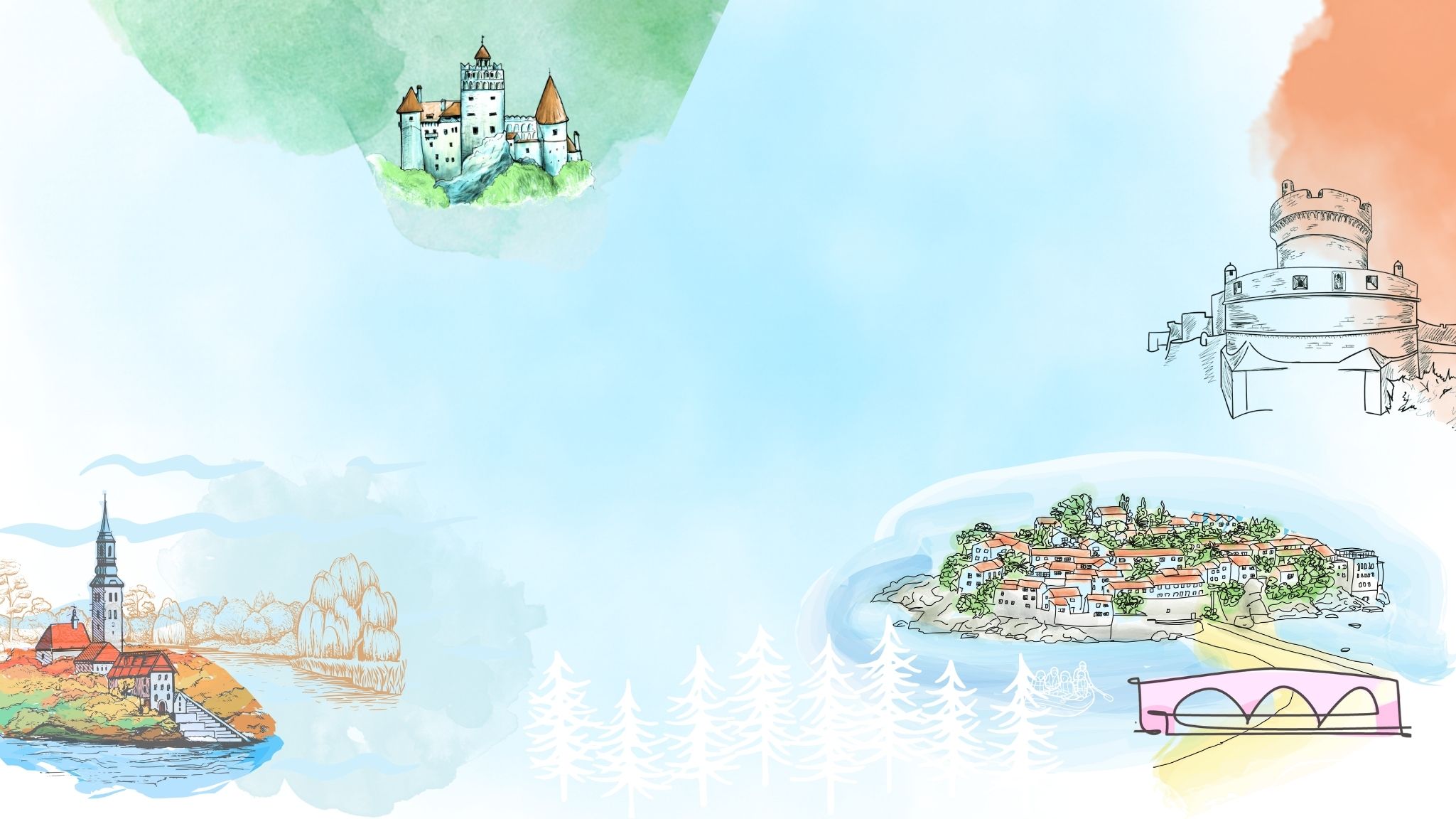
Uncover the Magic of the Balkans – Go on unforgettable Balkan trips
Unforgettable adventures await you on our Balkan tours! From Croatia’s beautiful landscapes to Bosnia and Herzegovina’s hidden gems and the natural wonders of North Macedonia, experience the rich culture of Serbia, the charm of Montenegro, and the history of Albania and Slovenia. Balkland offers you different Balkan tours where you will get to know the Balkans as it is. Rich in various tastes, natural landscapes, and the best hospitality!
“ The journey of a thousand miles begins with a single step „
Explore balkland tours and travel packages.
Explore our travel packages for a seamless and unforgettable experience. From detailed itineraries to helpful tips, we’ve got everything you need. Embark on a journey with Balkland, where each keyphrase guarantees extraordinary adventures in the heart of the Balkans.
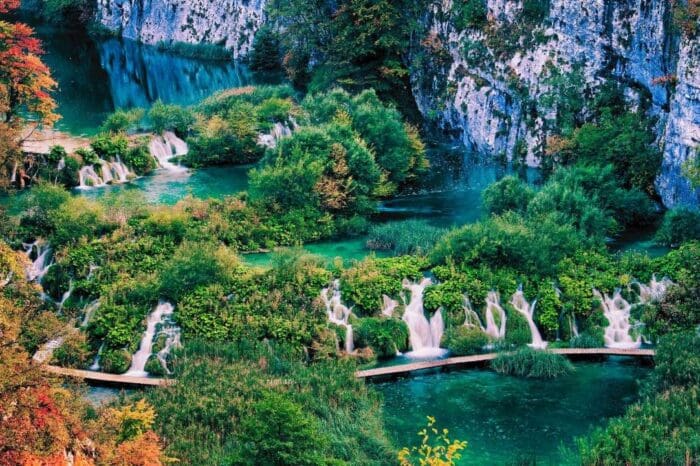
Balkan Tour: a 12-day cultural expedition
Discover the Ultimate Balkan Journey. Explore UNESCO gems in Ohrid, medieval wonders in Kotor bay, and the beauty of Plitvice Lakes, and more..

Must-See in Sarajevo: Escape to Prokoško Lake, a Nature Lover's Must-Visit Paradise in Bosnia's Vranica Mountains.
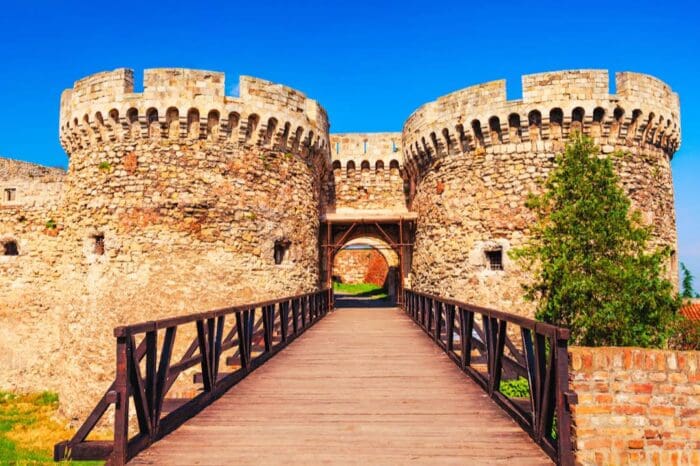
Explore Belgrade: Panoramic & Walking City Tour – Serbia Trips
Explore Belgrade's rich history and stunning architecture on our tour. See Kalemegdan, St. Sava Temple, and vibrant city squares.

Dubrovnik: Old Town Walking Tour
Delve into Dubrovnik's past with key stops like Pile Gate and Franciscan Monastery on our captivating 1.5-hour Old Town Walking Tour.
Our Qualities
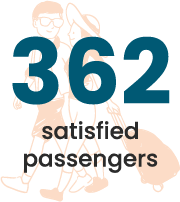
What does Balkland offer at Balkan trips?
Good organization.
A good road means a good organization. With our organization, you don’t have to worry about accommodation, food, transportation! We stand behind you as a dedicated companion on every Balkan trips!
We cover 10 Balkan countries
Balkland allows you to visit and feel the charms of 10 countries in the Balkans. Croatia, Serbia, Bosnia and Herzegovina, Albania, Montenegro, Slovenia, Romania, Kosovo, Bulgaria, and North Macedonia await you to visit their beautiful landscapes and taste their most delicious food!
Different types of travel throughout the Balkans
The Balkans is a landscape of possibilities! Embark on Balkan Tours with your friends, experience Family Adventures with your loved ones, or Balkan food on Culinary Tours.
Your Smart Travel Guide to Balkan Adventures
Experience the Best of the Balkans with our Blogs.
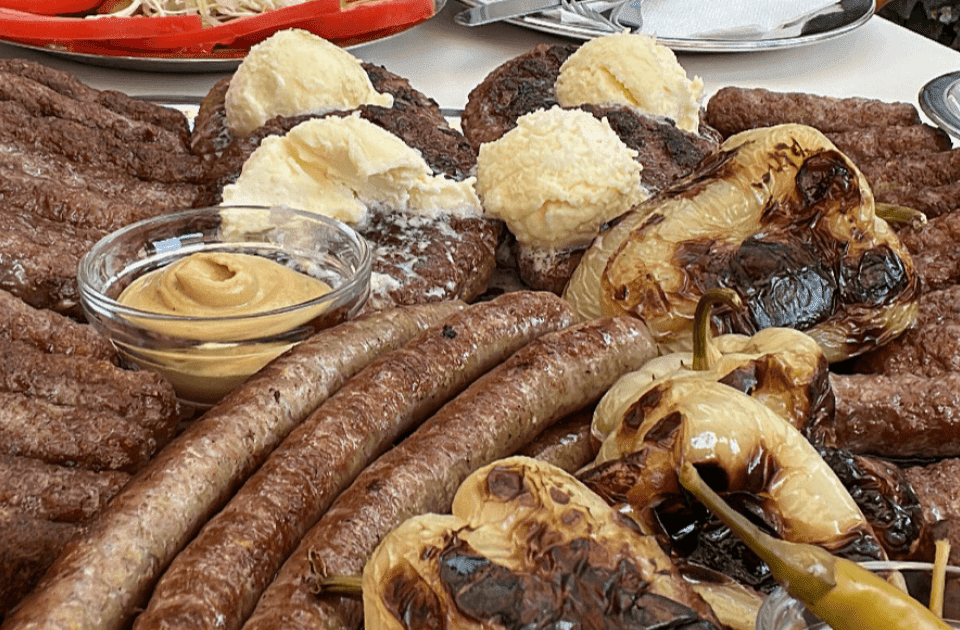
Taste Balkan Food With Our Balkan Tour
Discover the delightful Balkan food that will captivate you!

Balkan Tours: Visoko pyramids discovered 19 years ago
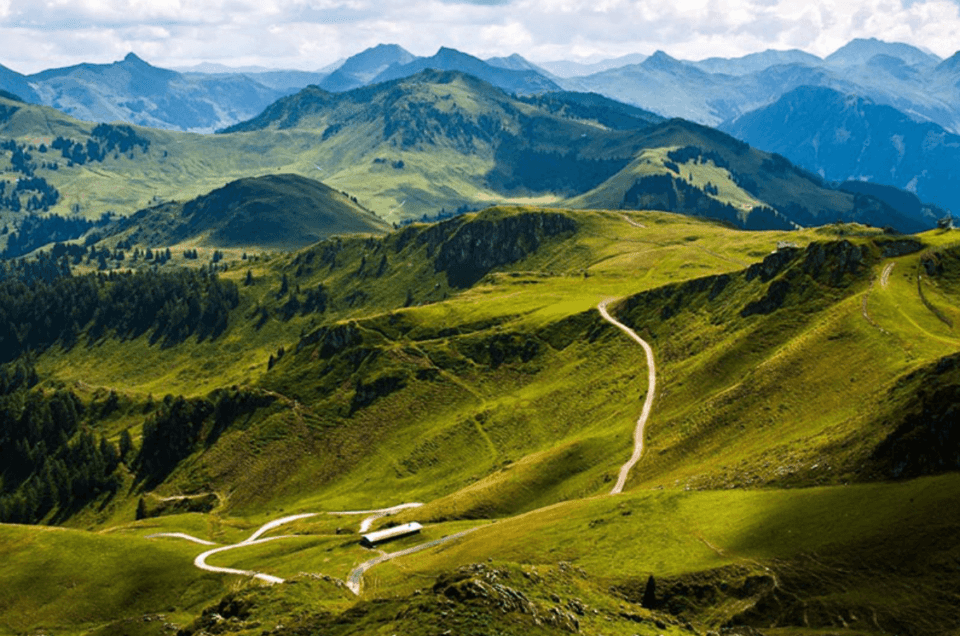
Travel To The Balkans: Breathe the Fresh Air of Zlatibor
Travel to the Balkans and explore the natural beauty of Zlatibor!
Tour Balkan Countries With Balkland
Have you ever wanted to visit the unreal nature of the Balkans and try Balkan food rich in various flavors? With Balkland you can do just that! Our Balkan trips are unforgettable, diverse, and full of new adventures. Discover all our Balkan tours and pilgrim tours and choose the best one for you!
Why go on Balkan trips with Balkland?
With Balkland you always travel safely. We have provided transportation, hotels, and adventures throughout the Balkans for you, which are above all safe. The safety and security of our passengers is our priority!
Our Balkan trips are adapted to families, newlyweds, and corporate groups; with us, you can find tours that completely suit you!
Balkland was founded by foreign travelers and lovers of the Balkans, so every trip to the Balkans with us is diverse. Tour Balkan countries with us And you will experience all the beauties of the Balkans, from irresistible food to natural beauties.
Balkland FAQ
Is it safe to travel to the Balkans?
The Balkans are a very safe place to visit today. More than 30 years ago, the war that took place in the Balkans ended, and today the Balkans is one of the safer travel destinations.
Is it cheap to travel in the Balkans?
Yes. Compared to many Western European countries, traveling in the Balkans is often more budget-friendly, offering affordable accommodation, food, and transportation options.
Why is Balkan food popular?
Balkan cuisine is popular due to its rich flavors, diverse influences, and use of fresh, local ingredients. The combination of Mediterranean, Ottoman, and Slavic culinary traditions contributes to the unique and delicious dishes.
What is the most popular Balkan food?
Ćevapi, a type of grilled minced meat, is widely popular across the Balkans. Other favorites include Burek, a pastry with meat or cheese, and Ajvar, a roasted red pepper and eggplant spread.
Is the Balkans safe for solo female travelers?
Yes, many parts of the Balkans are safe for solo female travelers. All the locals are friendly and ready to help you if you get lost or need help. Since you are still in a foreign country, we recommend that you do not go out late at night alone and keep your personal belongings safe.
- Terms and Conditions
- Privacy Policy

Backpacking the Balkans – the travel guide for your Balkan Tour
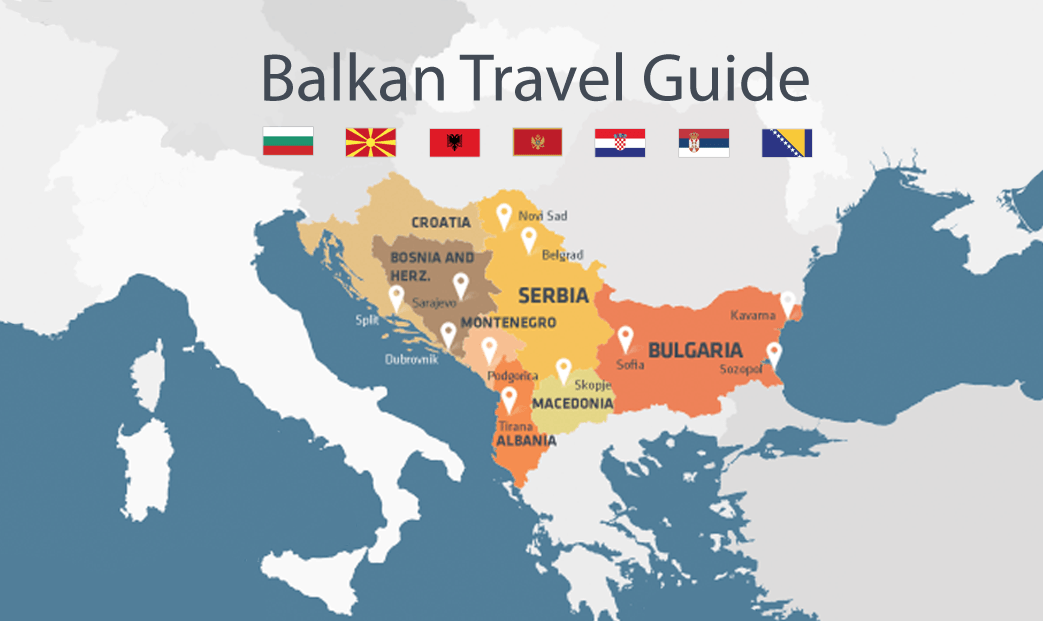
In this post I put together all information you need for Backpacking the Balkans based on my own experience of 6 months living and traveling this region in the South East of Europe.
I moved to Sofia in Bulgaria for 6 months and used it as my base to explore altogether 7 countries in the Balkans: Bulgaria, Macedonia, Albania, Montenegro, Croatia, Bosnia & Herzegovina and finally Serbia.
1) Why should you travel the Balkans?
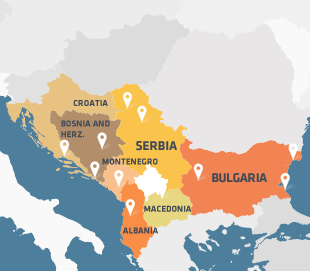
A lot has changed since those darker days and most of the countries are back on track, the reconstruction is in its final stages and the tourism is on the rise . Changes can also be seen in the countries which haven't been affected by the wars – Bulgaria became part of the EU, developed it's infrastructure and is seeing an economic growth, even though this growth decreased recently. Due to the fact that only a few regions in the Balkans are affected by mass tourism a Balkan Tour is very attractive as most of the beauty is still totally off the beaten European tourist paths : low prices, warm-hearted Locals, tasty food and loads of beautiful landscape is just waiting to be discovered by you. The best time to travel the Balkans is in most cases the spring and summer season – especially if you want to go for a swim at the coast. Nevertheless you can also spend your winter in one of the winter resorts like Bansko in Bulgaria. City Breaks are an option all year round: the capital cities are great spots in all countries mentioned (except Podgorica in Montenegro!).
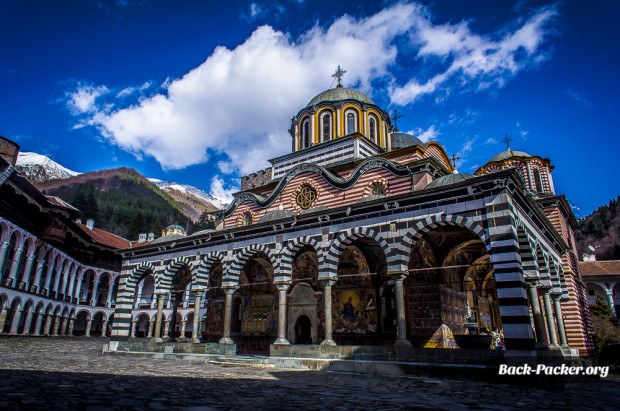
2) Language & Communication
Unfortunately the countries within the Balkans don't have a common language and it can sometimes be quite hard to get around with English. Moreover you should consider learning the Cyrillic alphabet for Serbia, Macedonia and Bulgaria. Like in many other European countries you are fine with English in Hotels/Hostels and with Tour operators – often also basic English is spoken by Locals , most likely in touristic hot spots. In general people in the Balkans are very welcoming , friendly and will help you getting around if you are running into problems. I often used gestures and hand signs to communicate and have been quite successful with it – in my case I could even use German to communicate. As the Locals are very hospitable they sometimes even invite you for drinks or dinner after you met them!
3) Budget & Prices
The Balkan region is very budget friendly compared to Western Europe, though there are huge differences between the countries and the popular tourist destinations (the places off the tourist paths are much cheaper).
To get an idea: one night in a dorm is around 8-10€ (Bulgaria/Macedonia/Bosnia/Serbia), 12-14€ (Montenegro), 16-20€ (Croatia); a proper meal in a restaurant will cost you 4-6€ (Bulgaria/Macedonia/Bosnia/Serbia), 8-10€ (Montenegro), 10-15€ (Croatia); a long-haul bus ticket is between 20€ – 30€. In hotels and restaurants at touristic hot spots the prices are usually higher. I withdrew money with my german DKB credit card which always worked out very well and without any costs. Given the fact that each country has its own currency you should also focus on using a credit card and only withdraw the amount of money you'll need for the day.
4) Local cuisine
Given the number of different cultures in such a small area you can expect to have a big selection of various food to try on your trip. One thing all countries have in common: they love meat and hearty food . Nevertheless you shouldn't miss the local food, also Vegetarians will find good options as the Balkans are also well known for their fresh salads. The most common dishes are: stews, salads, cevapcici, grilled meat (preferably pork) and Ottoman influenced cuisine such as börek, köfte and baklava. If it comes down to drinks the Rakia/Rakija (brandy) is a common drink but also the tasty wines (especially red!) are recommendable. Apart from this the local beers are good, too.
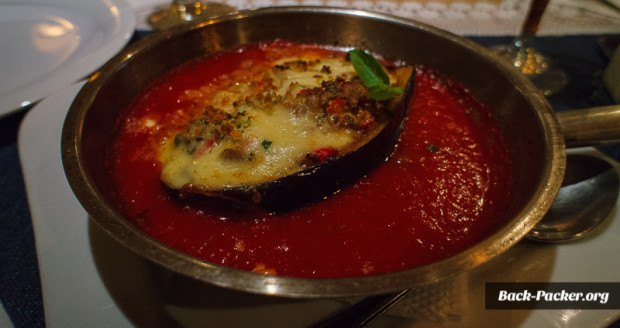
5) Safety & Visa
In general the Balkans aren't more dangerous than other European destination – be aware of pickpocketing and other petty crime.
During the 6 months down there I never had bad experiences – maybe also because I followed the general safety rules. Please follow the instructions given in the following article to travel more safely, too:
- 30 Tips and Ways to Stay Safe While Traveling
Regarding the entry requirements you usually don't need a Visa for the countries in the Balkans if you're planning to stay less than 90 days. Of course you'd need a valid passport and at least one free page left for stamps. Please always check the official Foreign travel advice for your country of residence in matters of safety and the entry requirements:
- Foreign Travel Advice (UK citizens)
- Country Information (U.S. citizens)
- Country Travel advice (Canadian residents)
6) Health & Insurance
In some areas of the Balkans the medical and dental facilities are very poor, there you shouldn't drink water from the tap (especially in countries like Albania). Make sure you have adequate travel health insurance and accessible funds to cover the cost of any medical treatment abroad, evacuation by air ambulance and repatriation. I highly recommend to get a good travel insurance as in almost every case your current health insurance won't work in most of the countries. The Balkans are a beautiful region with plenty to see and explore, but unexpected situations can arise. With SafetyWing , you'll have coverage for medical emergencies, trip interruptions, and even emergency medical transportation. Plus, their affordable and flexible plans make it easy to find the coverage that fits your needs and budget:
2 months before you leave you should consult your doctor to check your vaccines. The earlier you take care of this the better as some vaccinations need a few months to have the full protection. Find more information about recommended vaccines for the country you intend to visit:
- Country Information by CDC
7) Transportation & Luggage
The common mode of transportation for long distances is the bus. In cities taxis are another fairly cheap option. The travel times within the countries are sometimes quite long as the infrastructure isn't the best , you also need to plan some waiting time for the border crossings (especially during holiday season and on the weekends).
a) Public Transport: Bus
Bus tickets can be purchased at the terminals or in the offices of the bus companies – the following website helps you to research most of the connections within the Balkans (consider that only major connections are listed!):
- Balkanviator
b) Car Rental
The most flexible option would be to rent a car. For this you need to make sure that you choose a package where you are allowed to take your rental car across the border. Furthermore consider to do a round-trip as it is cheaper to drop-off the car at the same spot where you picked it up in the first place.
Makes sure to check the meta-search of RentalCars (best to choose the airport where you fly into as the pick-up location) for prices and availability of the different local providers:
c) Air Travel
Sometimes it is worth looking into flights if you want to cover longer distances and save some time. Some routes are quite cheap as there are already quite a few low-cost-carriers offering good prices on eastern Europe.
What to pack for your Balkan trip
Regarding your luggage: try to pack light, a 44-70l backpack is totally enough for your trip. I put together a universal Packing List especially for longer trips (even though its for South America it can be easily used for the Balkans as well):
- My Universal Packing List (not only for South America)
If you need recommendations for outdoor & camping gear you're able to find it here:
- Packing List for Trekking & Camping (not only for Patagonia)
8) Bulgaria: World Heritage Sites, Mountains, Beaches
I spent most of my time in Bulgaria which changed the image and the stereotypes I had in my mind before arriving. There are many great places apart from “Sunny Beach” and “Golden Sands”. Do you still need reasons to convince yourself? Here you have 12:
- 12 reasons your next trip should be to Bulgaria
Particularly in-country you will find many great places to visit: the Rila monastery, the beautiful old town of Plovdiv, the fortress and old town of Veliko Tarnovo, the seven Rila lakes, the ski resort of Bansko and last but not least the multifaceted capital Sofia :
- My ultimate Sofia Travel Guide
- 24 Photos that will Convince You to Visit Sofia
- Graffiti in Sofia (Photo Essay)
- Video: erlebe Bulgarien (German with subtitles)
The Bulgarian Black Sea coast also has more to offer than the mentioned beaches, cheap alcohol and party – Sozopol & Nessebar are amongst the oldest cities of the country and their location as well as their old towns are stunning. Varna is one of the biggest cities and very urban – if you drive out of the city you can find some true gems such as Raponggi Beach. Furthermore the coast north of Varna is recommended as you can find more places off the path: Cape Kaliakra, the Thracian Cliffs (inside the Thracian Cliffs Golf & Beach Resort) and the botanical gardens in Balchik:
- Video: Things to do at the Black Sea Coast of Bulgaria
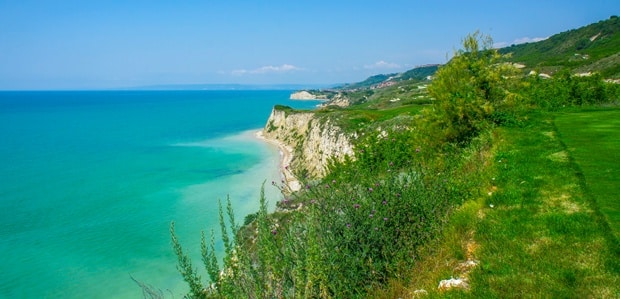
9) Macedonia: Small & Proud
Skopje is located just a few hours by bus east from Bulgaria. There is a daily bus connection to Sofia, tickets are very budget friendly. The territory of Skopje has been inhabited since at least 4000 BC and offers sights from different stages of this long history:
Things to do in Skopje, Macedonia (Travel Guide)
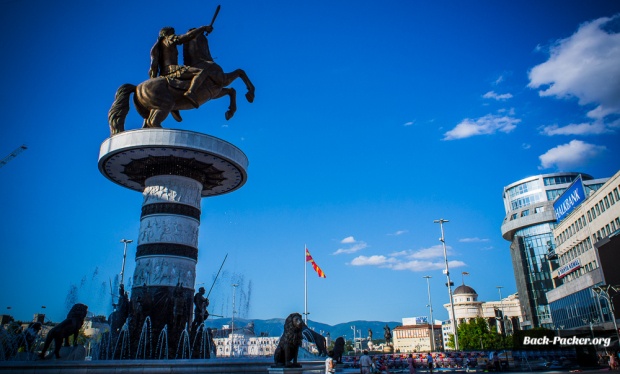
10) Albania: Undiscovered, Wild & Beautiful
Are you searching for a place which is really off the beaten path? Albania is your pick then! The food is great, the prices are super low and the capital is known for it's lively nightlife. Tirana is located in the center of the country and has a direct bus connection to Skopje (the journey takes 8h). Beside the sights in Tirana you should consider a visit to the Mount Dajti where you can enjoy the best views to the city:
Things to do in Tirana, Albania in 48h (Travel Guide)
In Albania you are also able to discover great beaches – they are wild and less crowded as there is almost no touristic infrastructure. The following articles are from other good Blogs and offer more information on Albania and some great photographs to get an impression of the country:
- Albania Travel Guide by Andrea (external)
- “Long Story Short – Albania is The Biggest Secret in European Tourism” by Nate (external)
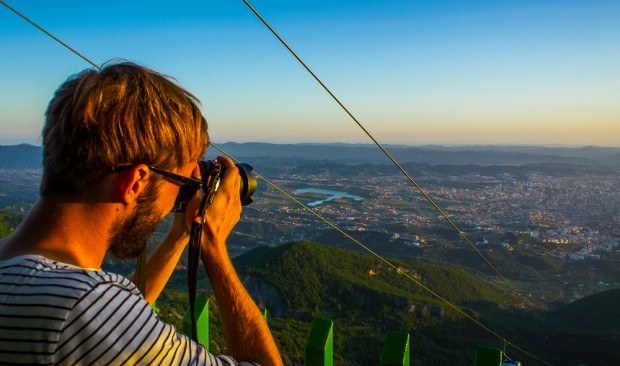
11) Montenegro: Fjords & Picturesque Old Towns
Alright let's move west and to the Mediterranean: the coast of Montenegro is simply mind blowing! The coastal villages and towns are well connected and easy to get to via bus or car, the official currency is the Euro. If you stay away from the popular spots and stay in one of the smaller villages nearby you should be able to get some good deals:
- The 5 Most Impressive Places to Visit in Montenegro
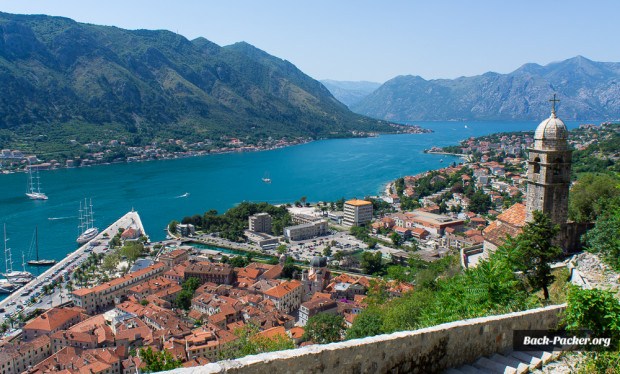
12) Croatia: Medieval Shooting Locations
Croatia is without a doubt the most expensive country of the Balkans but also one of the most beautiful. This is why I only went for a short visit to Dubrovnik which is located in the very south. There is a reason why so many tourists from all over the world are visiting this place:
- 10 Cool Things to do in Dubrovnik, Croatia
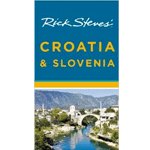
As host and writer of the popular public television series Rick Steves’ Europe, and best-selling author of 40 European travel books, he encourages Americans to travel as “temporary locals”. Rick’s candid, humorous advice will guide you to good-value hotels and restaurants. He’ll help you plan where to go and what to see, depending on the length of your trip.
buy it on Amazon >>
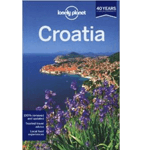
Lonely Planet Croatia is your passport to all the most relevant and up-to-date advice on what to see, what to skip, and what hidden discoveries await you. Colour maps and images throughout. Highlights and itineraries show you the simplest way to tailor your trip to your own personal needs and interests
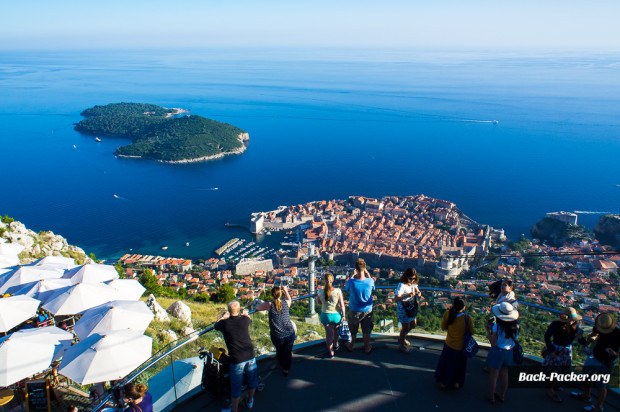
13) Bosnia & Herzegovina: Moving History
In comparison to its neighbors Croatia and Montenegro the country of Bosnia & Herzegovina is not really high up on the list of many tourists. Time for a change! Sure: in the 90s Sarajevo hasn't been a good option due to the Siege of Sarajevo. It took a long time for the city to recover from those dark years. Recently more and more tourists rediscover the city and are fascinated from the historic old town, the rich history and the hearty food.
History up close: Things to do in Sarajevo, Bosnia and Herzegovina
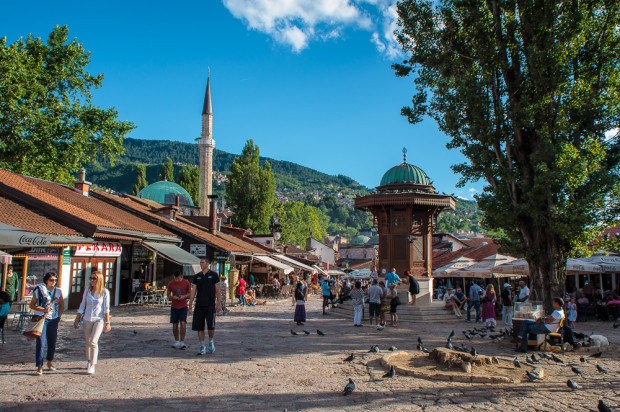
14) Serbia: Party at the Danube
Also Serbia has an eventful history and its capital Belgrade played a major role in the Yugoslav wars. Present-Day Belgrad is characterized by dynamic and change resulting in an interesting, vibrant mixture:
What to do in Belgrade, Serbia in one weekend
Novi Sad is the second largest city and also THE student city which leads to a lively nightlife. Once a year this is where the popular EXIT Festival takes place at the Petrovaradin fortress, also one of the biggest summer music festivals in Europe!
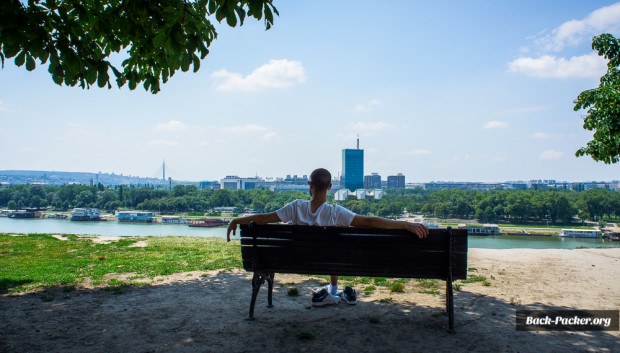
15) Guided Tours & Sailing
If you don't know where to start you can easily combine your independent trip with a guided tour. This way you don't need to bother about the organization, you get to know more about the country and you can travel with like-minded people.
After working with G Adventures in South America I can highly recommend their tours as their philosophy and focus on sustainable travel are in line with my personal values. With many years of expertise you can expect well organized, fun trips in small groups:
- Croatia & the Balkans (15 days) – with this tour you combine cultural experiences with outdoor adventures. Starting in Budapest it'll take you to Hungary, Serbia, Bosnia & Herzegovina and finally Croatia. Accommodation, breakfast, guides, transfers, as well as equipment (kayak), are included.
- Eastern Europe, Croatia & the Balkans (28 days) – the ultimate package mixing cultural experiences & the highlights in Eastern Europe with the landscapes and historic towns in the Balkans. Accommodation, breakfast, guides, buses, trains, admissions, boats as well as equipment (kayaking) are included.
- Montenegro Sailing (8 days) – the absolute dream trip along the Adriatic coast! With this sailing trip, you combine cultural highlights with the area's best beaches. Accommodation, guides, sailing yacht incl. skipper & crew, as well as snorkeling equipment, are included.
- Discover the Balkans (12 days) – if you prefer more comfort this National Geographic Journey combines rich history with beautiful coastal landscapes taking you from Croatia to Bosnia & Herzegovina and Montenegro. Accommodation, meals, guides, exclusive NatGeo tours, private minivan, boat and admissions are included.
16) Video Documentary “The Balkan Road Trip”
- Episode 1: Sozopol, Nessebar & Varna (Bulgaria)
- Episode 2: Skopje (Macedonia)
- Episode 3: Tirana (Albania)
- Episode 4: Budva & Kotor (Montenegro)
- Episode 5: Dubrovnik (Croatia)
More about Backpacking the Balkans?
I wrote this guide for you based on my 6 months traveling the Balkans – if you have any questions or additional tips feel free to comment below. If you found this guide to be useful it would be awesome if you could share it or if you would link to it from your website! Disclaimer: This post contains Affiliate Links for services and products I’m using on my travels – therefore I can highly recommend using them. By using this links you won’t pay any additional fees!
Helpful? Pin Me!
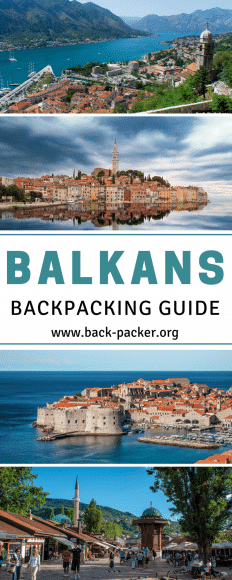
About The Author
Steve Hänisch
Verwandte beiträge.
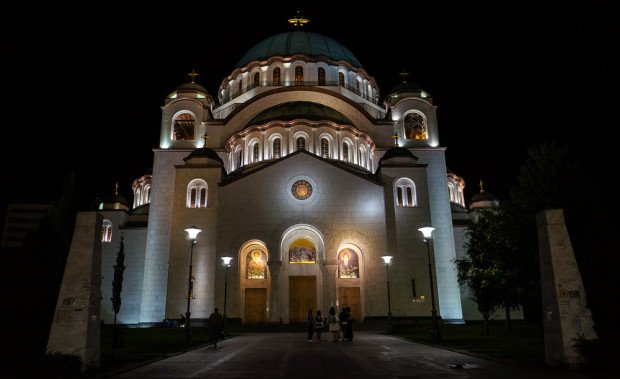
Answering the question “what to do in Belgrade?” isn’t that hard as the capital of Serbia has a long history, dating back to the 4th…

I highlight the most important things to do in Sarajevo with this practical city guide featuring sights as well as restaurants and accommodation – this…

This handy travel guide highlights the most important things to do in Tirana and features tips for restaurants and accommodation. I’ve been to the capital…
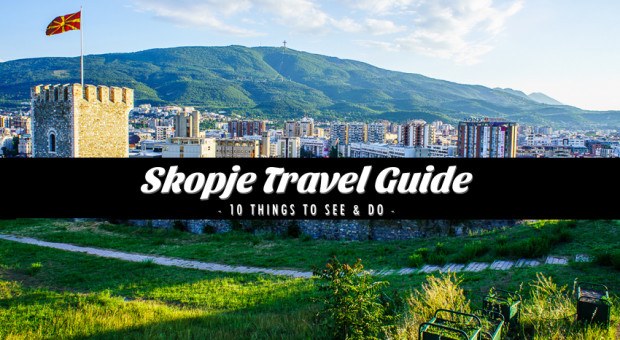
(Updated: 30.05.2015) With this travel guide I show you the most important things to do in Skopje including sights, tours and restaurants. Skopje is a…
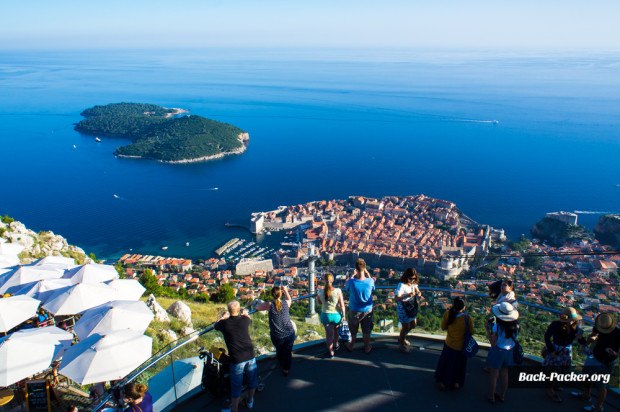
10 Cool Things to do in Dubrovnik, Croatia – Travel Guide
In this travel guide I list the most recommendable things to do in Dubrovnik. Moreover I point out some cool restaurants and places to stay…
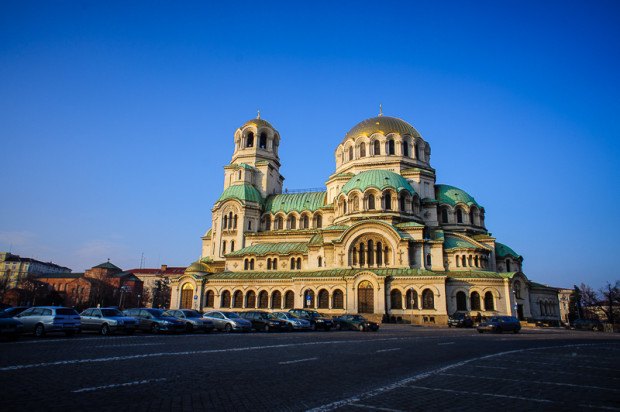
Cool Tips & Things to do in Sofia, Bulgaria (travel guide)
The capital of Bulgaria rocks! Beside low prices there are a lot of cool things to do in Sofia and the tours you’re able to…

- Living In Croatia
- Croatian Recipes
- Balkan Recipes

Home > Balkans Travel Guide - Balkans & Beyond
Balkans Travel Guide – Balkans & Beyond

27 Dalmatian Islands In Croatia To Vist This Year: Dalmatian Coast Guide

5 Famous Destinations In Croatia & Alternatives To Explore Instead
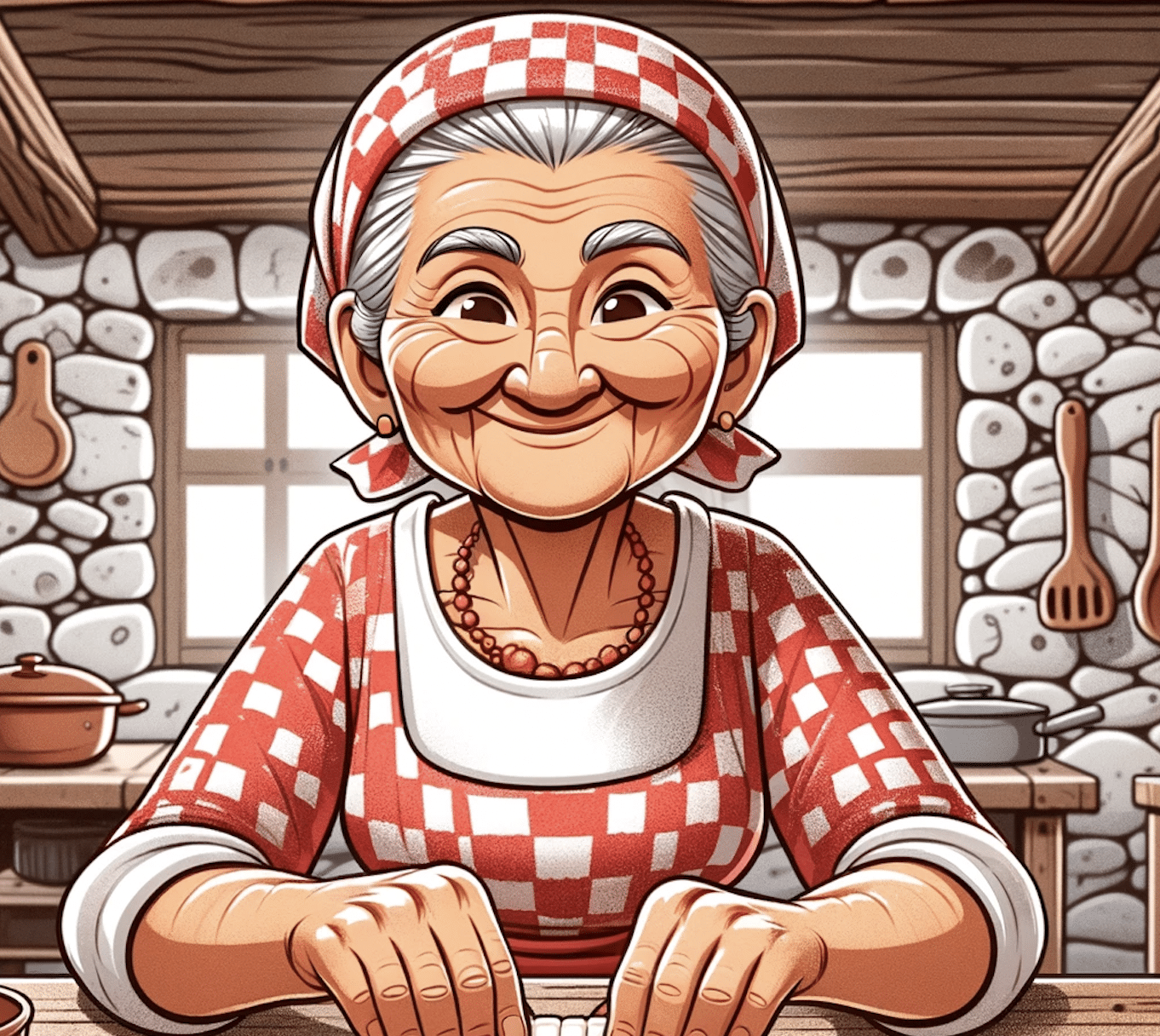
9 Weird Croatian Food To Try In Croatia (In My Opinion Anyway)

11 Weird Turkish Food I Could Not Try! Could You Eat This?
We travel all over the Balkans , seeking out local food, wine, the best things to do across the Balkans, & the best accommodation for you.
Move This Adventure To Your Inbox & Get An Instant Freebie
Subscribe To Unlock Your FREE Customizable Travel Packing List & All Our Best Tips!
Unlock Your FREE Customizable Travel Packing List!
Subscribe Now For Instant Access To Stress-Free Packing

IMAGES
VIDEO
COMMENTS
Days 12-13: Prizren, Kosovo. After spending some time exploring beautiful Albania, it's time to venture even more off the established tourist trail and head to Kosovo. Prizren is the second-largest city in Kosovo and also one of the most beautiful, which makes it a perfect addition to this Balkans travel itinerary.
Balkan Travel Guide. Old Bridge in Mostar. Bosnia-Herzegovina is the most culturally and religiously diverse country in the Balkans. This is as close as you can get to the Middle East and Muslim culture without leaving Europe. This is a true crossroads country home to several ethnic minorities, such as the Bosniaks, Croats, and Serbs.
5. Sarajevo, Bosnia and Herzegovina. Once dubbed "the Jerusalem of the Balkans," the capital city of Bosnia and Herzegovina is a fascinating cultural and historical place to visit. Beginning in the Ottoman Old Town, take in the Sebilj, an iconic wooden fountain, and Baščaršija, the surrounding bazaar.
Some example routes with times and prices: Ljubljana - Lake Bled: from 6am till 9pm at least one bus per hour, 1h20min, 6,30€ one way / 11,30€ return. Ljubjana - Zagreb: 12 connections per day, 2h20minutes, 9€ one way. Zagreb - Plitvicke Lake: 12 connections per day, 2h20 minutes, 10-13€ one way.
BALKANS ITINERARY (10 DAYS) Balkans travel is something that every traveler should experience, but not all travelers have the full month necessary to backpack and slow travel the Balkans. This Balkans itinerary for 10 days packs the best sites, tastes, and experiences of the region into a smooth, 10-day jaunt.. With this 10 day Balkans itinerary, every single day will be mind-blowing and ...
Why you'll love The Balkans. Geographically, 'the Balkans' is the 12 countries that share the Balkan Peninsula, including the six ex-Yugoslavia republics (Slovenia, Croatia, Bosnia and Herzegovina, Serbia, Montenegro and North Macedonia), plus Kosovo, Romania, Bulgaria, Turkey, Greece and Albania. Much of their history is shared - yet ...
Omis. Suggested by Where in the World is Nina. Often overlooked by its famous sister, Split, just 30 minutes away, Omis is a sweet getaway from the bustle while offering a lot. Omis is a little hidden adventurers dream and one of the best places to visit in the Balkans if you want to get off the beaten path.
Skip Ahead To My Advice Here! My Experience On My Balkan Road Trip. 5-Day Mini Balkans Itinerary. Day 1: Zagreb, Croatia To Belgrade, Serbia. Day 2: Belgrade, Serbia To Sarajevo, Bosnia & Herzegovina. Day 3: Sarajevo (Via Mostar) To Dubrovnik, Croatia. Day 4: Dubrovnik, Croatia To Sveti Stefan, Montenegro.
The Balkans Are Low Cost. If you compare backpacking in Eastern Europe with backpacking in other parts of the continent, e.g., France, Germany, Spain, etc., you will find a significant price difference. A huge difference! Even the very best Balkan hostels will be affordable to all visitors.
We hope this Balkan travel guide helps you in your travel planning, and if the Balkans aren't on your list yet, do yourself a favor and put them there immediately! More on Traveling in the Balkans. A story from traveling in the Balkans - Bulgaria, Macedonia, Albania, Greece;
The Balkan Peninsula in southeastern Europe is located between the Adriatic Sea and the Black Sea. The region has a mixed scenery with many tall mountain ranges, as well as deep forests, plains and rivers. The Balkans have many historical ruins, including those of some of the oldest cities in Europe. It is also home to some of the few Muslim ...
In 2024, a new 2000km (1242-mile) route linking eight Balkan countries is a recipe for an epic cycling adventure. History. Here's what you can expect on a Lonely Planet Experiences tour of the Balkans. Jan 20, 2020 • 5 min read. Festivals & Events. Highlights of western Serbia: Europe's little-visited winter wonderland.
How to Travel: The best way to get into the Balkans is by flying. European budget airlines, in particular Wizz Air, connects to many destinations. You shouldn't have any difficulties finding an inexpensive flight to Sofia (Bulgaria), Skopje (Macedonia) and Tuzla (Bosnia). The best way to travel within the Balkans is by either the bus or train.
This Balkans travel guide focuses not only on the Balkan region but also, for the main part, on holidays that take you to more than one country here. The first question on most people's lips is: where exactly is the Balkans? Well, it comprises one of Europe's three main peninsulas (the other two being the Italian and Iberian peninsulas).
Europe's forgotten wonderland. Contrary to popular opinion, the Balkans is so much more than just the countries of the former Yugoslavia. Surrounded by water, the Balkan peninsula is made up of Croatia, Montenegro, Slovenia, Serbia, Albania, North Macedonia, Kosovo, Bosnia and Herzegovina, Bulgaria and Romania. There's a lot to explore.
The Balkans offer variety - nature, culture, history, food, and possibly the best coffee. Your one week Balkans trip should include Sarajevo, Mostar, Dubrovnik, Herceg Novi, and Kotor. You'll cover five destinations in three countries. Start your tour in Sarajevo, the capital of Bosnia & Herzegovina and head south to Dubrovnik, Croatia ...
Ultimate 10-Day Balkan Travel Guide. Where is the Balkans? The Balkans Region: Geography and Countries. The Balkans, also known as the Balkan Peninsula, is located in Southeastern Europe, encompassing a diverse range of countries. It includes Albania, Bosnia and Herzegovina, Bulgaria, Croatia, Greece, Kosovo, Montenegro, North Macedonia ...
Wanna travel the Balkans? This website is your ultimate guide to the Balkans. It's everything you ever need to travel one of the most underrated regions in the world! Start here Balkan Countries Balkan tips Balkan food About me Hey, I'm Anita (from New Zealand) and I'm a huge fan of the Balkans. So much […]
Different types of travel throughout the Balkans. The Balkans is a landscape of possibilities! Embark on Balkan Tours with your friends, experience Family Adventures with your loved ones, or Balkan food on Culinary Tours. Your Smart Travel Guide to Balkan Adventures. Experience the Best of the Balkans with our Blogs. May 3, 2024. Balkan Tours ...
The Balkans are a fascinating, very diverse region in Southeast Europe which had to deal with a lot of conflicts in recent history - the Breakup of Yugoslavia and the resulting Yugoslav wars made it almost impossible to travel the region from 1991 to 2001.. A lot has changed since those darker days and most of the countries are back on track, the reconstruction is in its final stages and the ...
The Balkans, condensed yet diverse, provide a mesmerizing blend of landscapes. Within our guides, we combine Edo's local insights and Fe's foreign perspective, offering a unique angle of recommendations for your Balkan adventure. What we love the most about exploring the Balkans are the authentic experiences. Whether you're an adventurer ...
Balkans Travel Guide - Balkans & Beyond. We travel all over the Balkans, seeking out local food, wine, the best things to do across the Balkans, & the best accommodation for you. Move This Adventure To Your Inbox & Get An Instant Freebie.